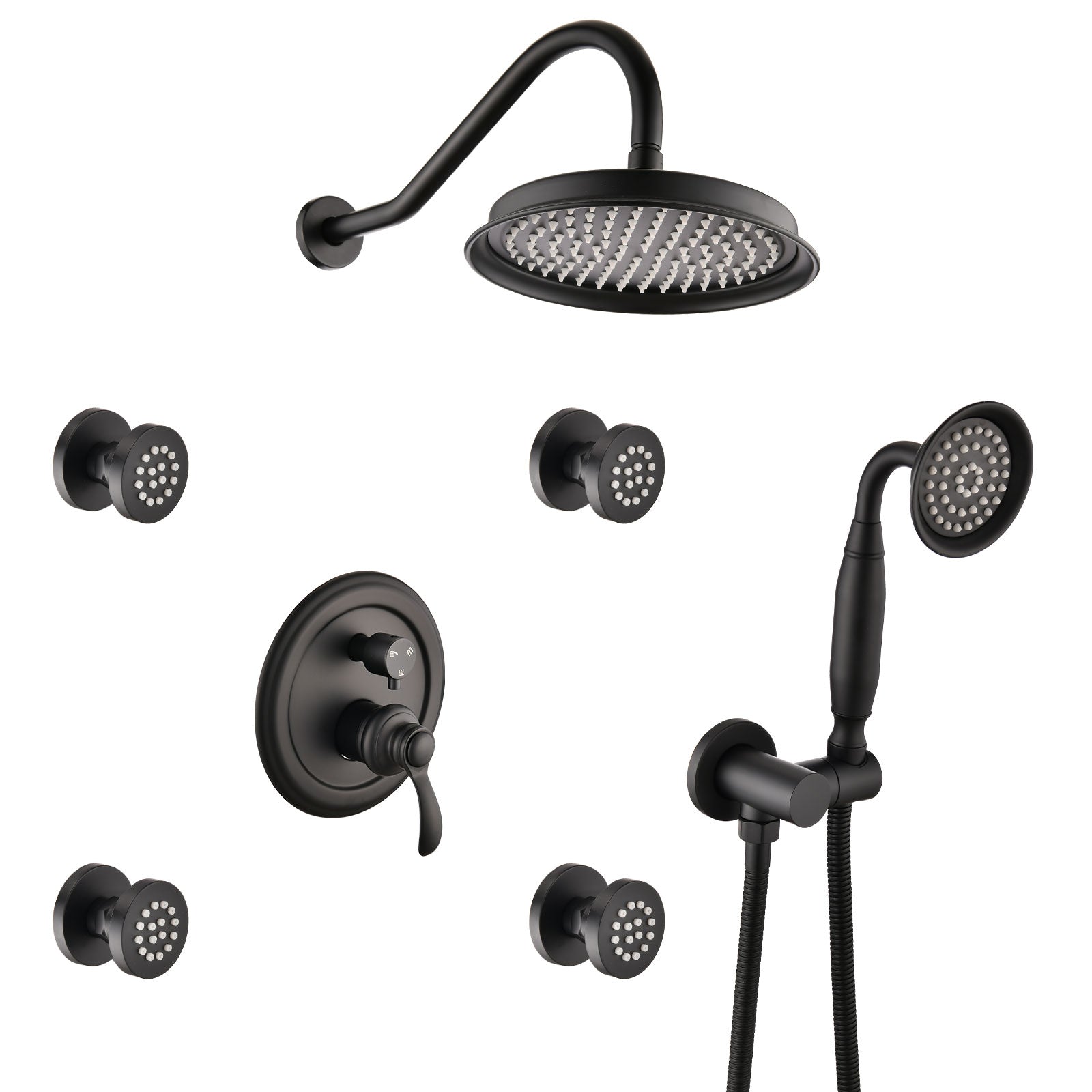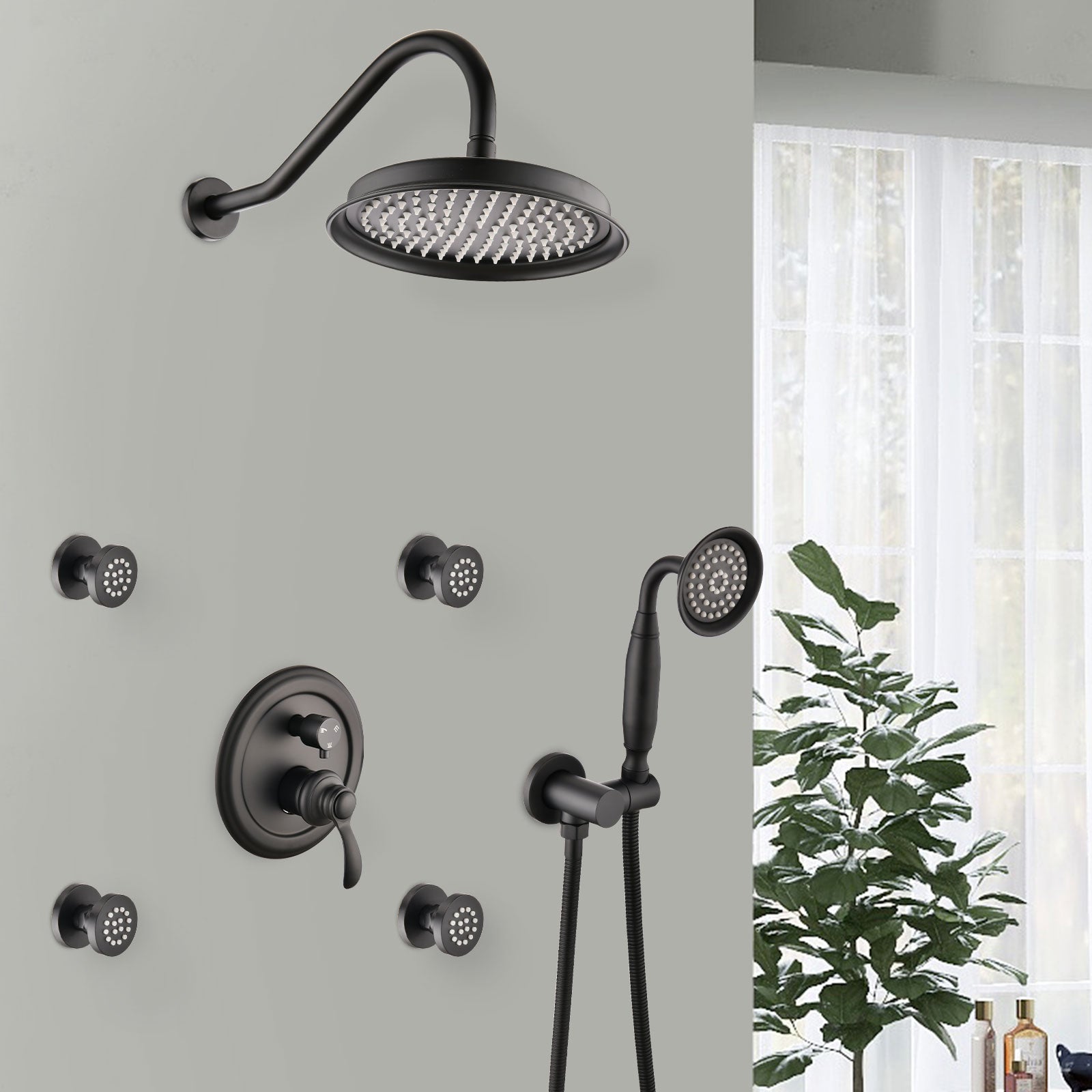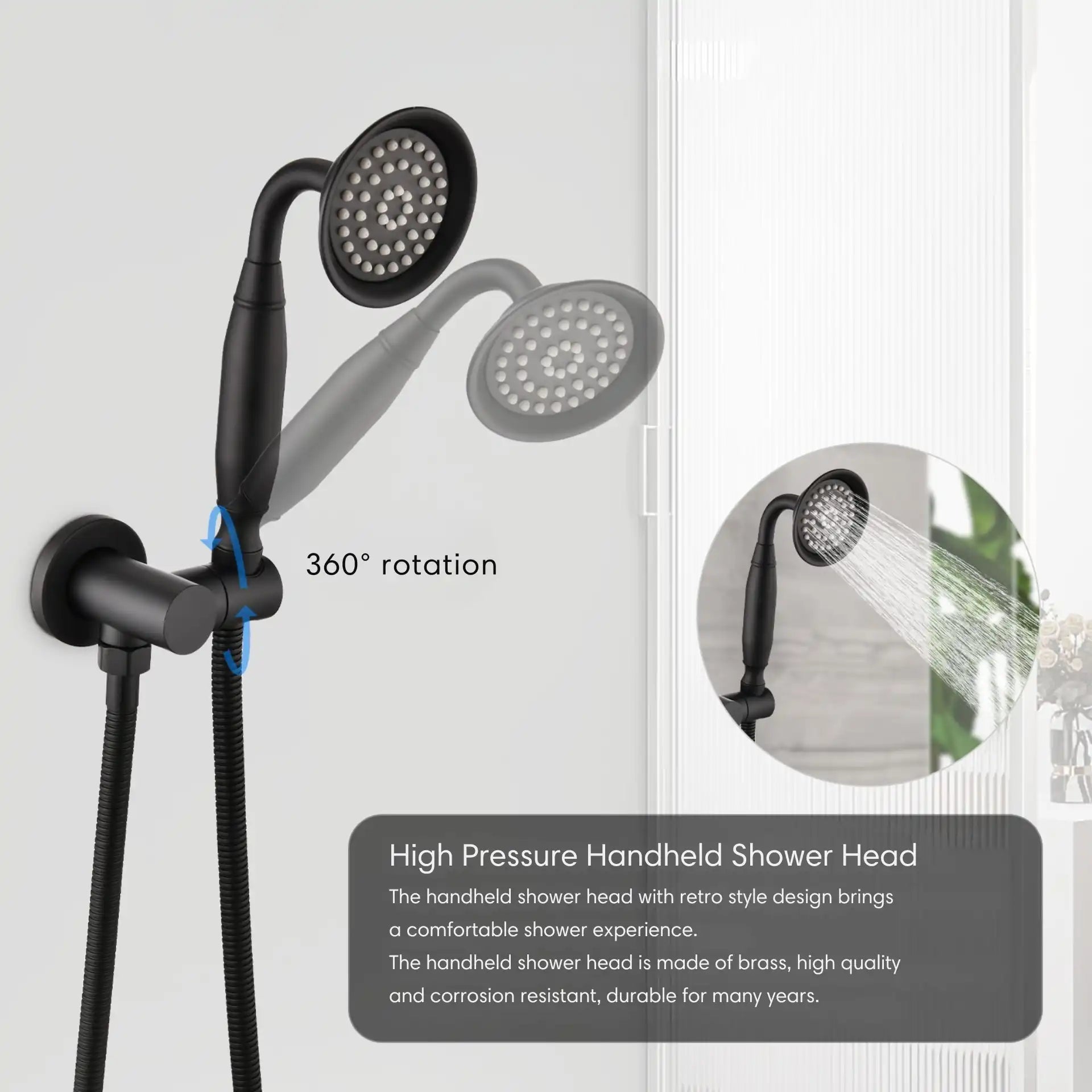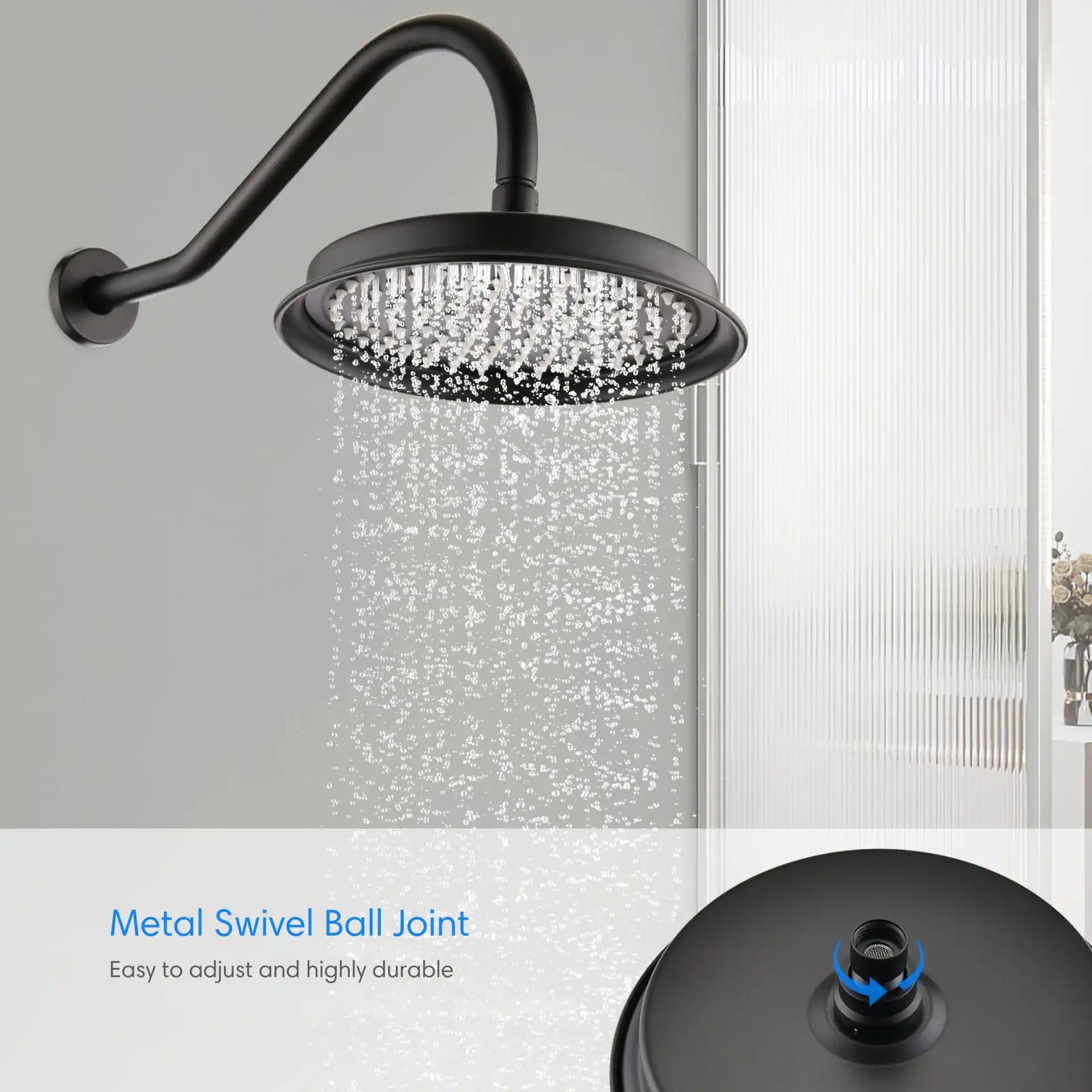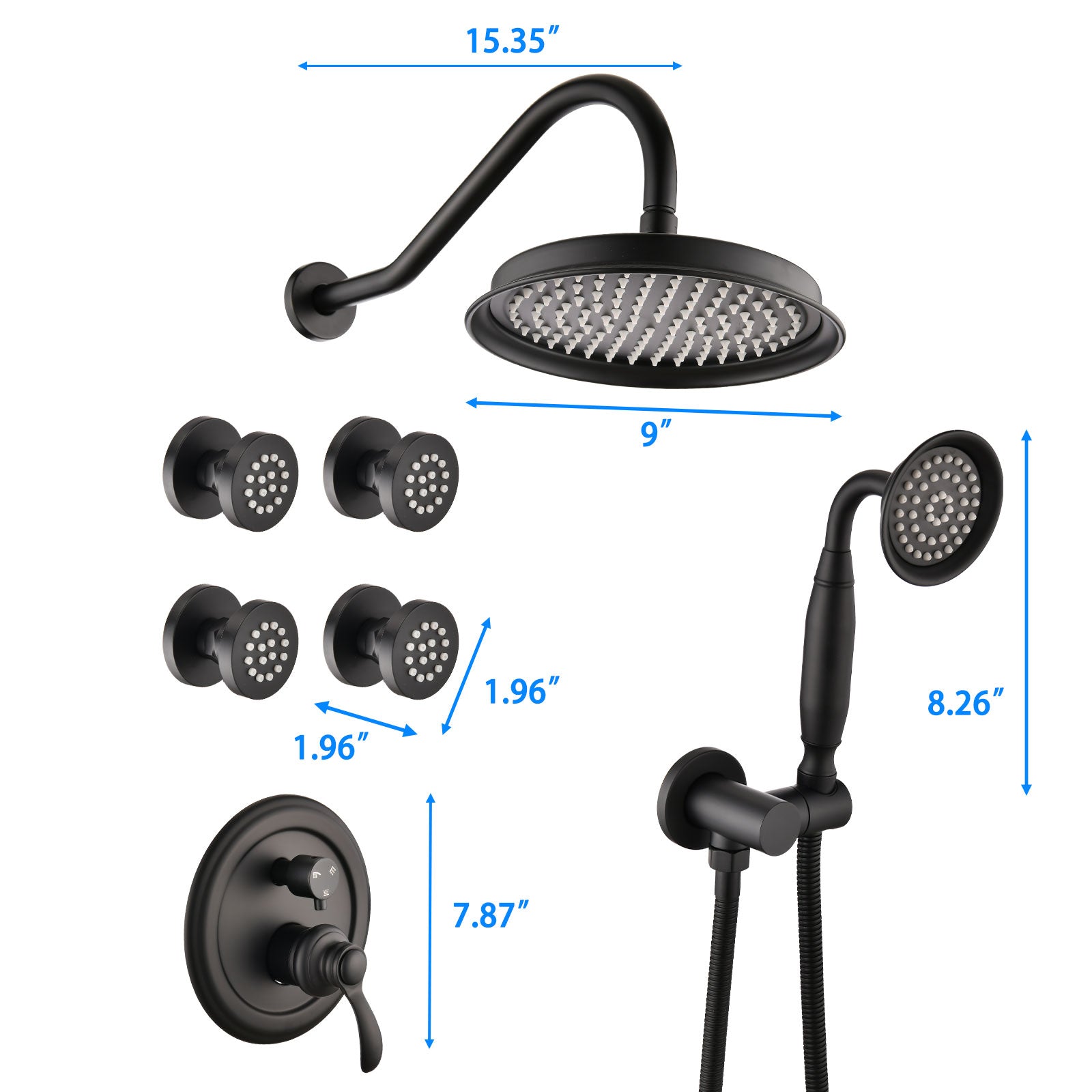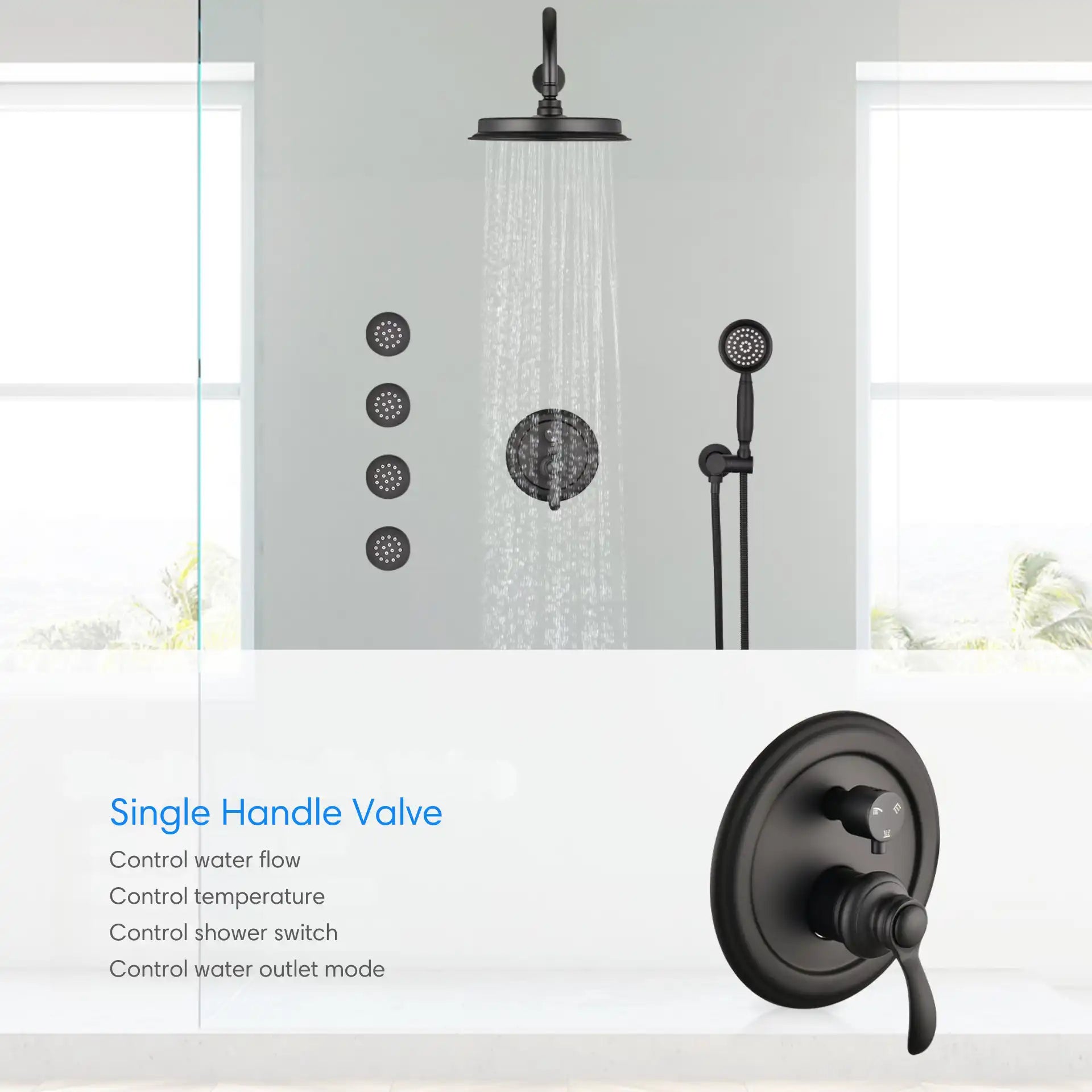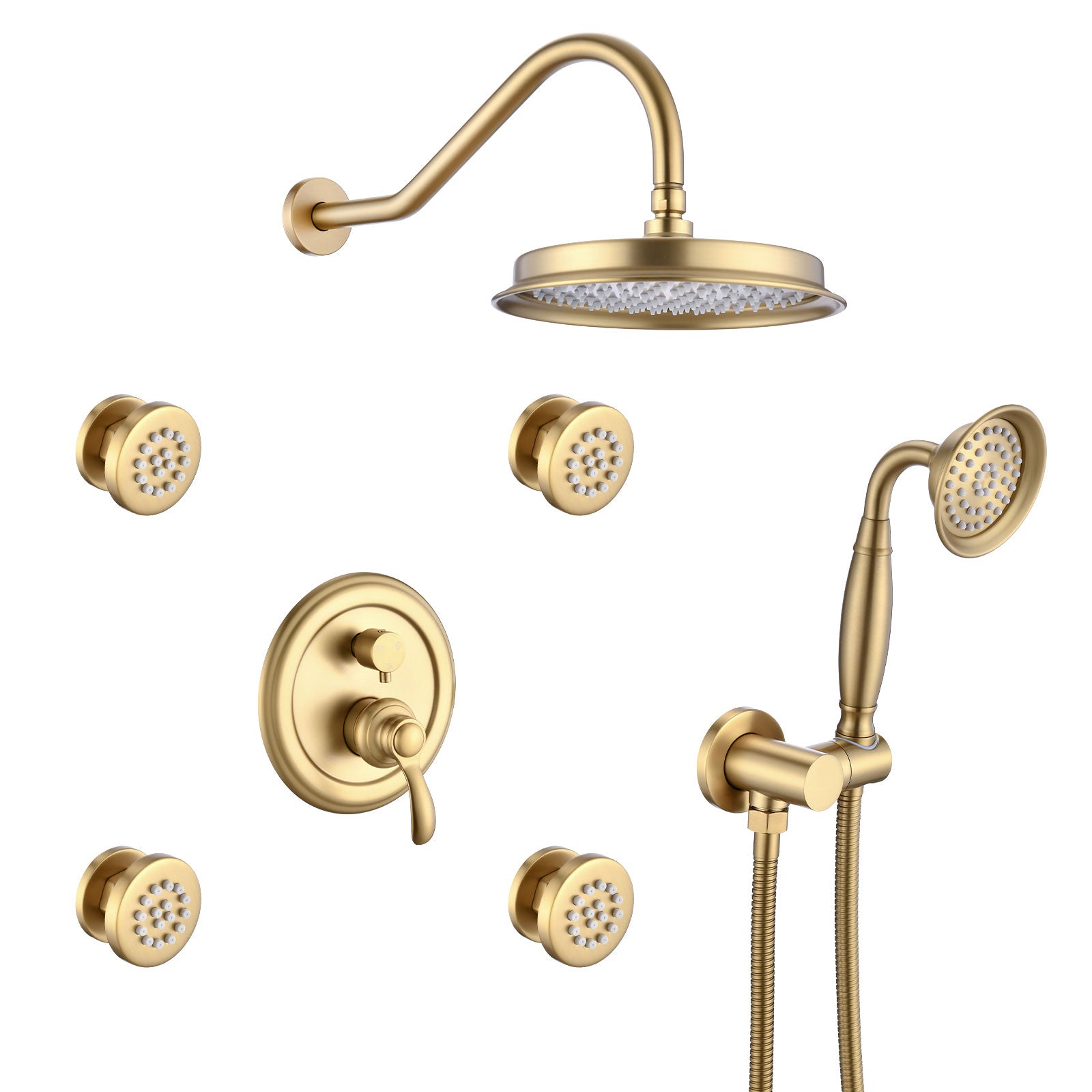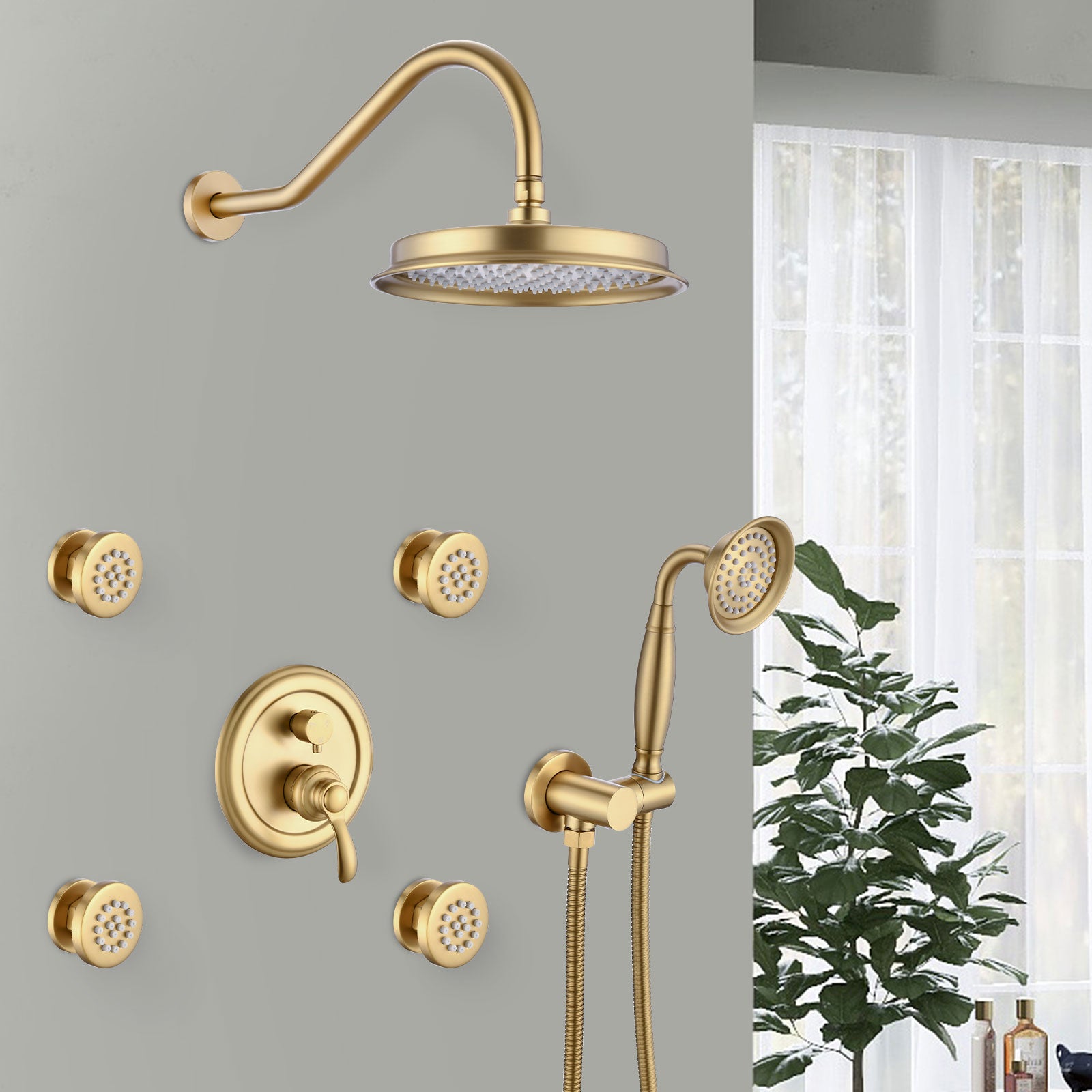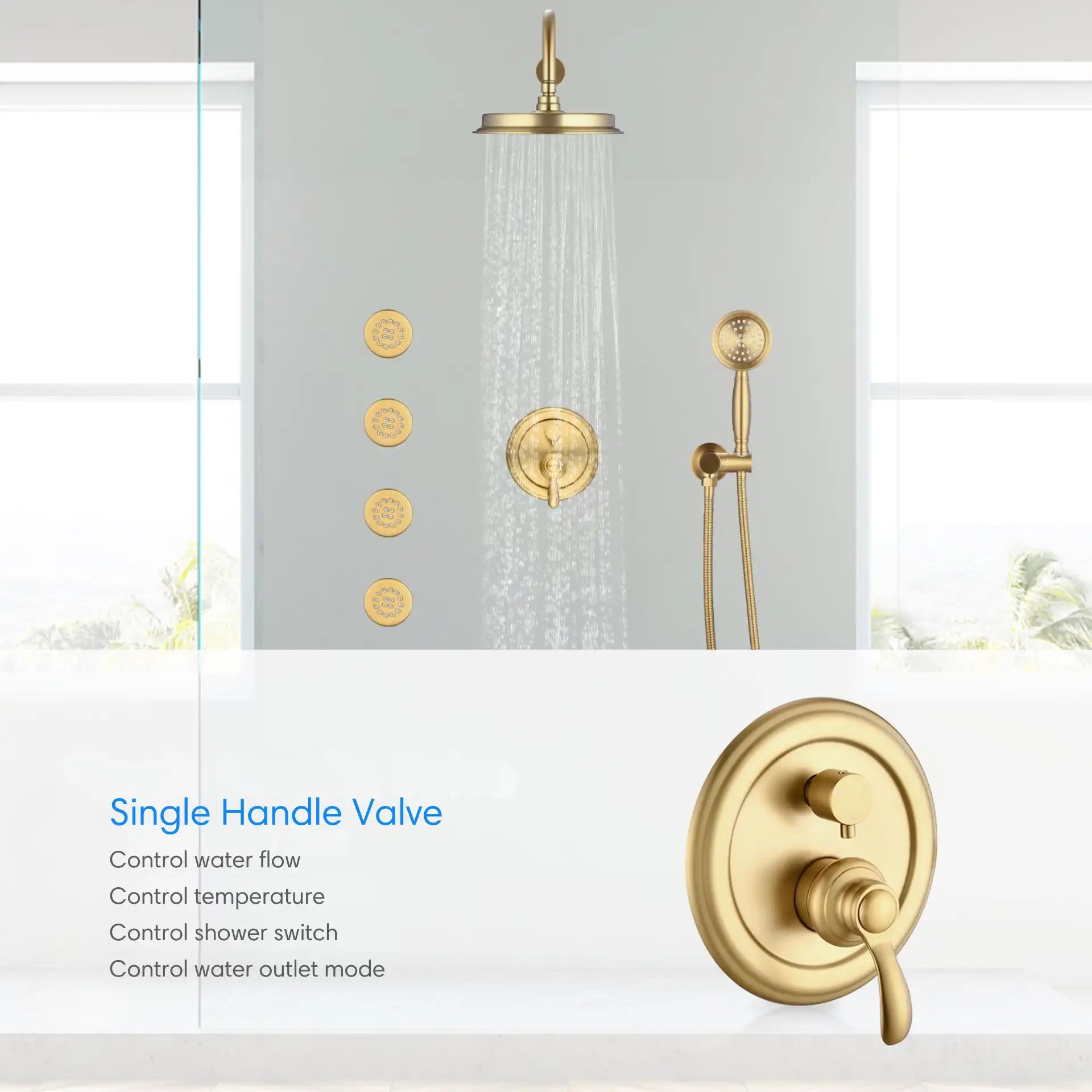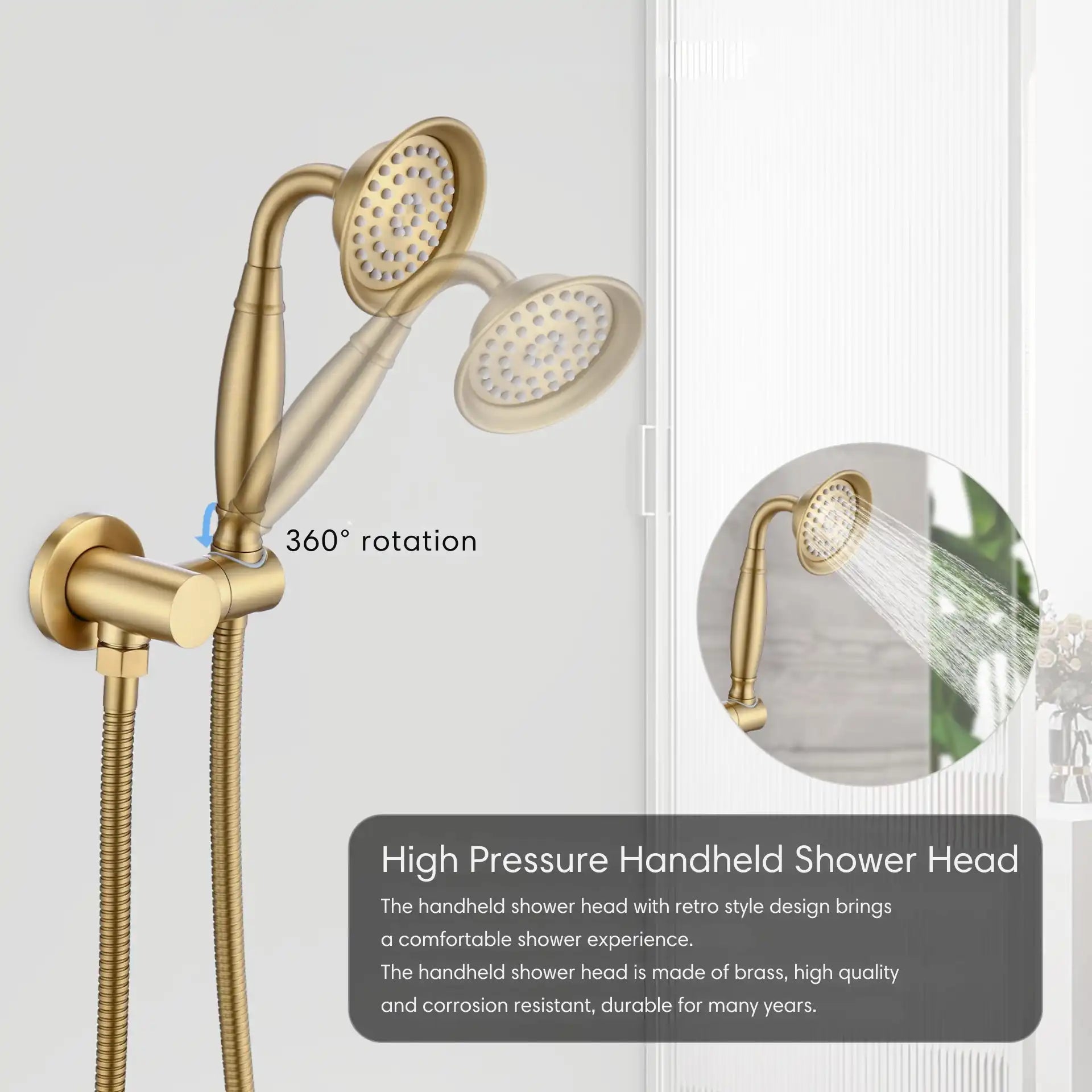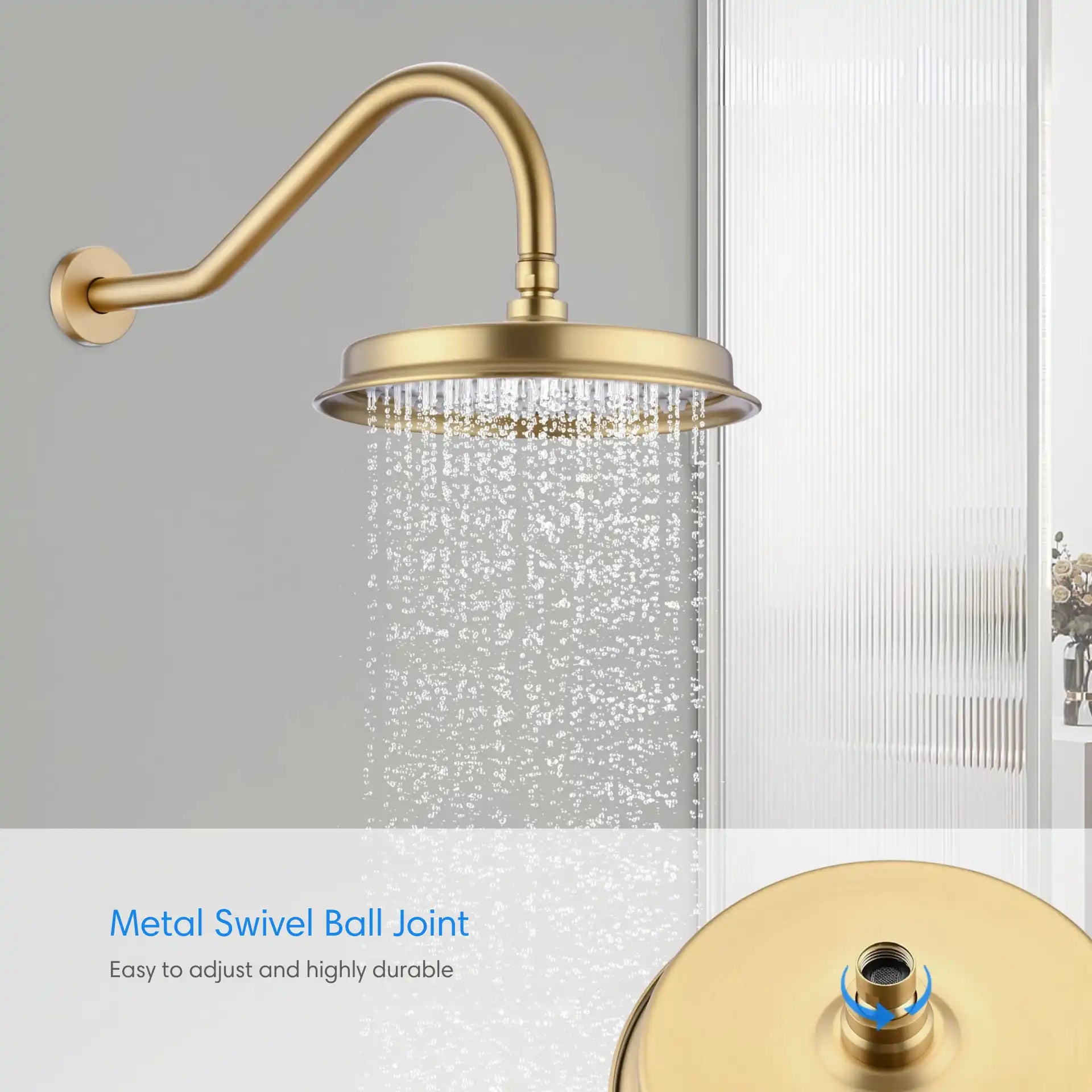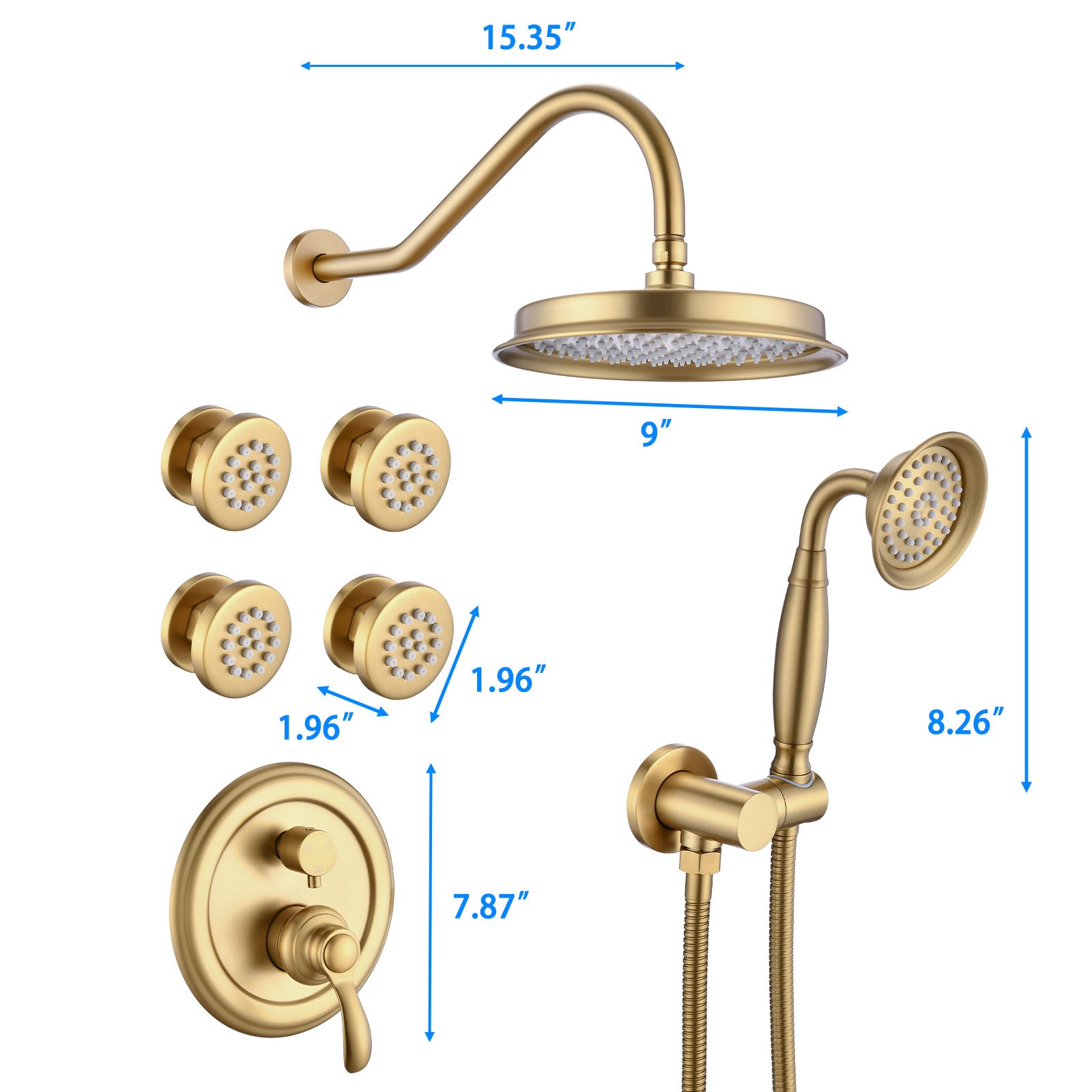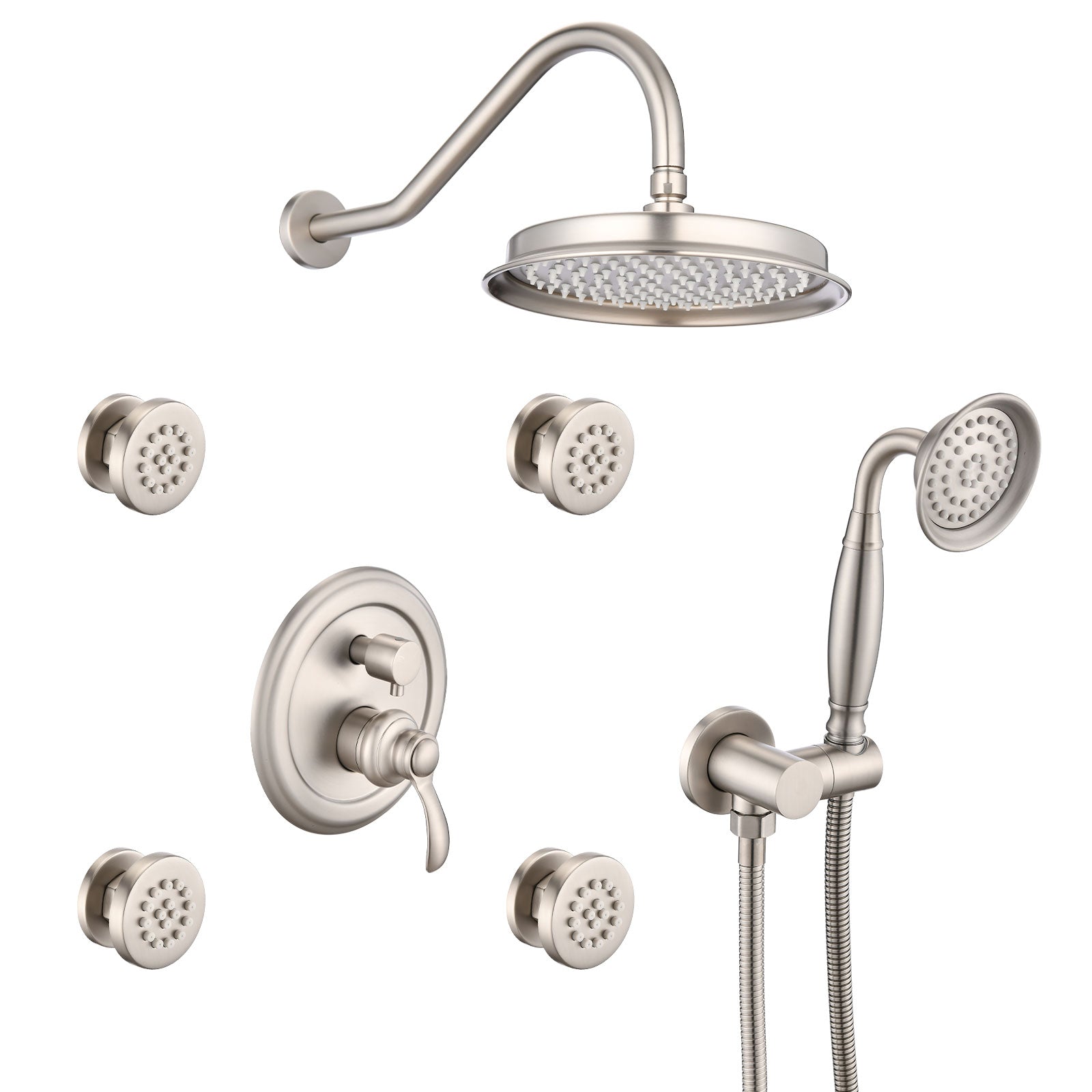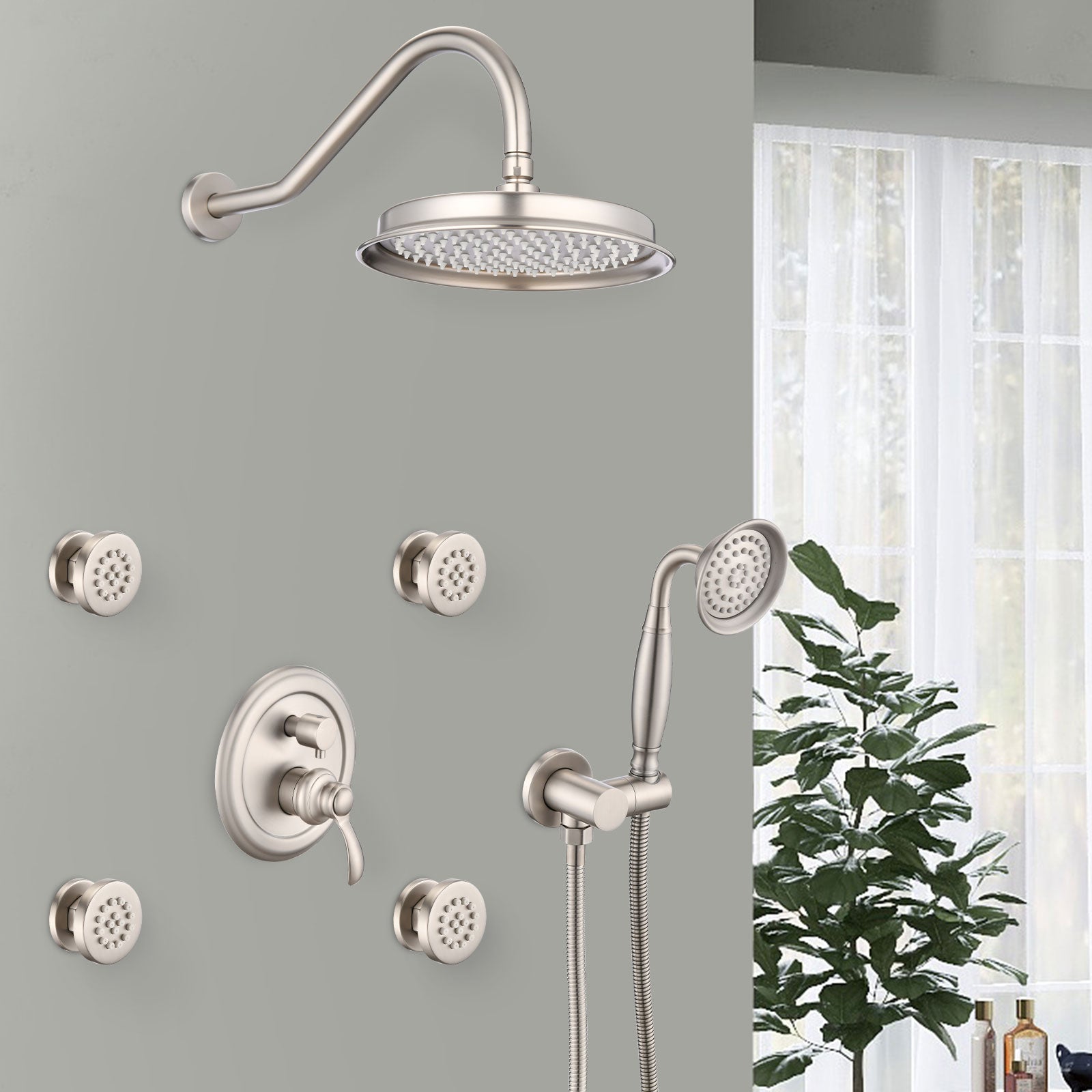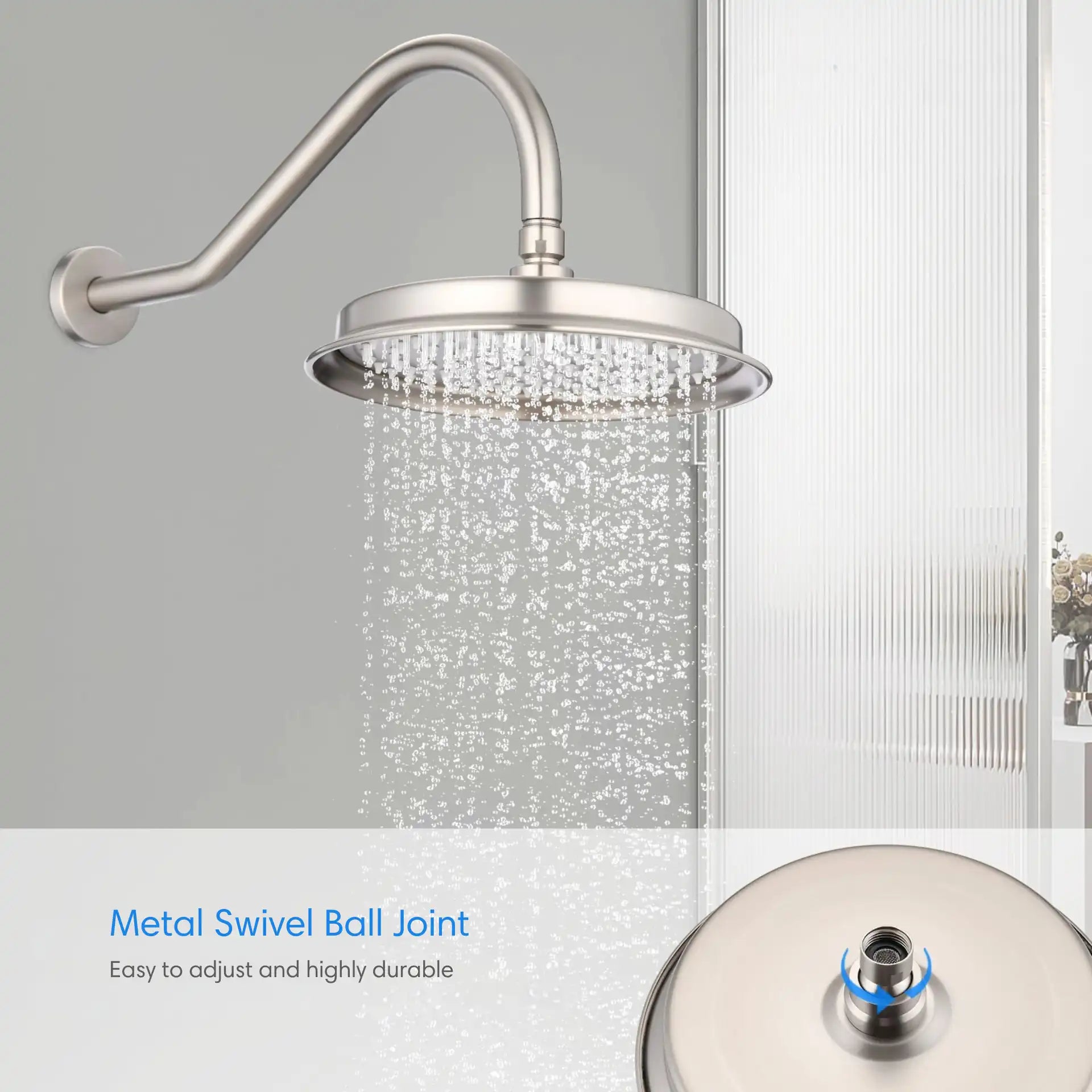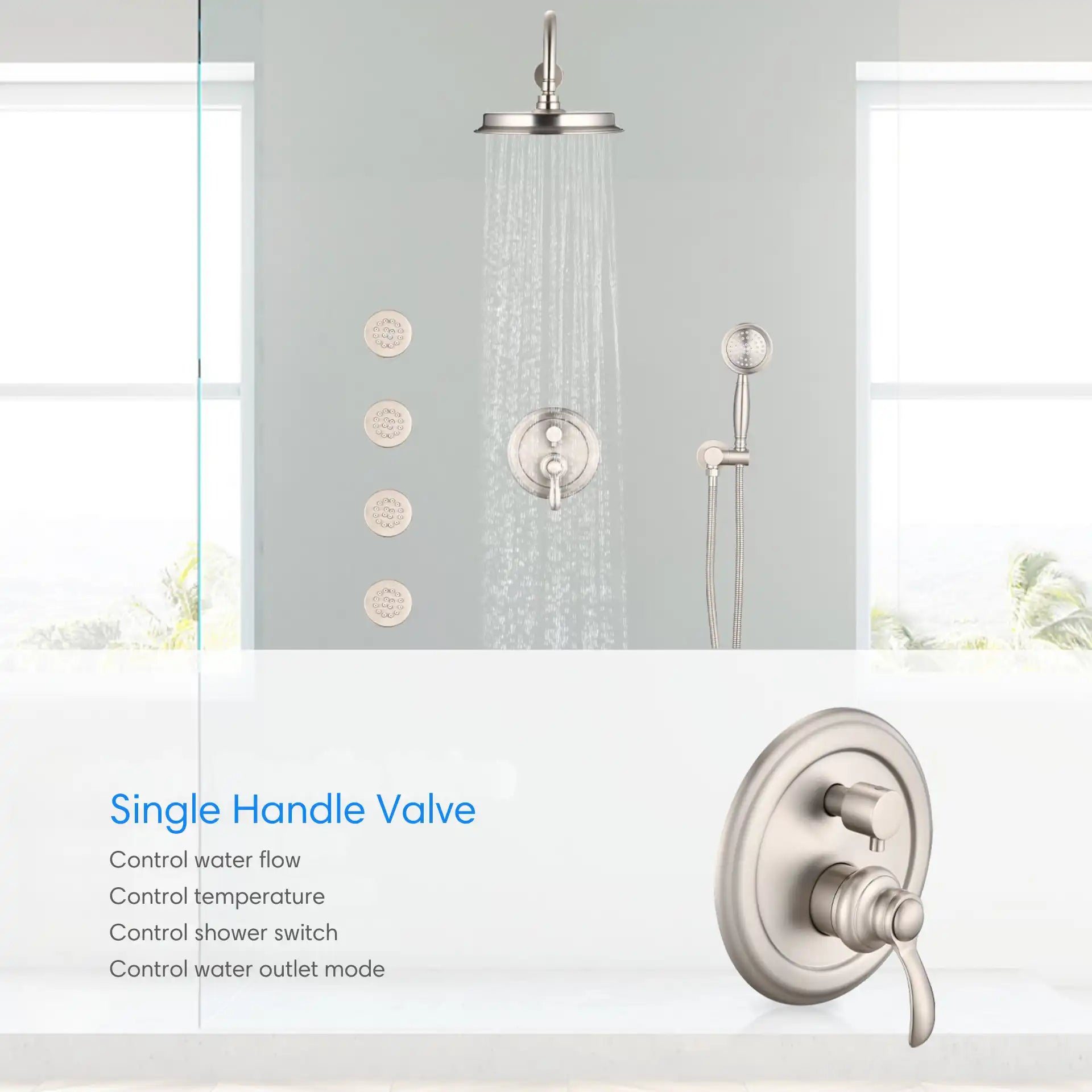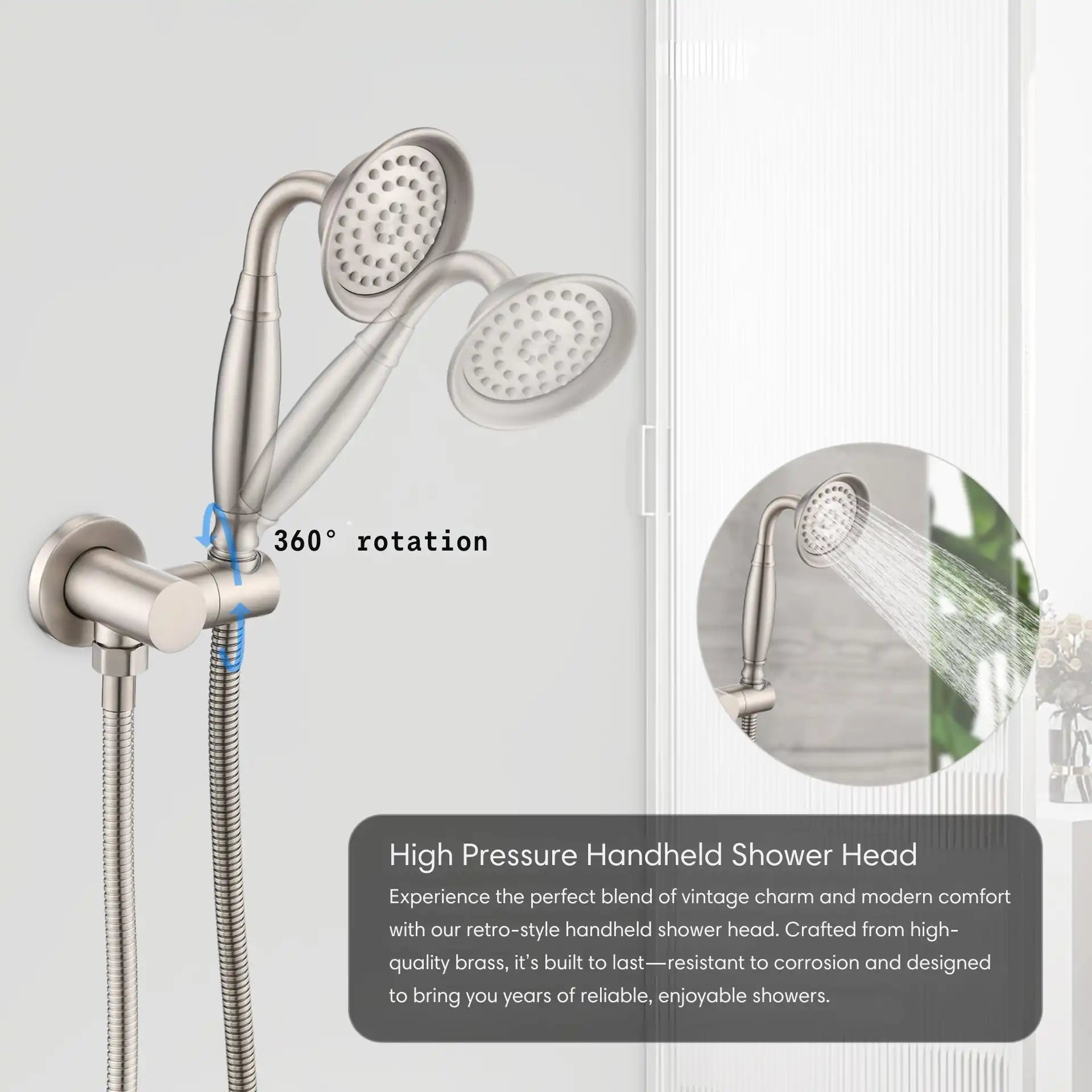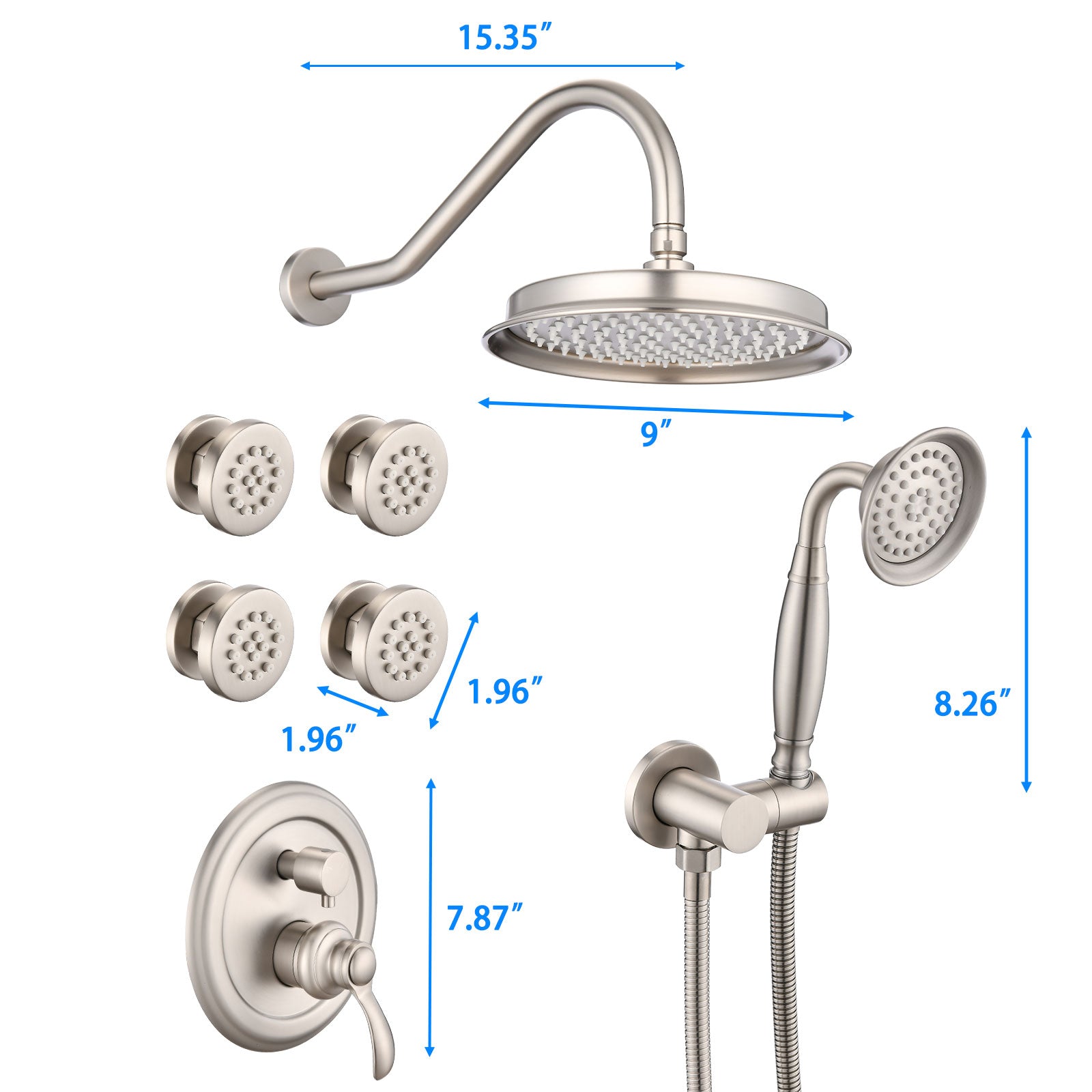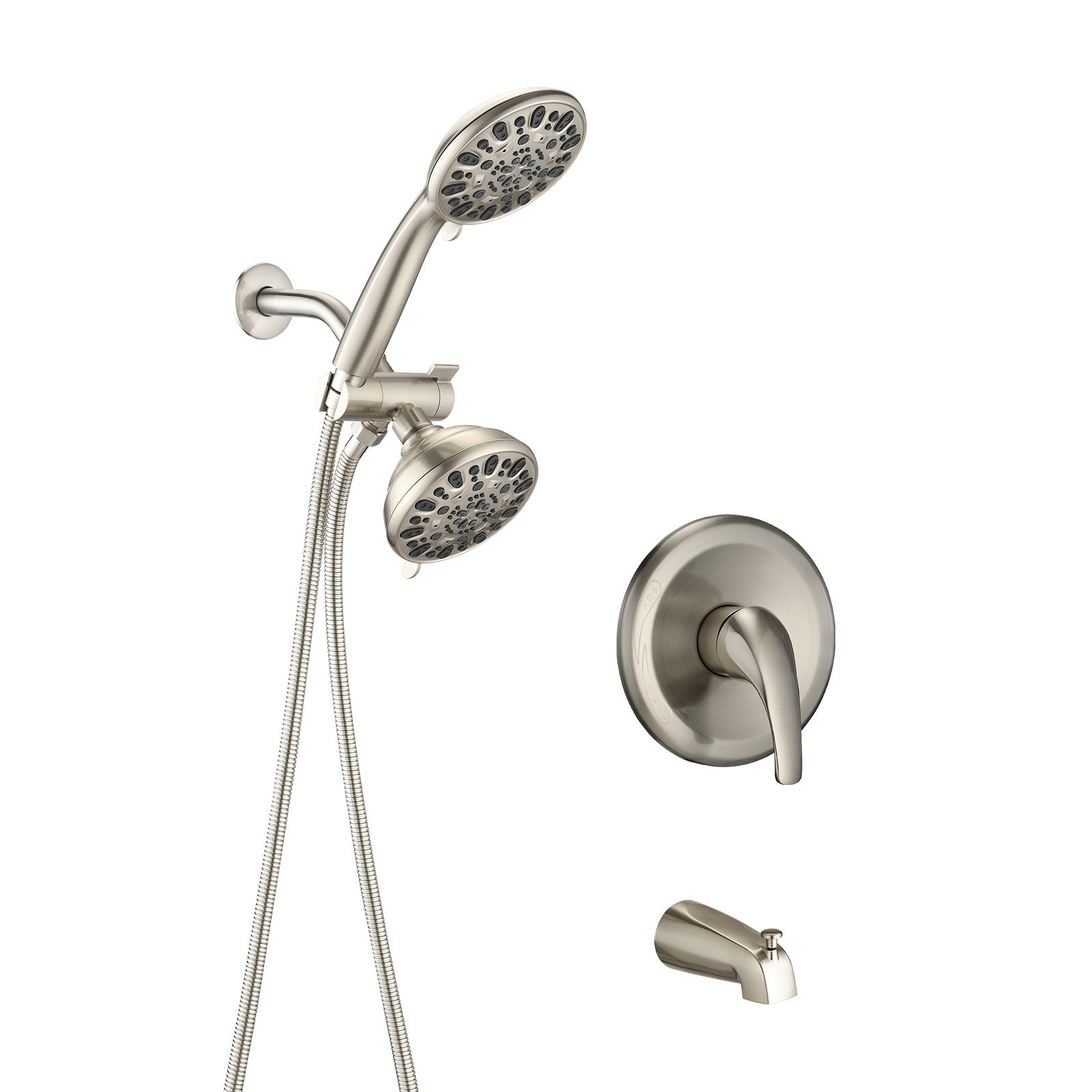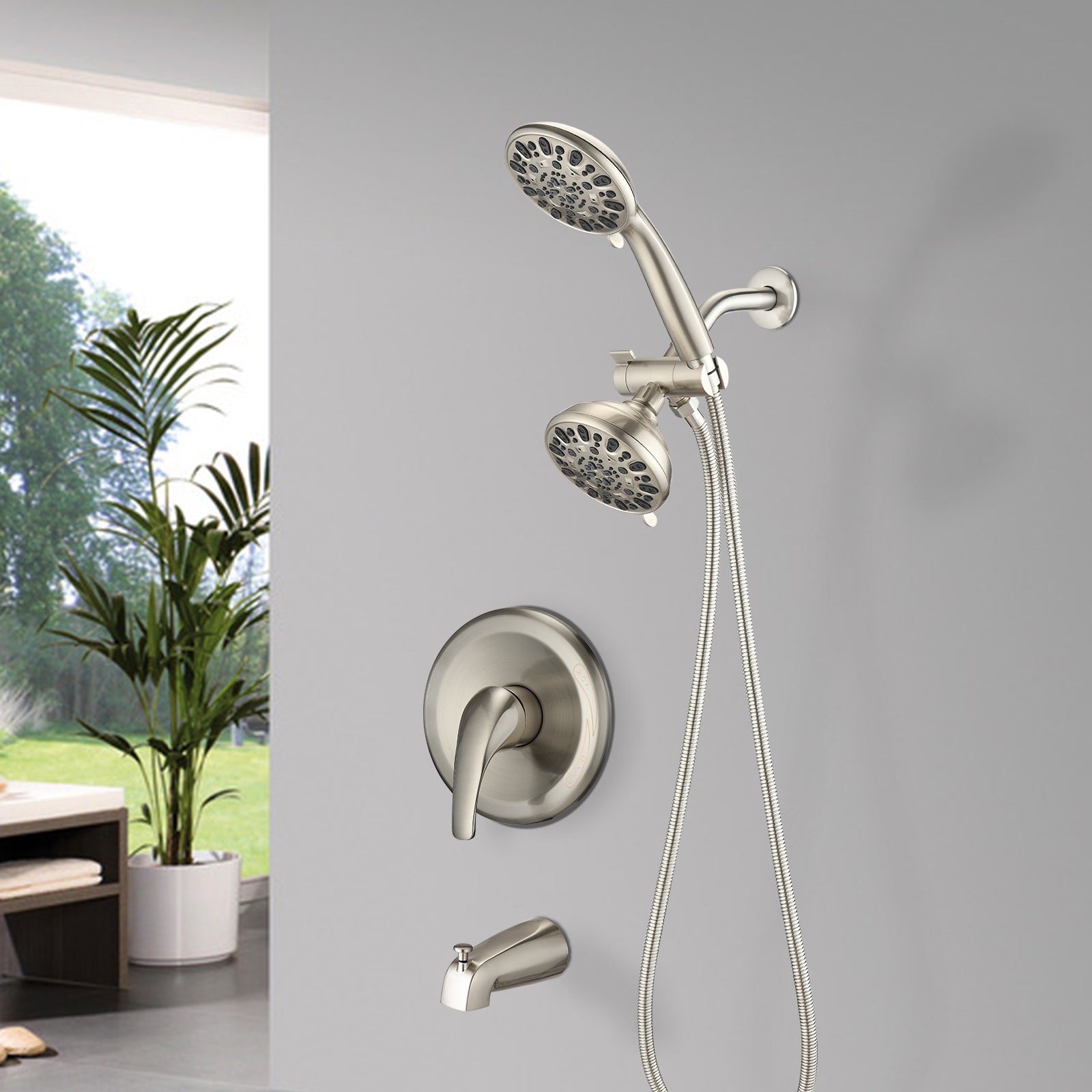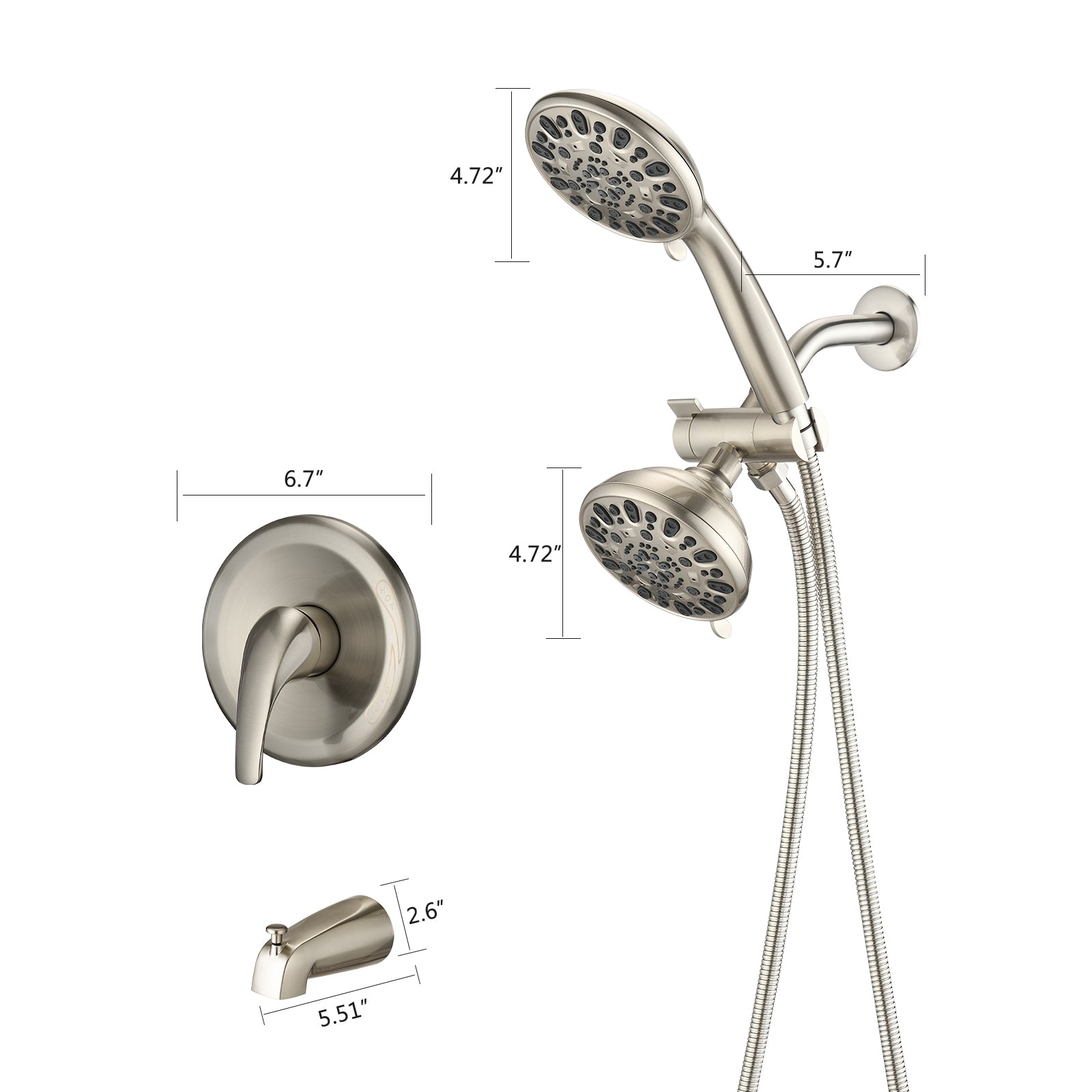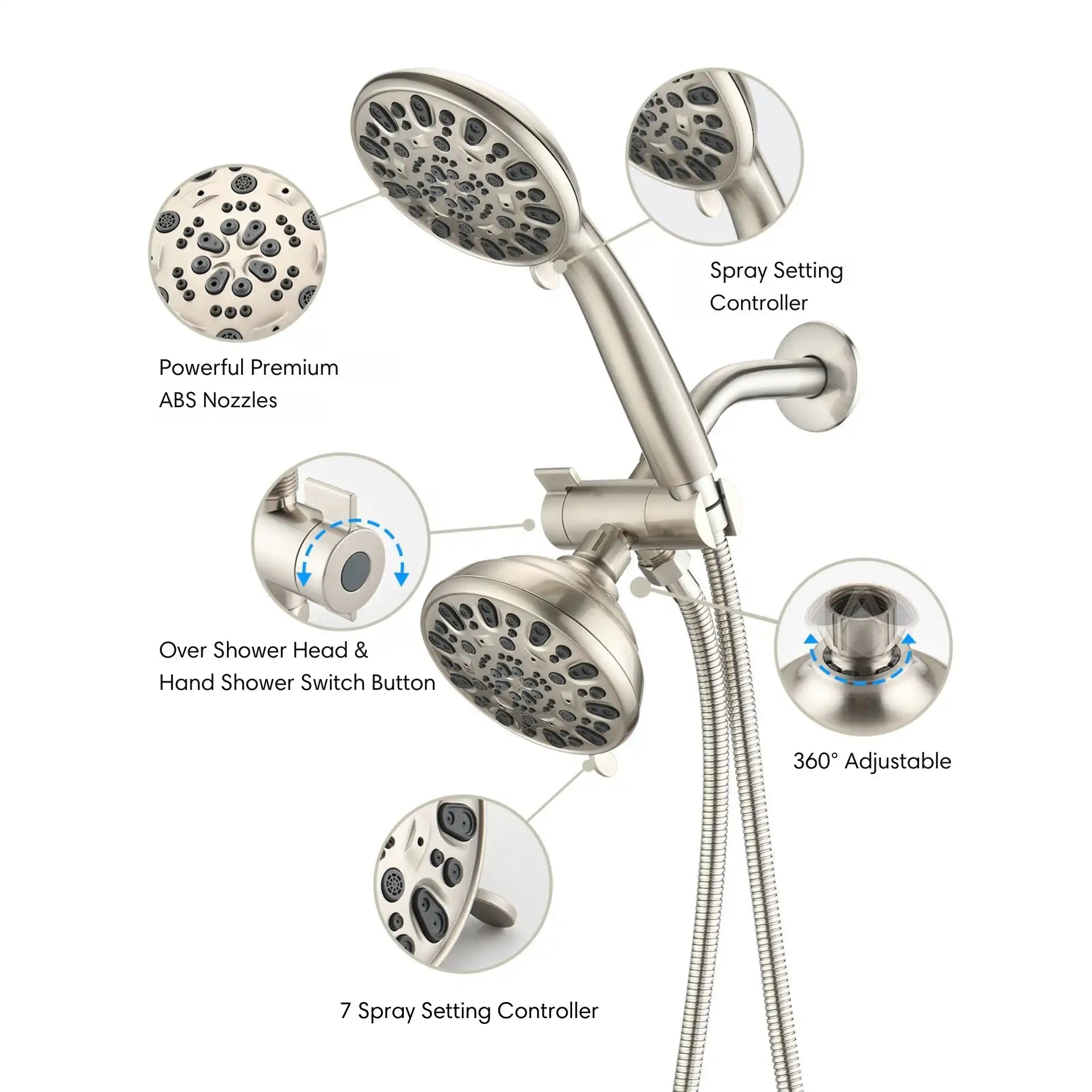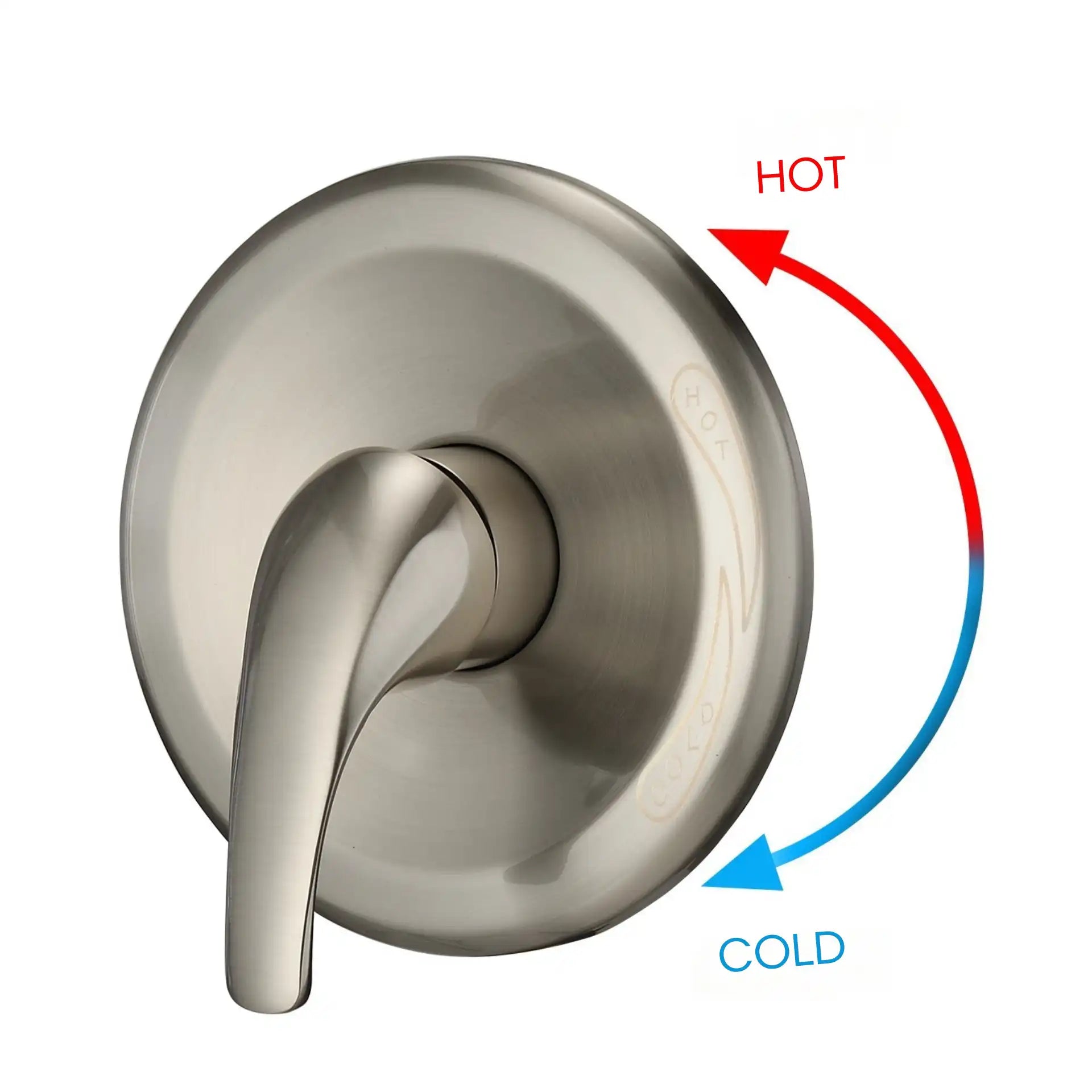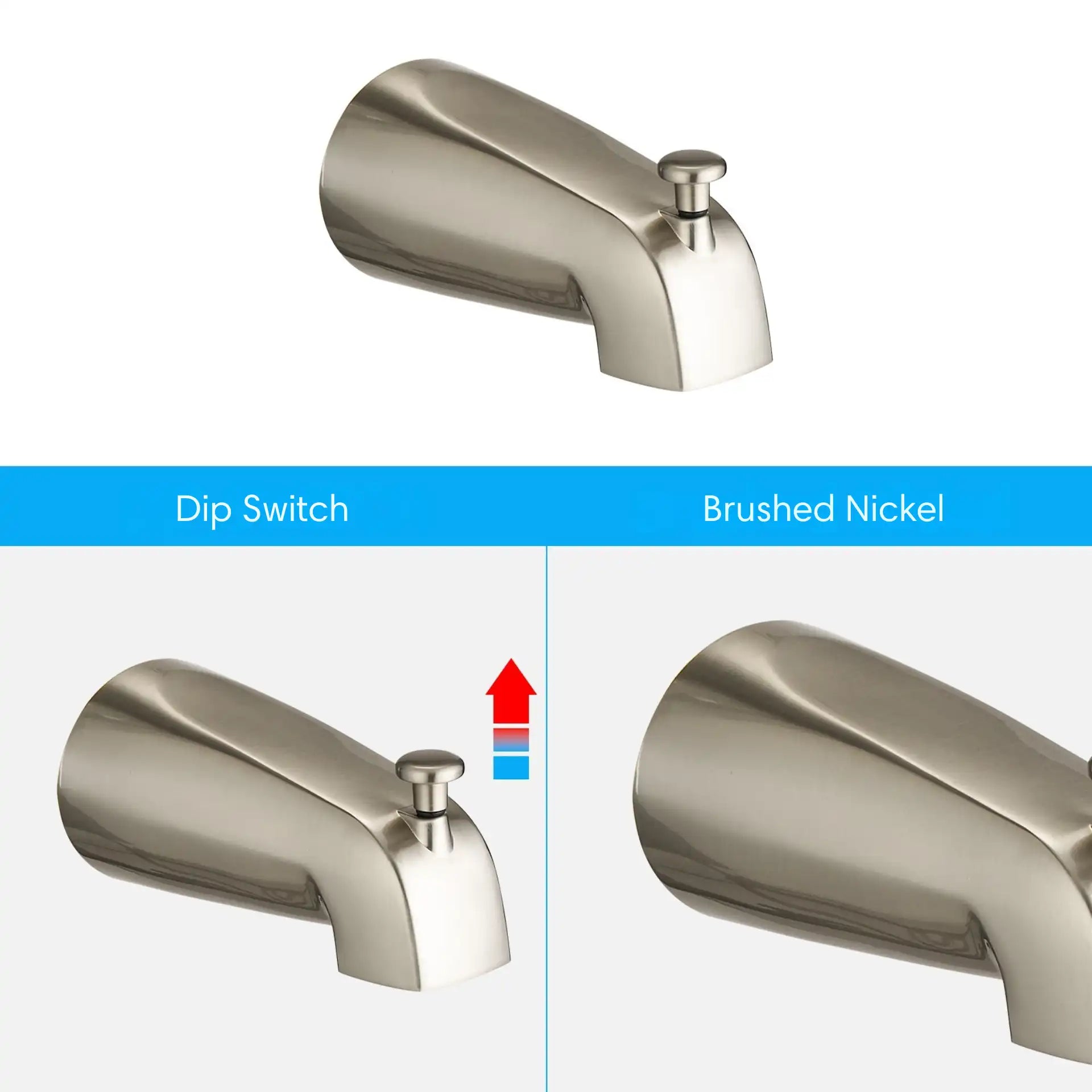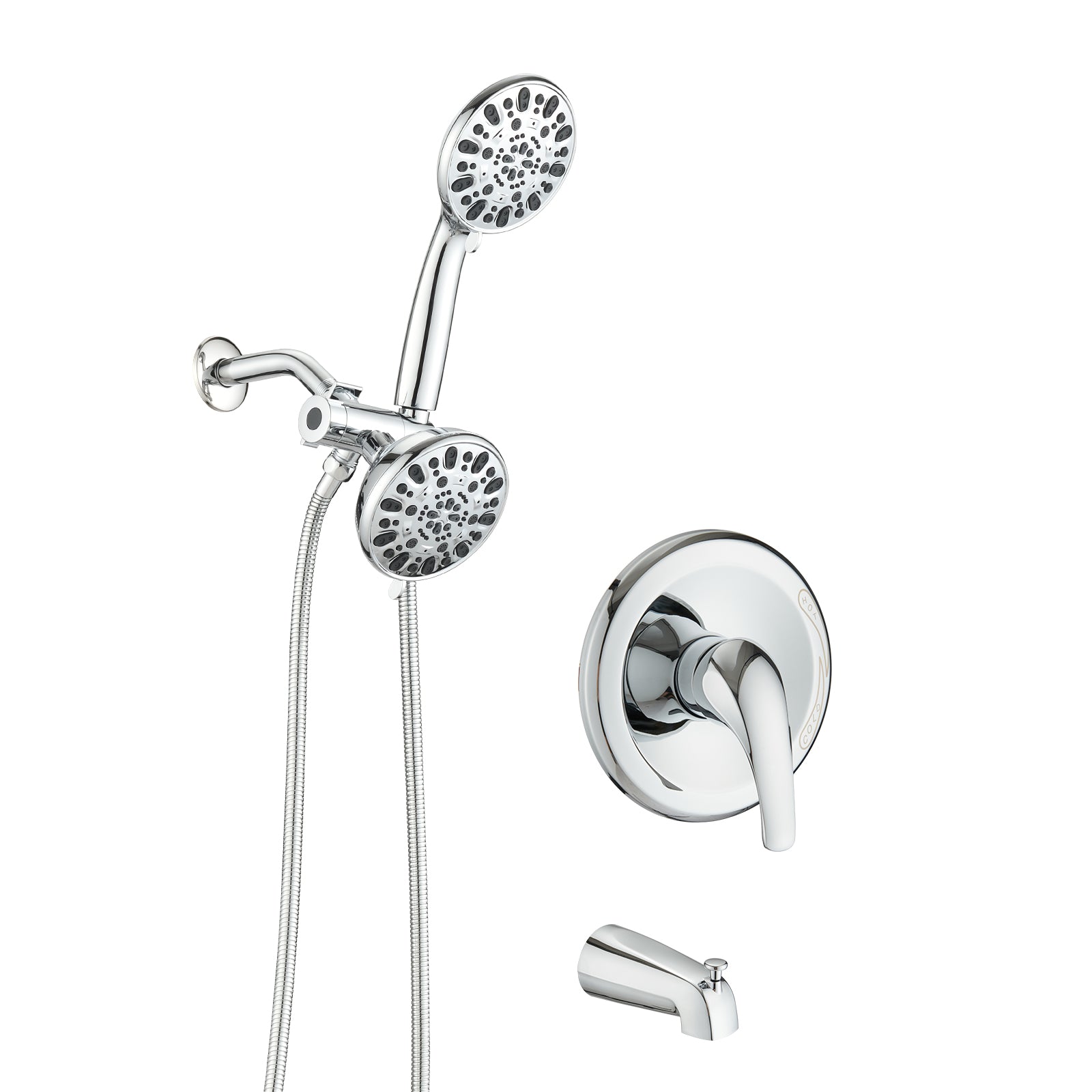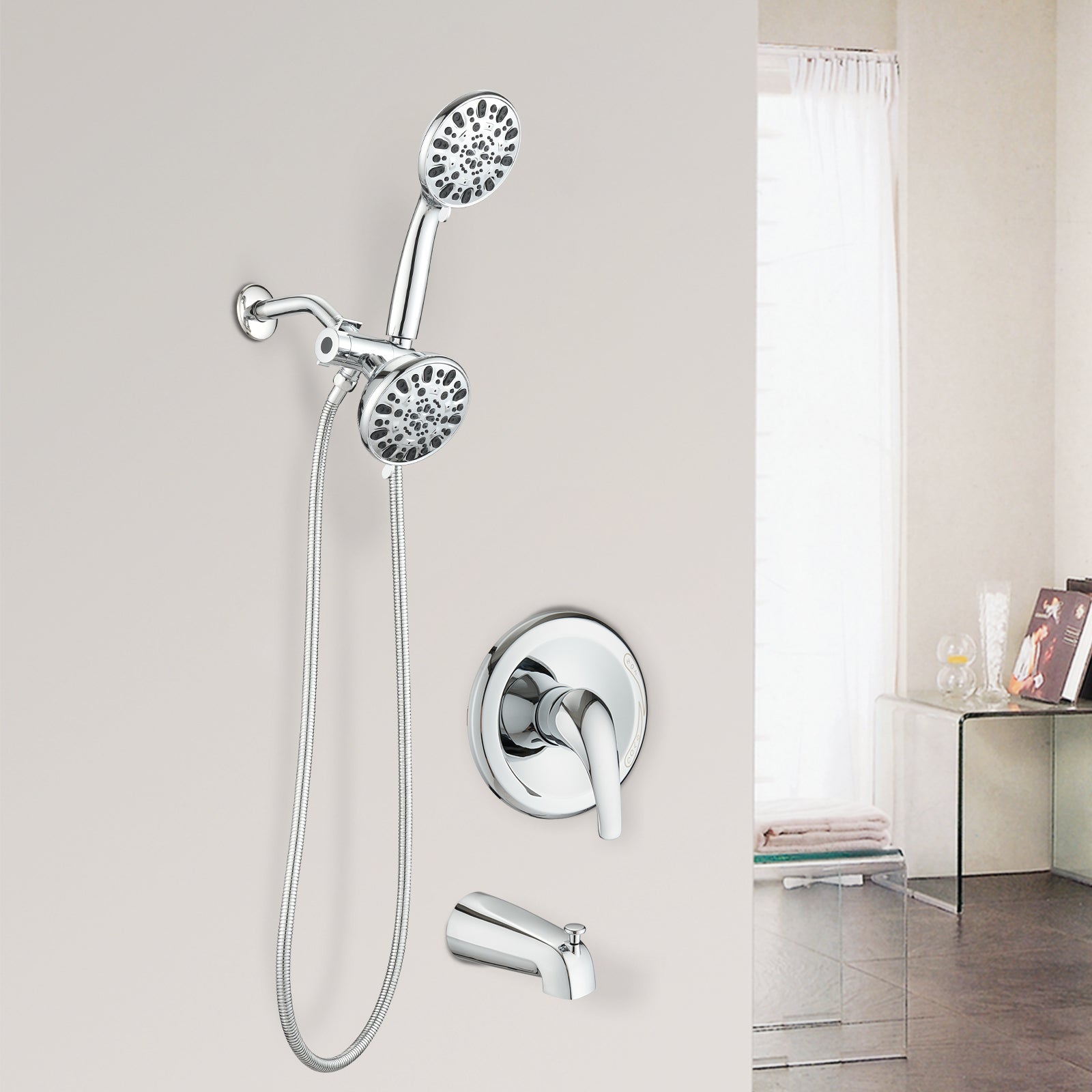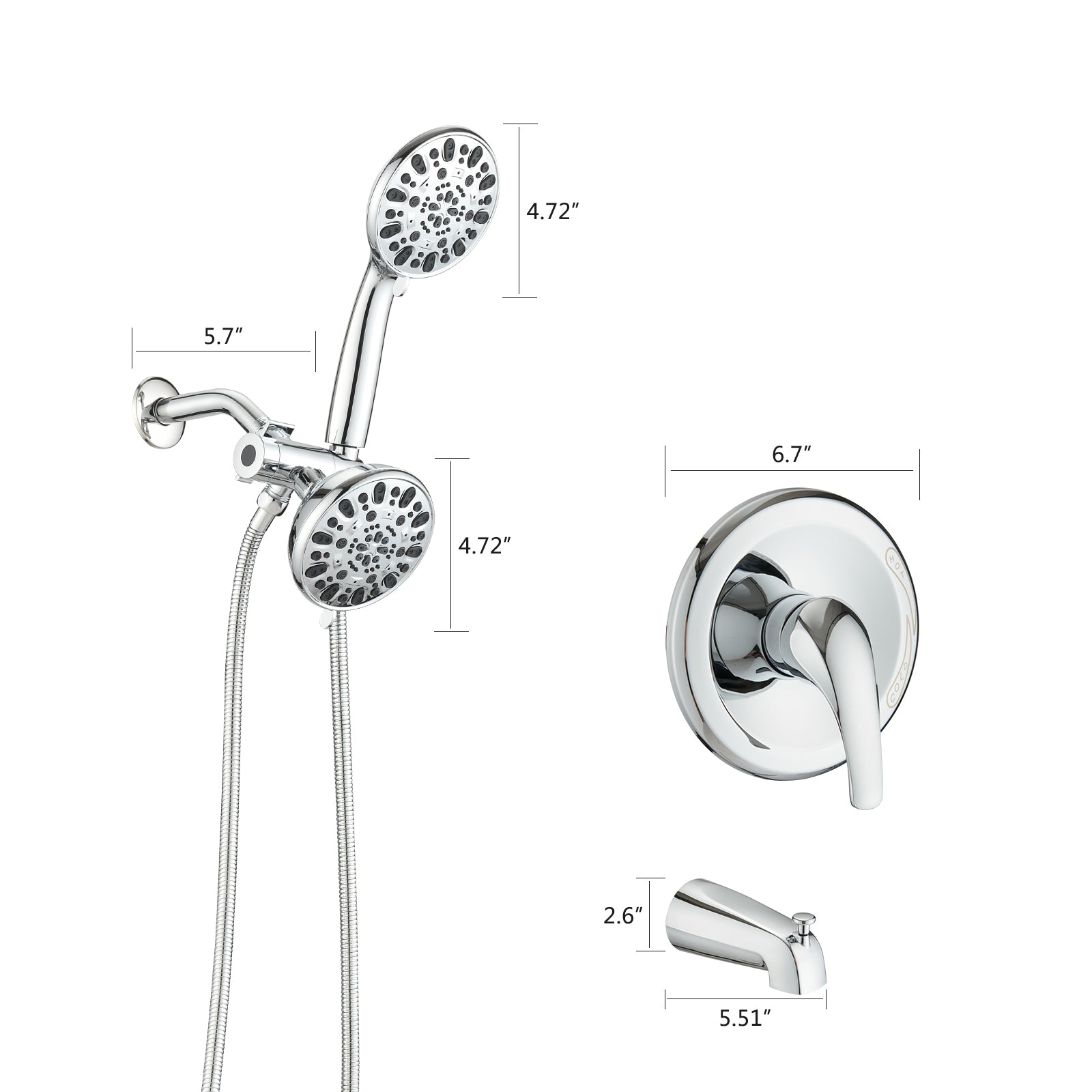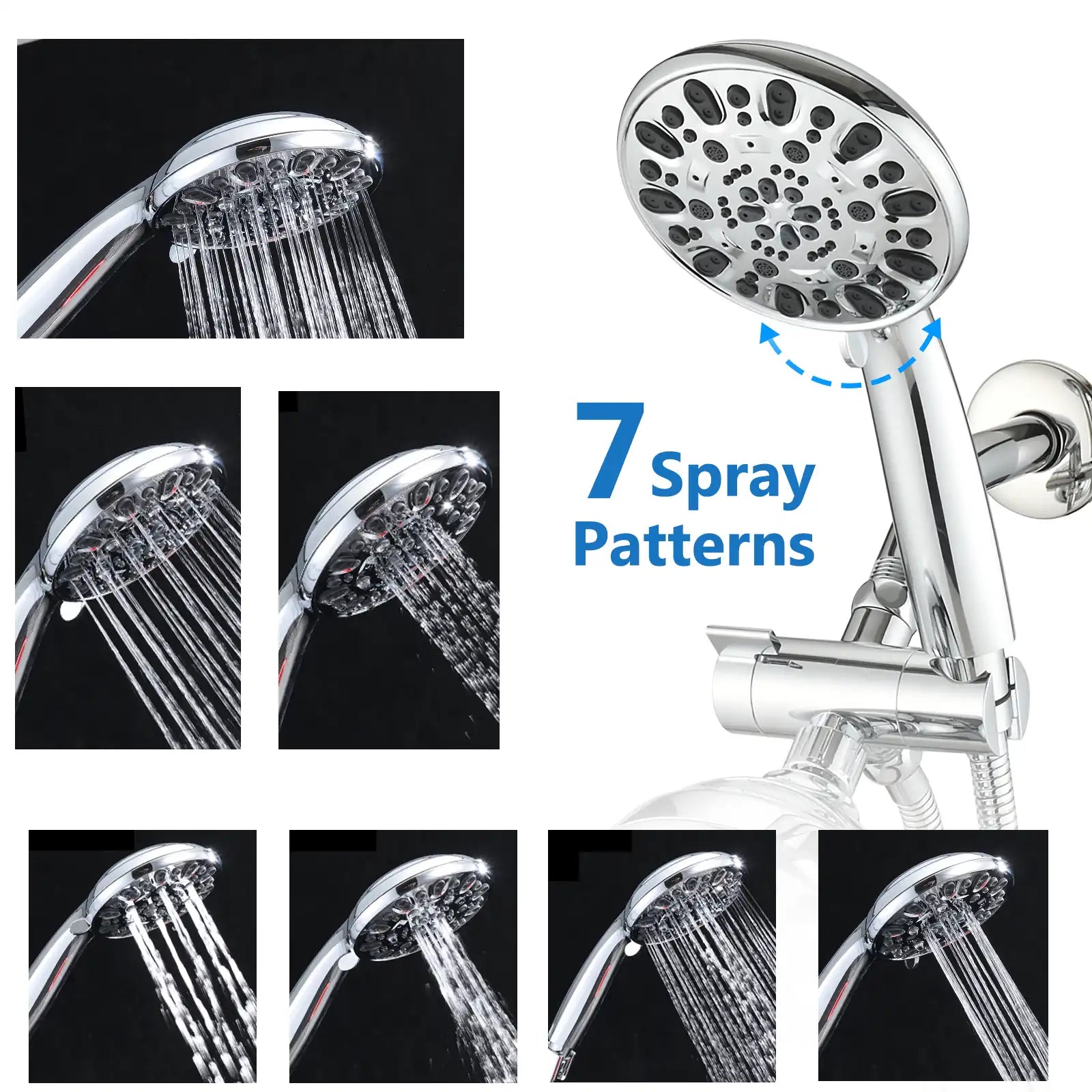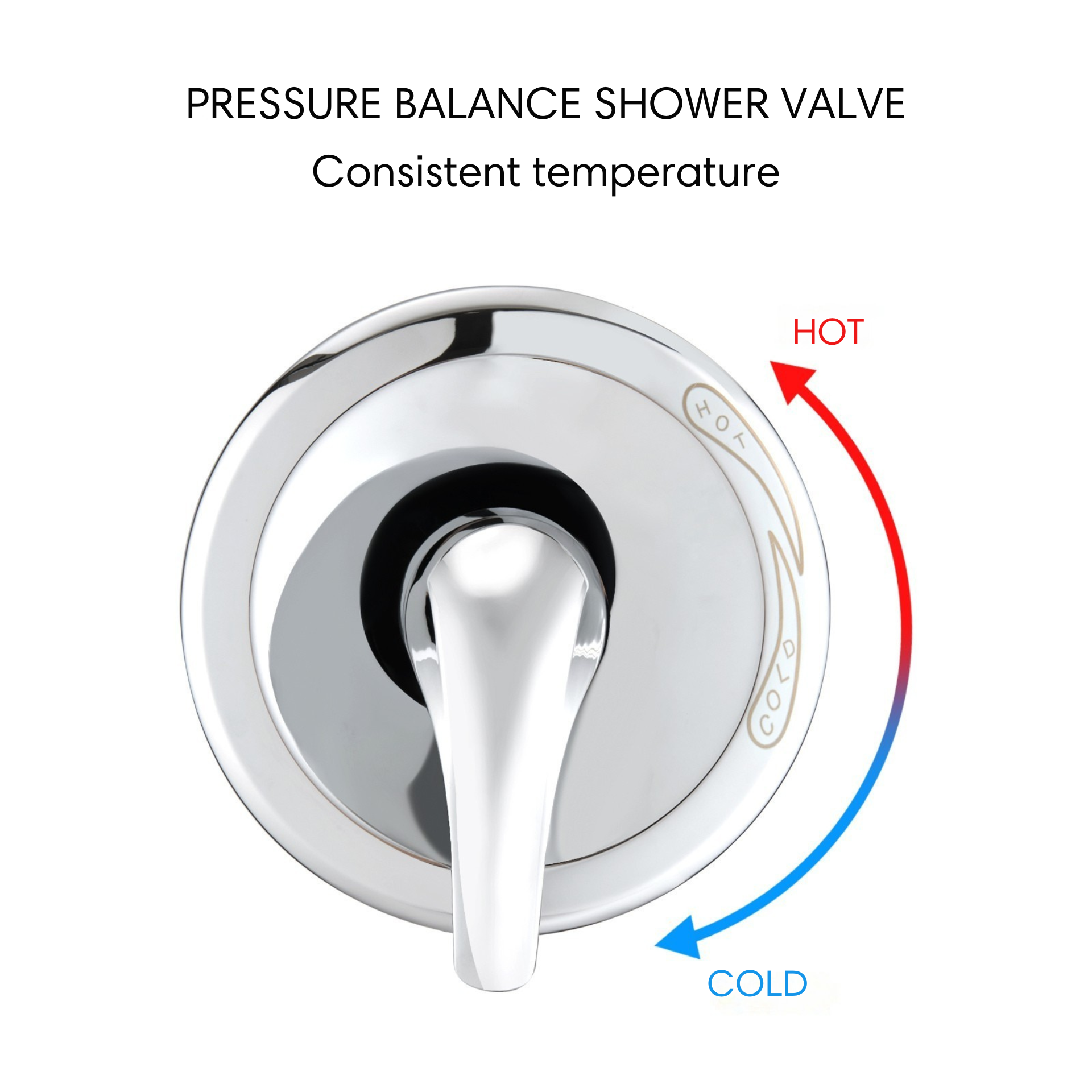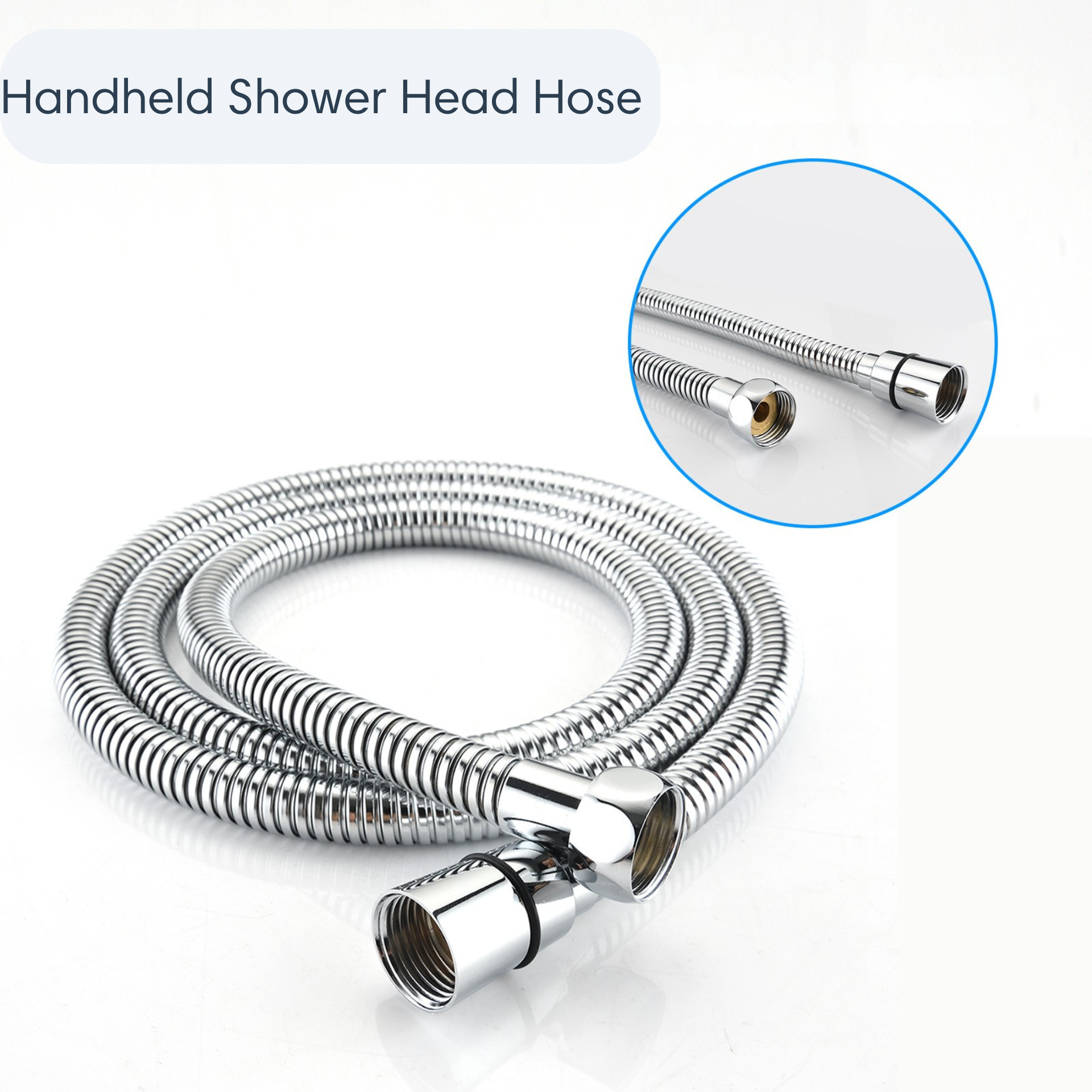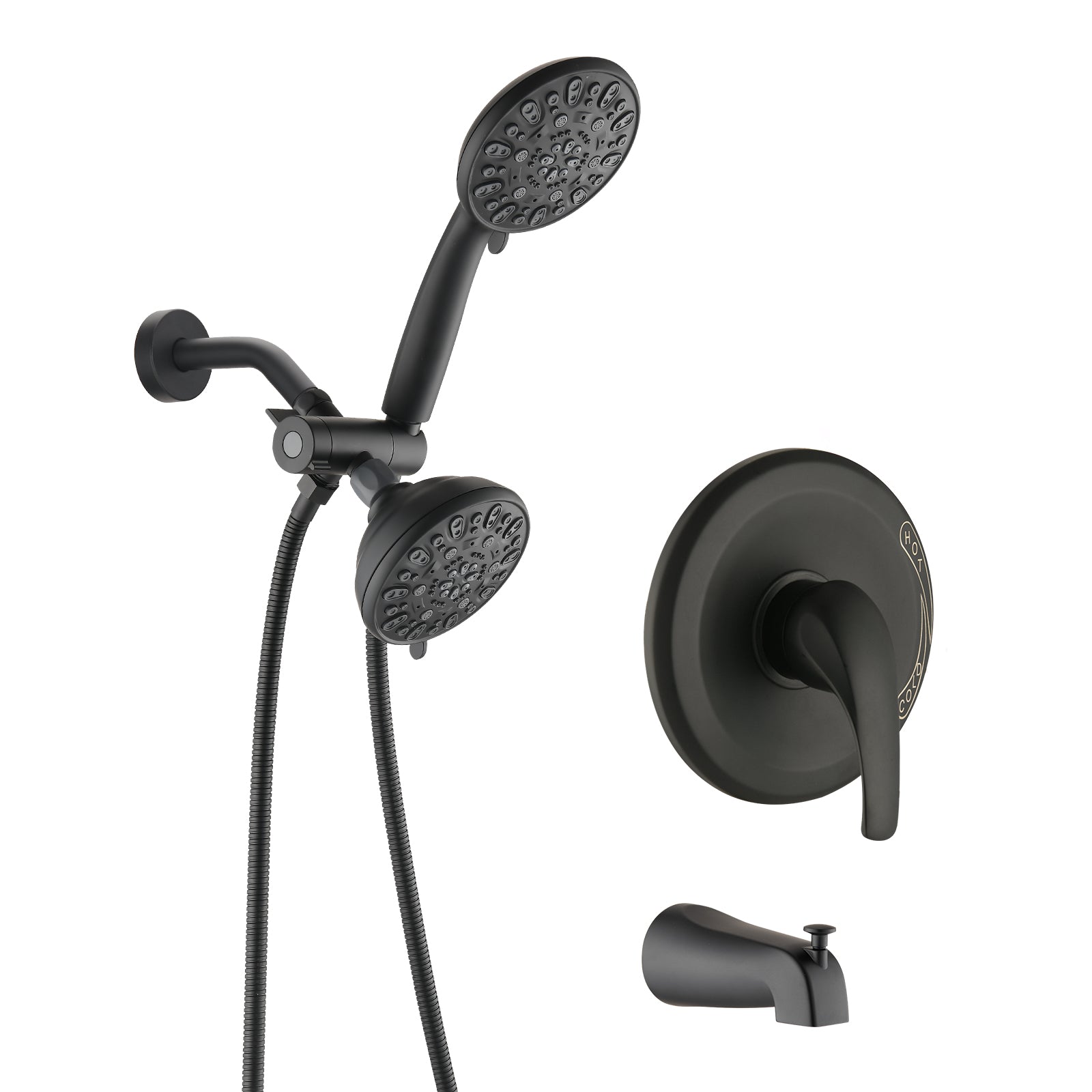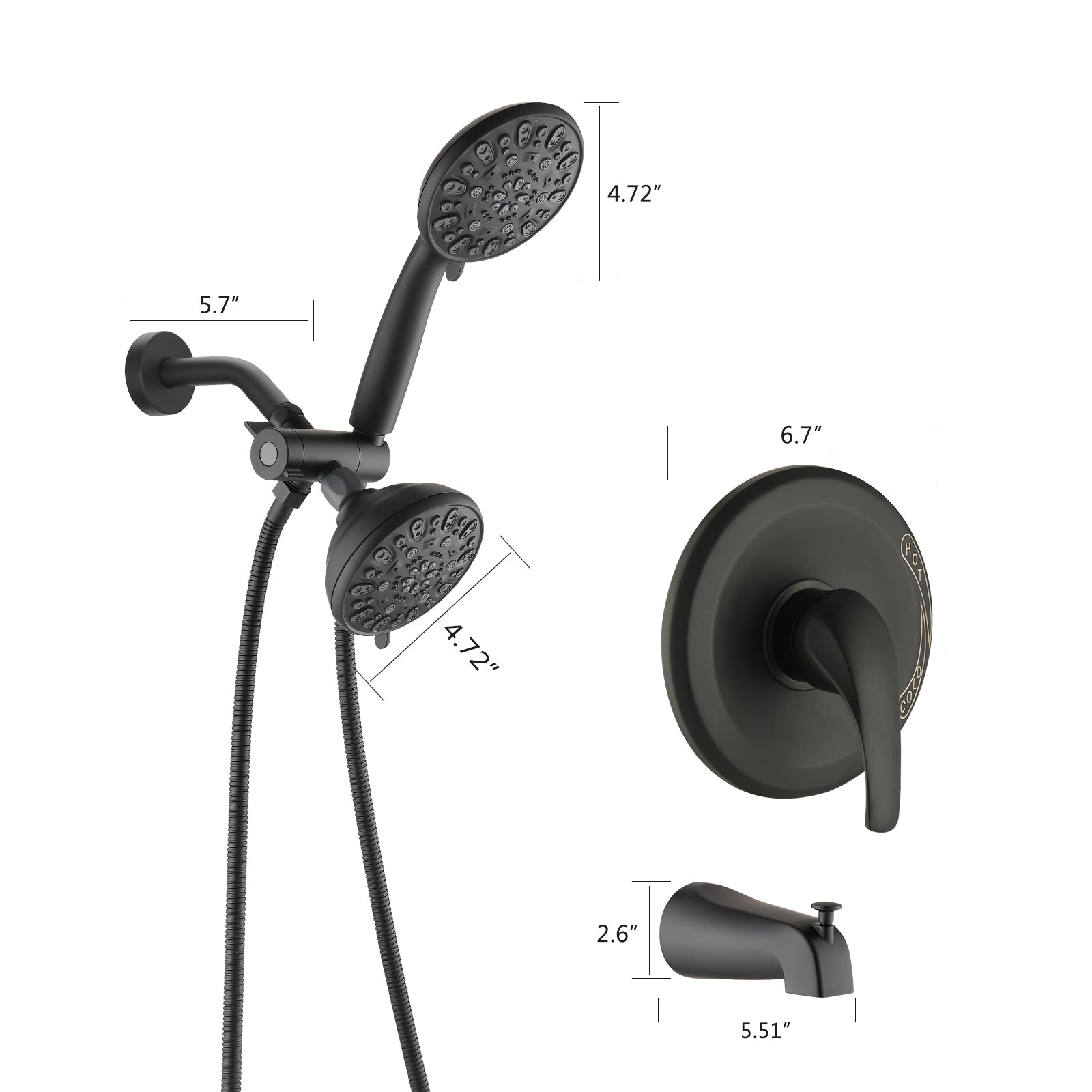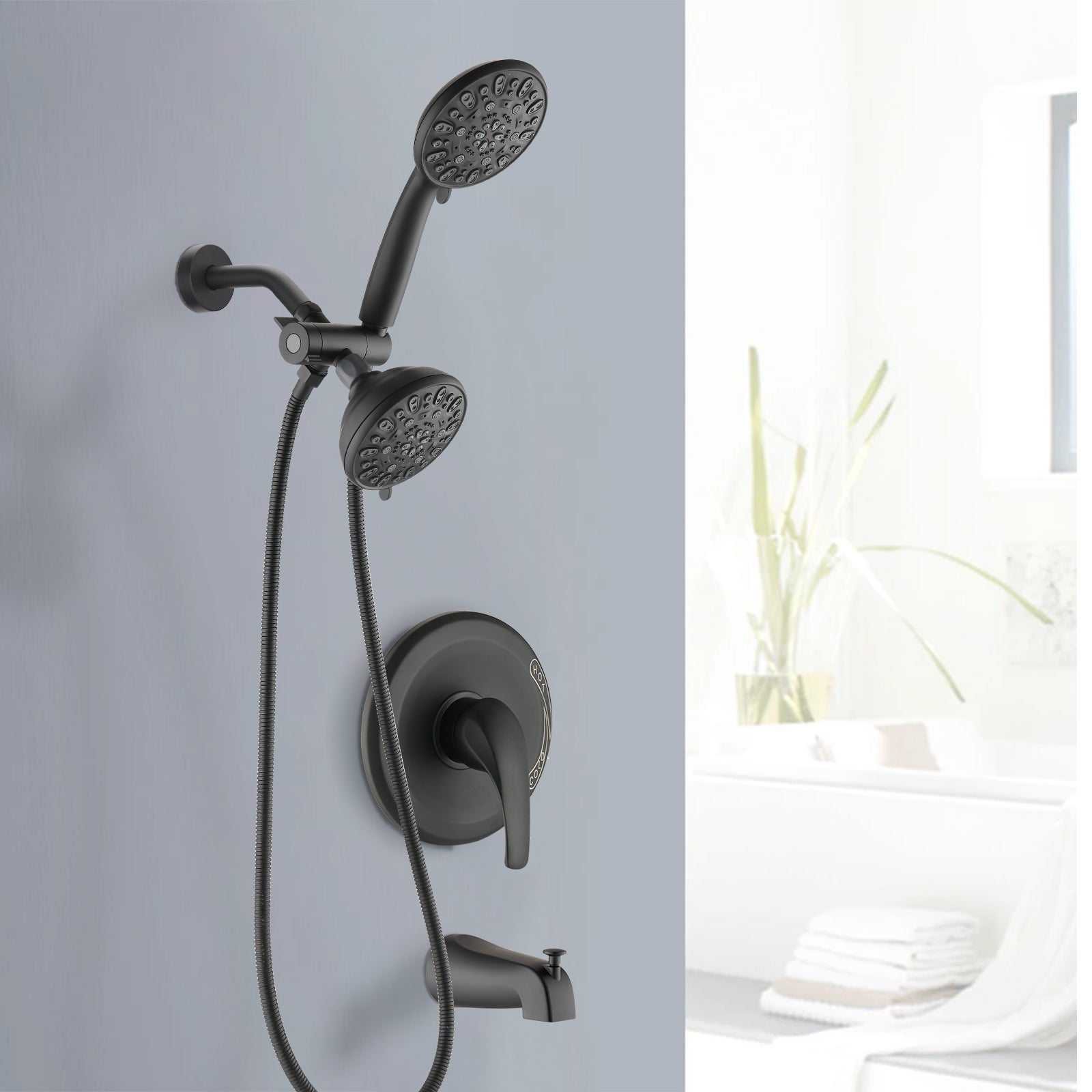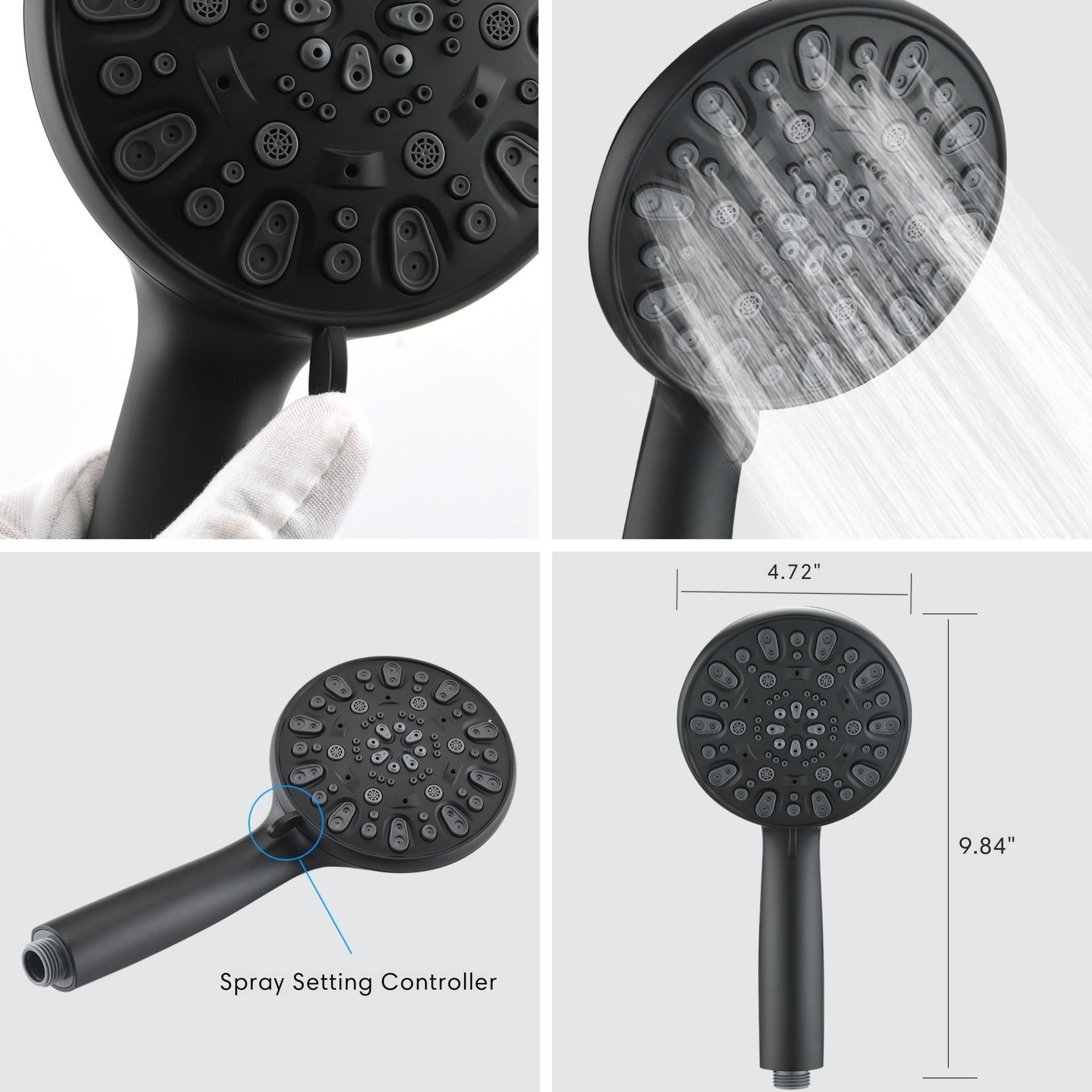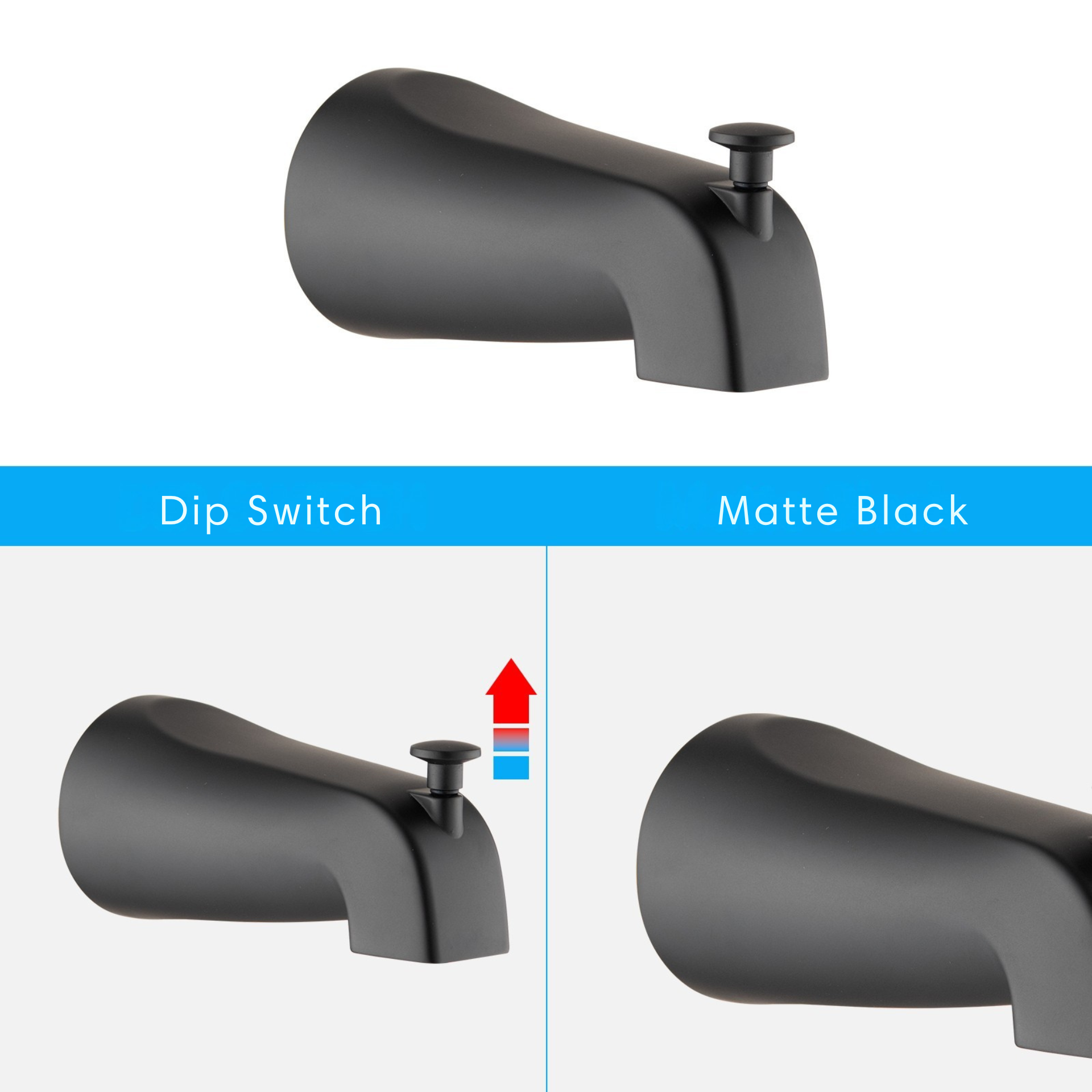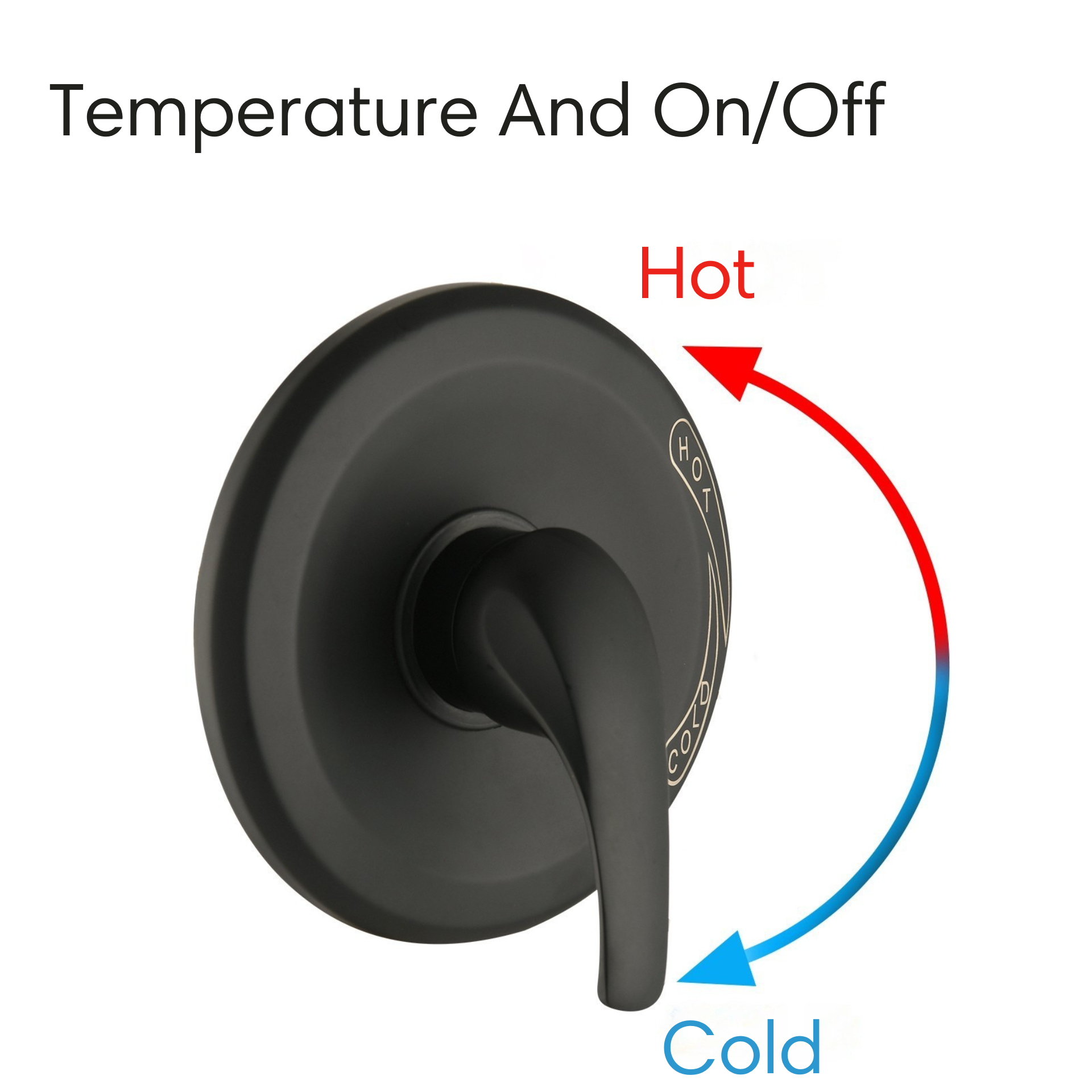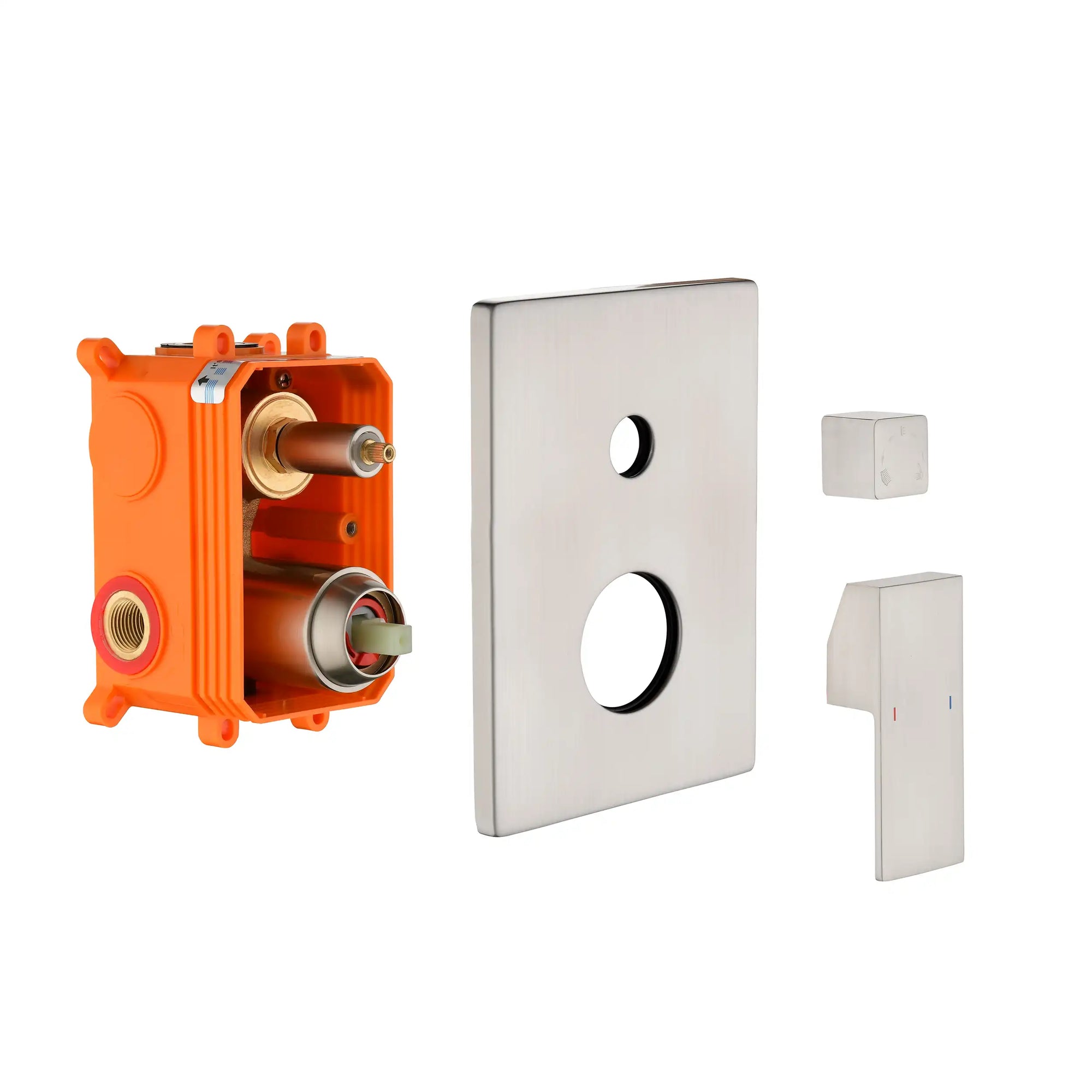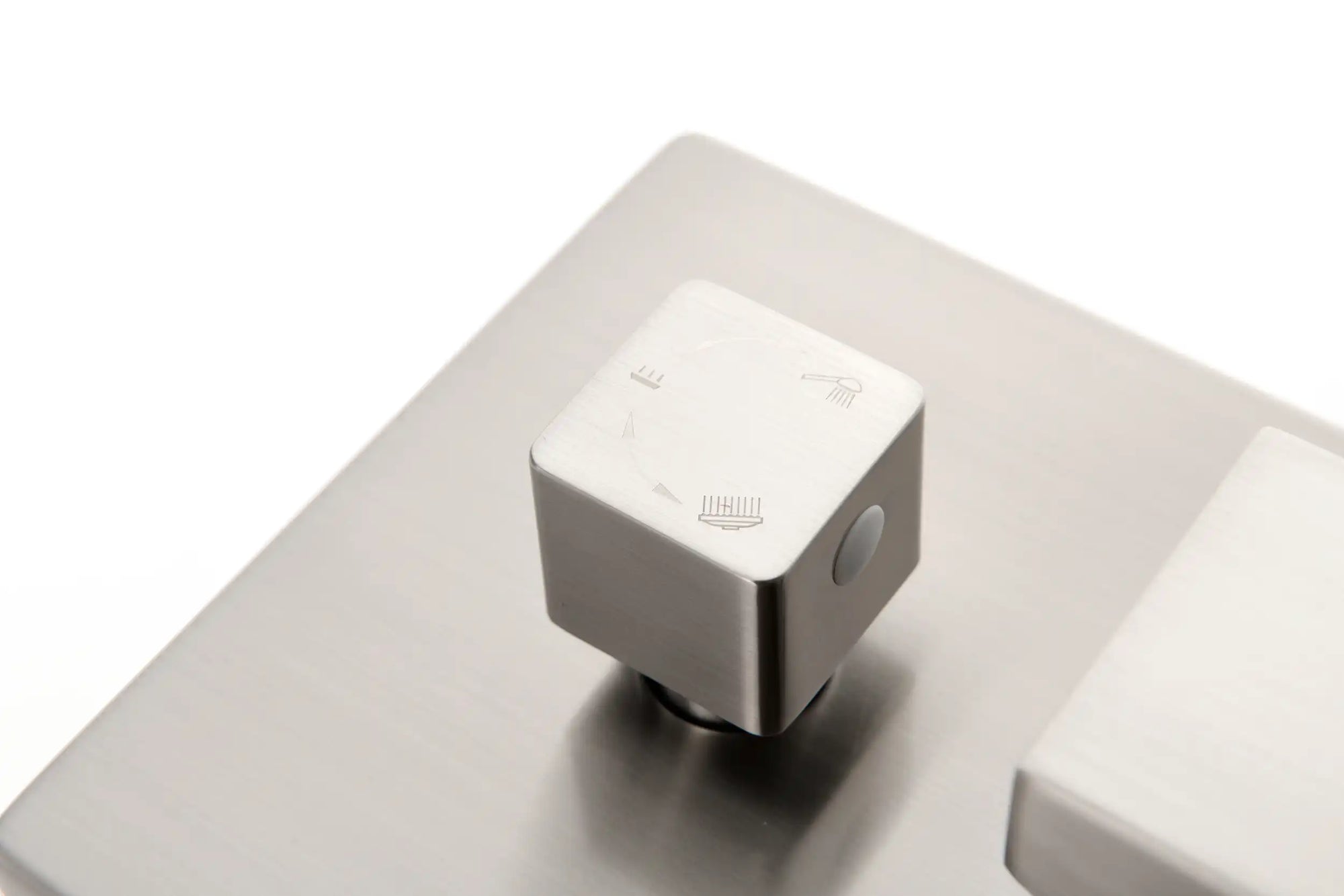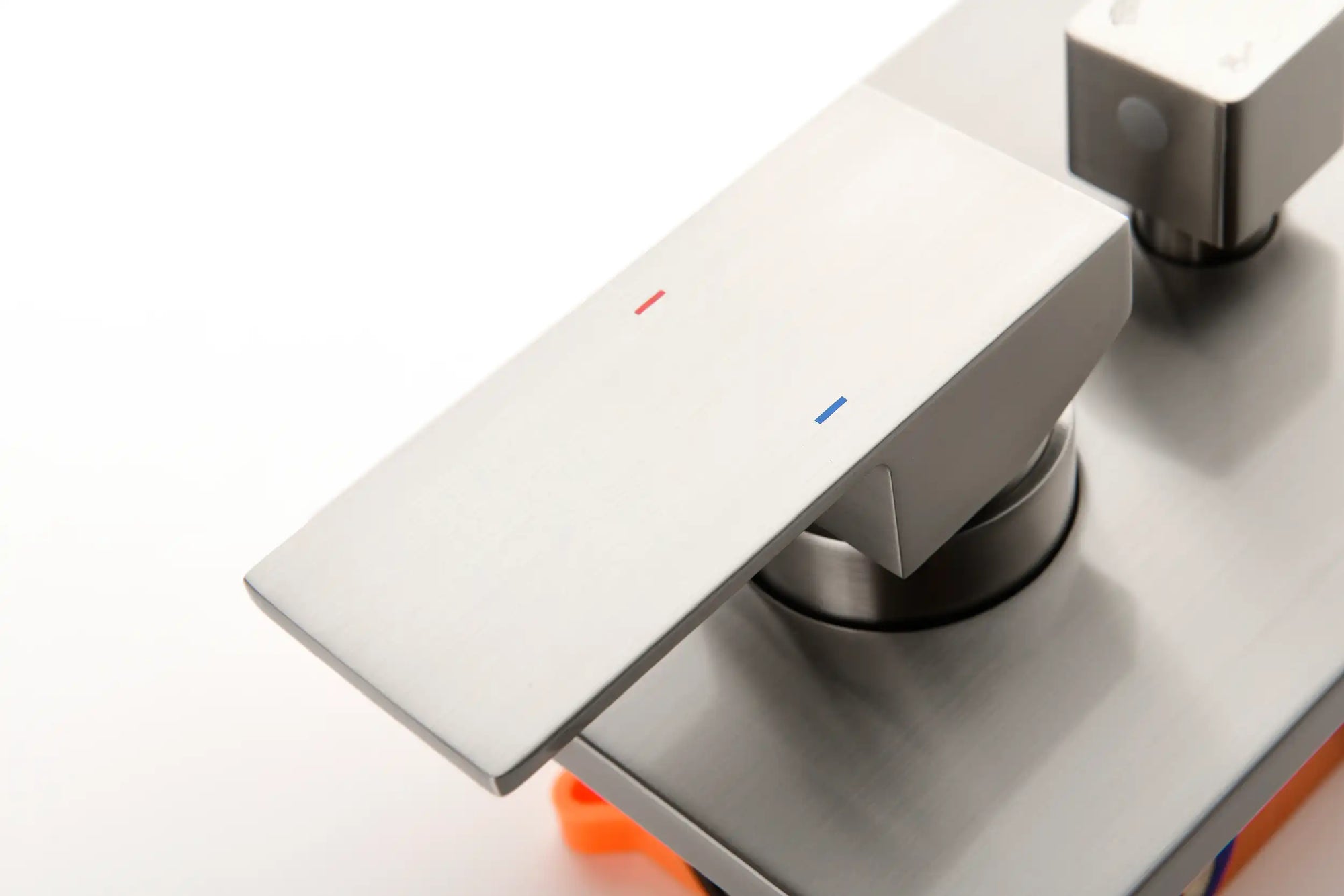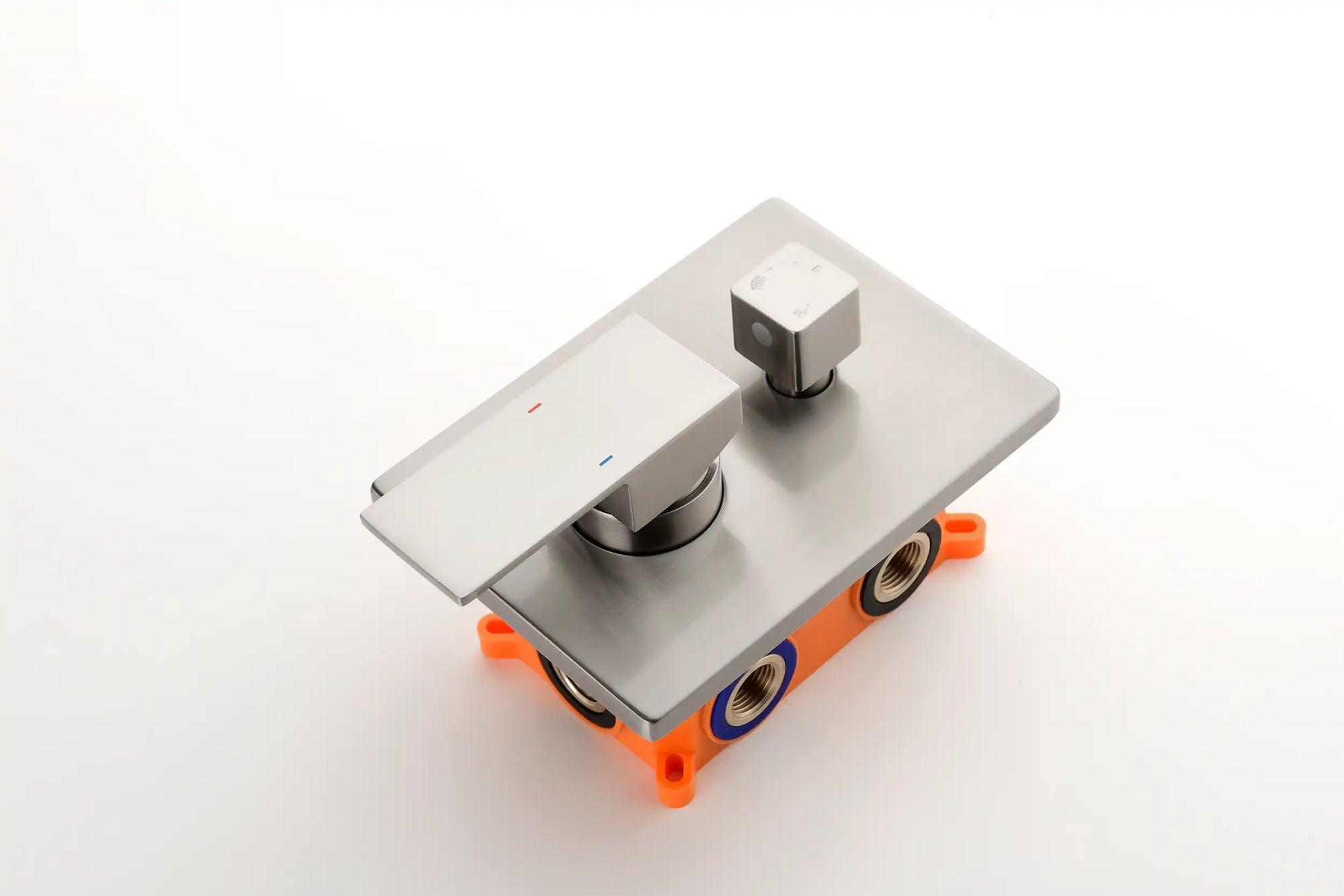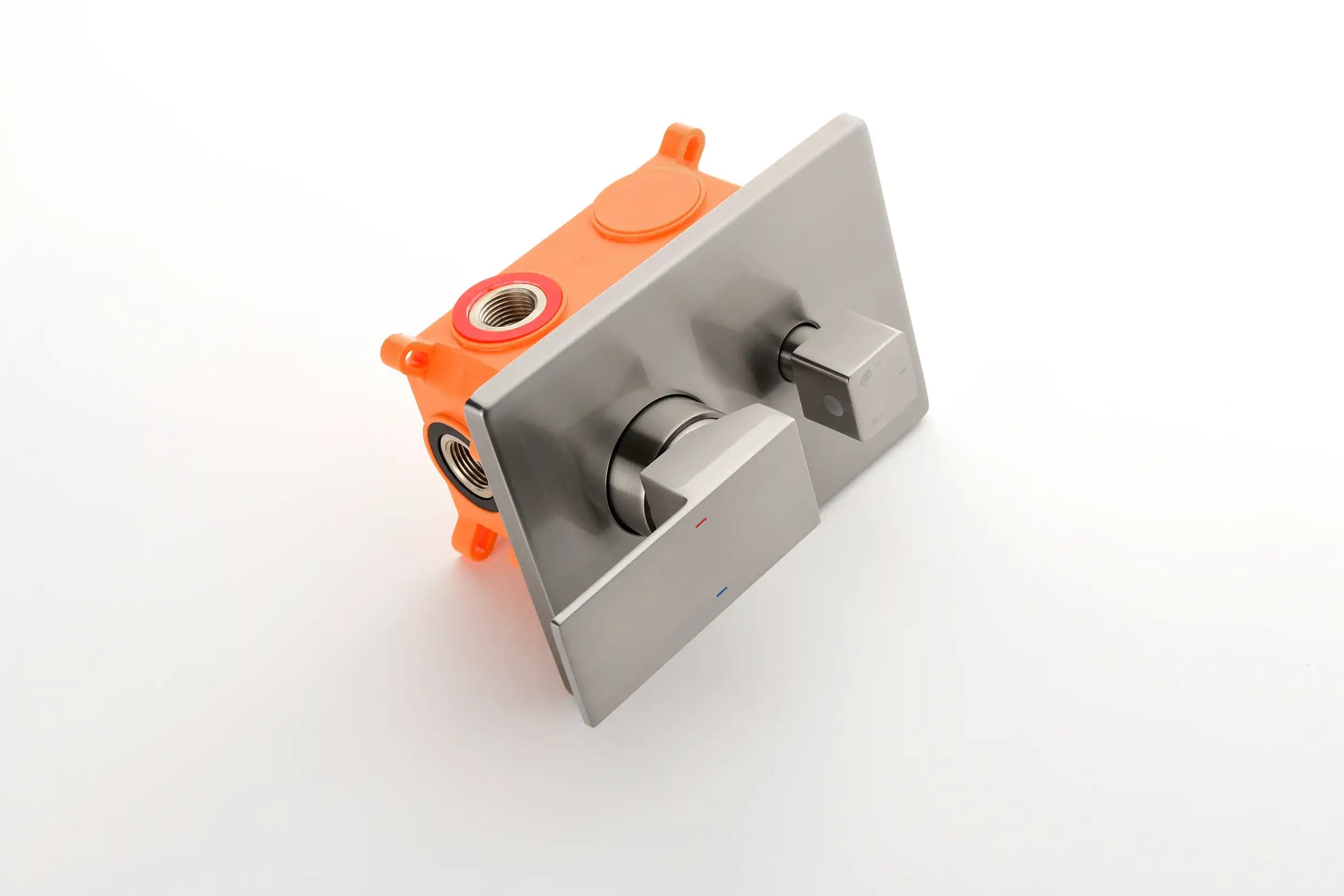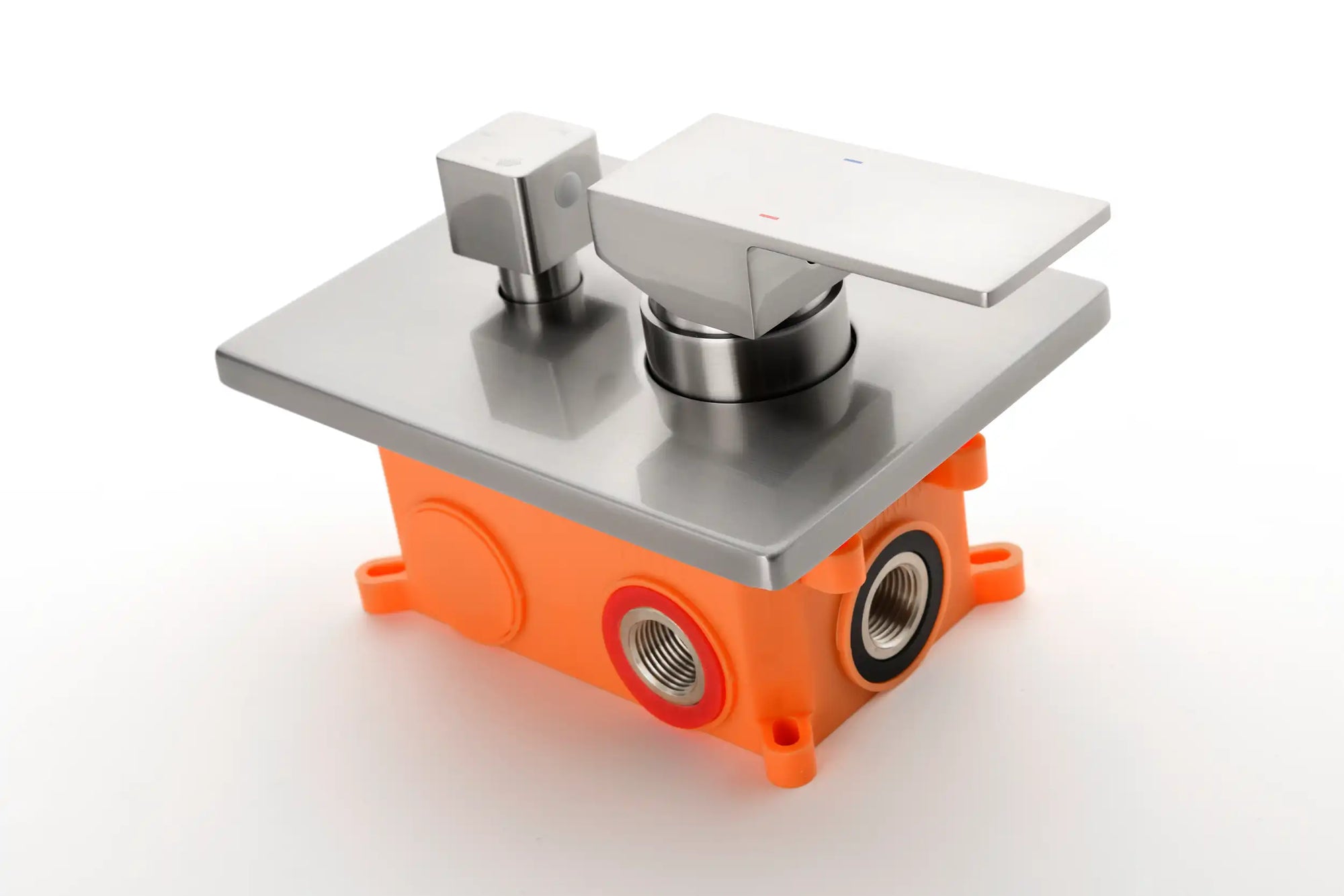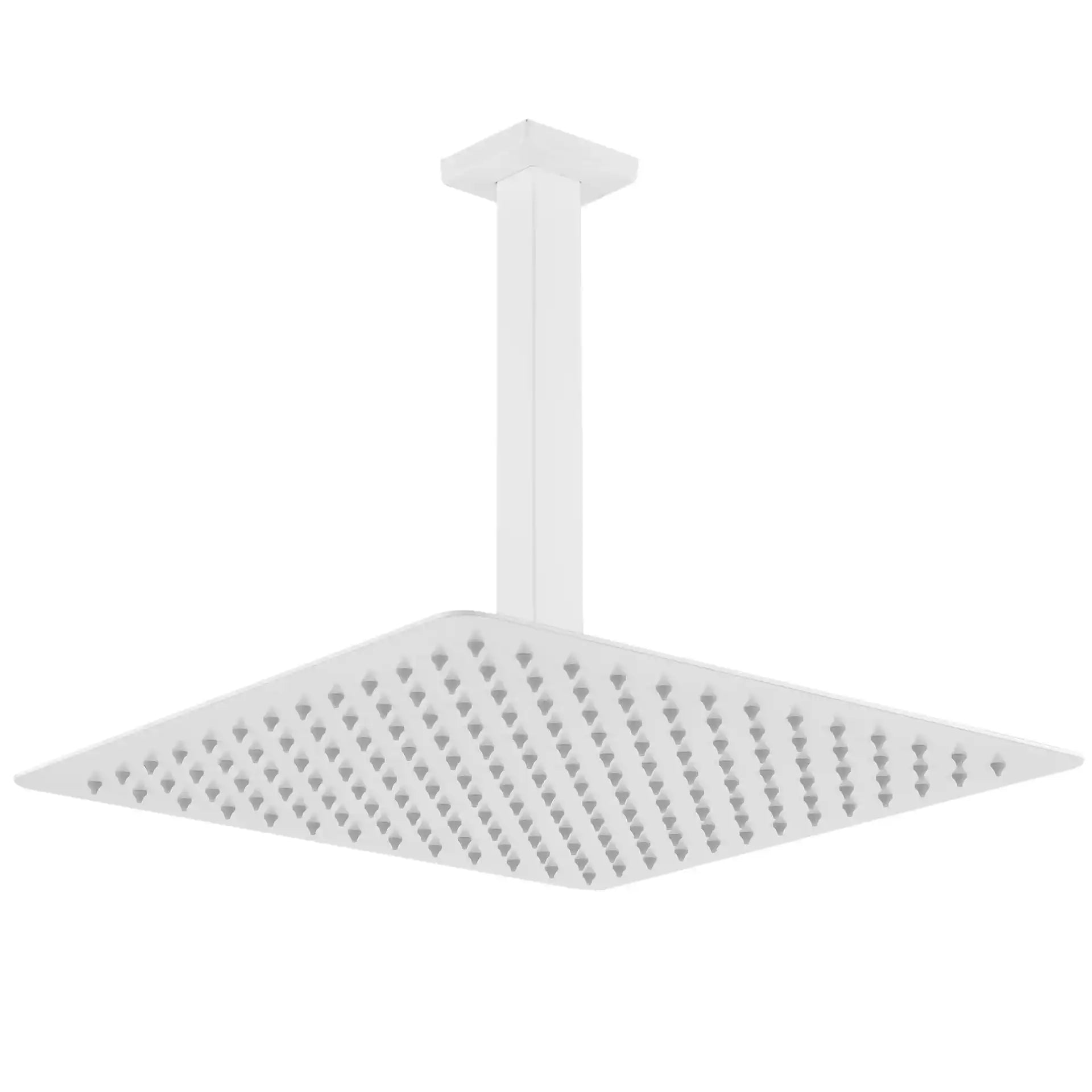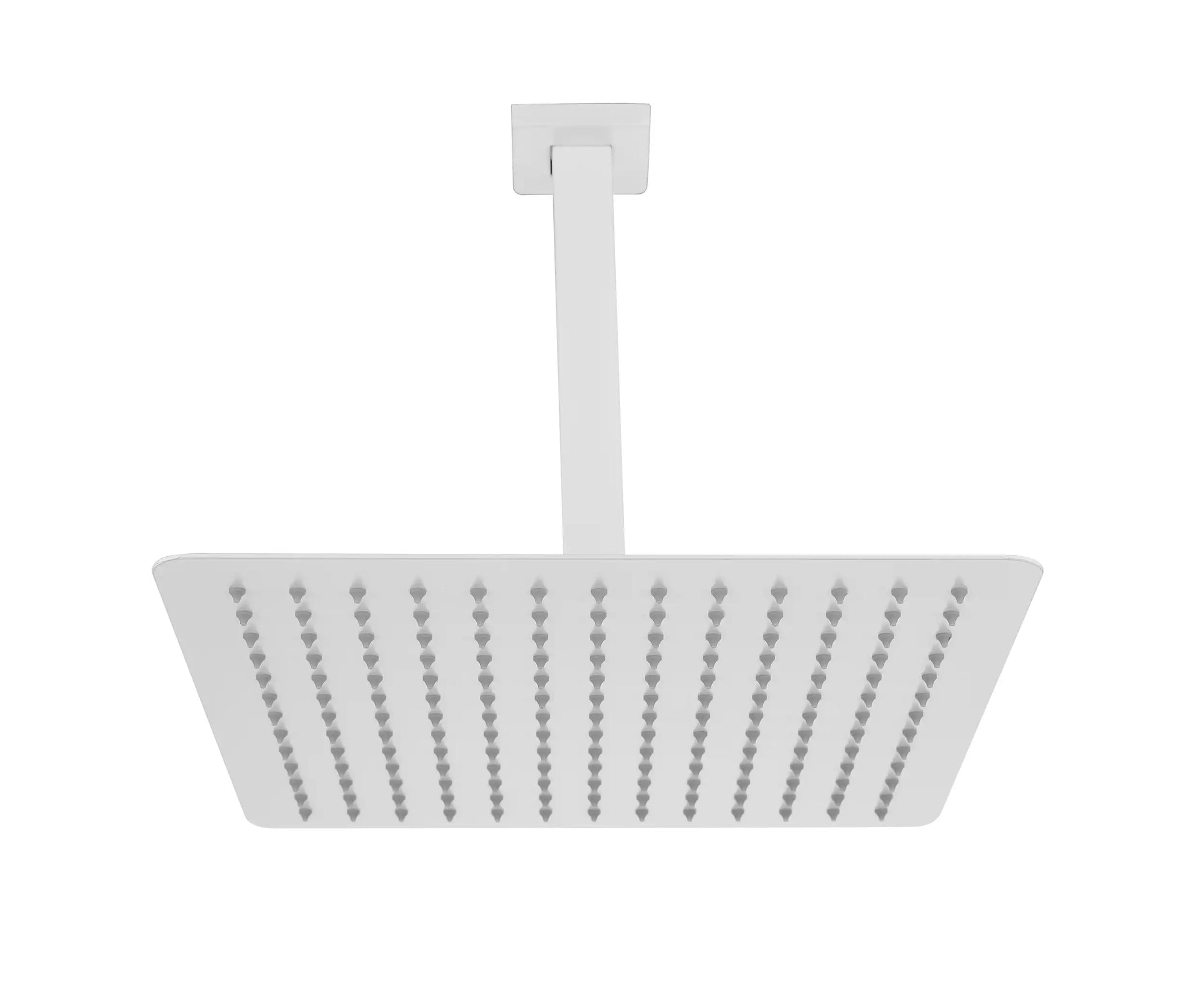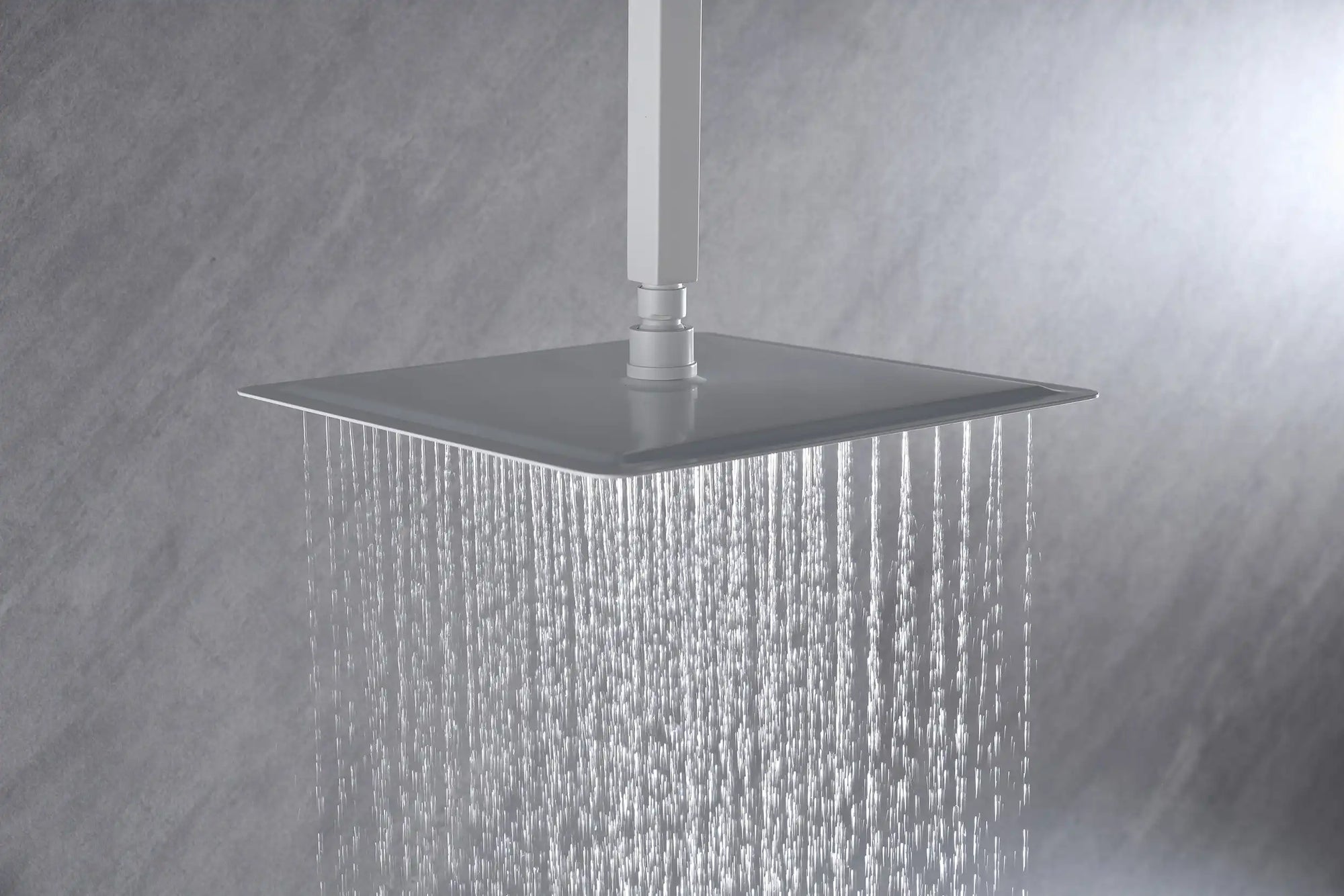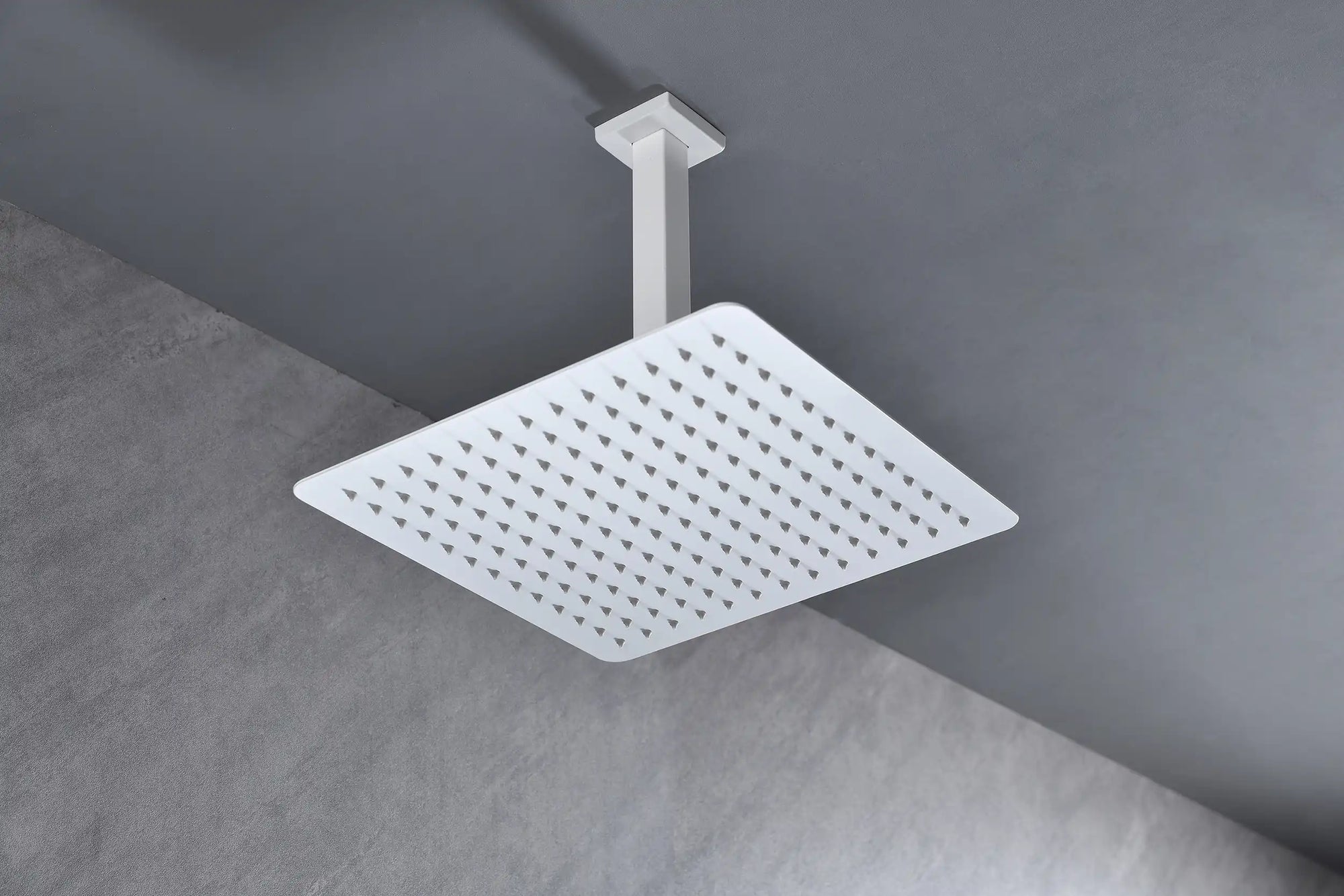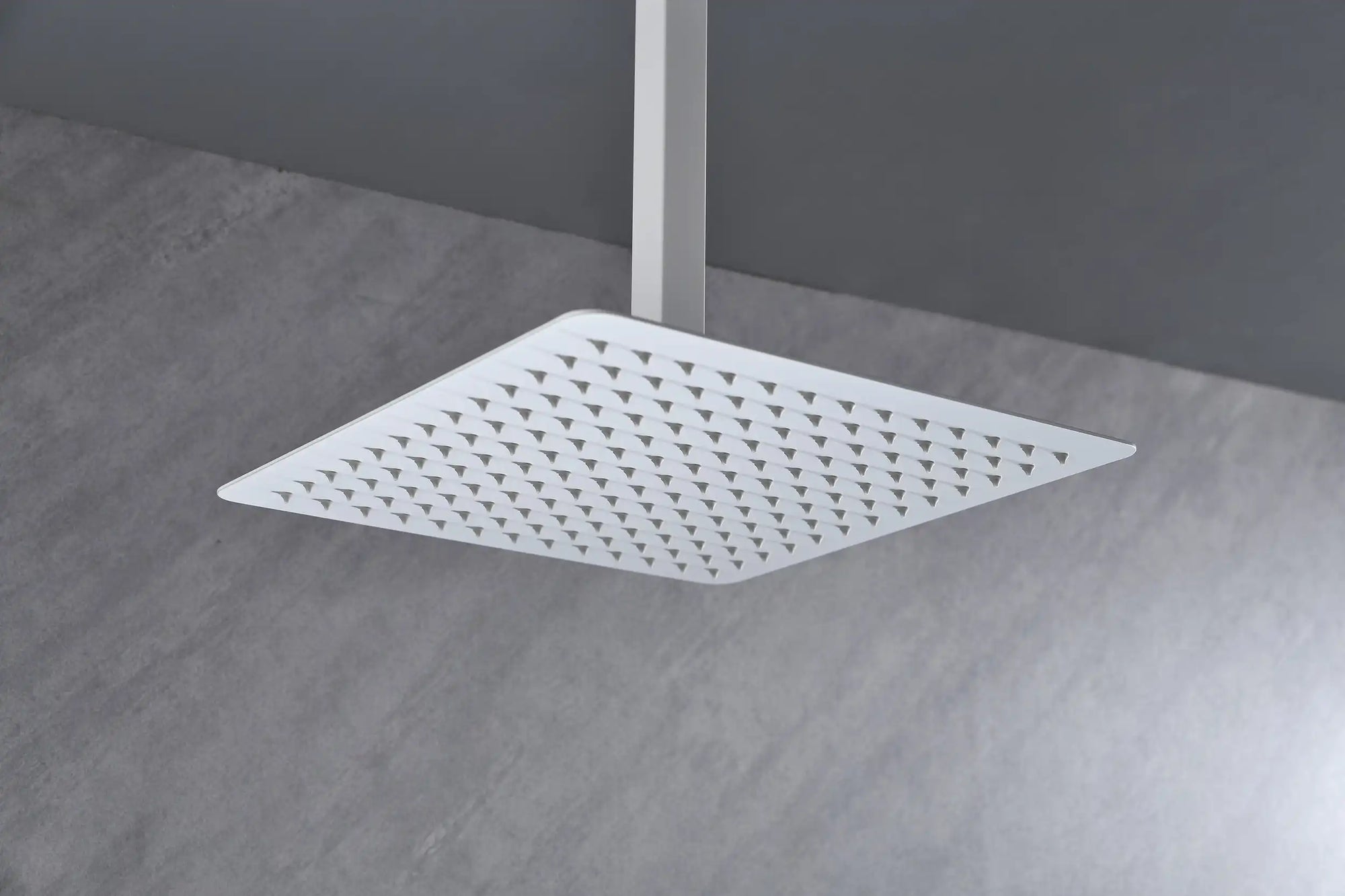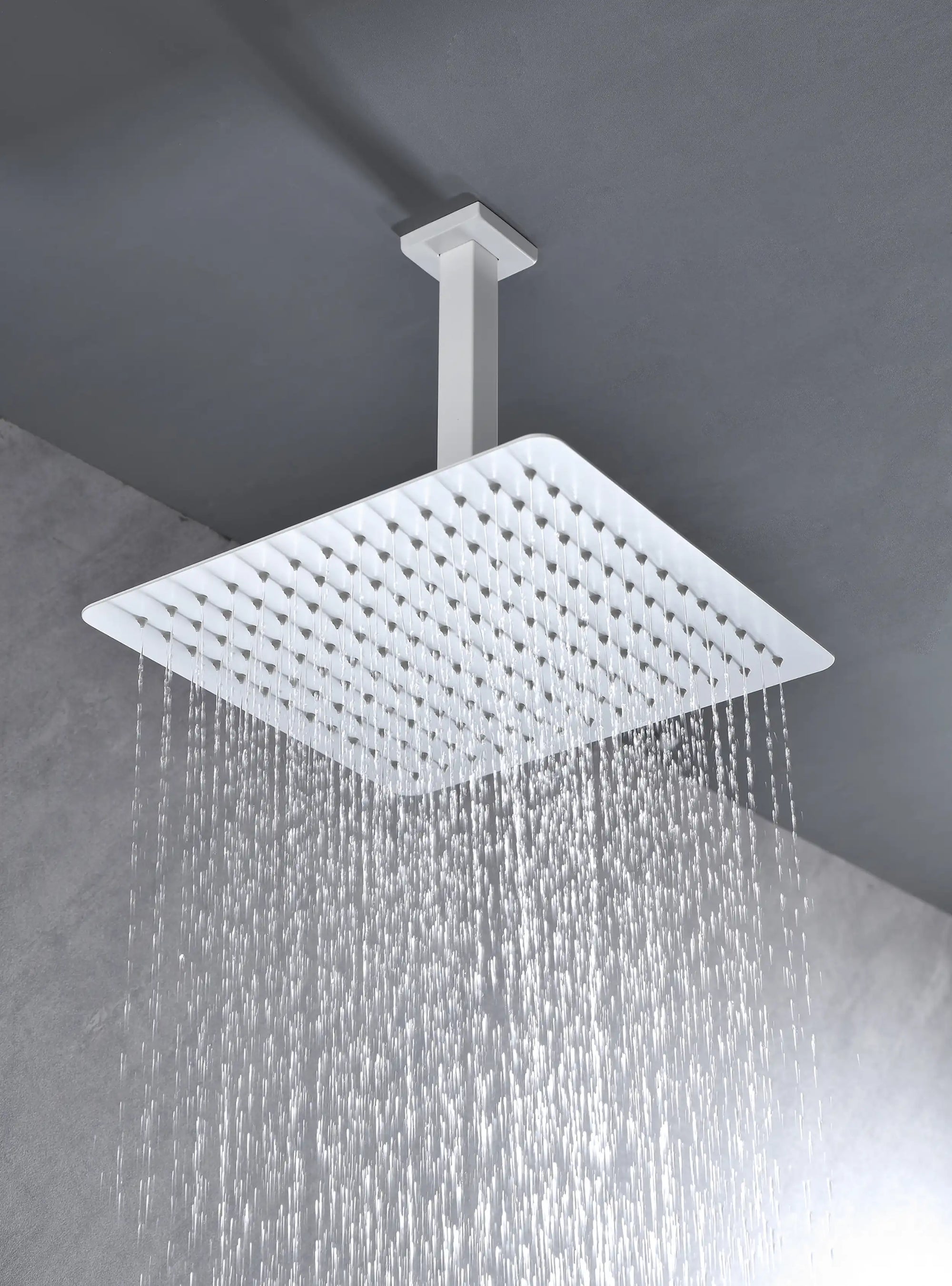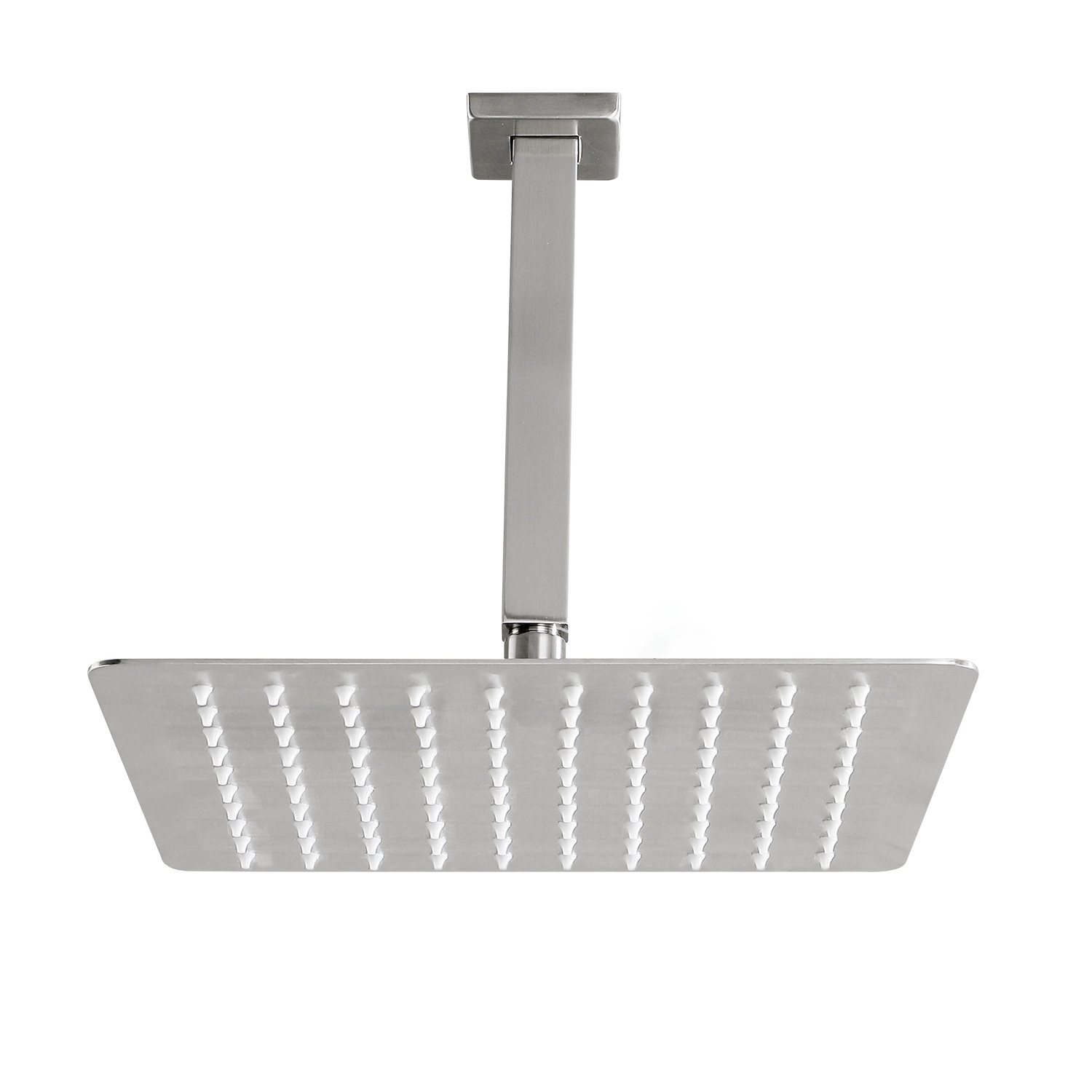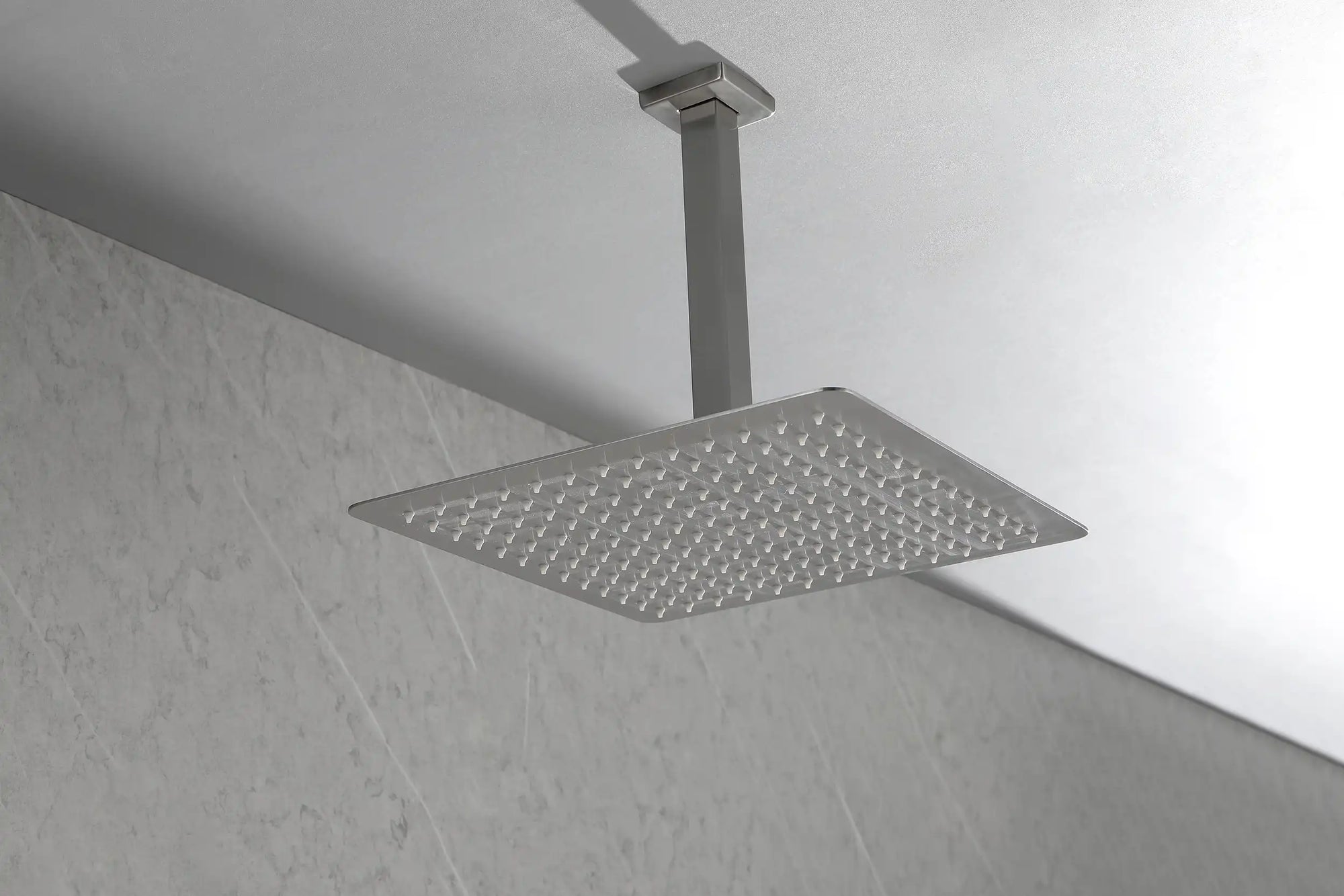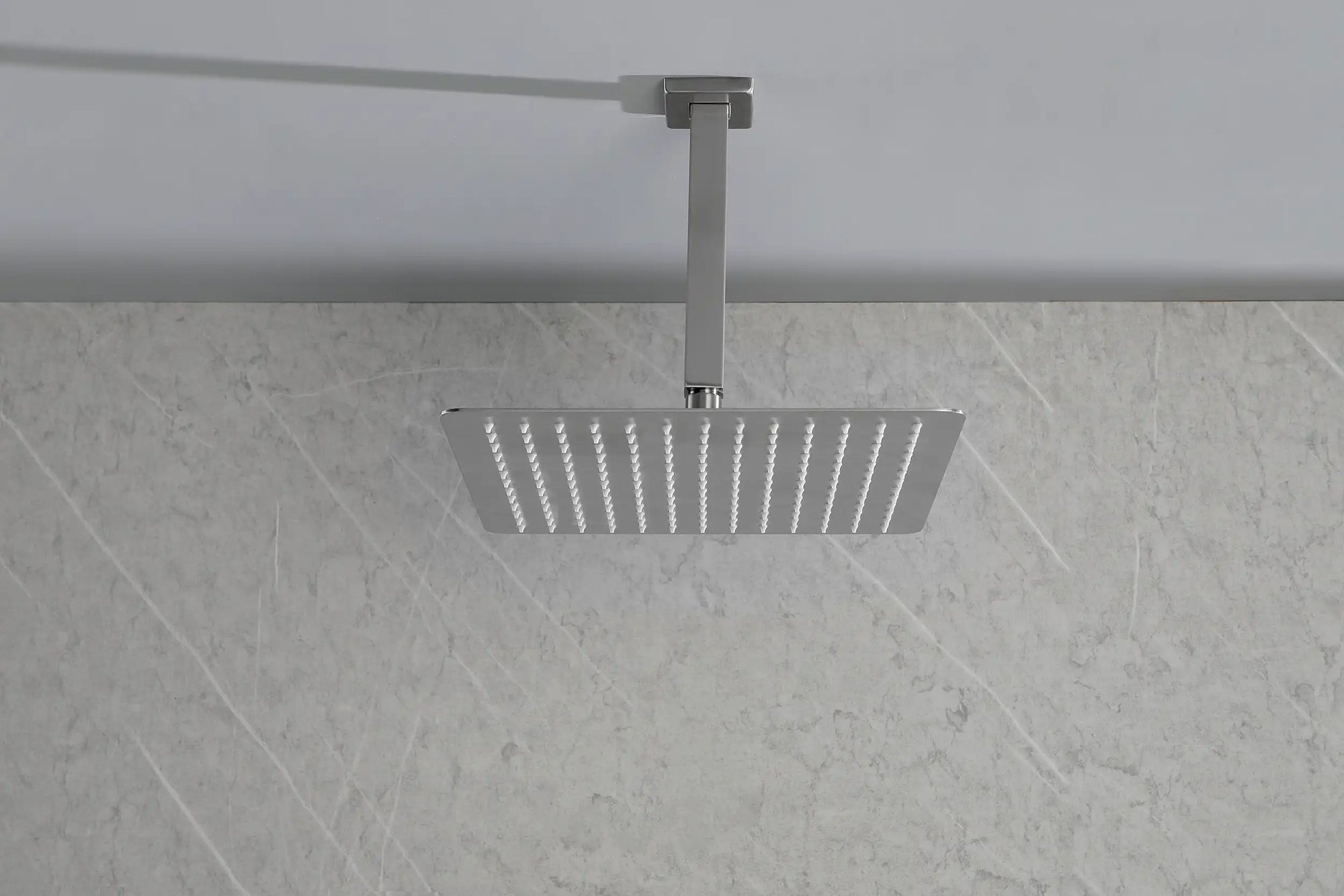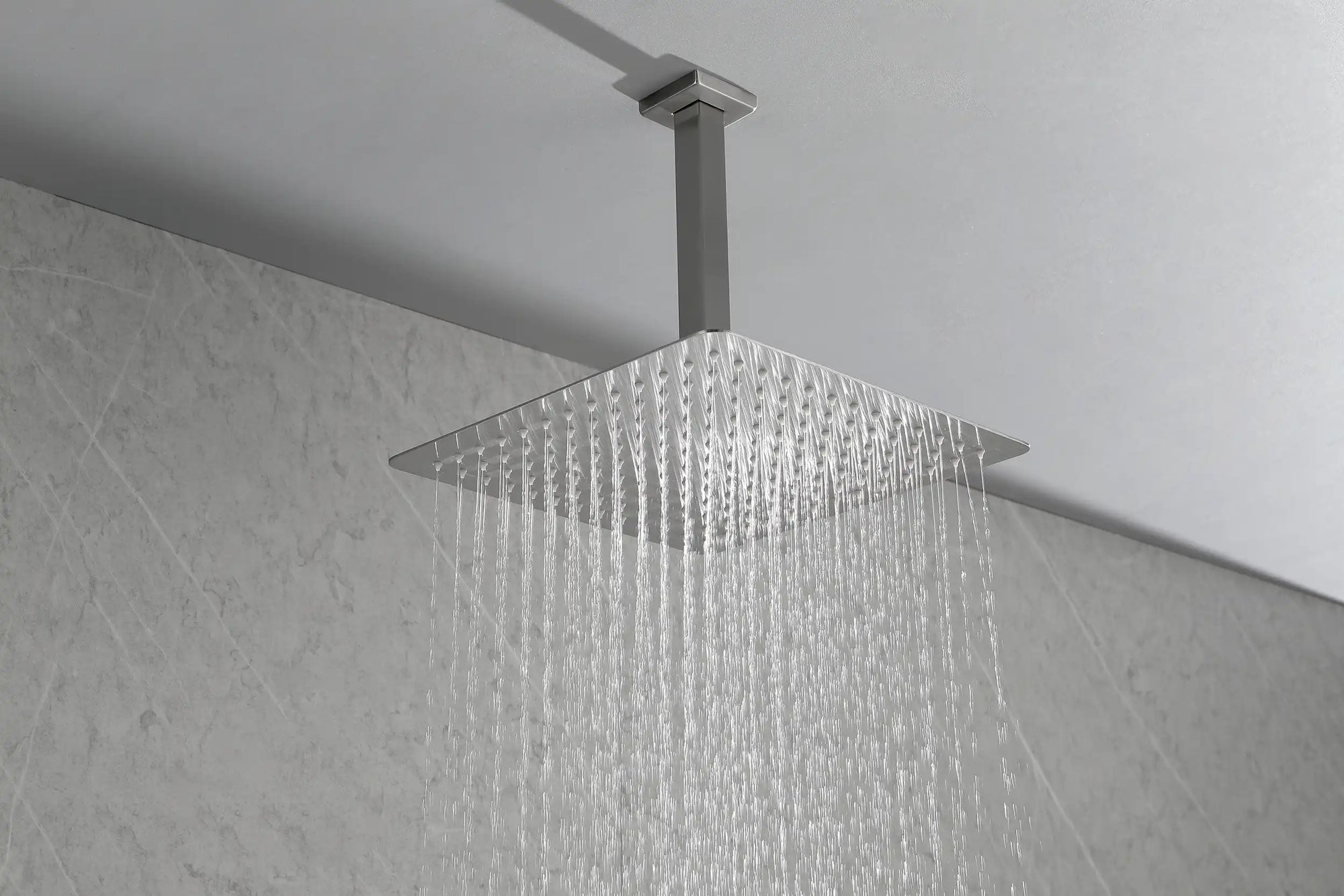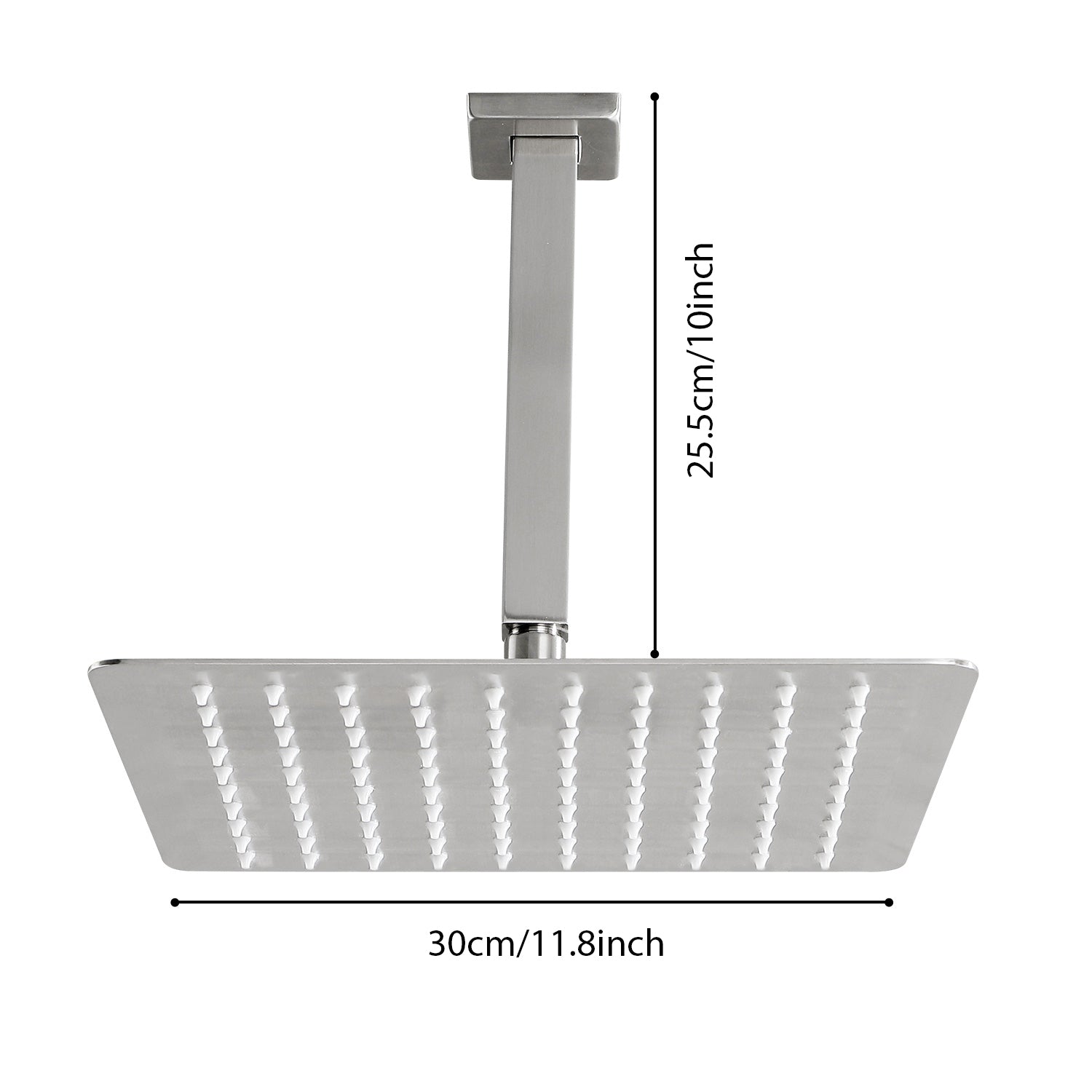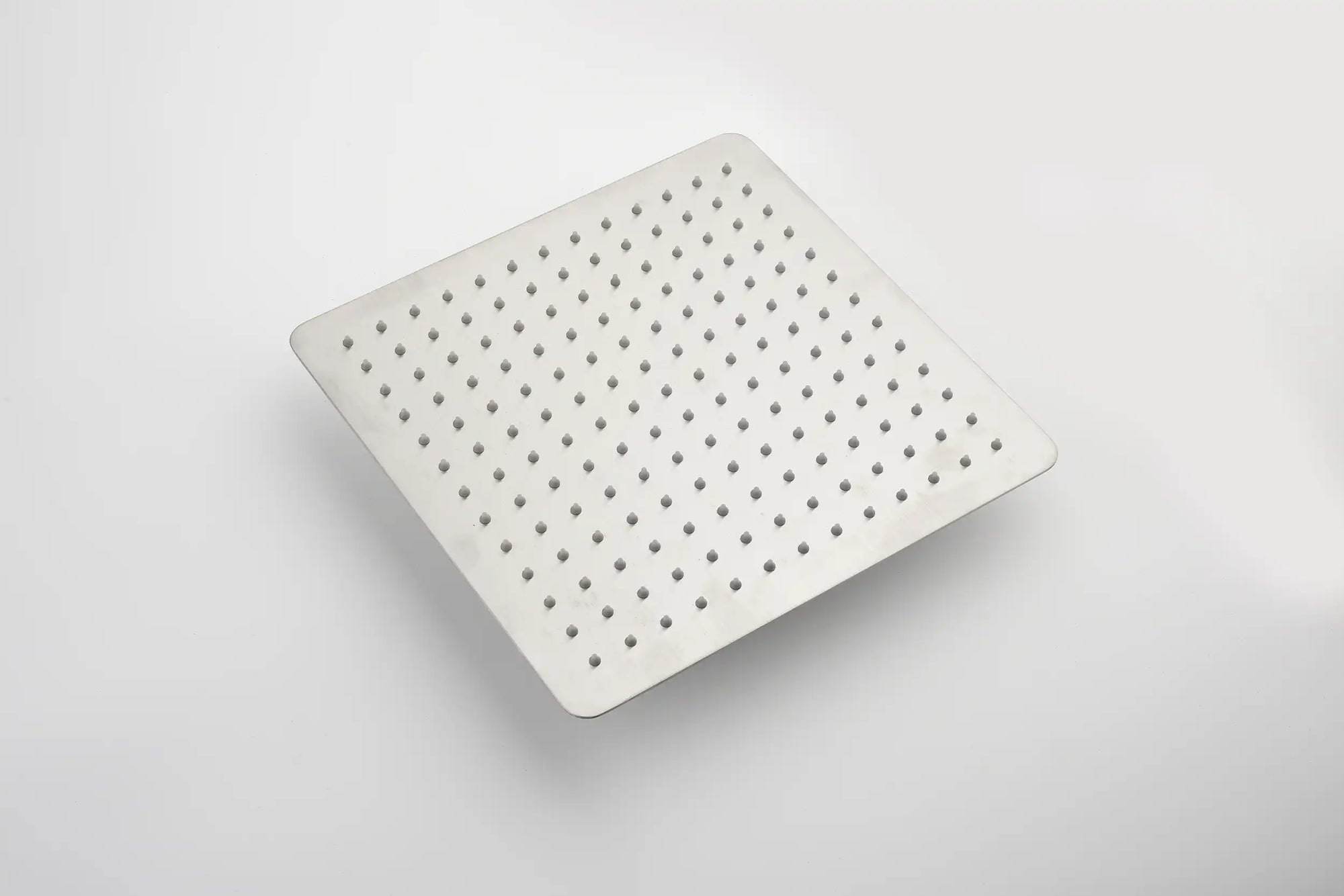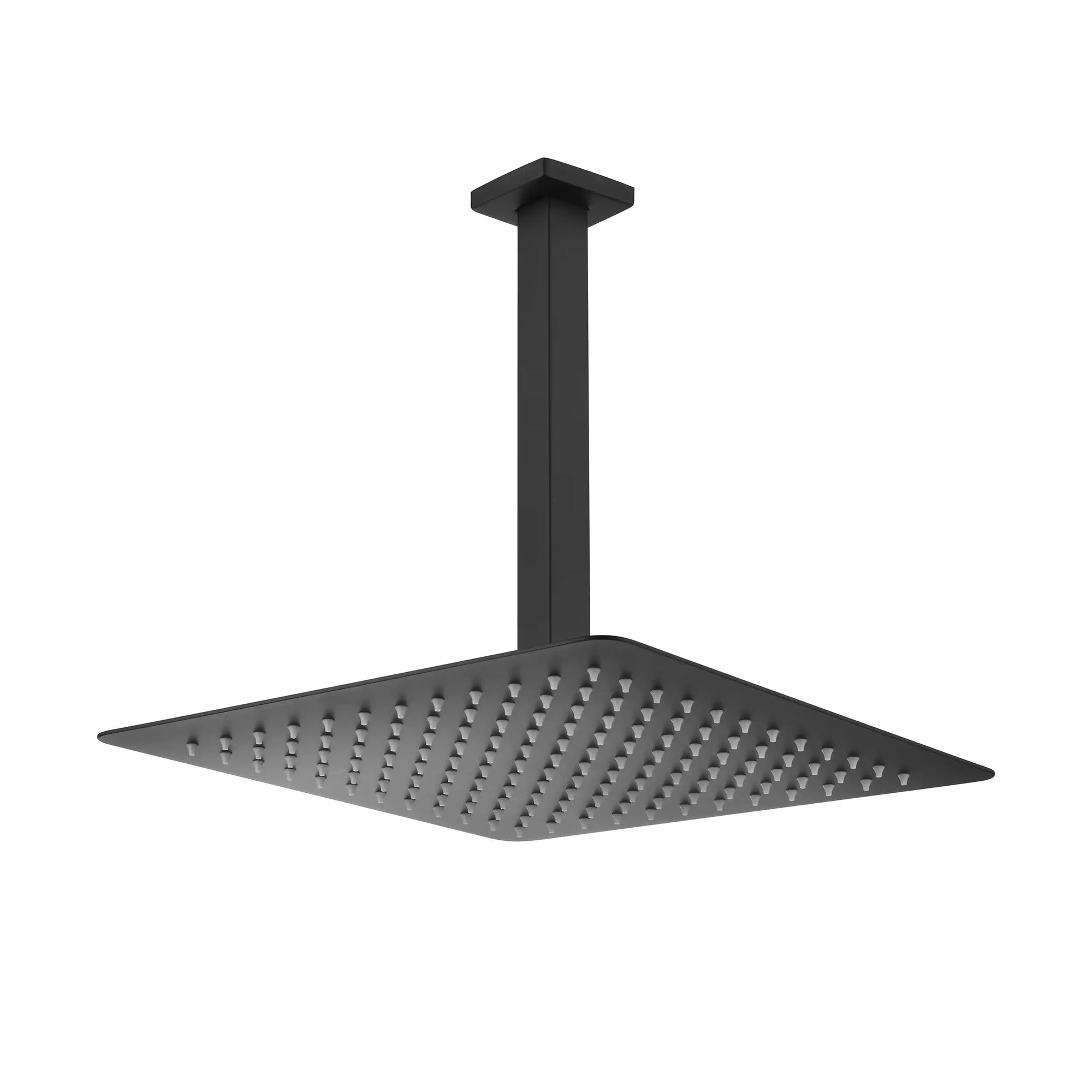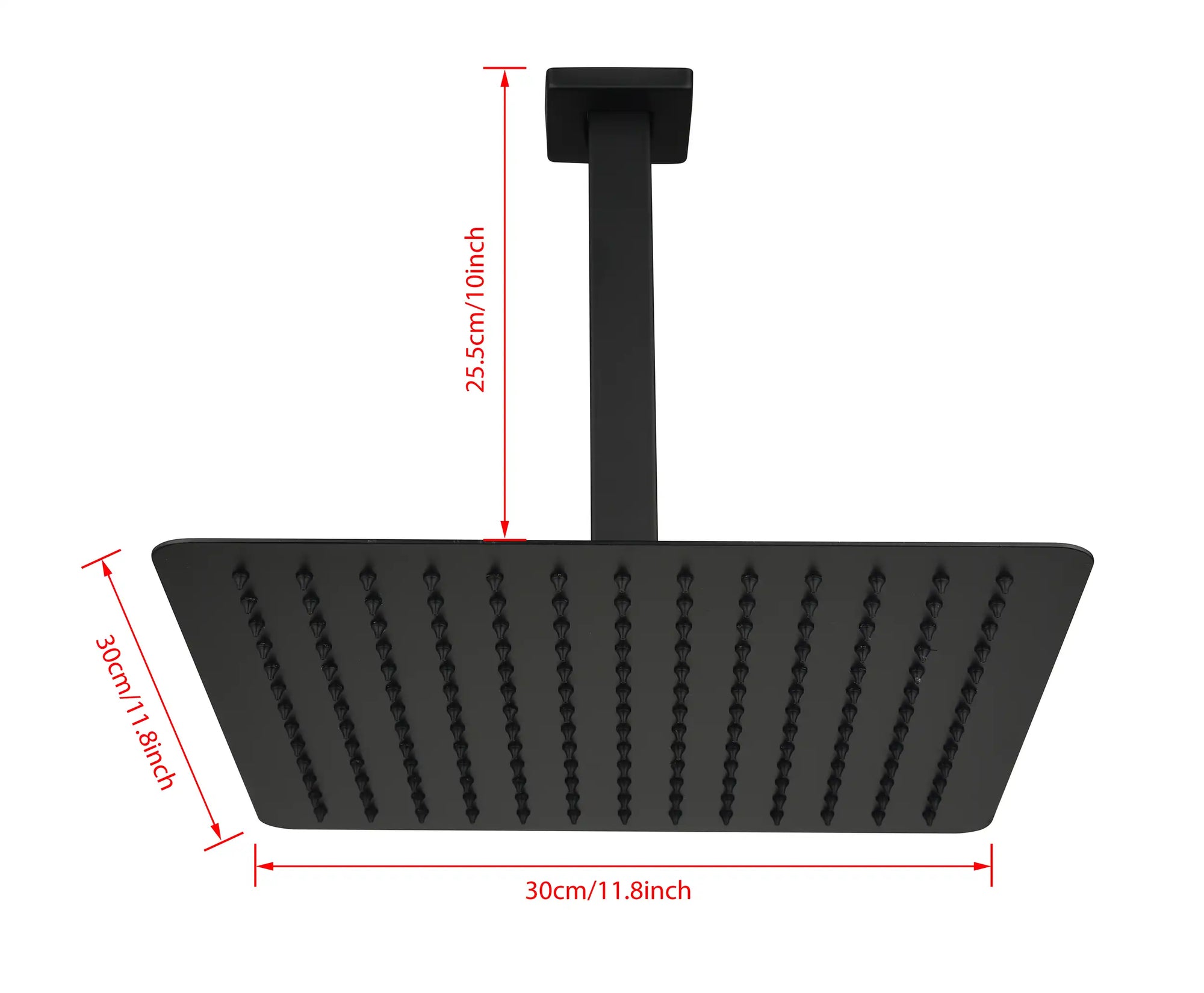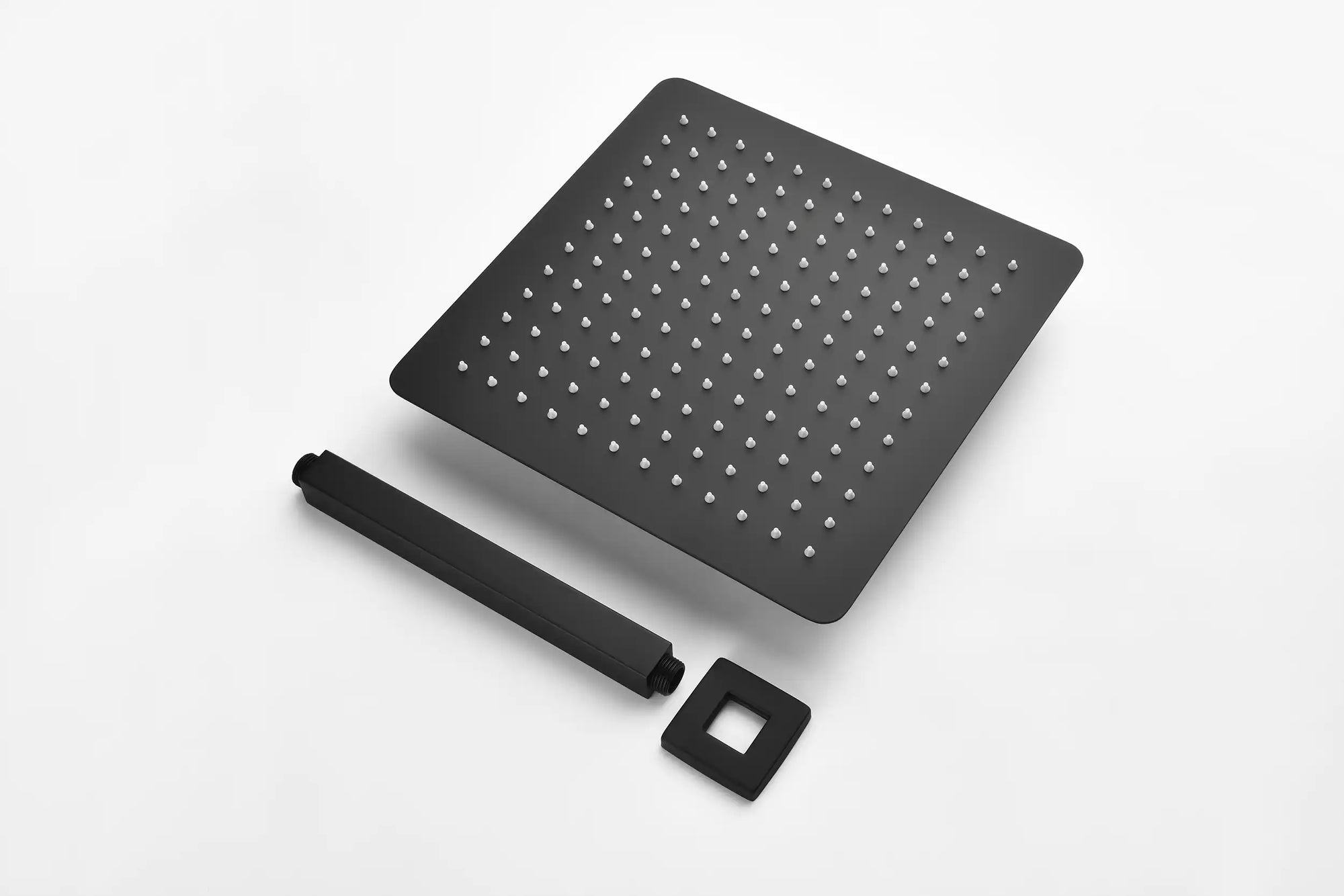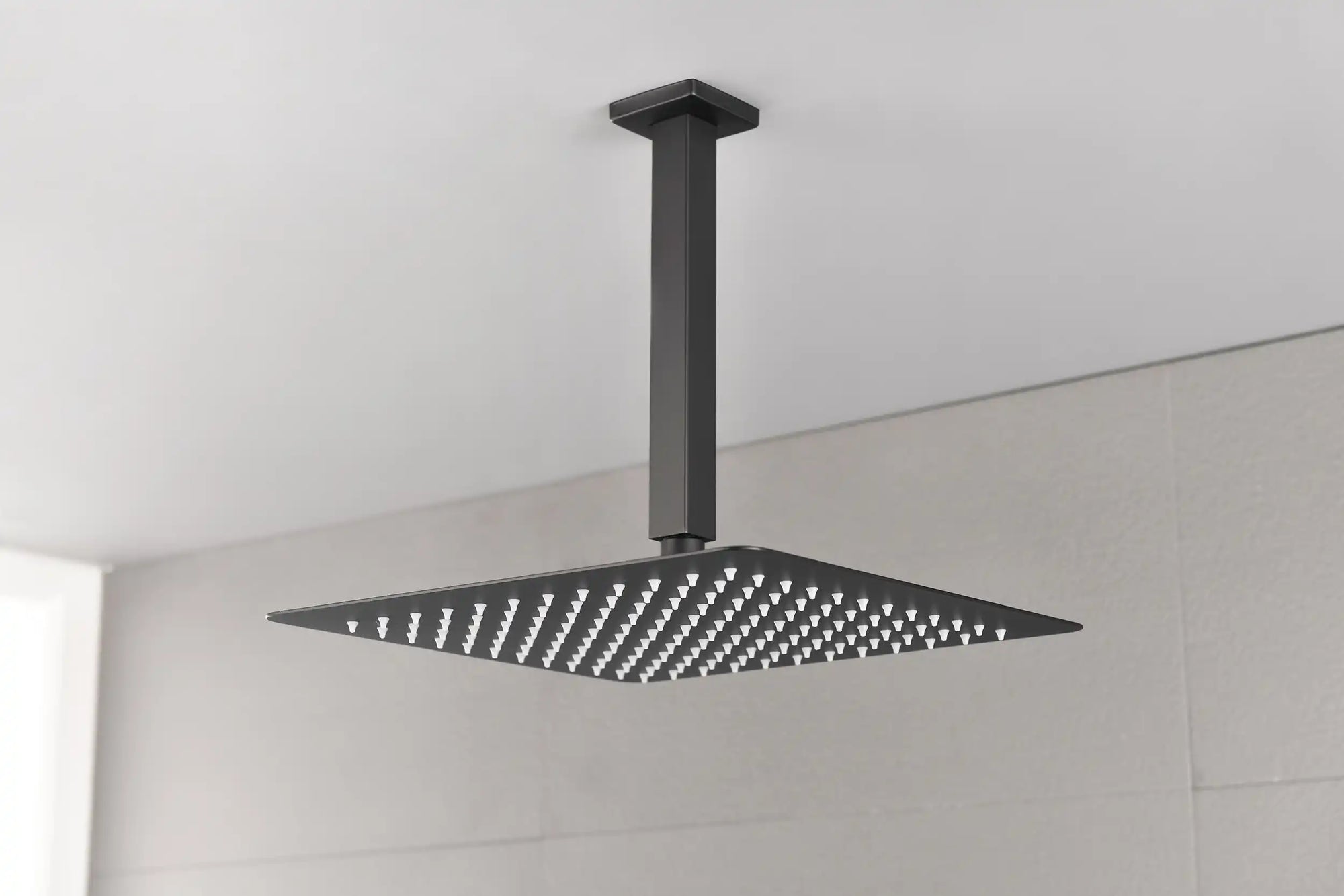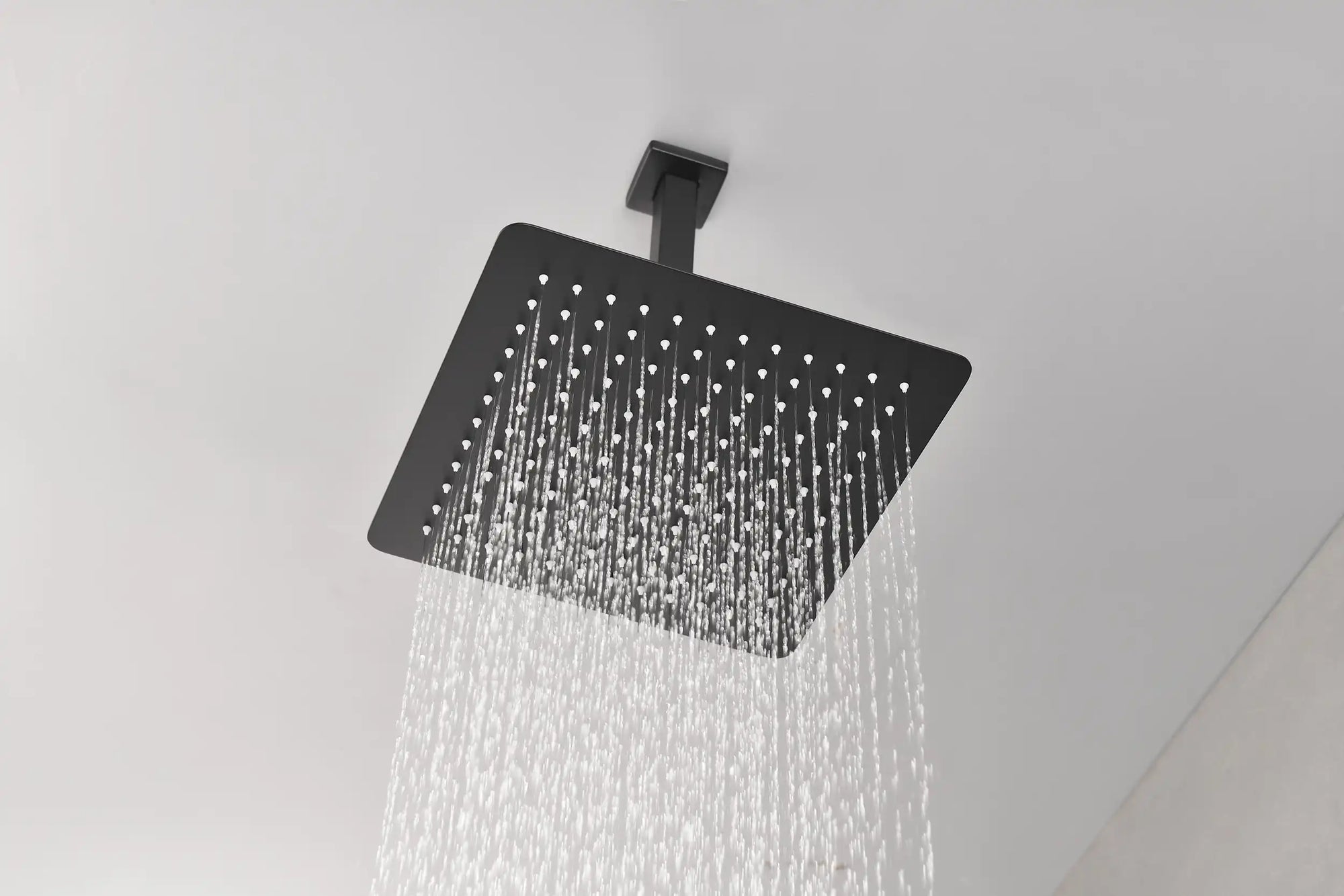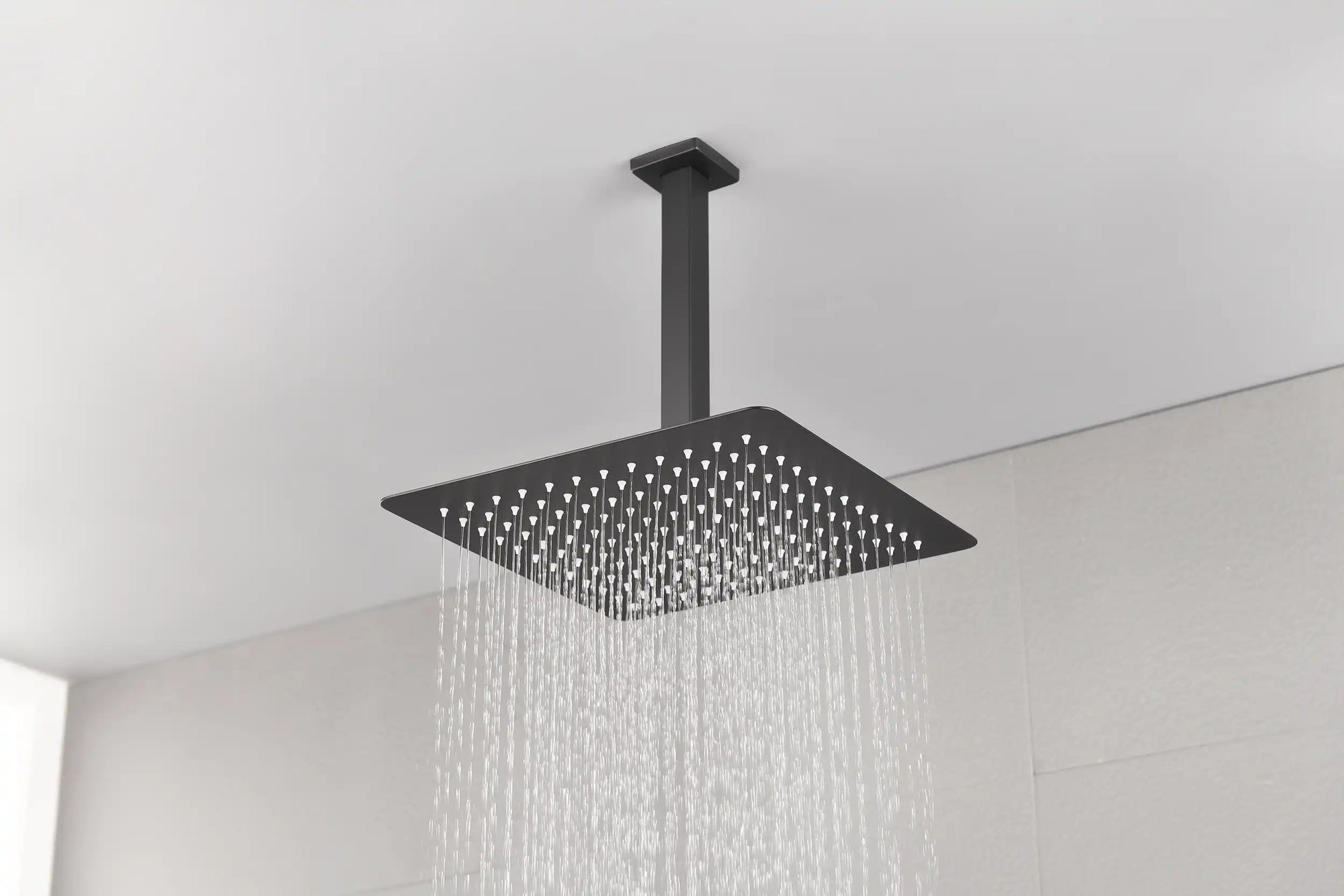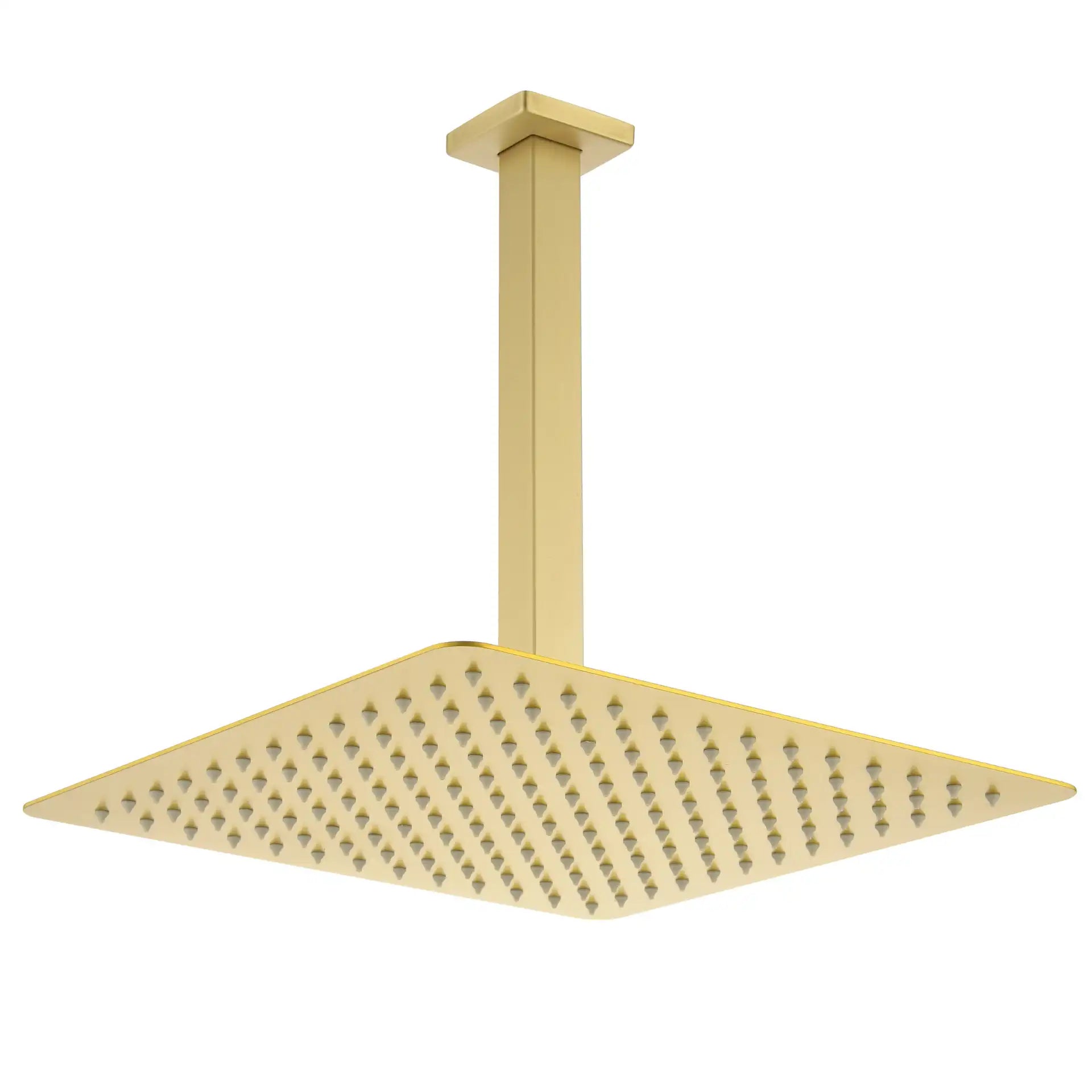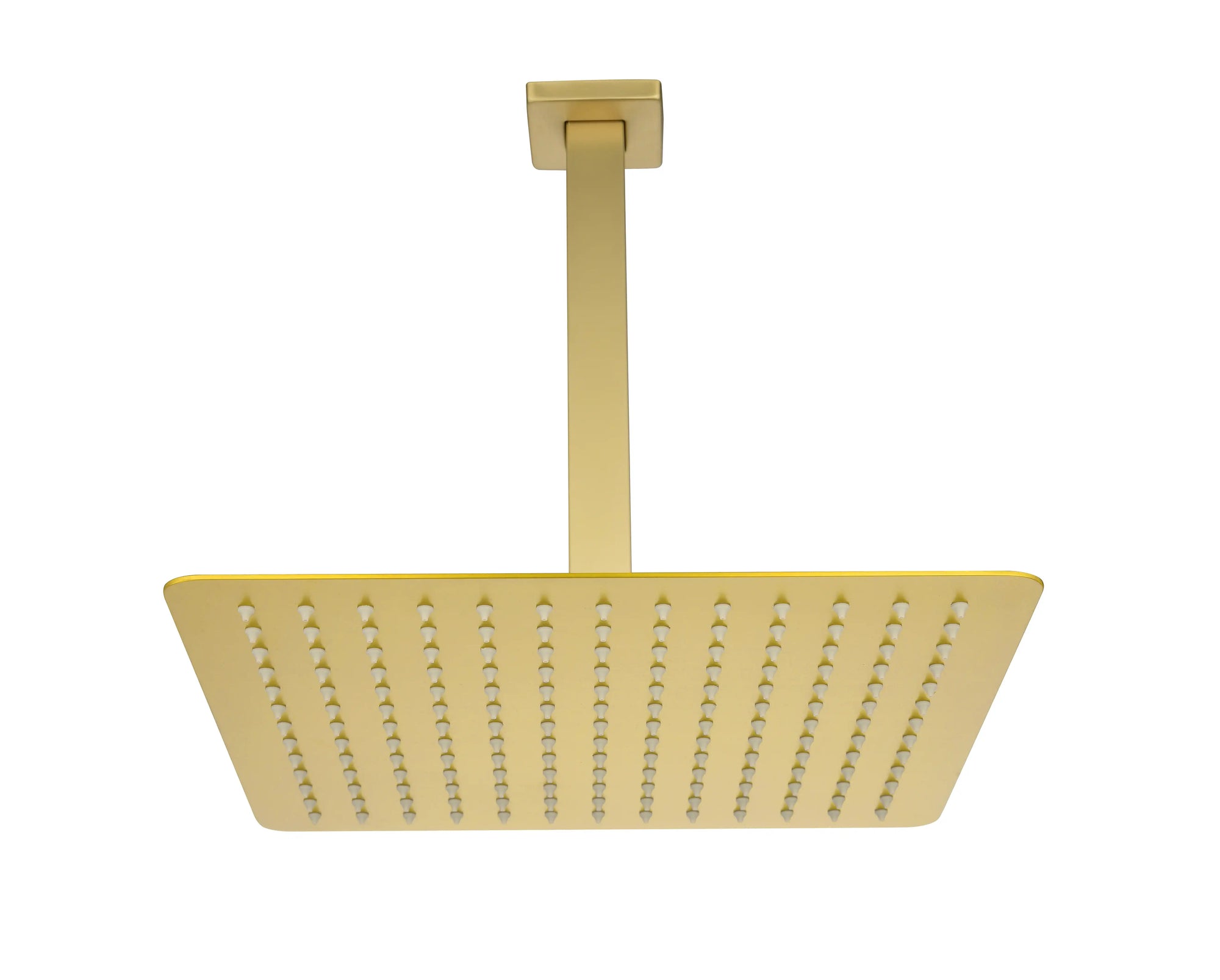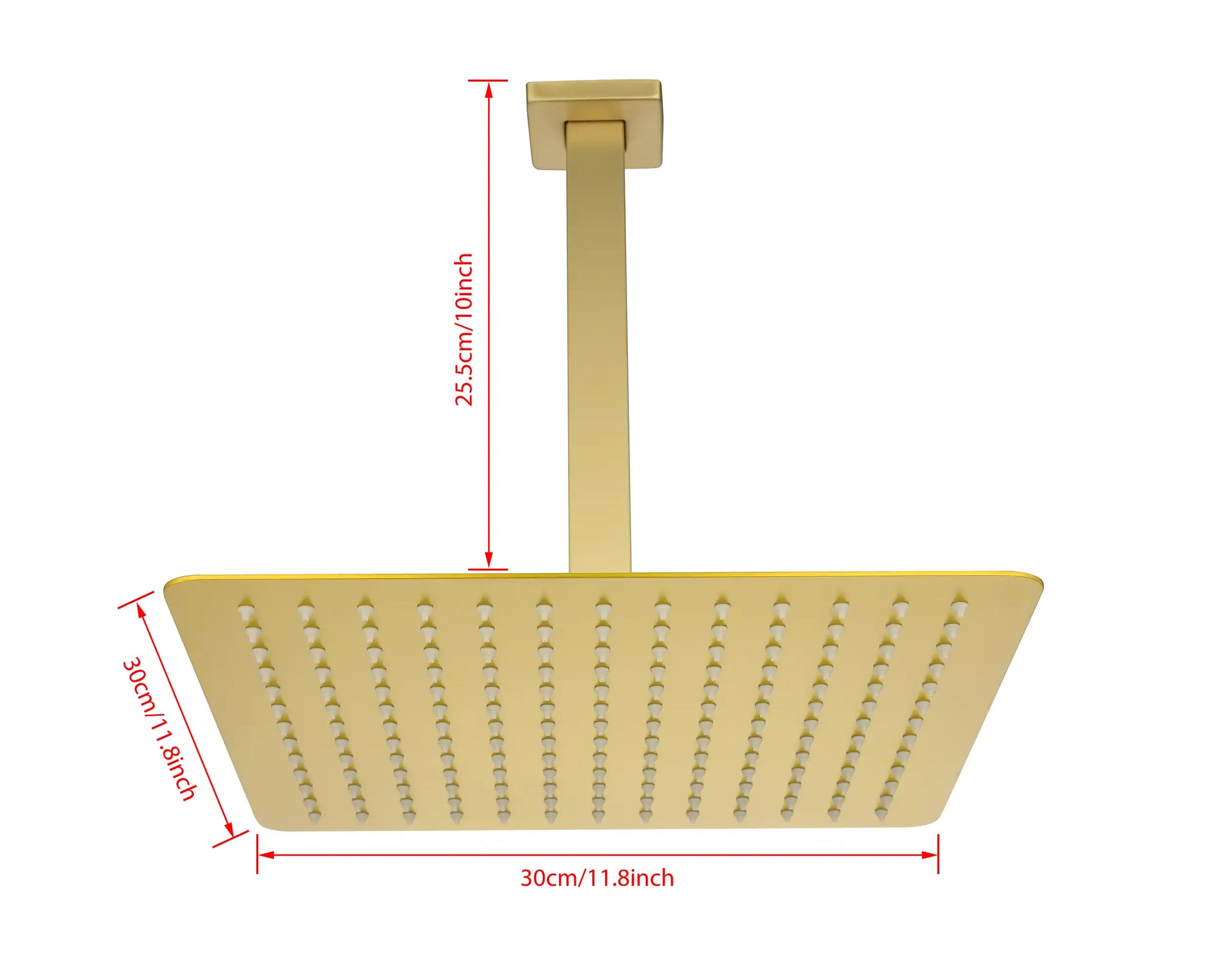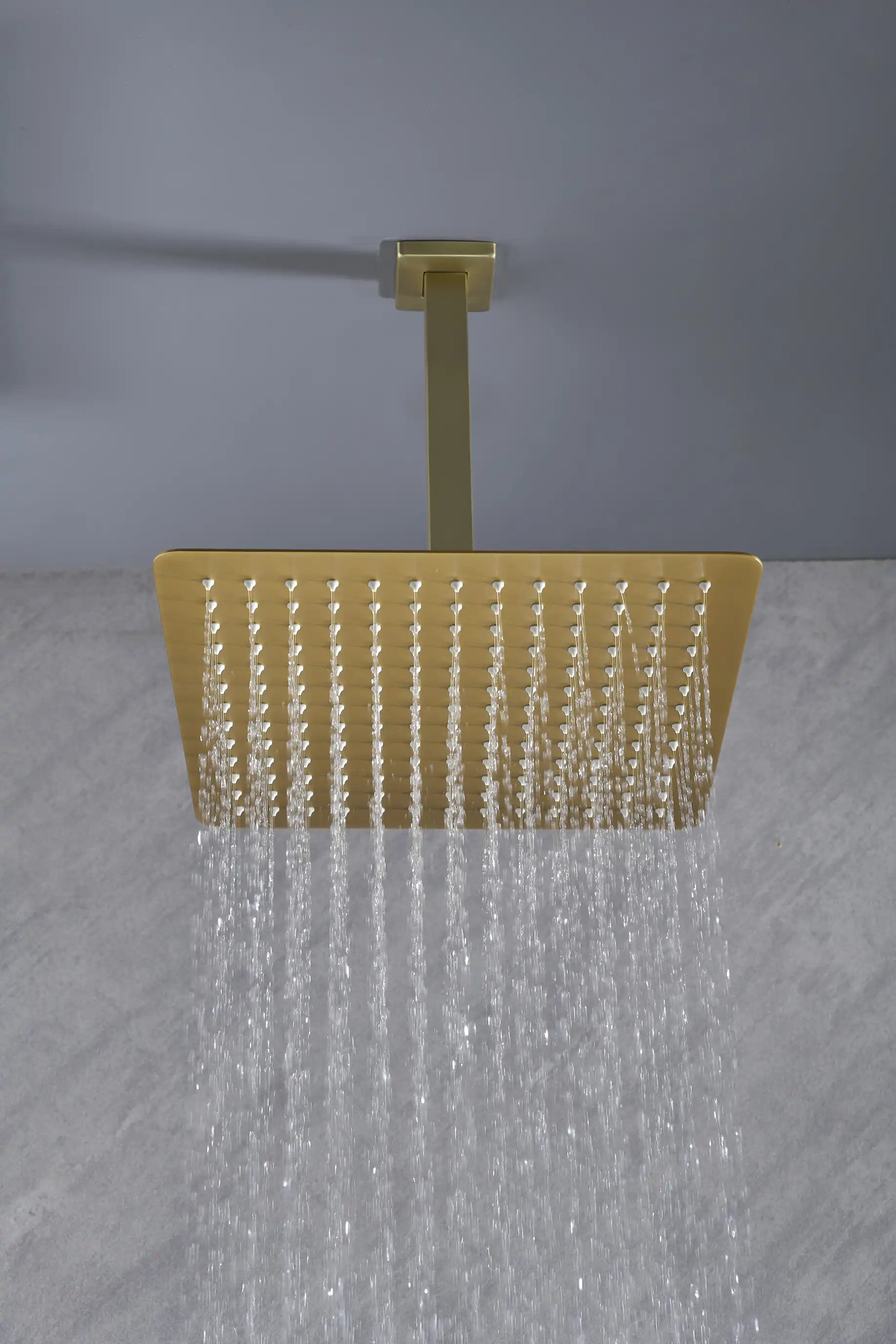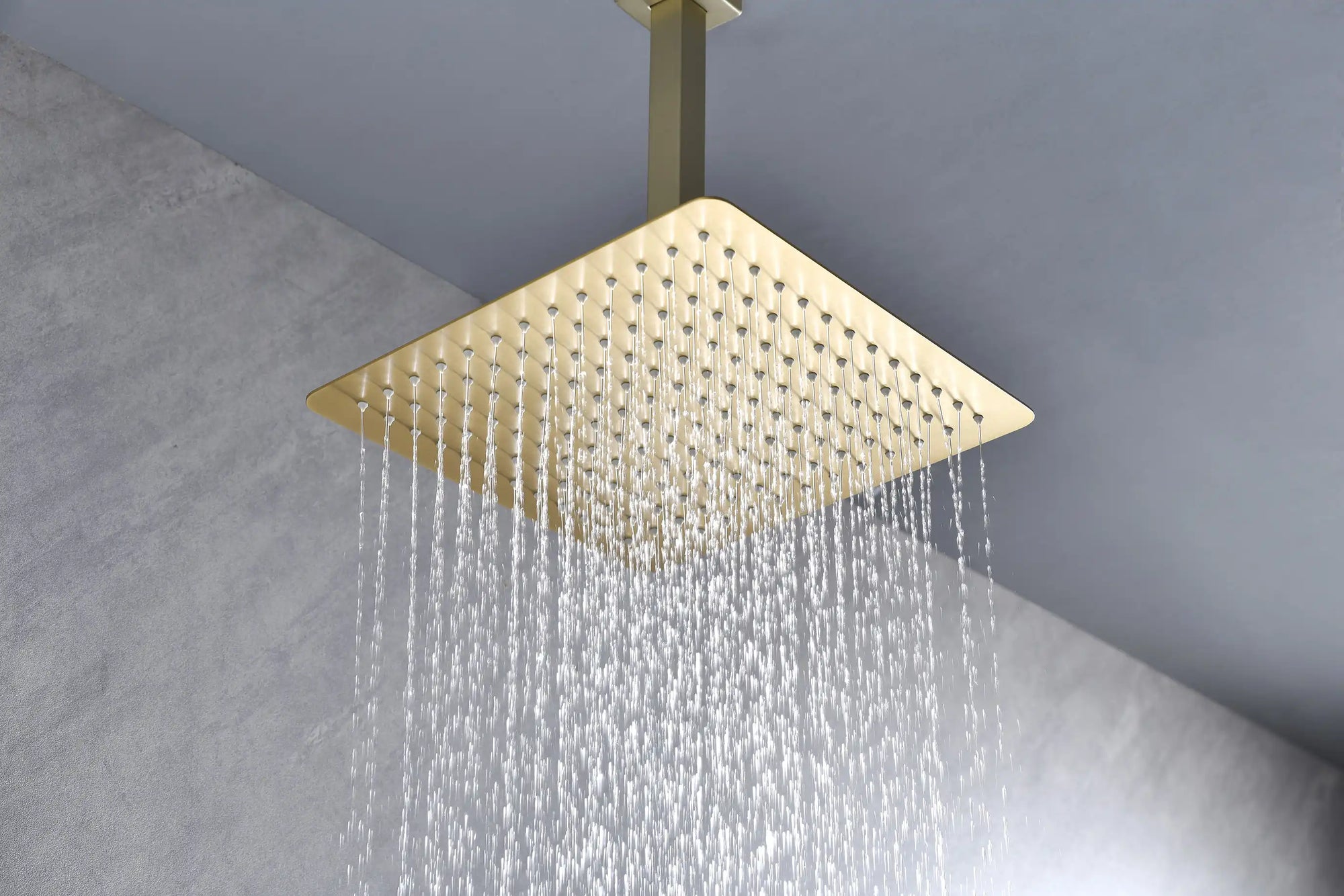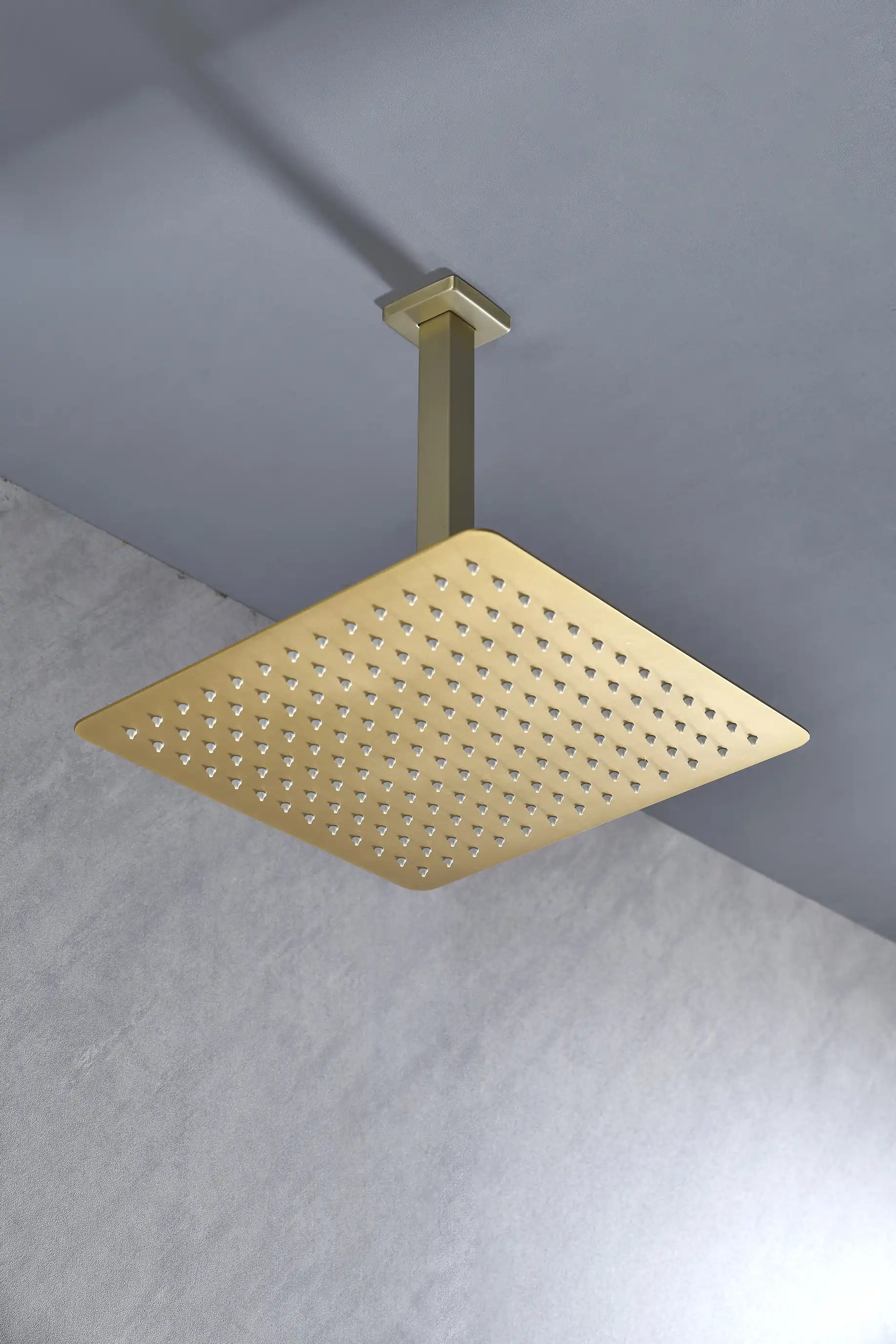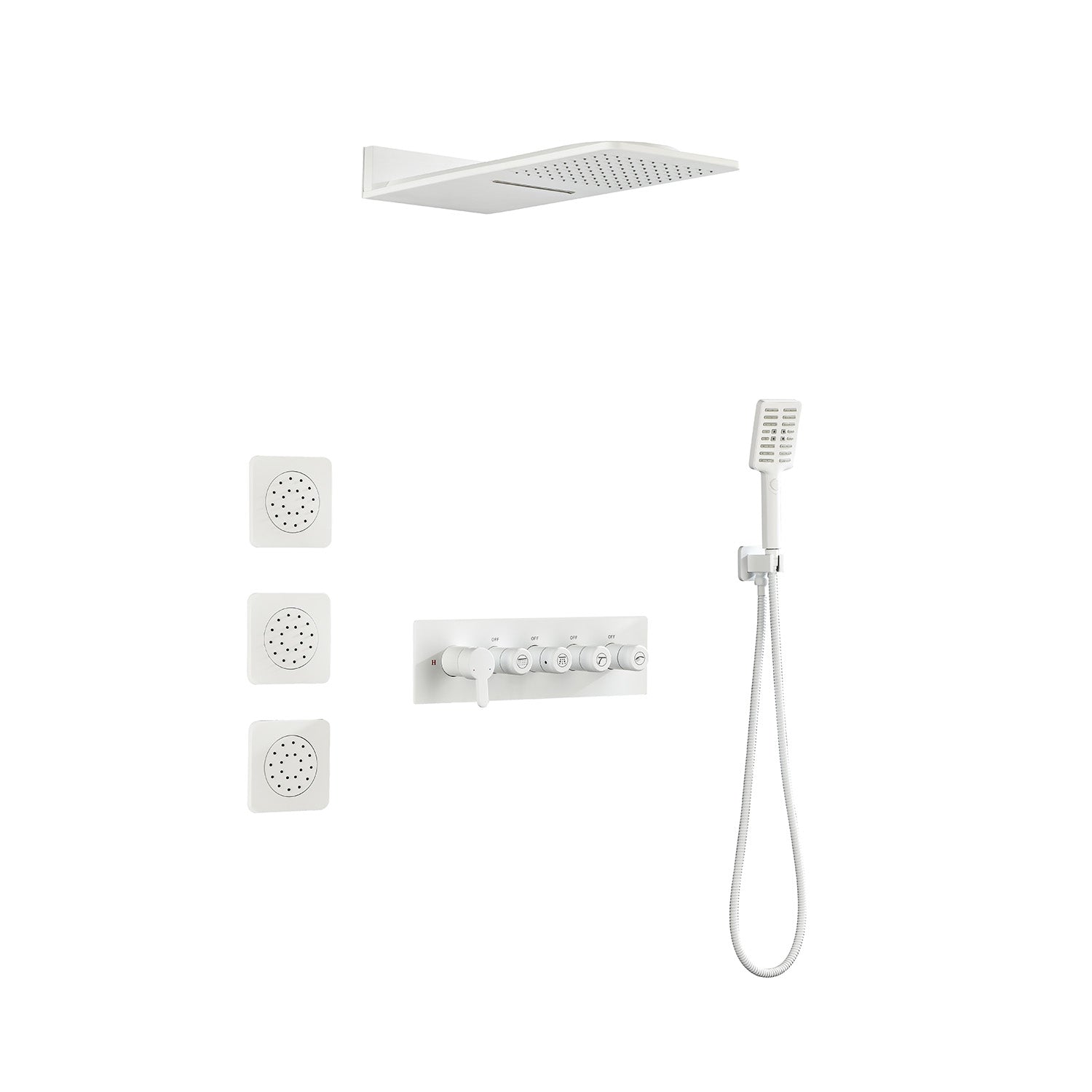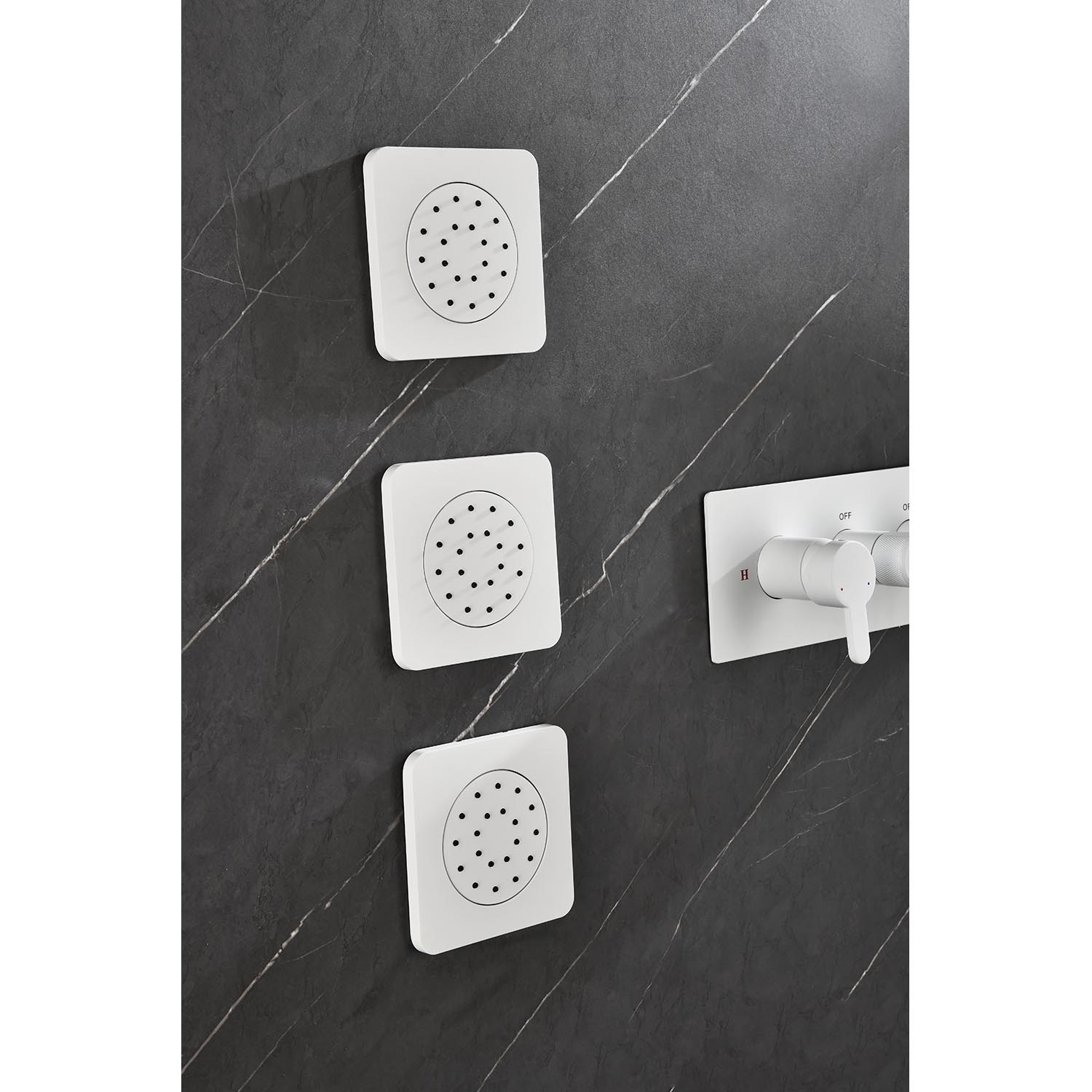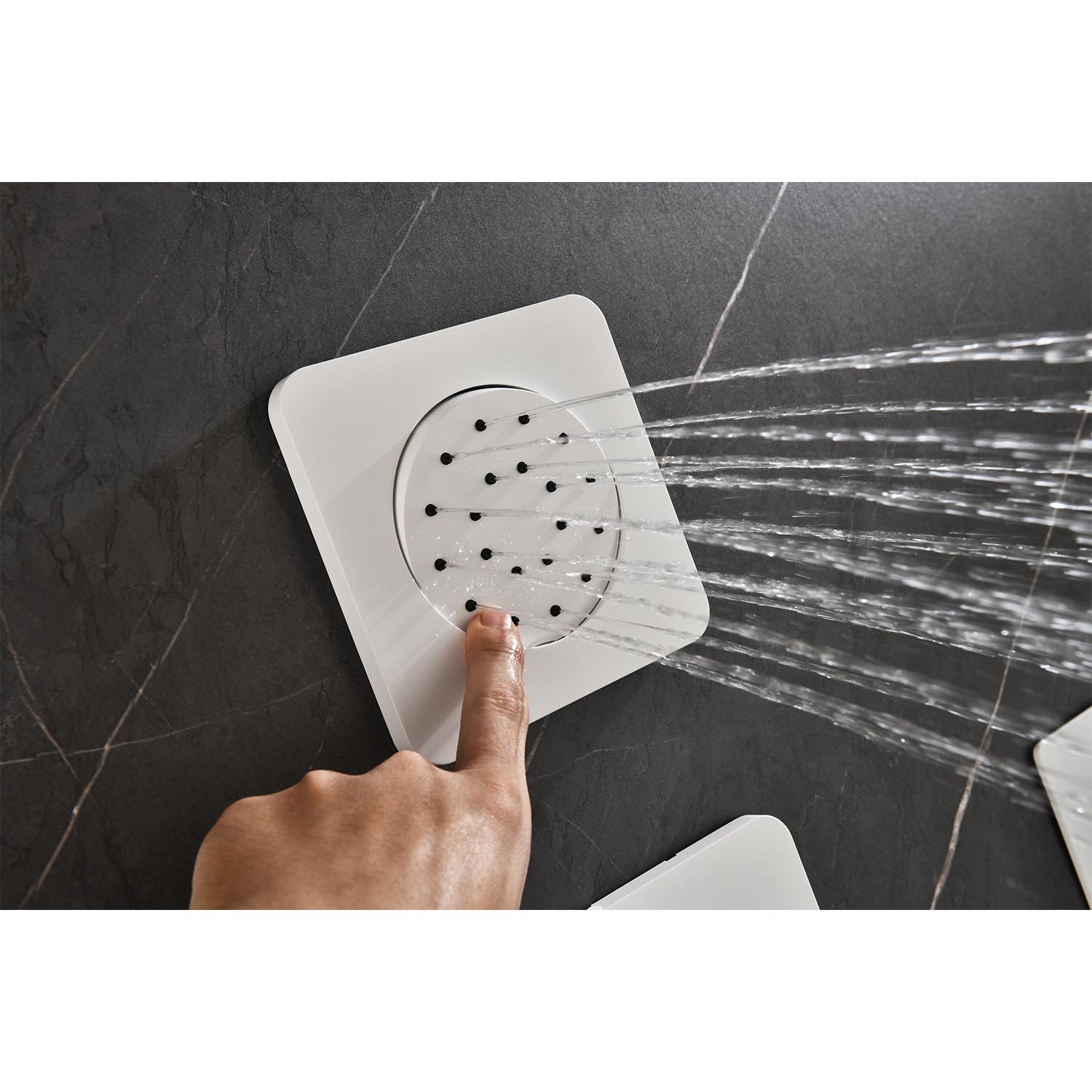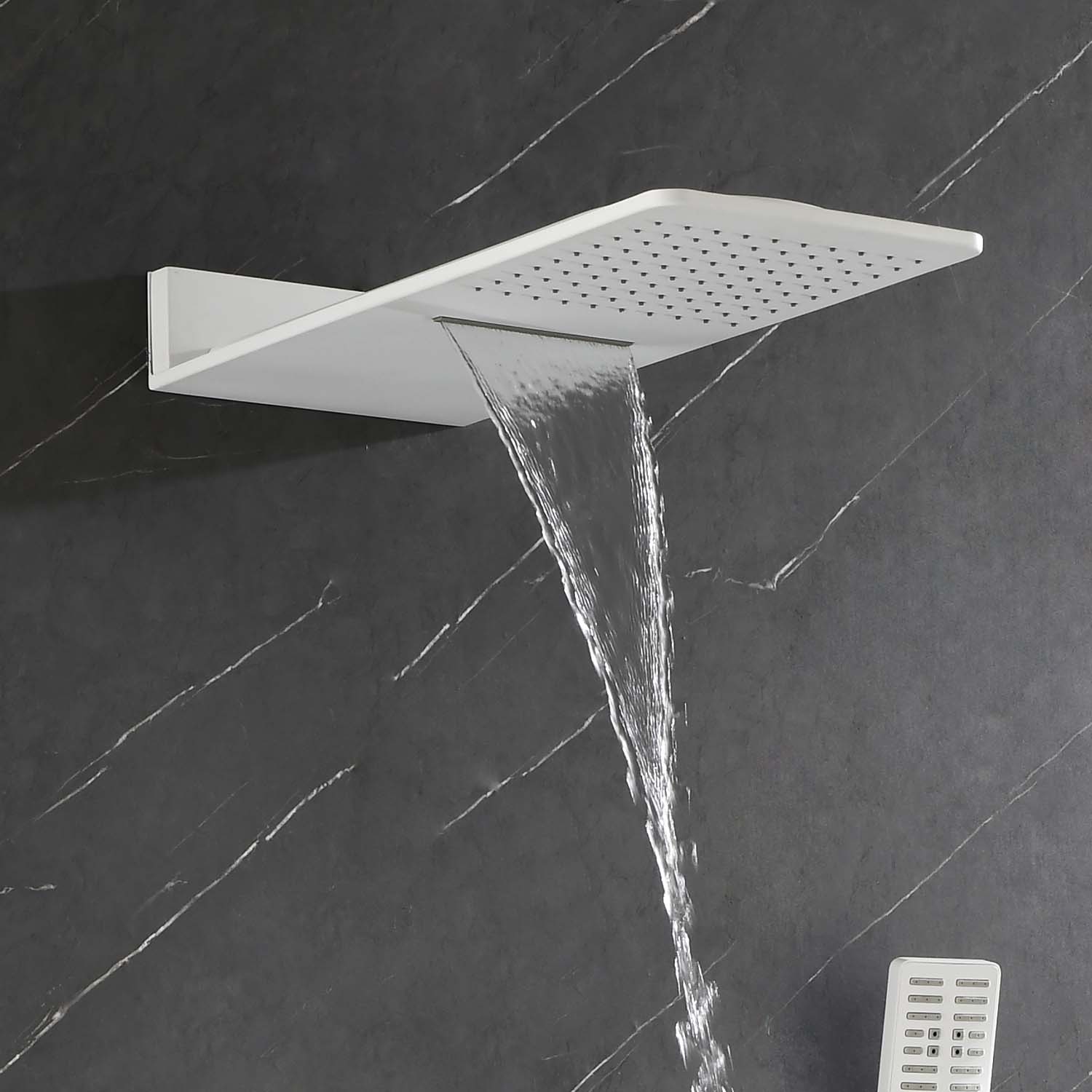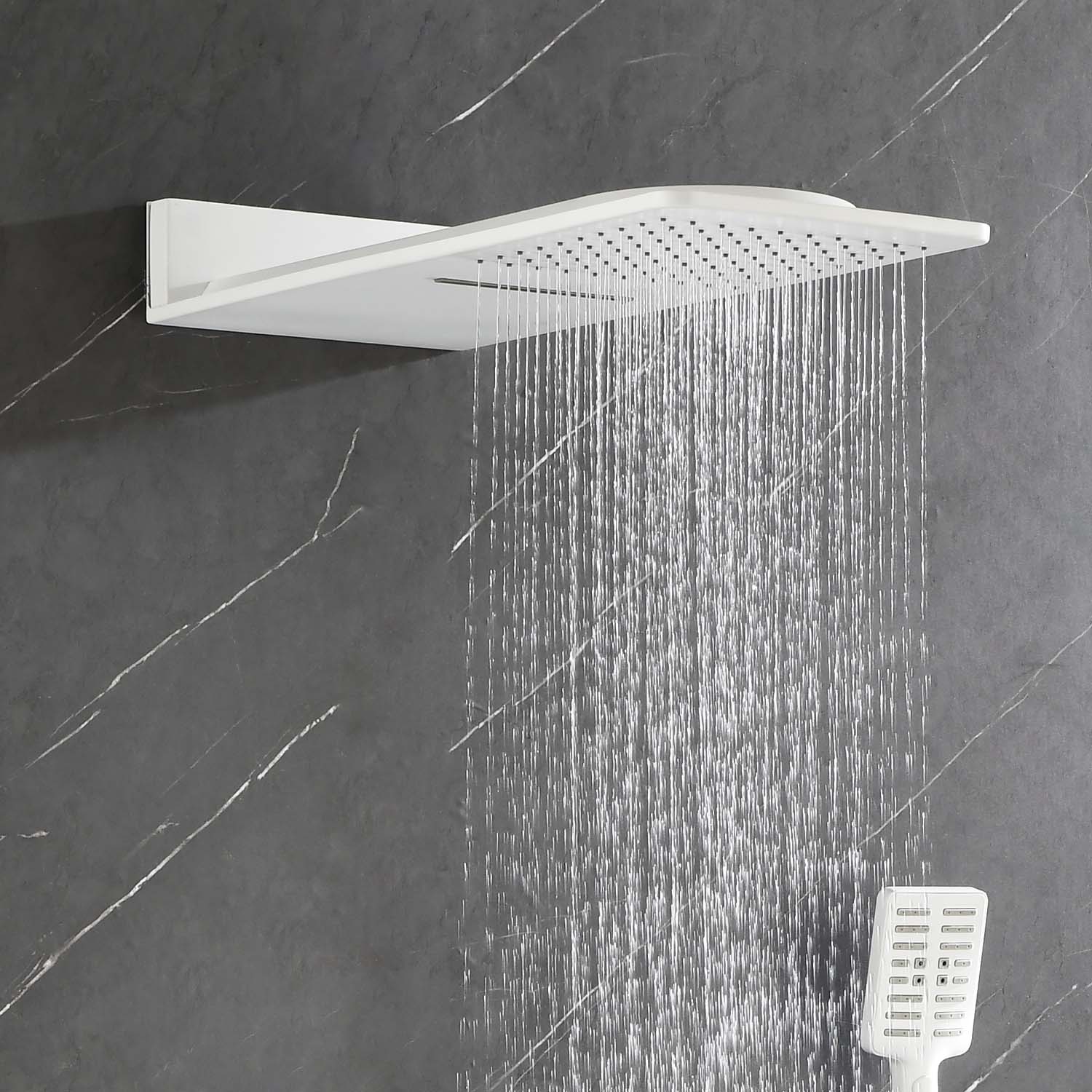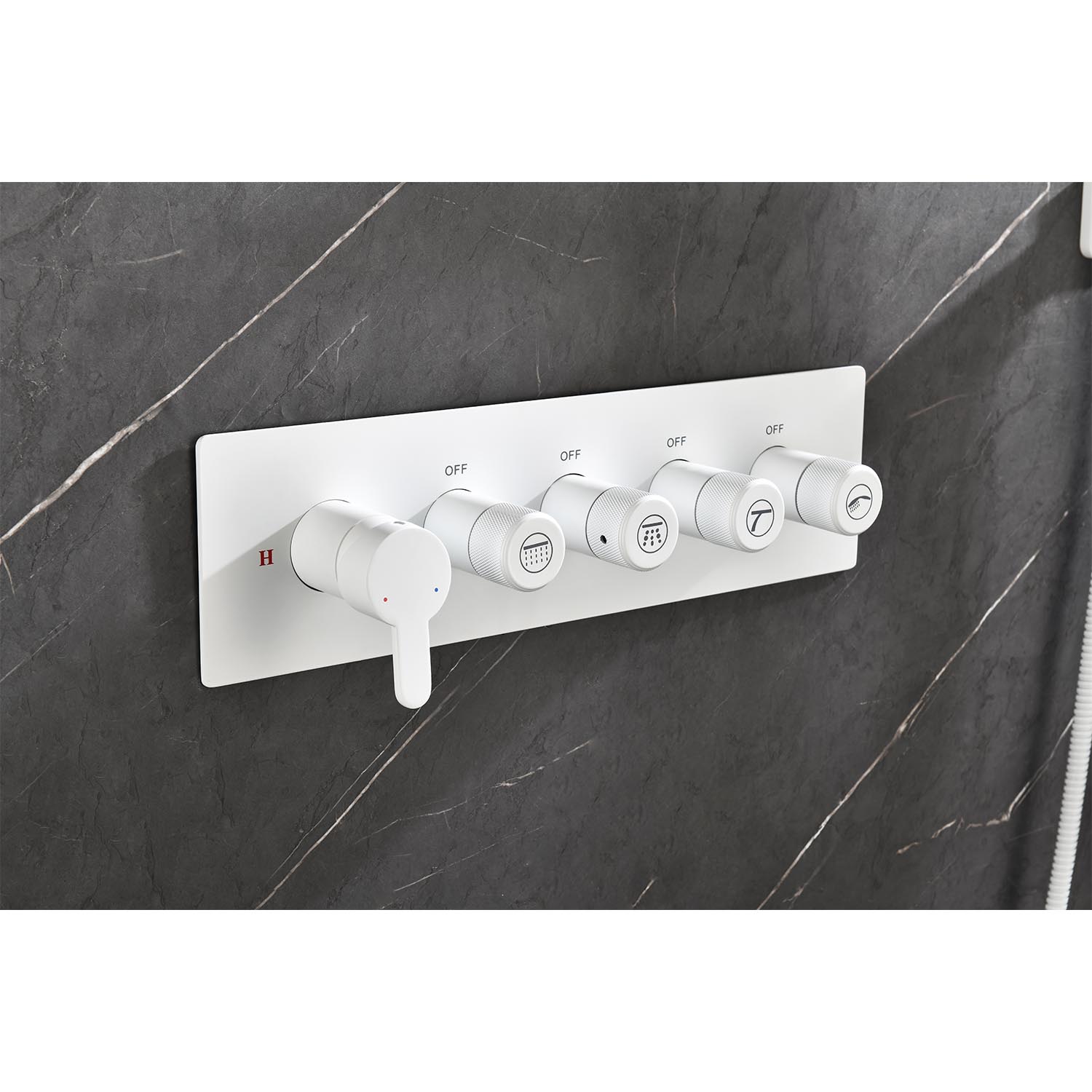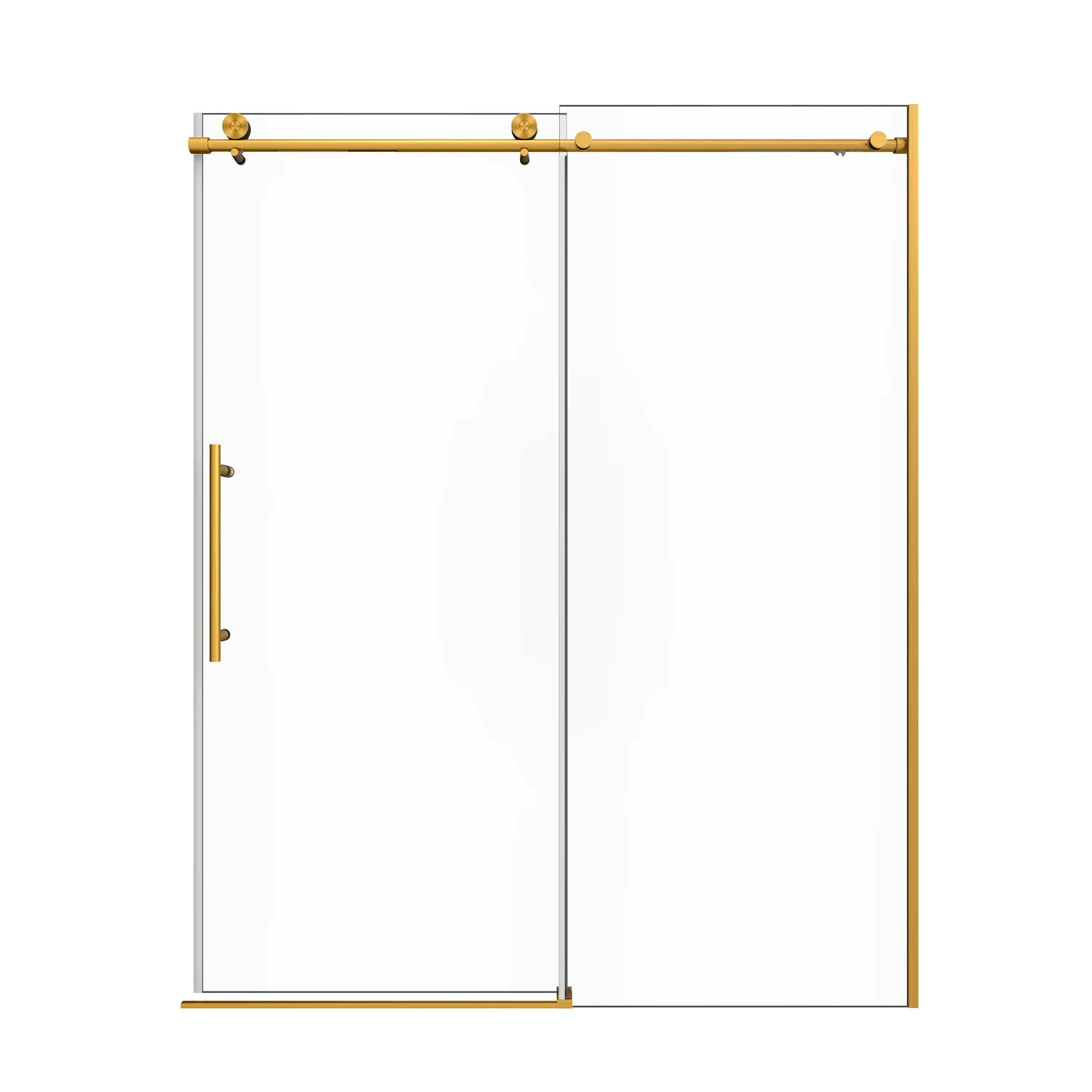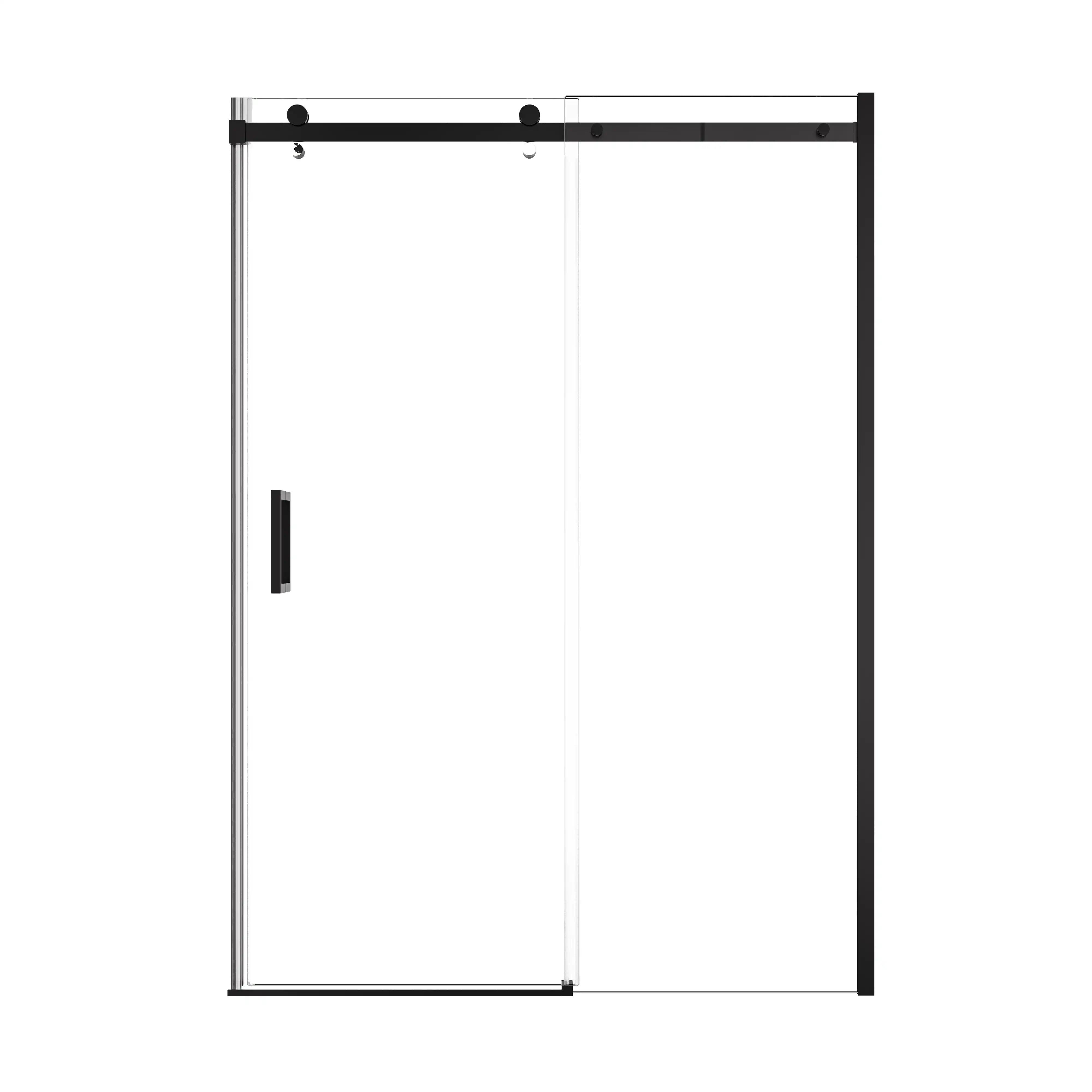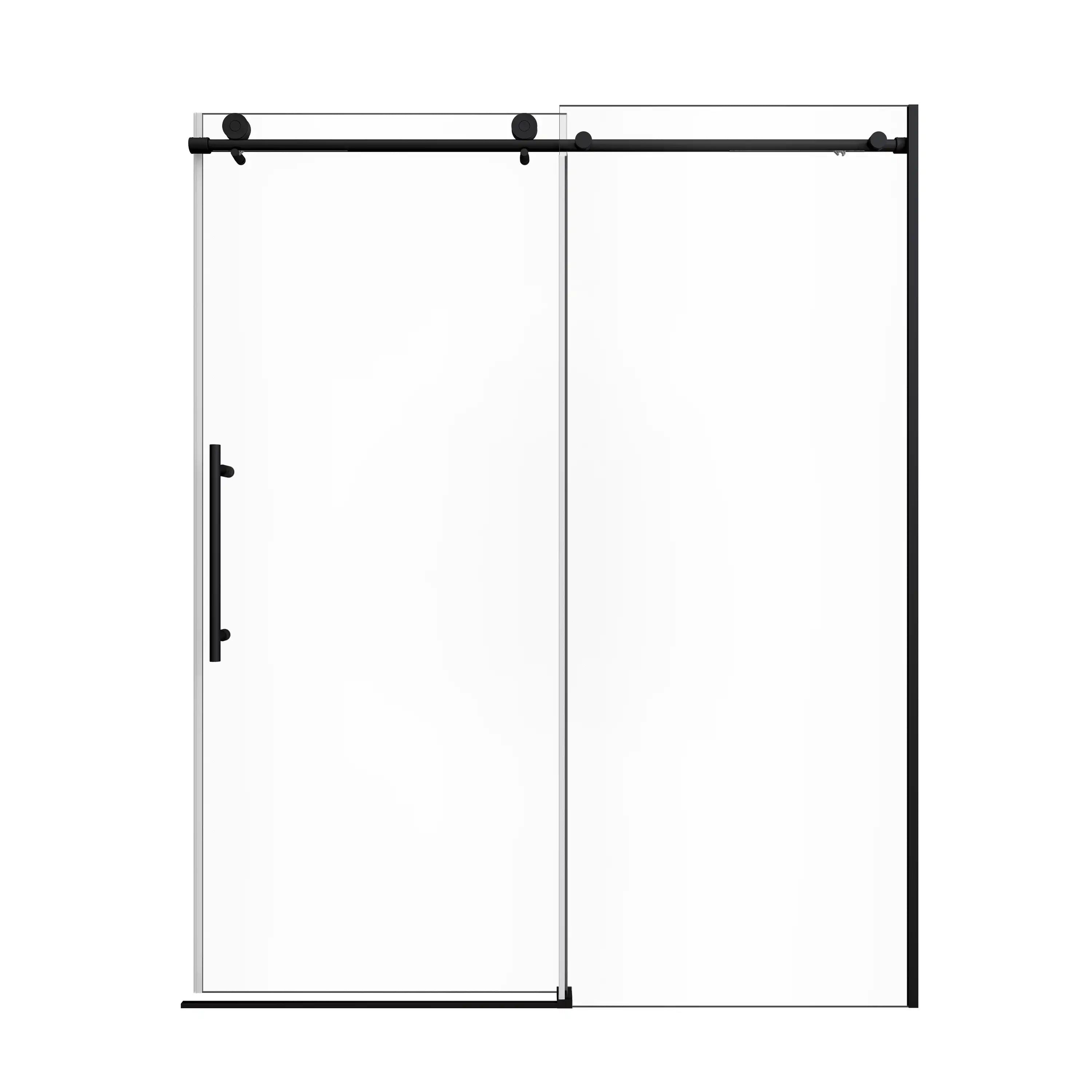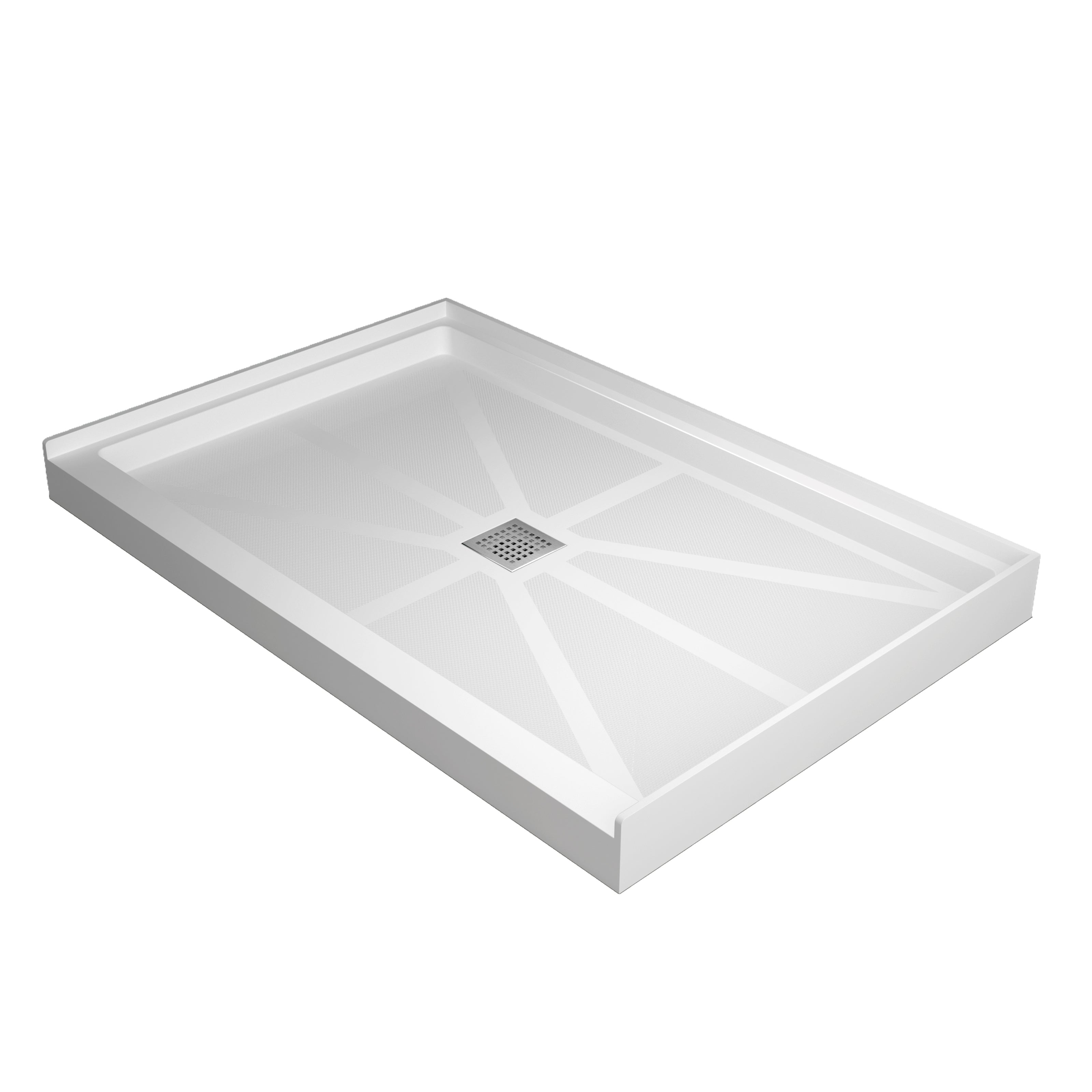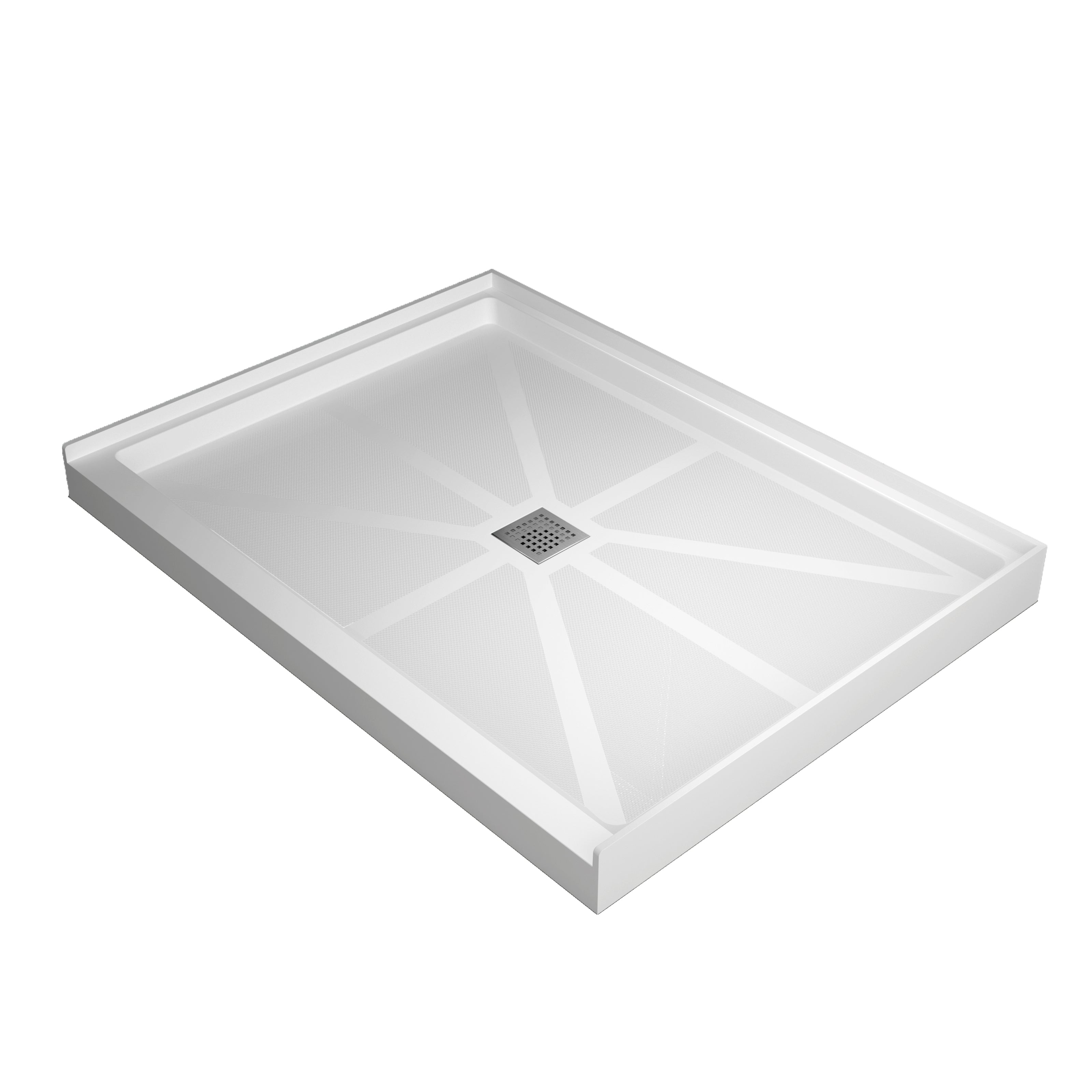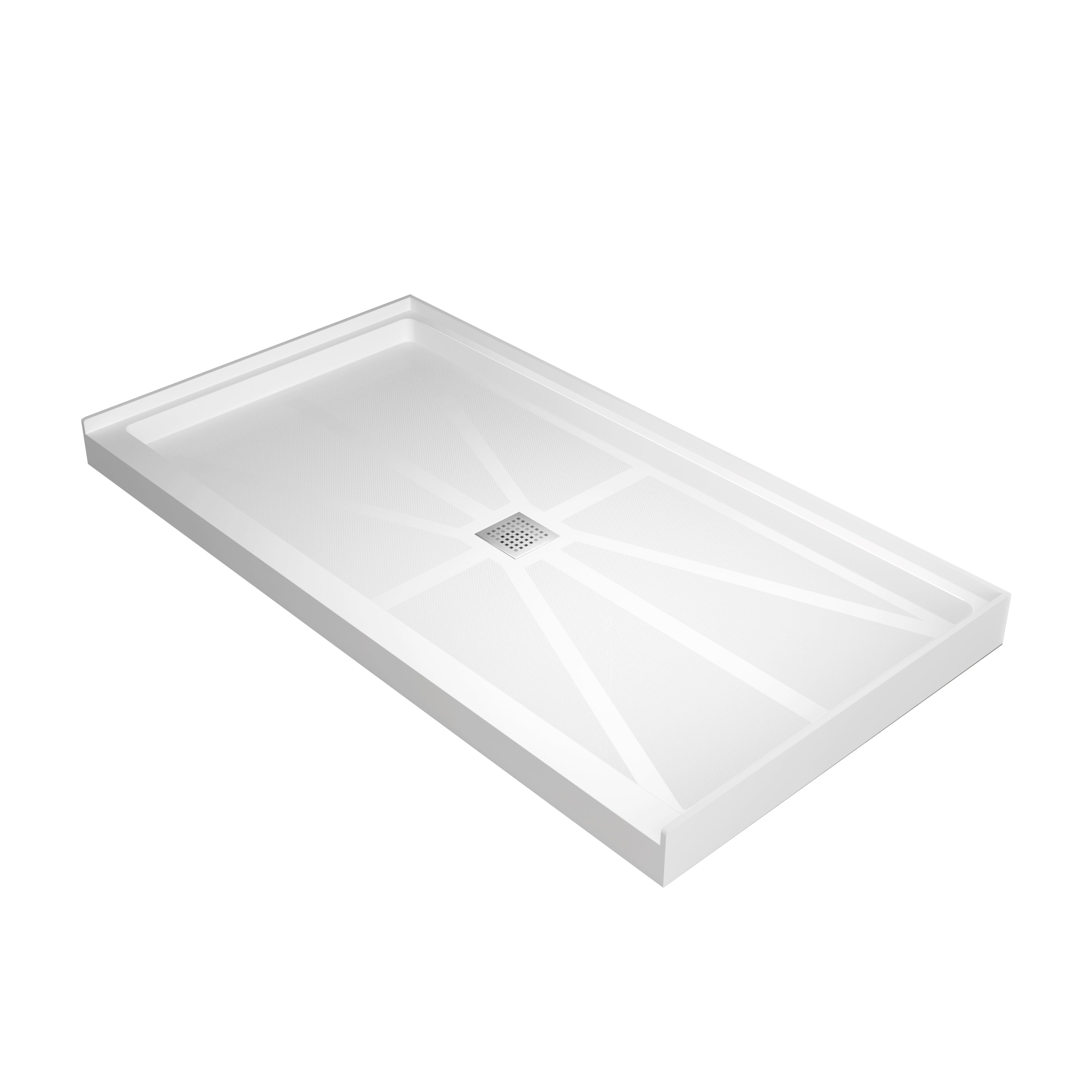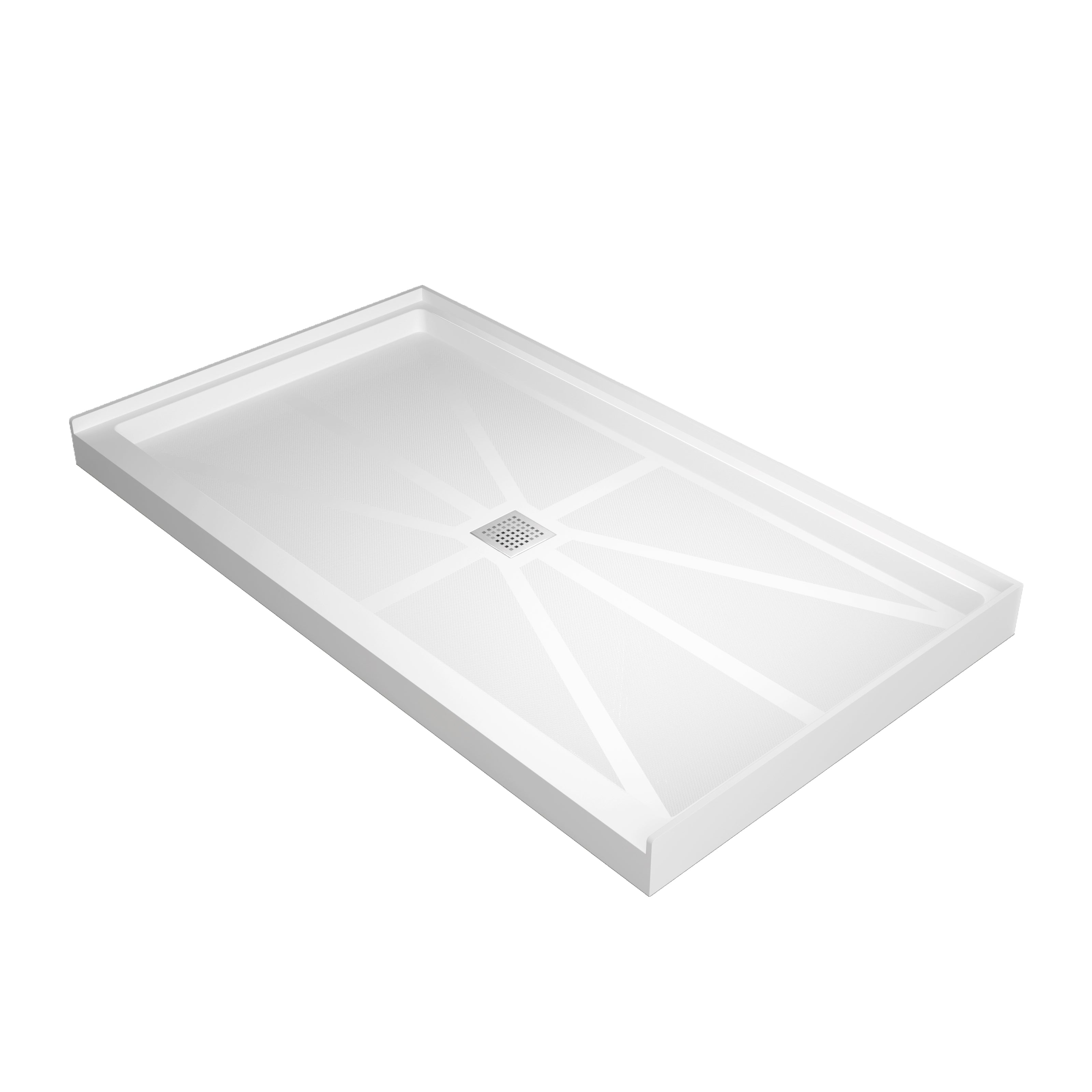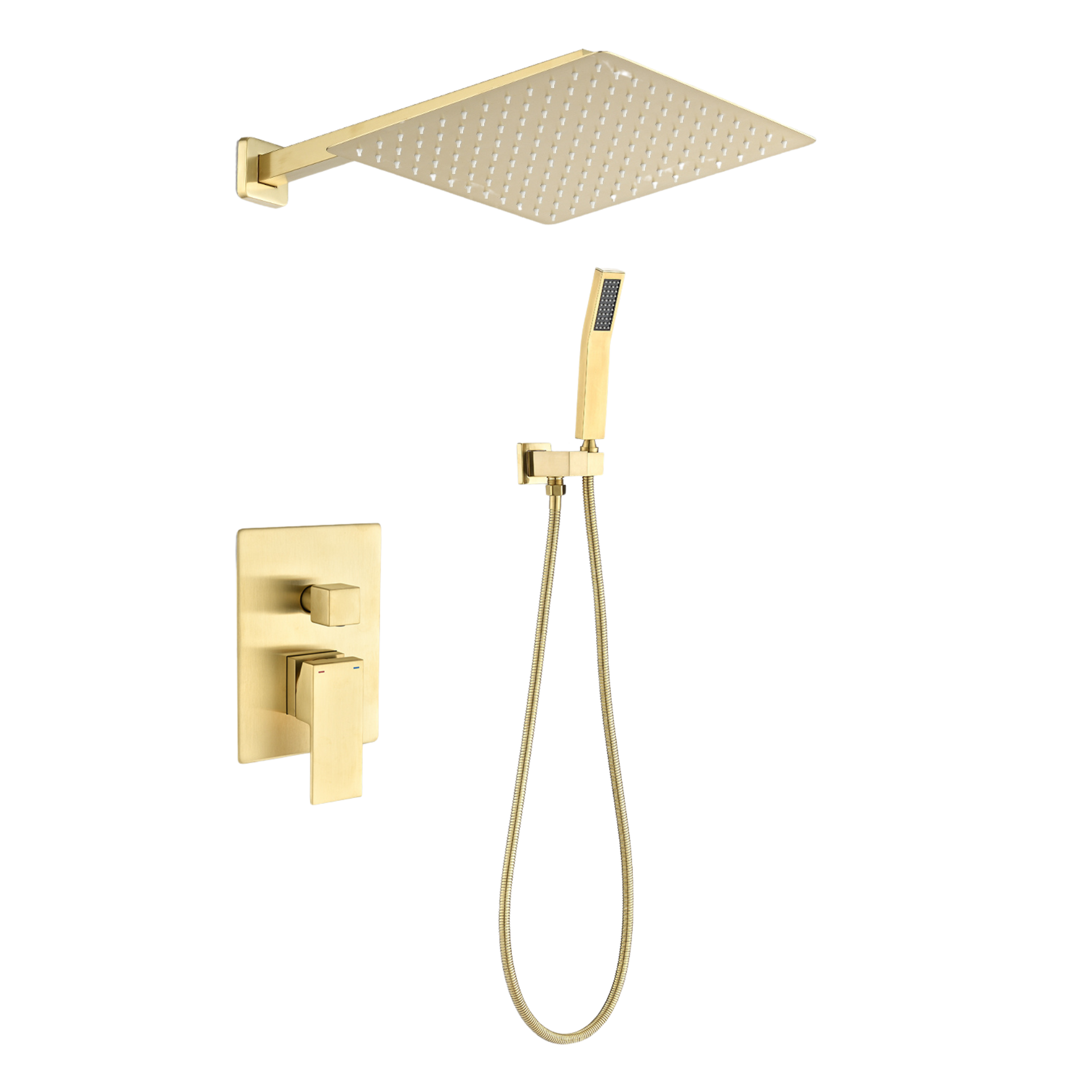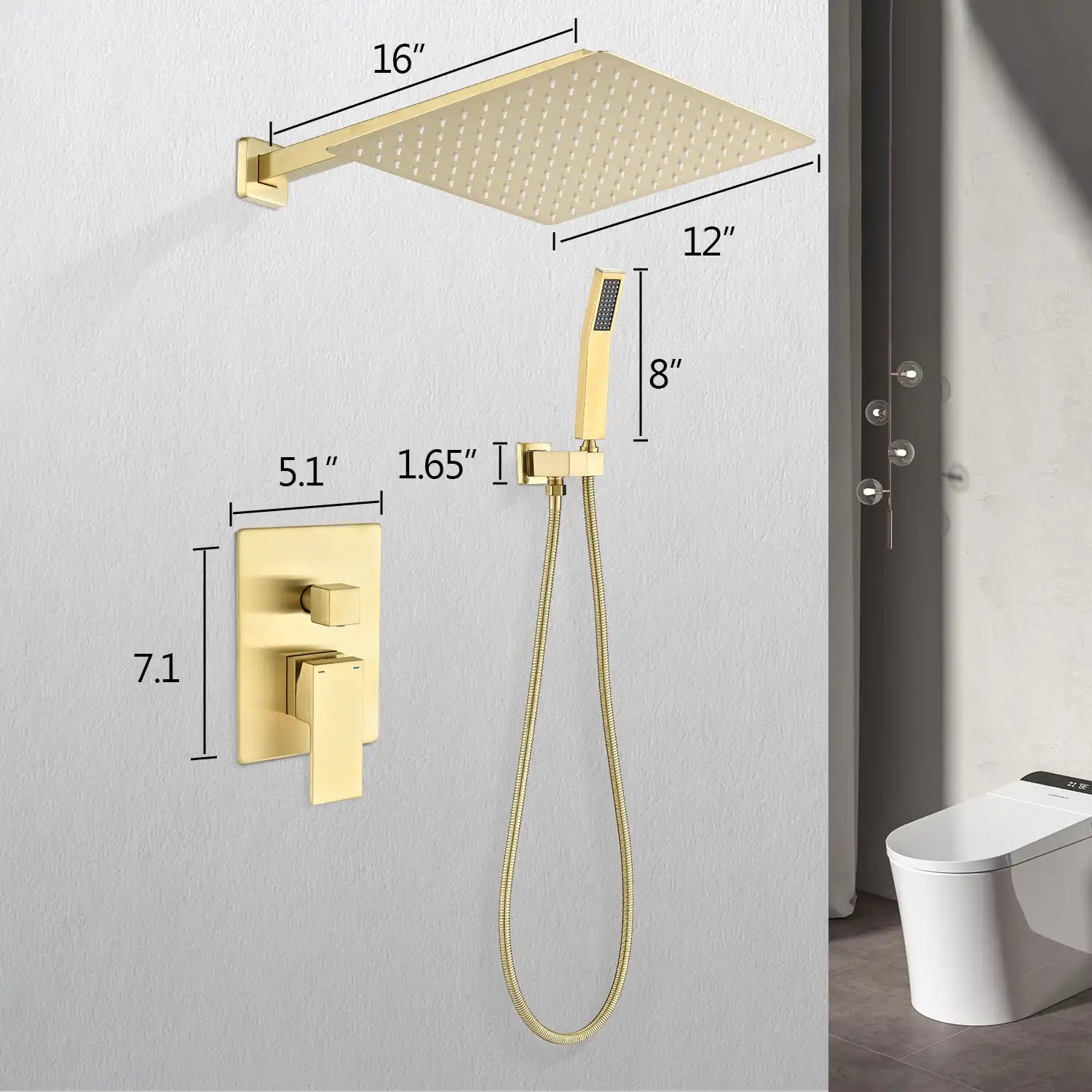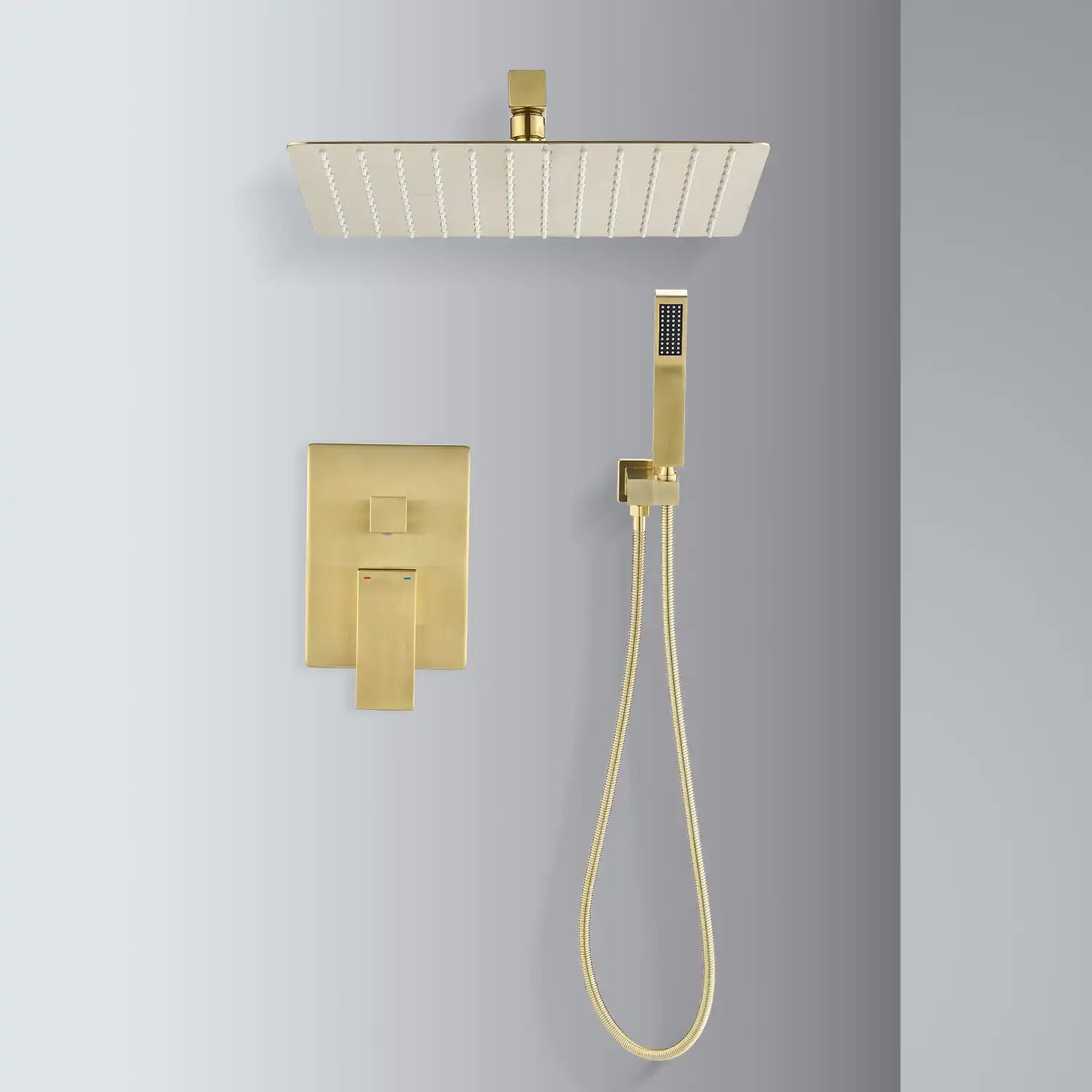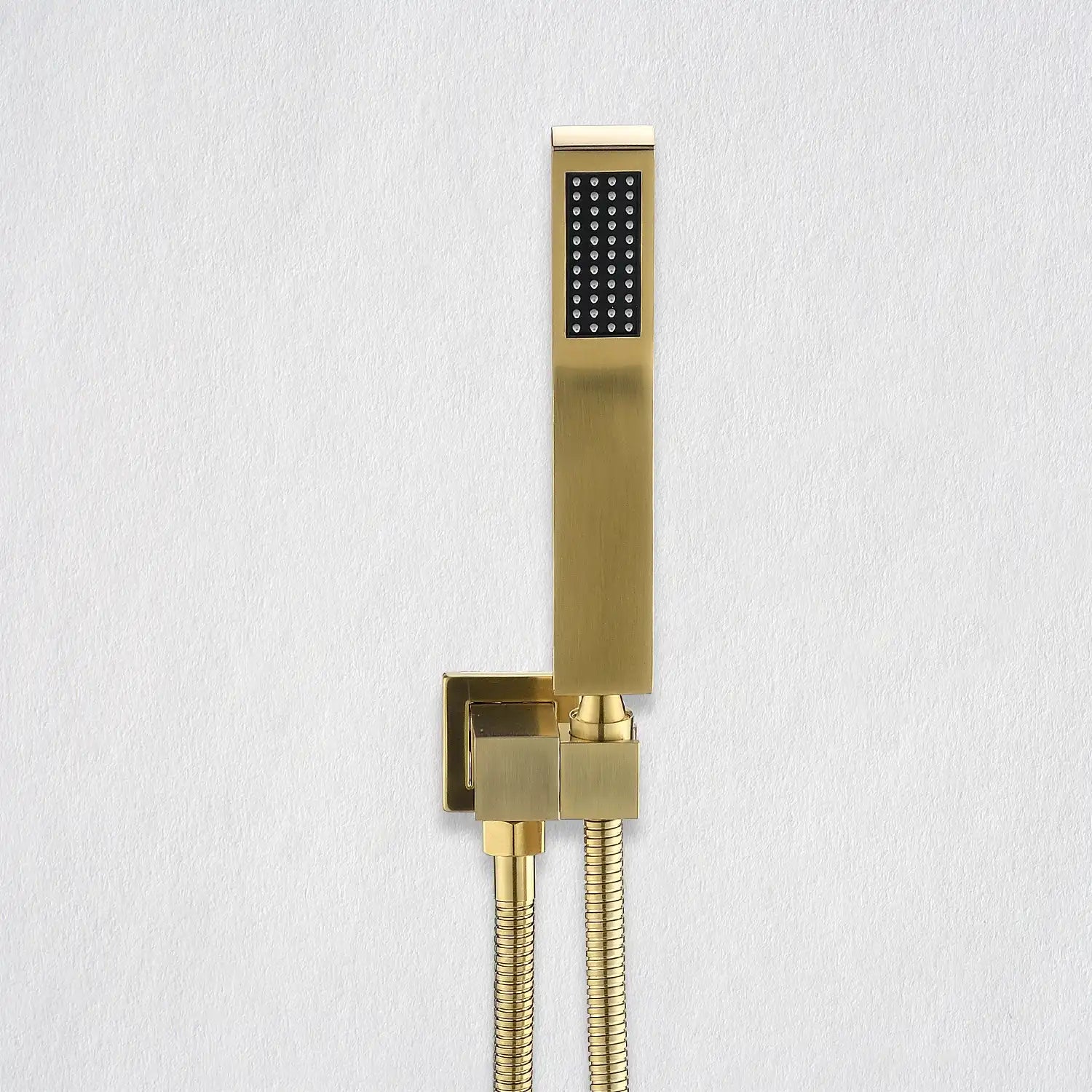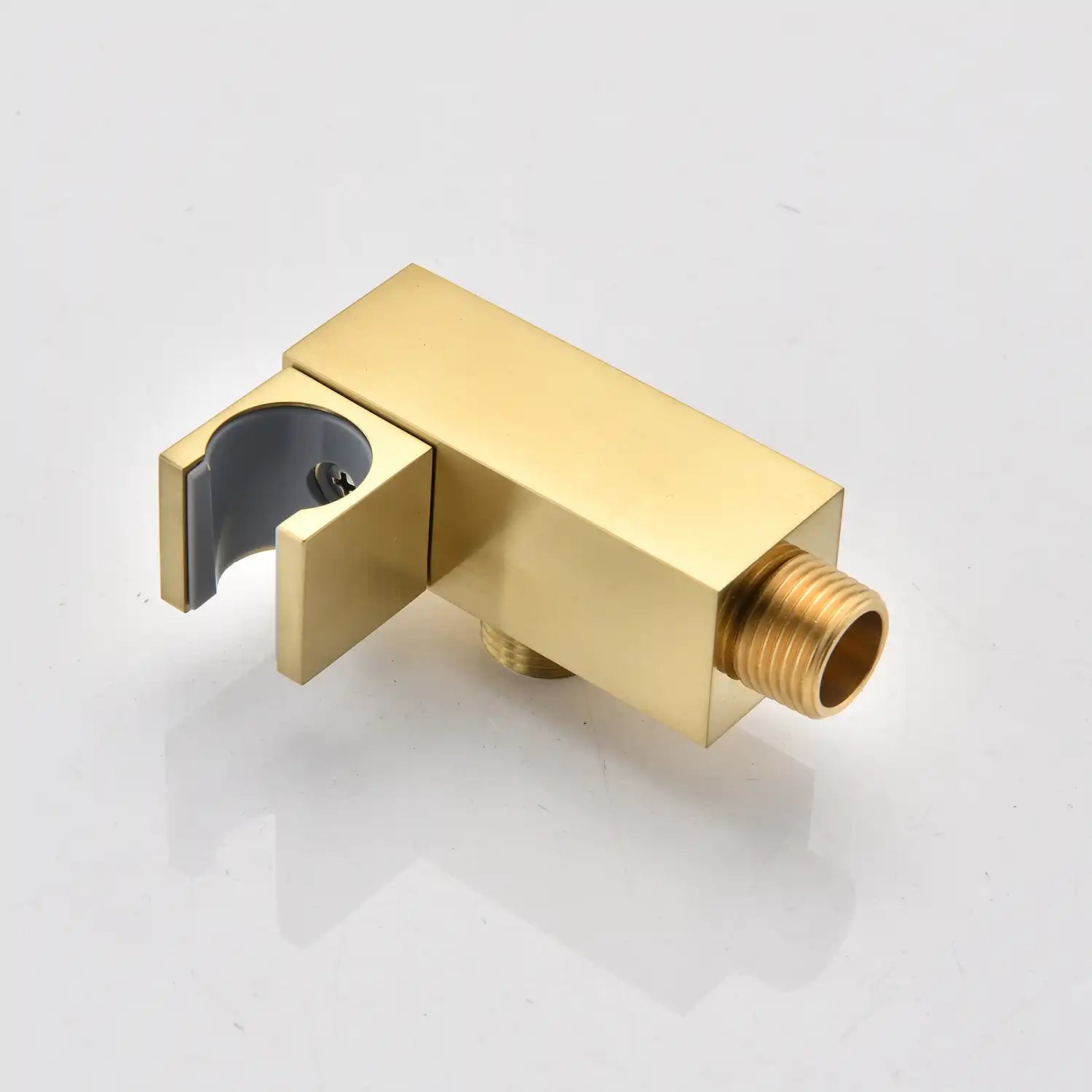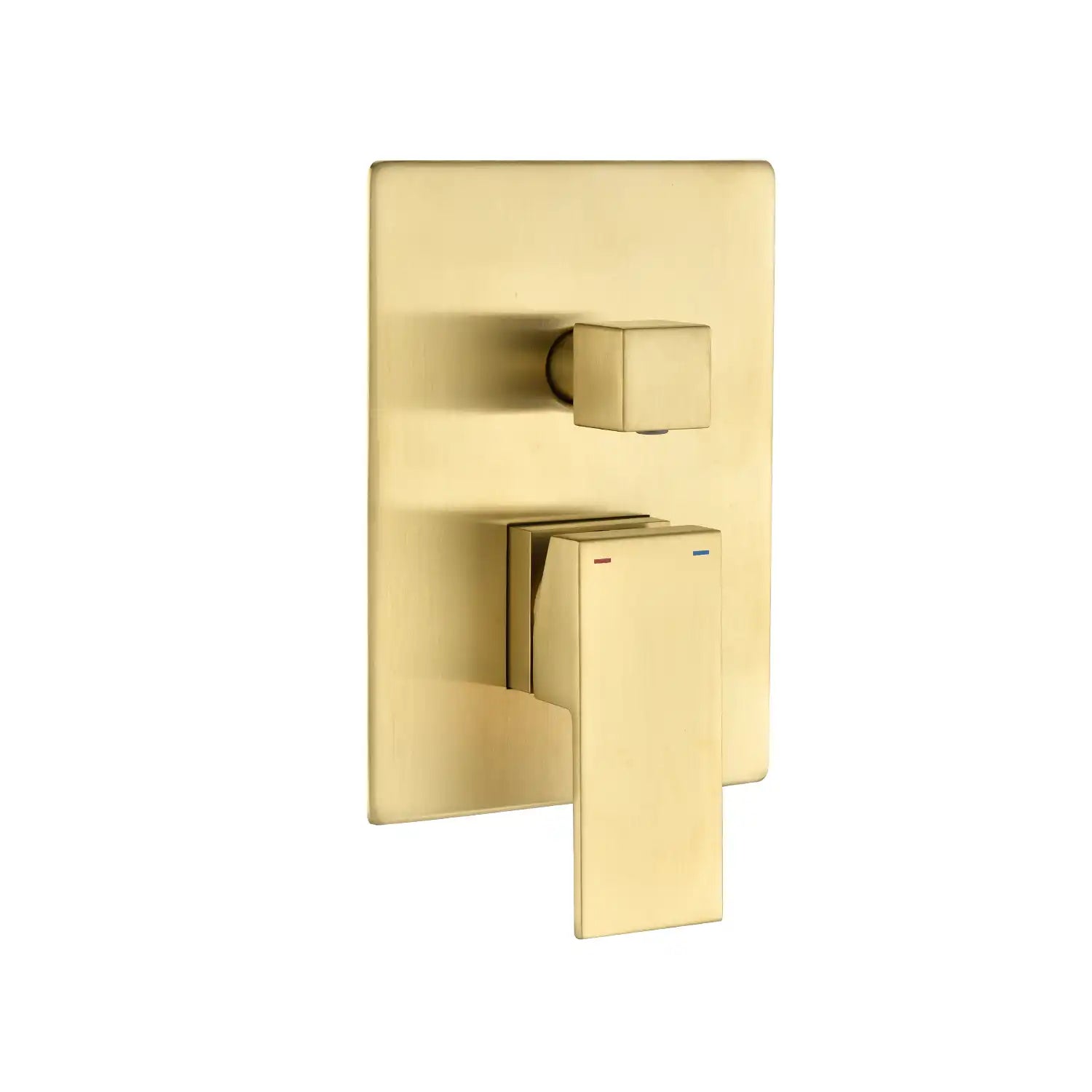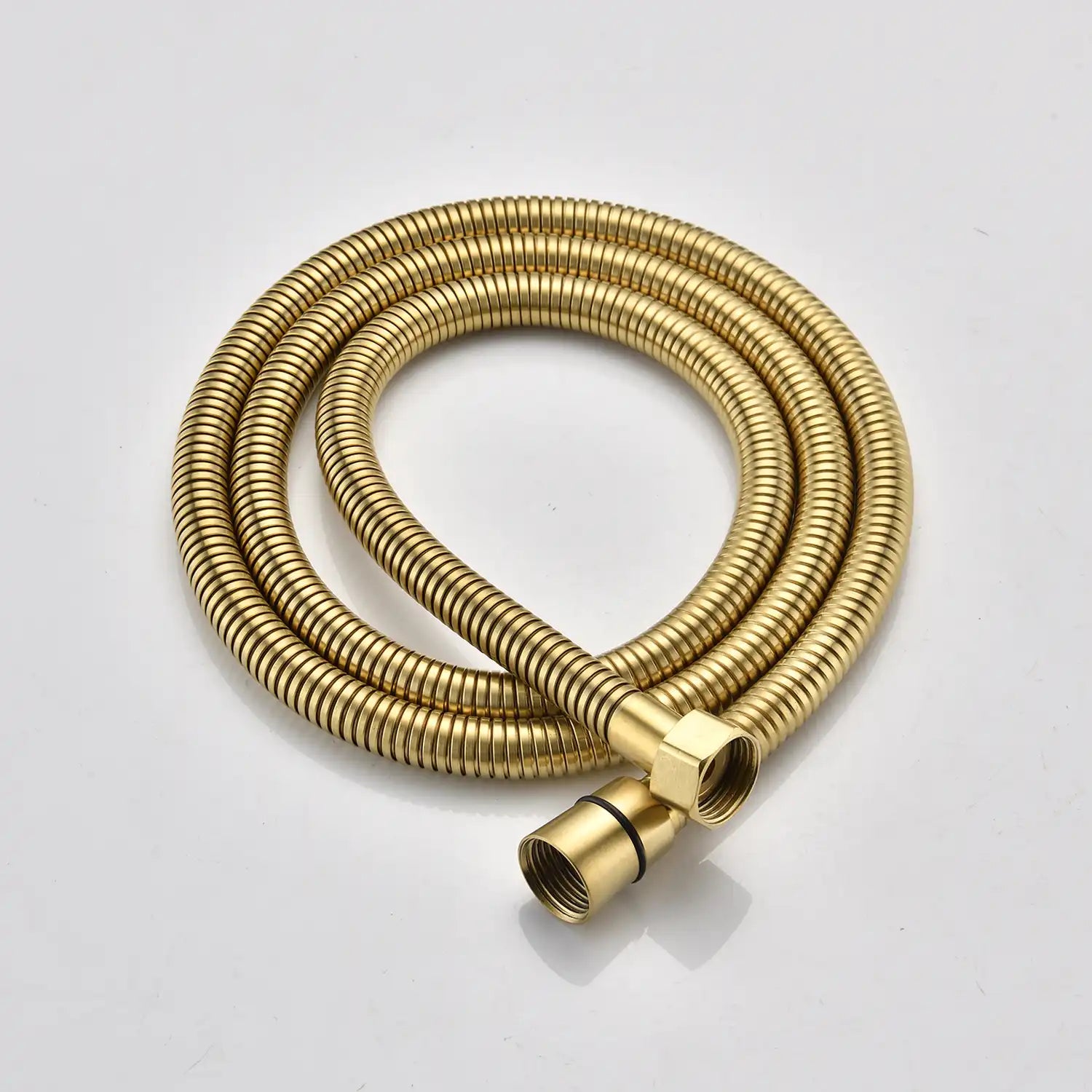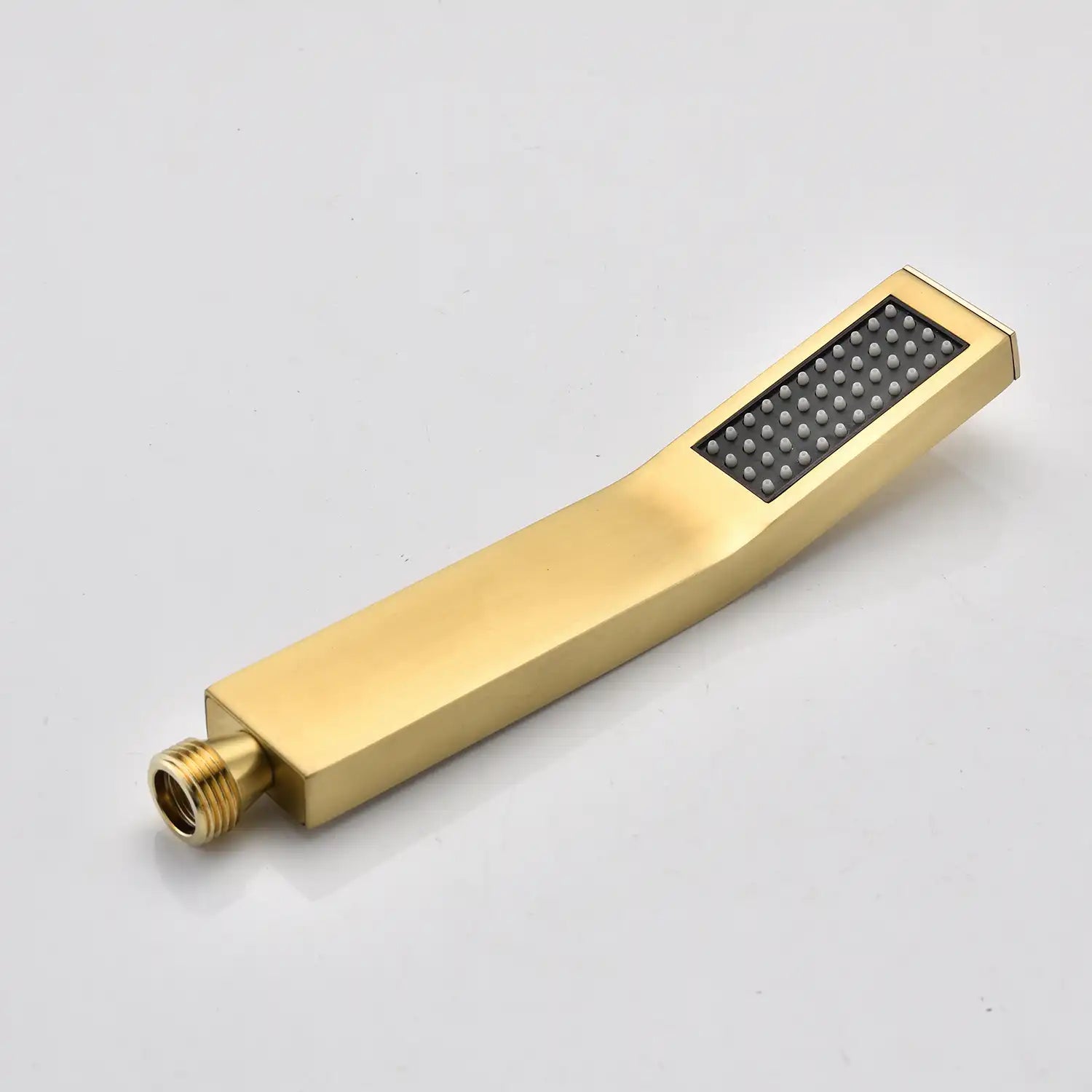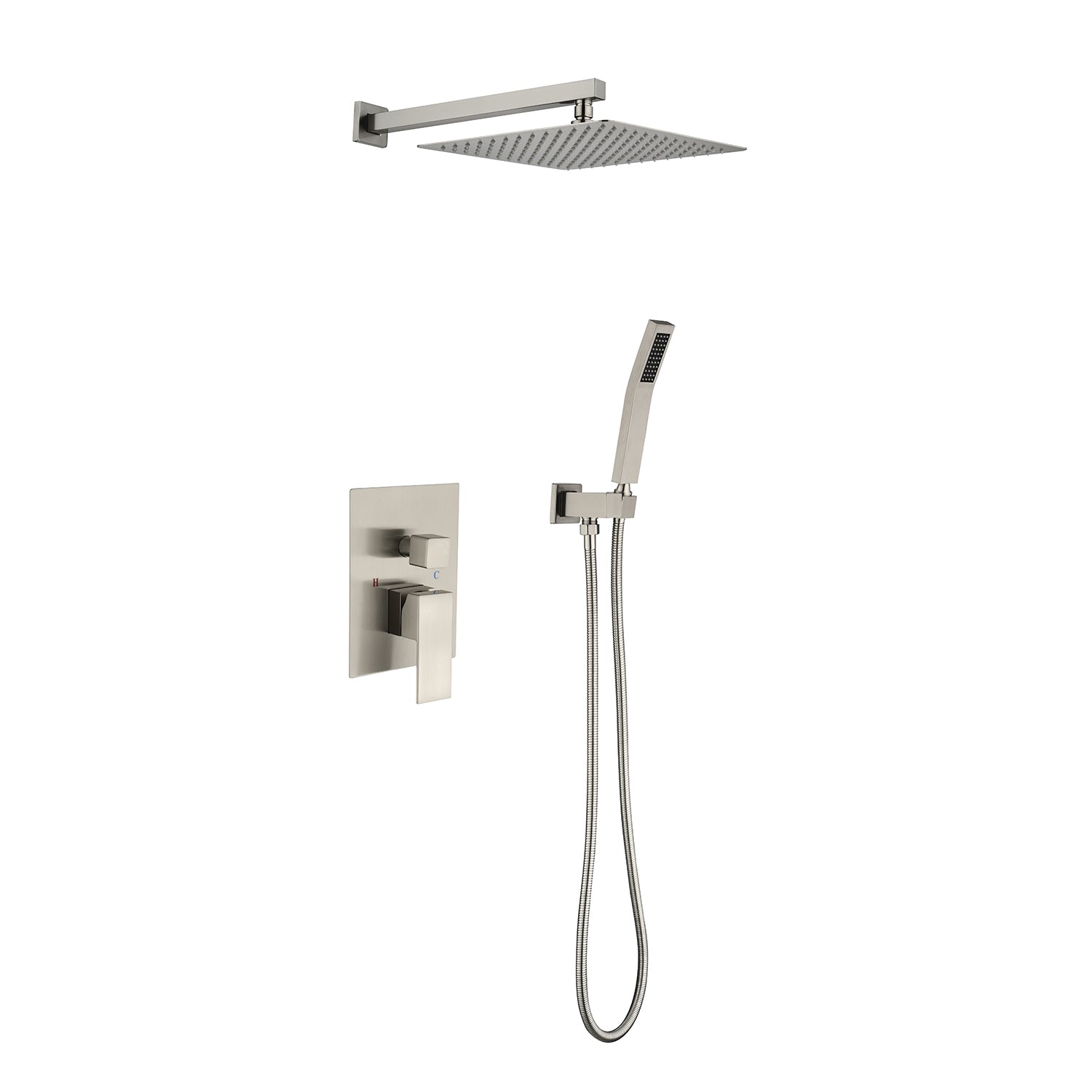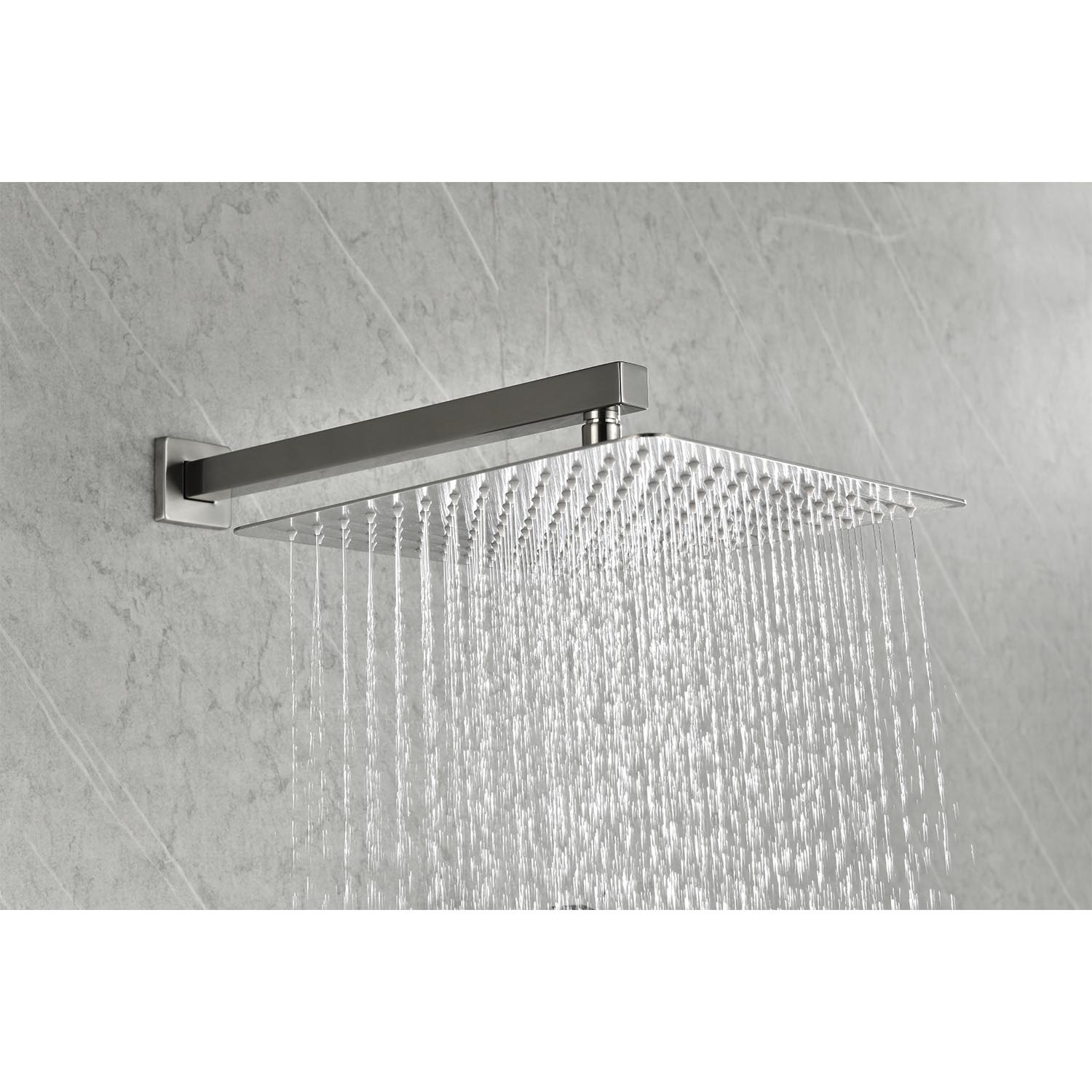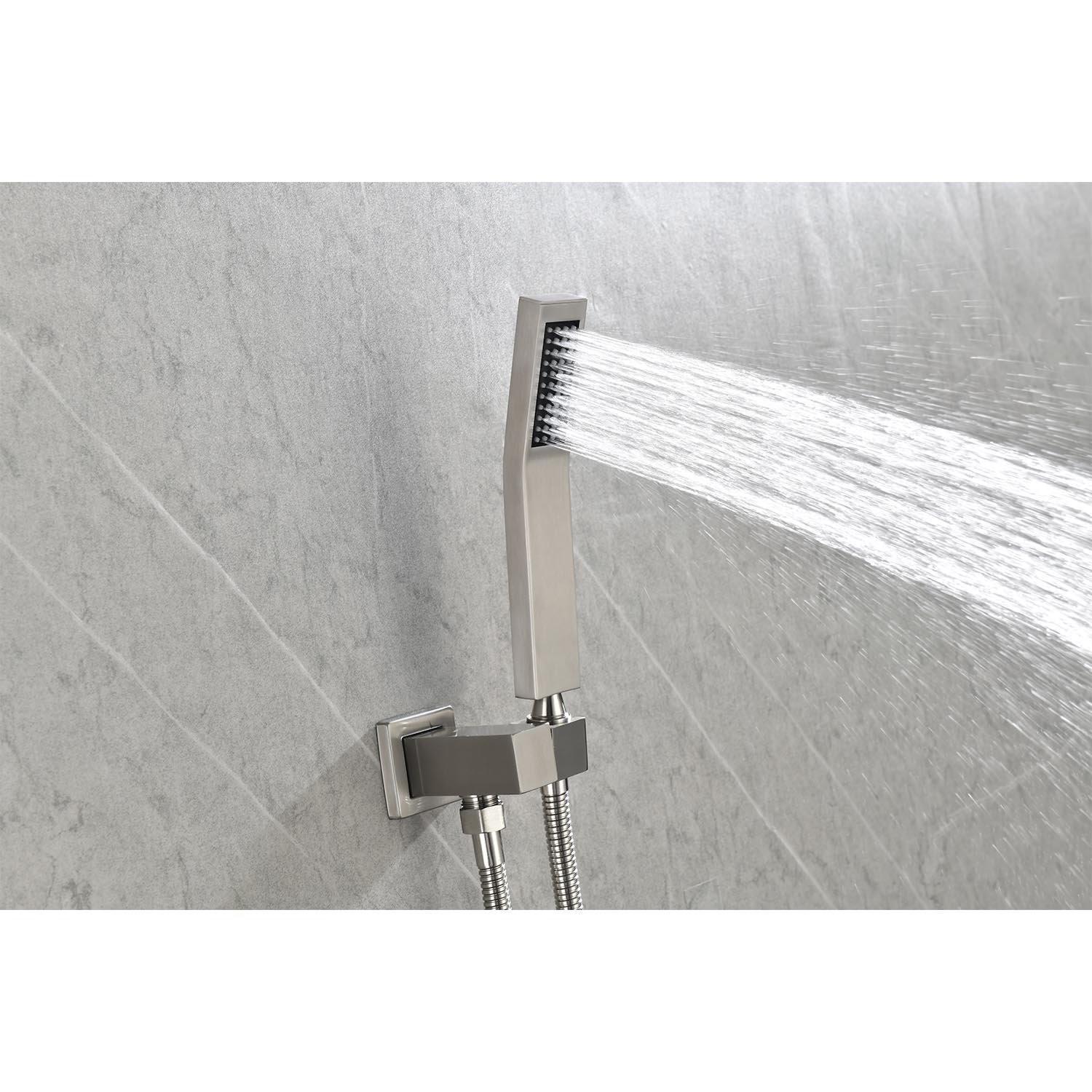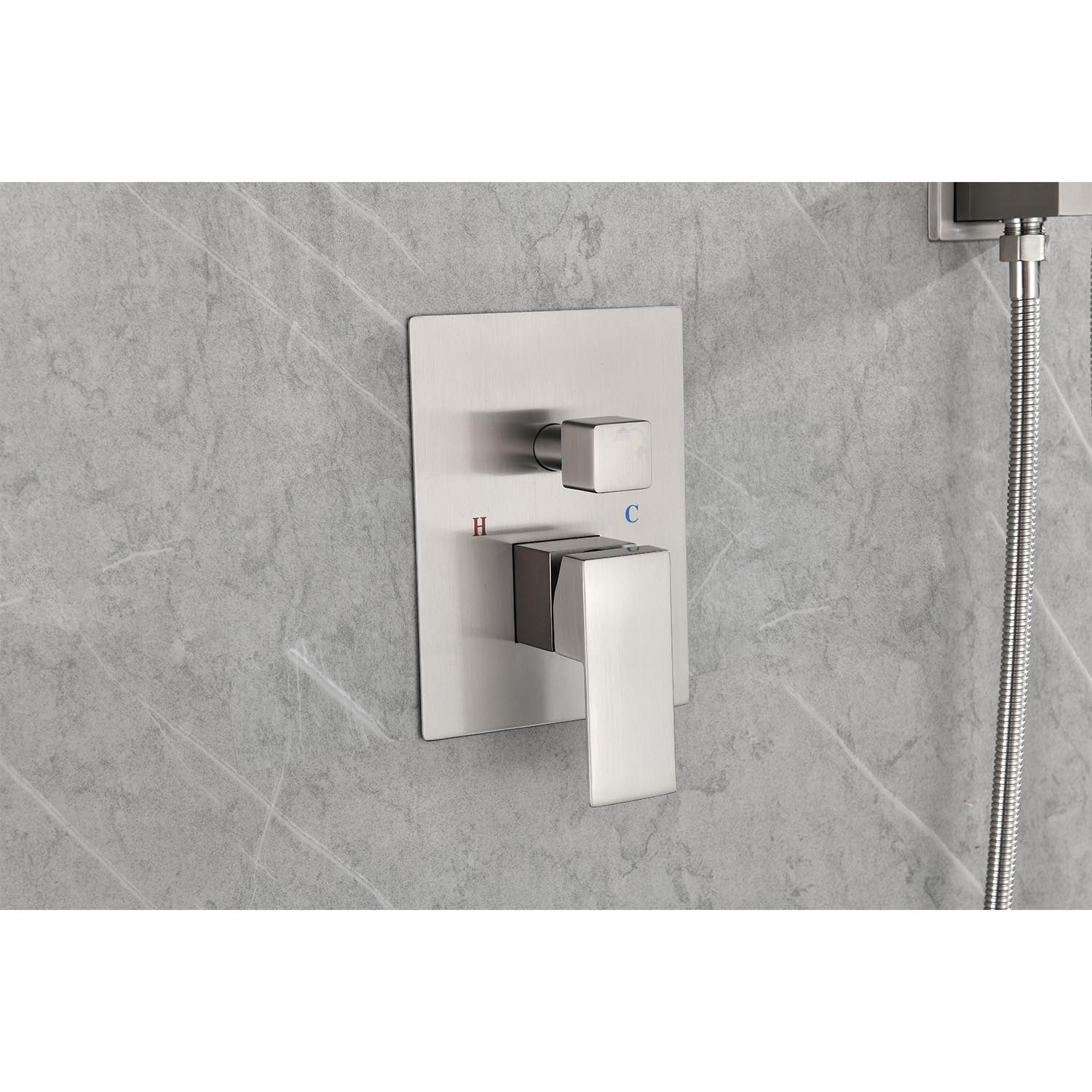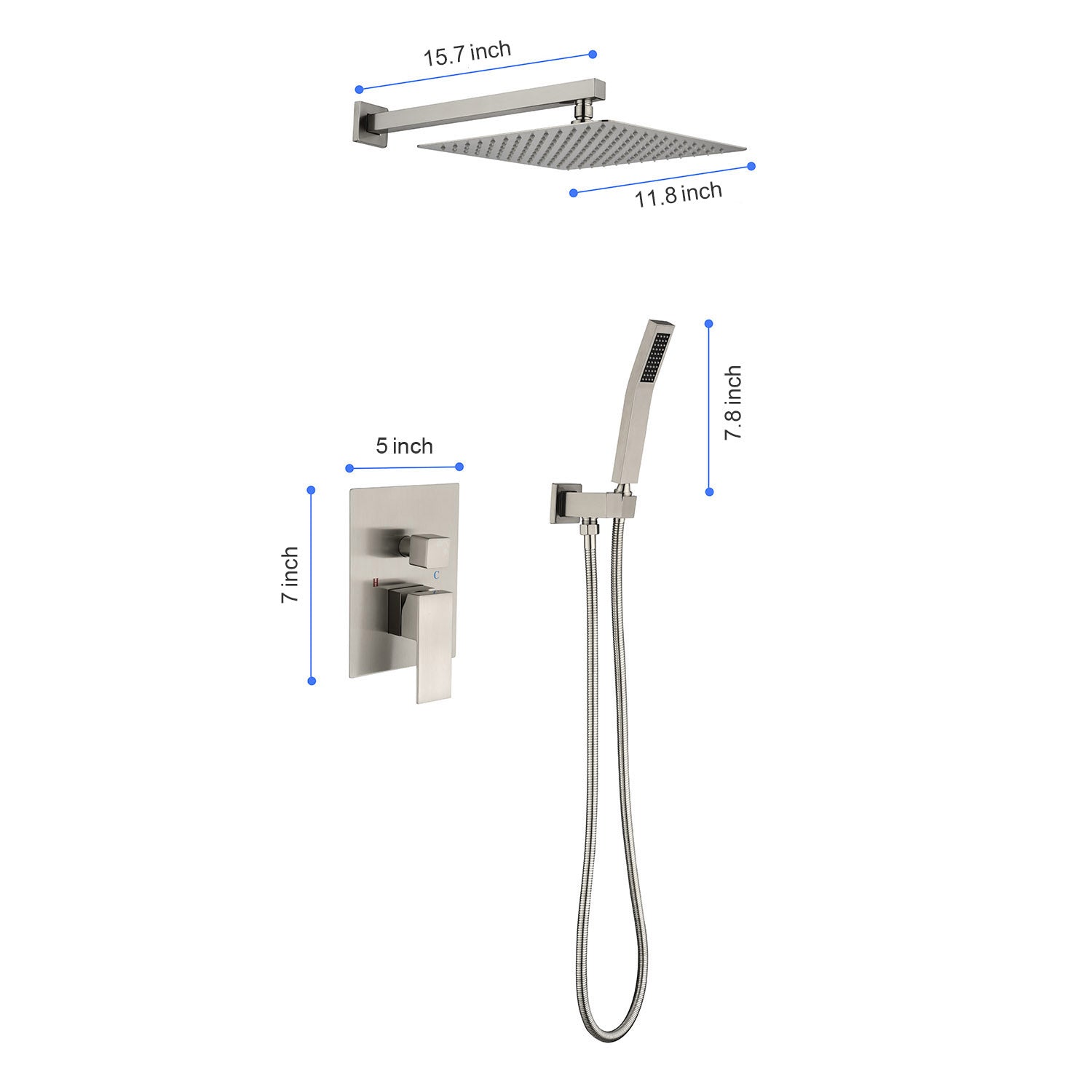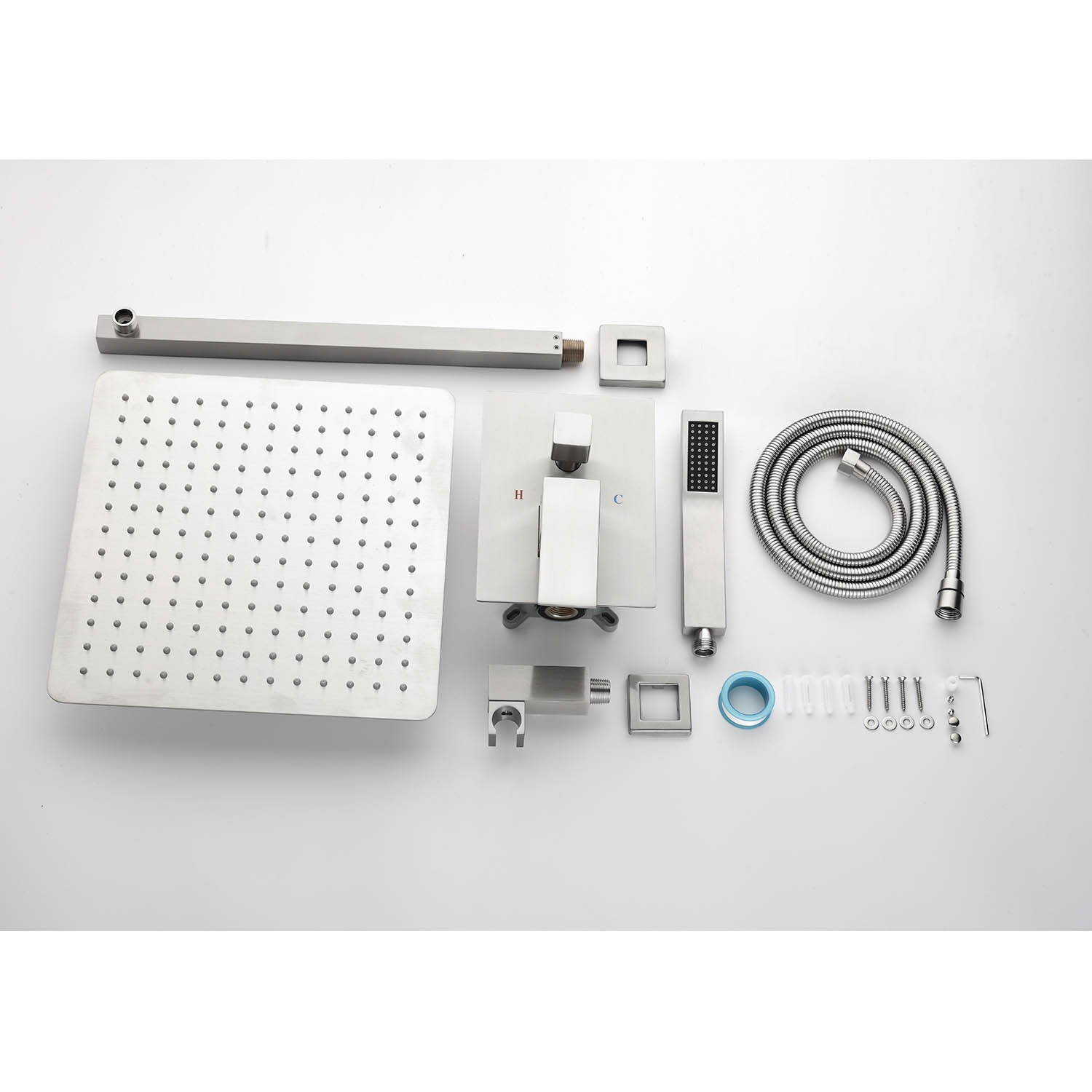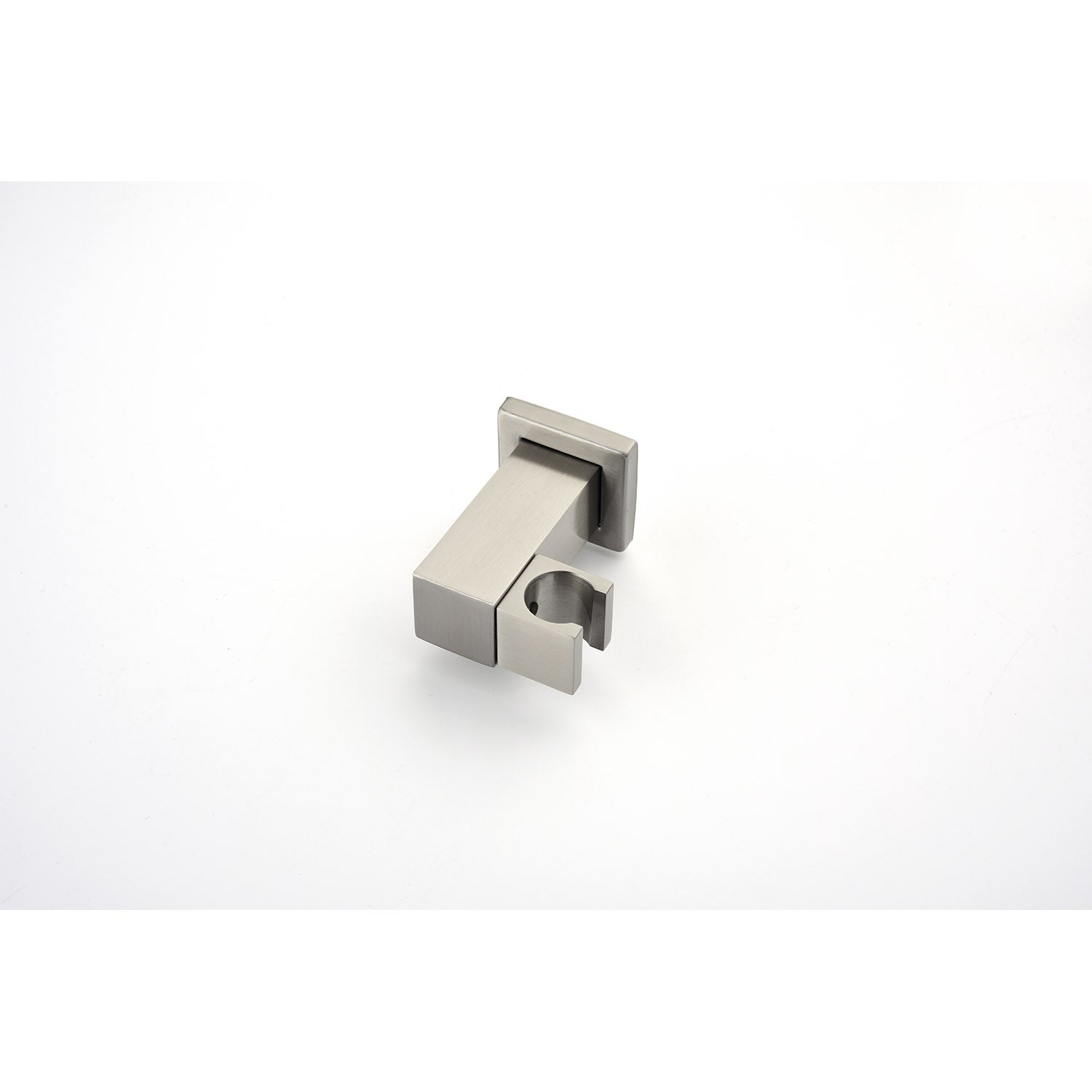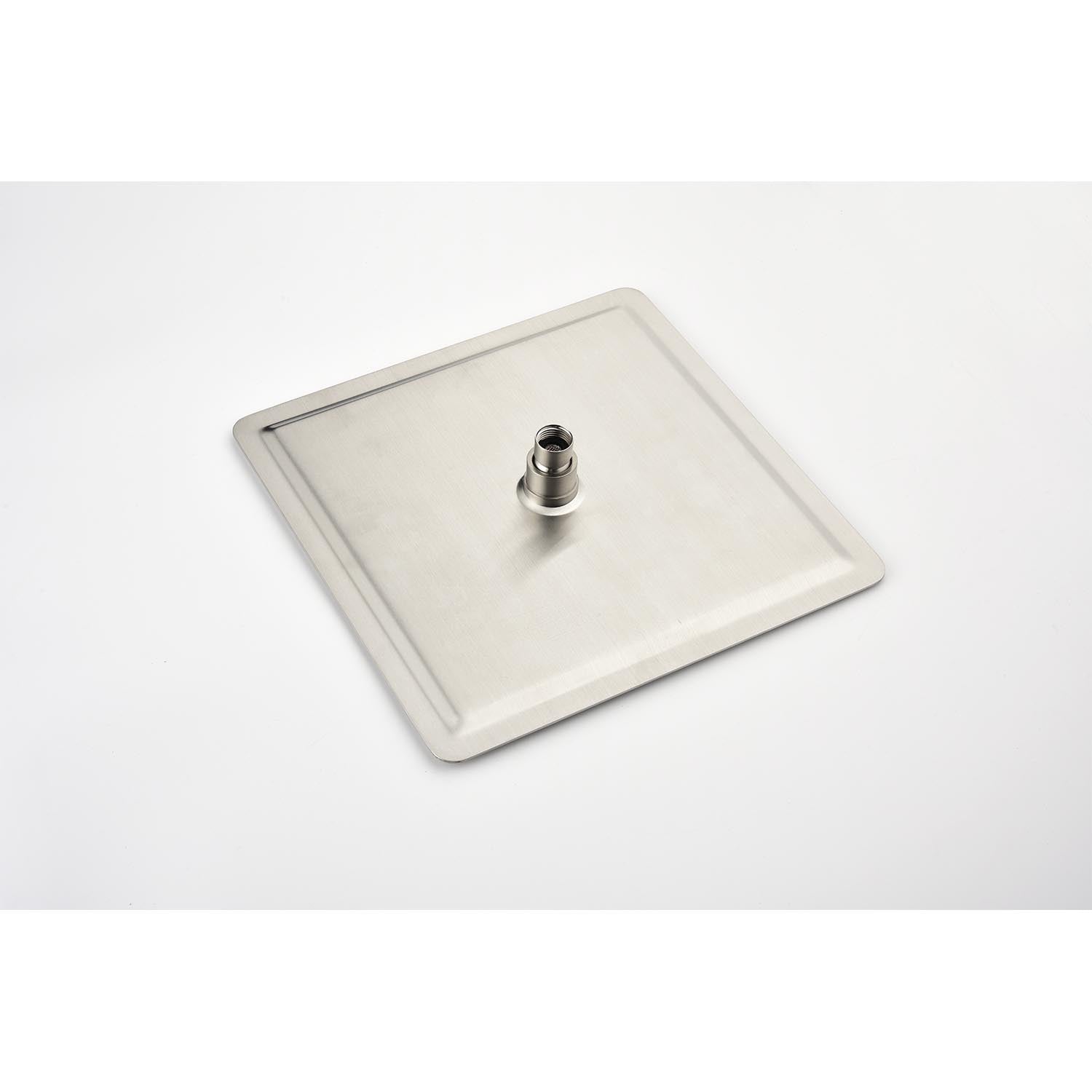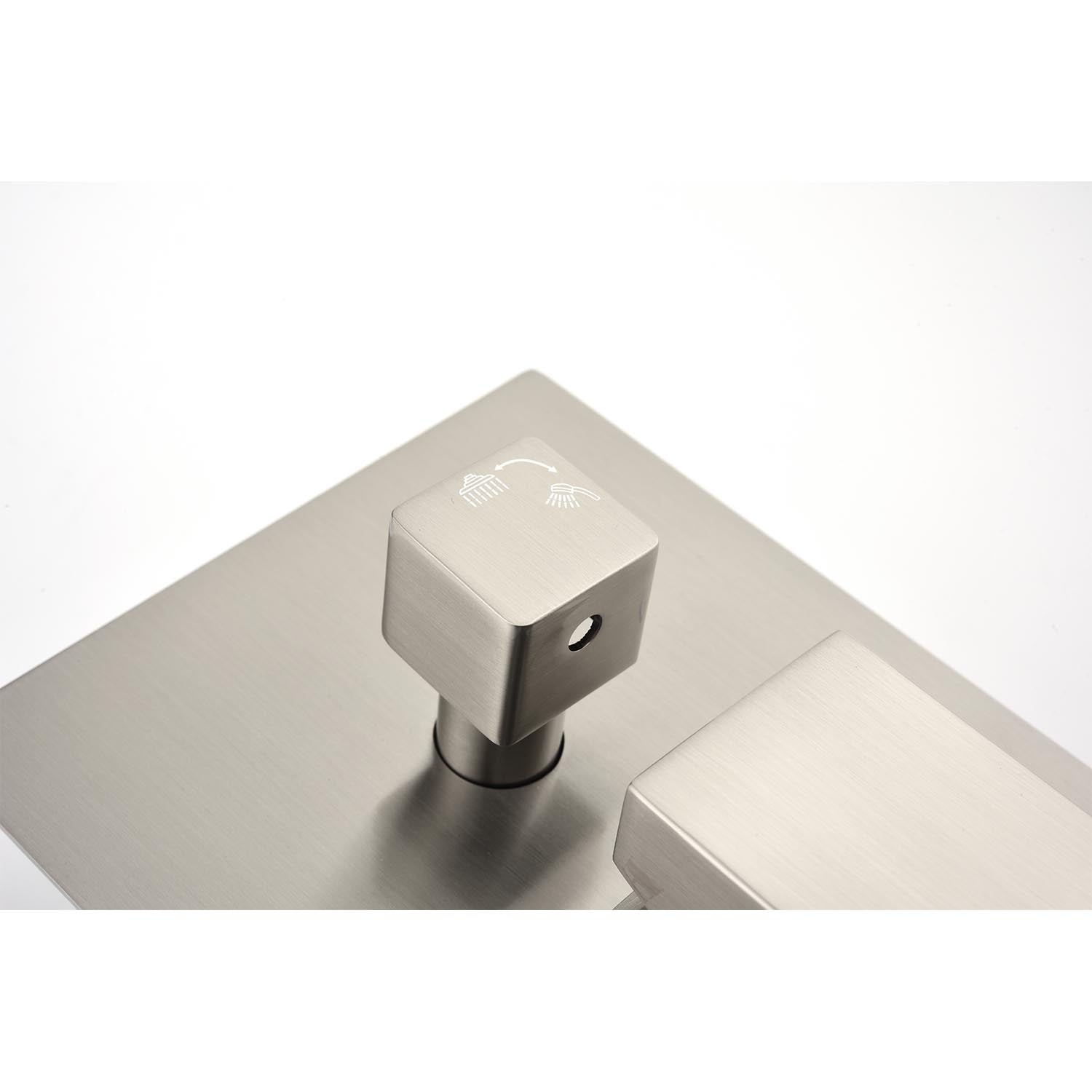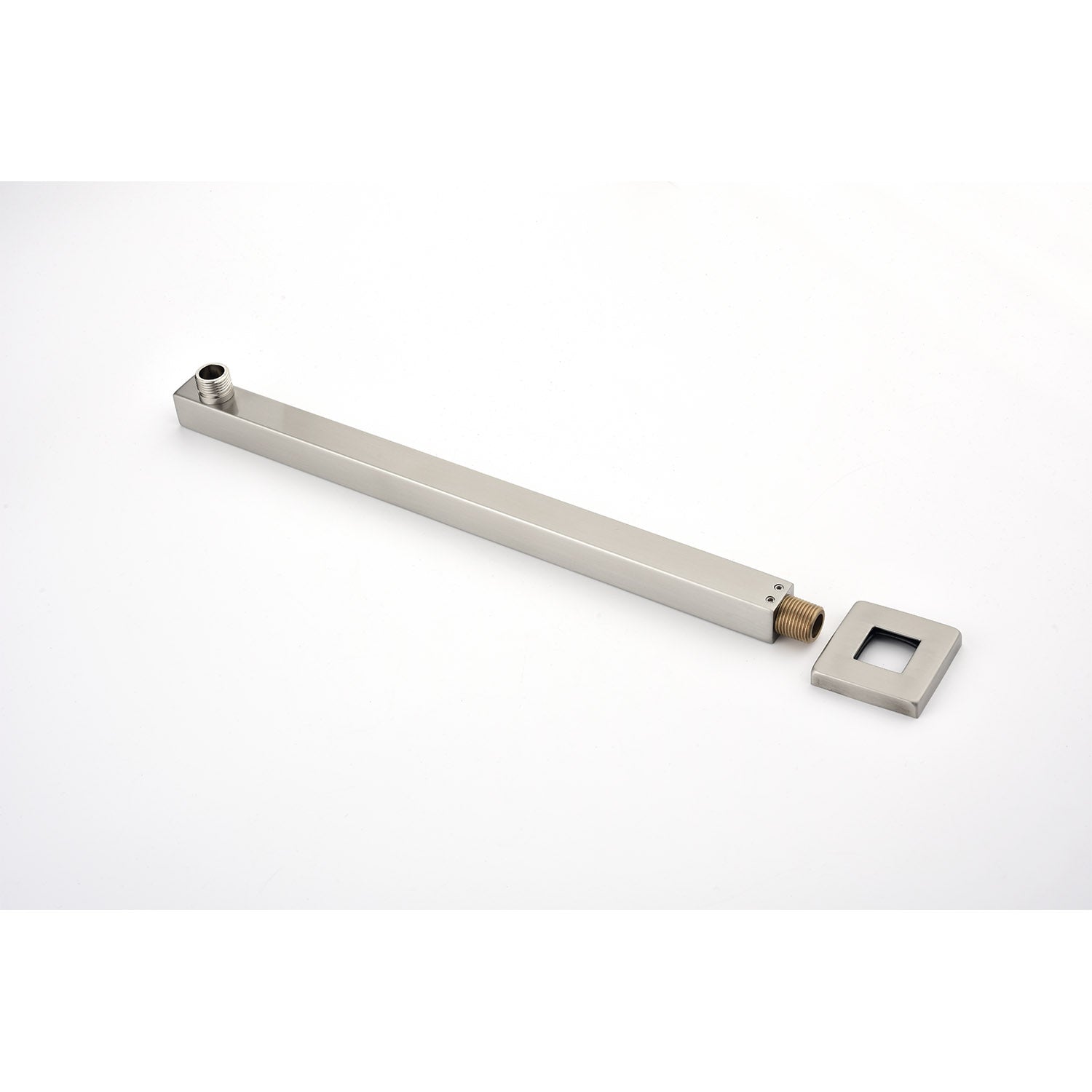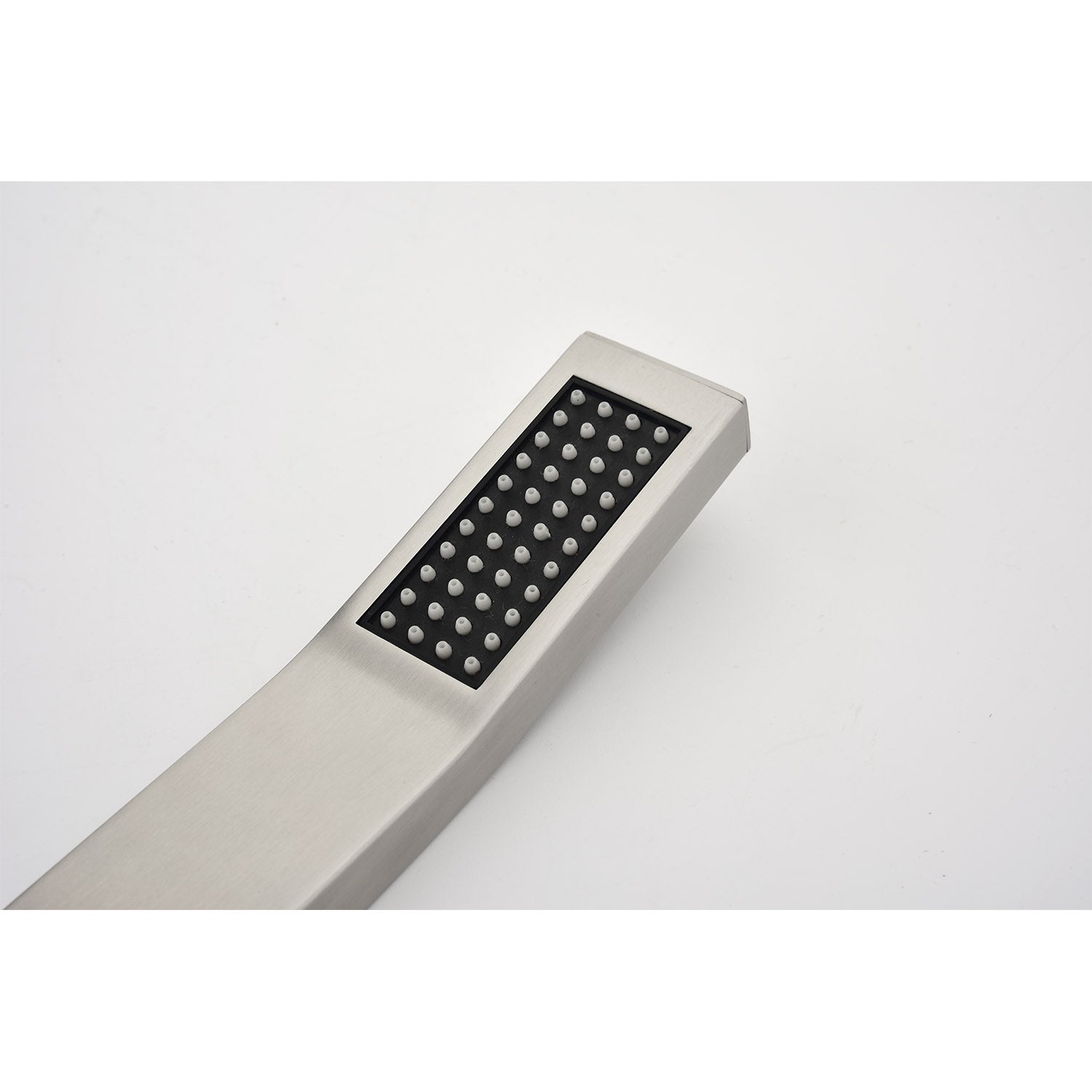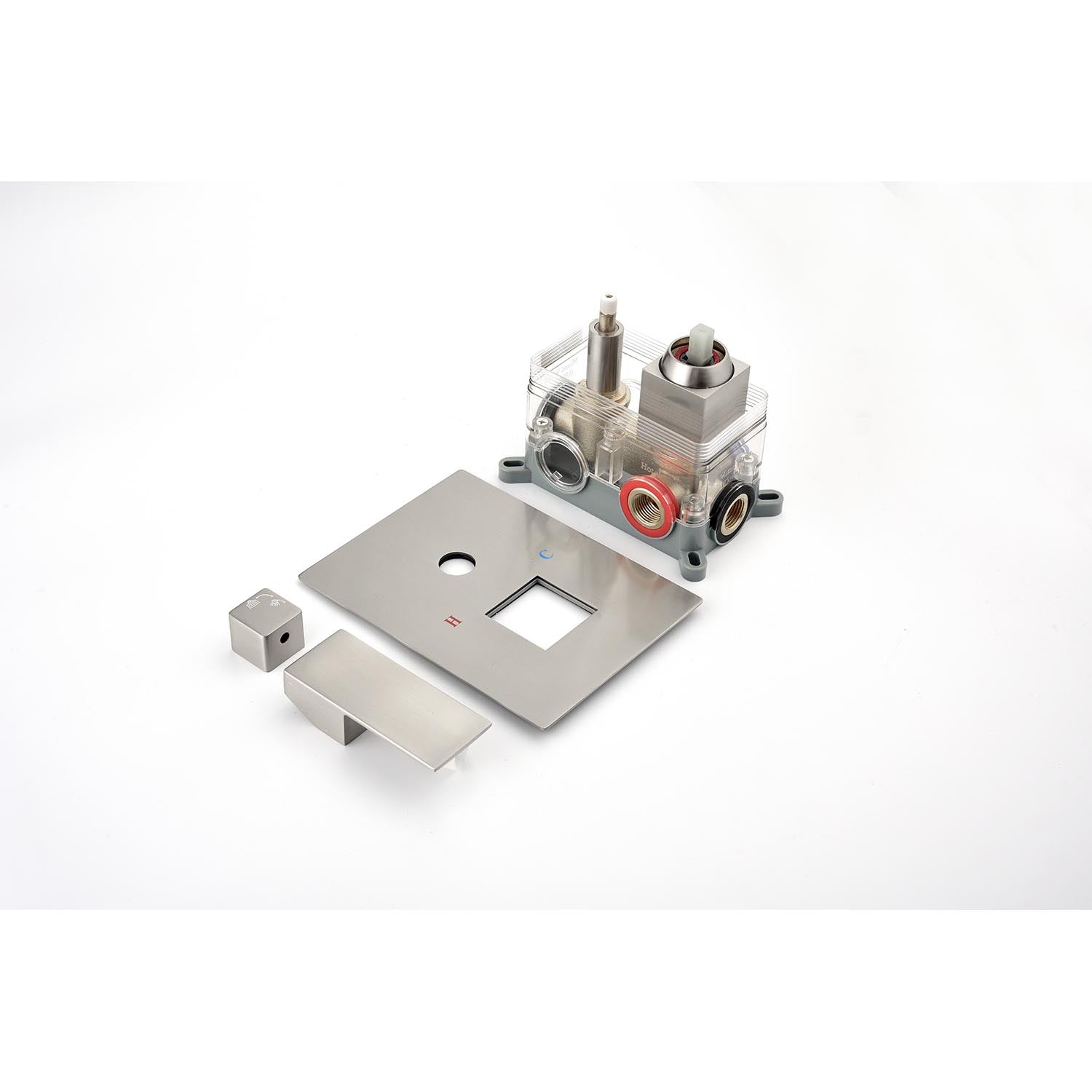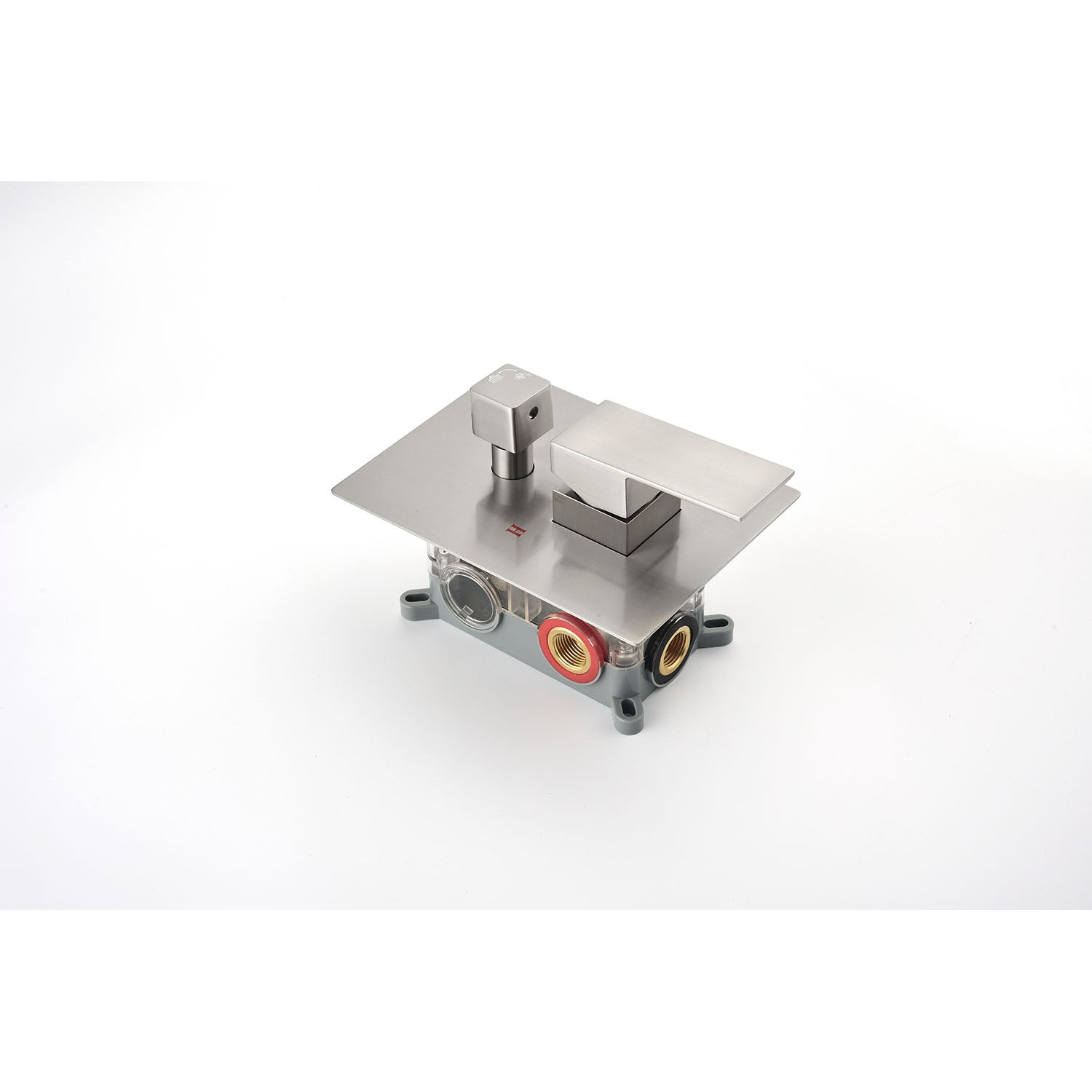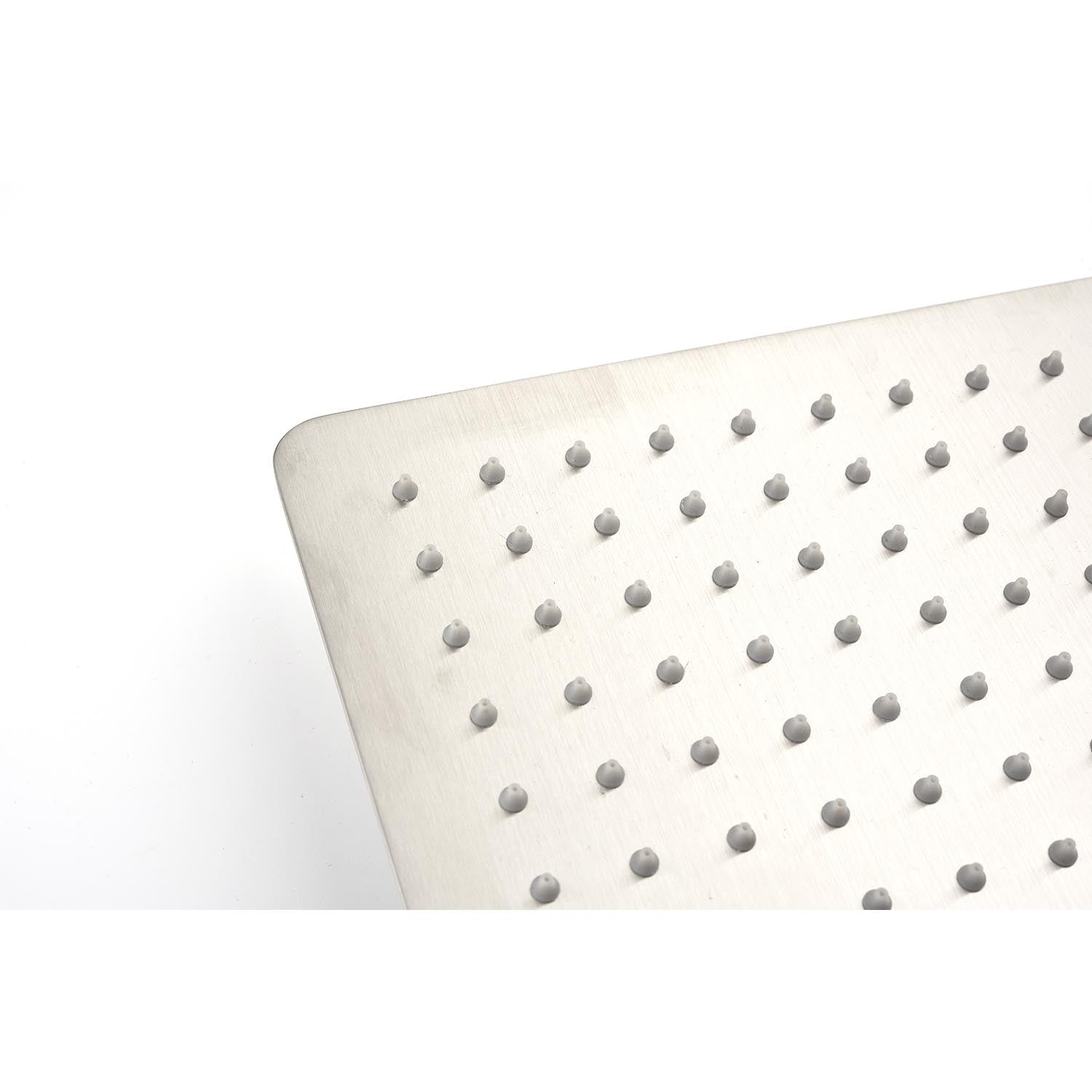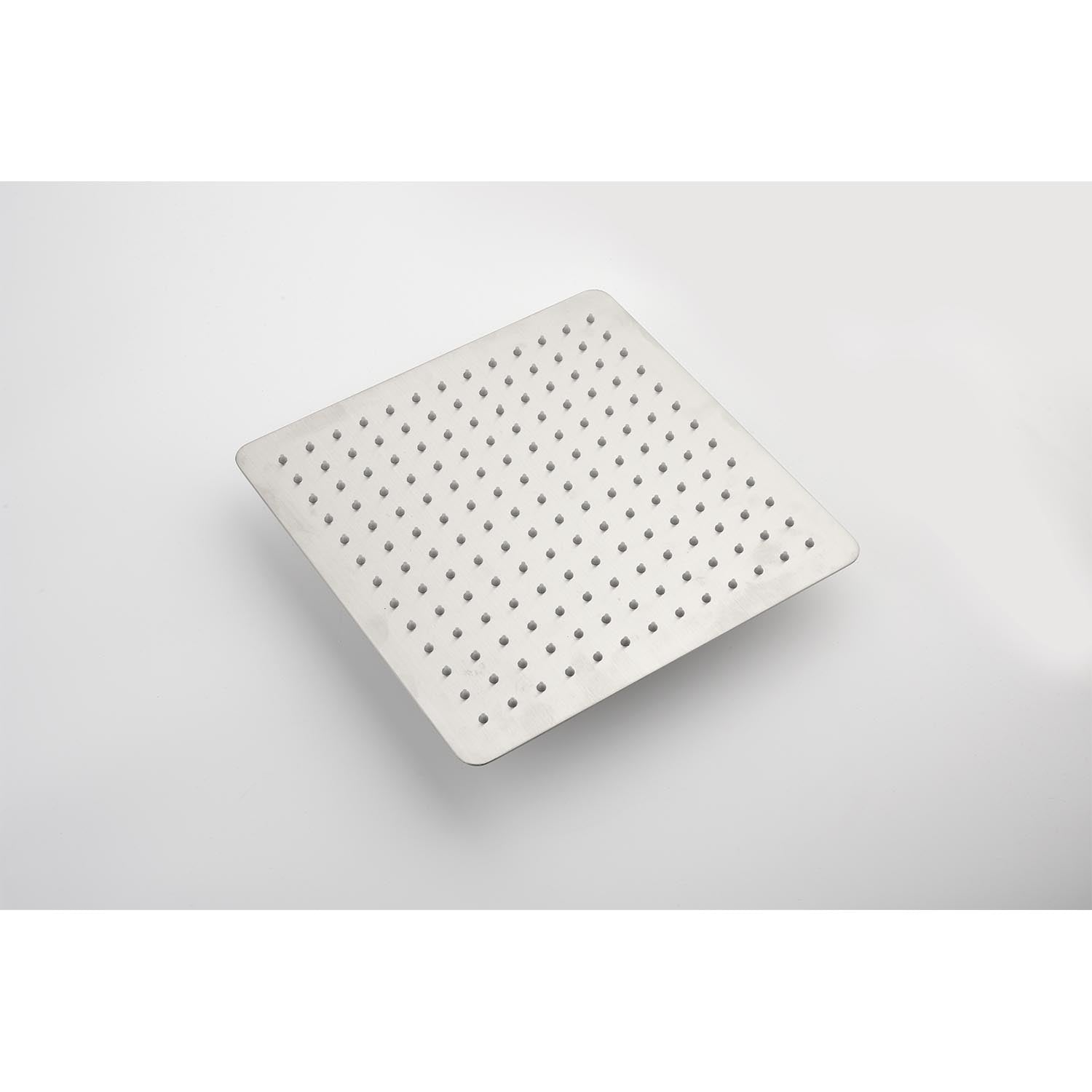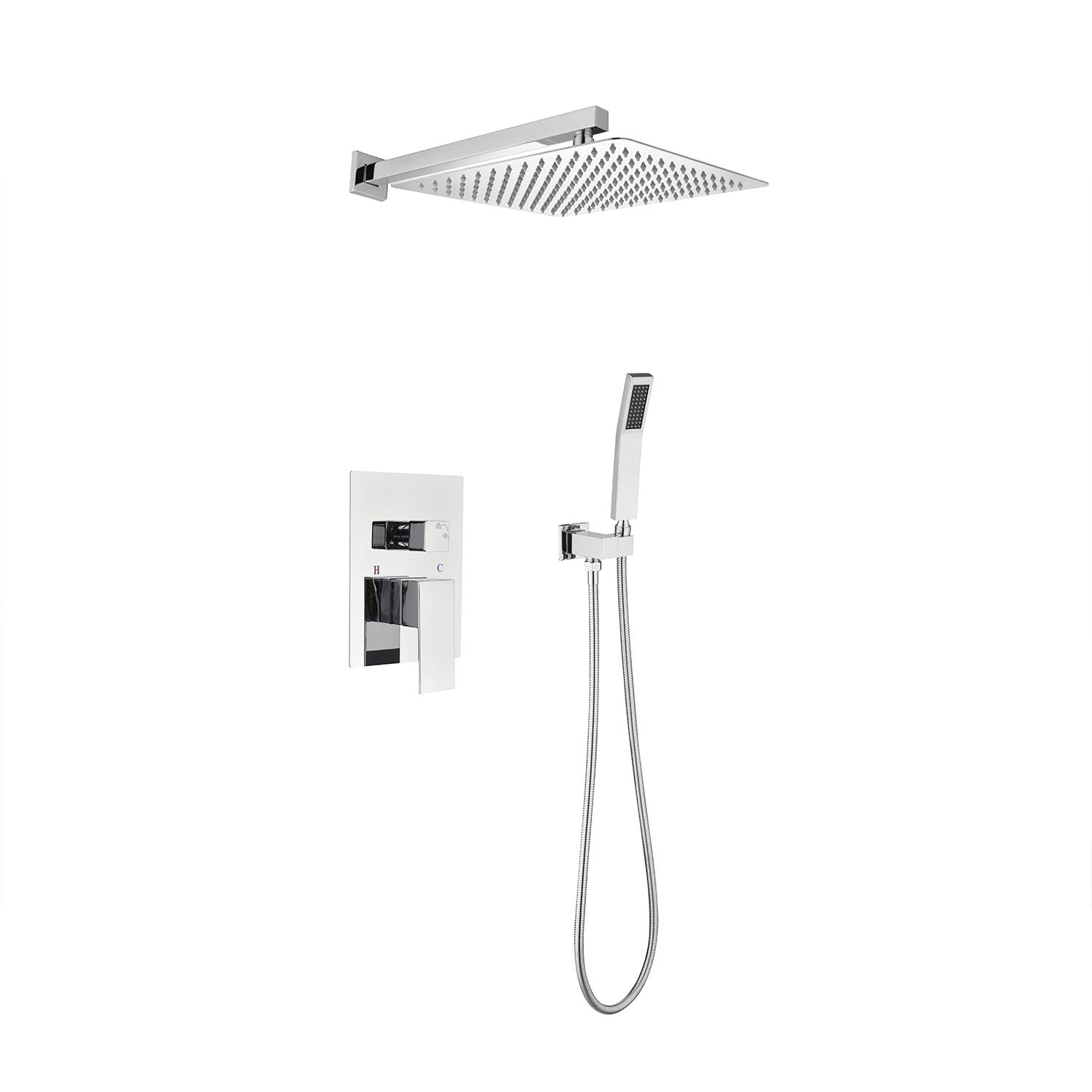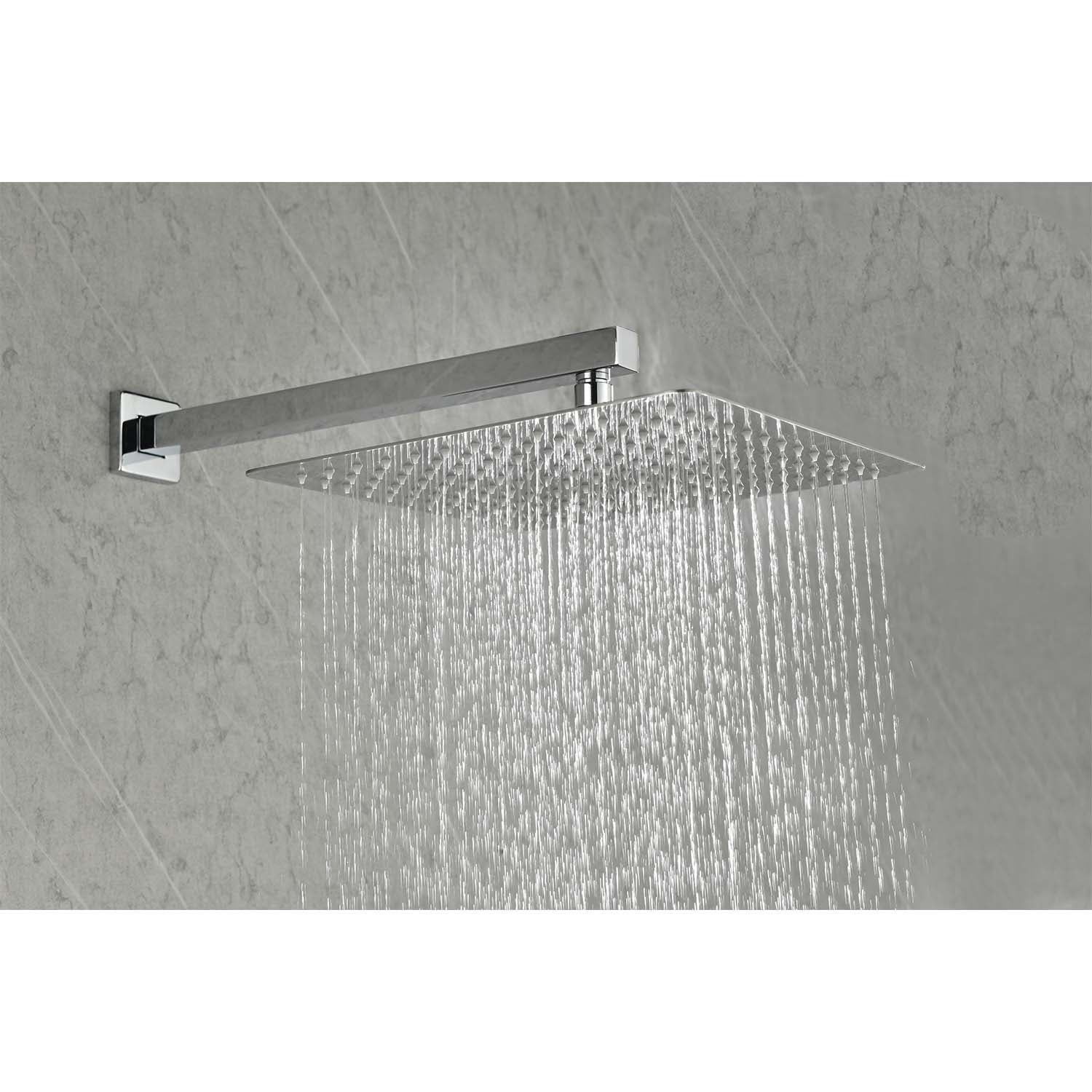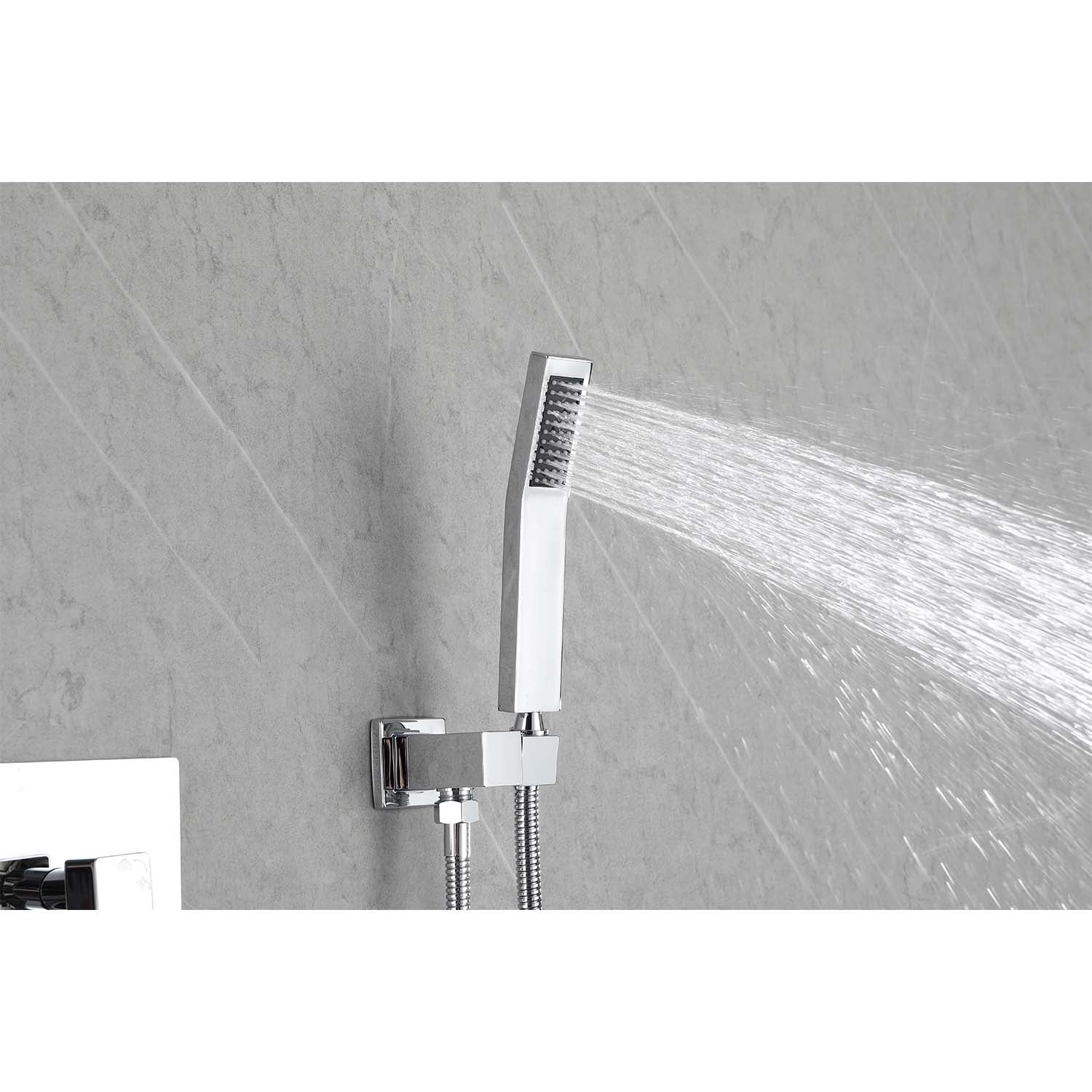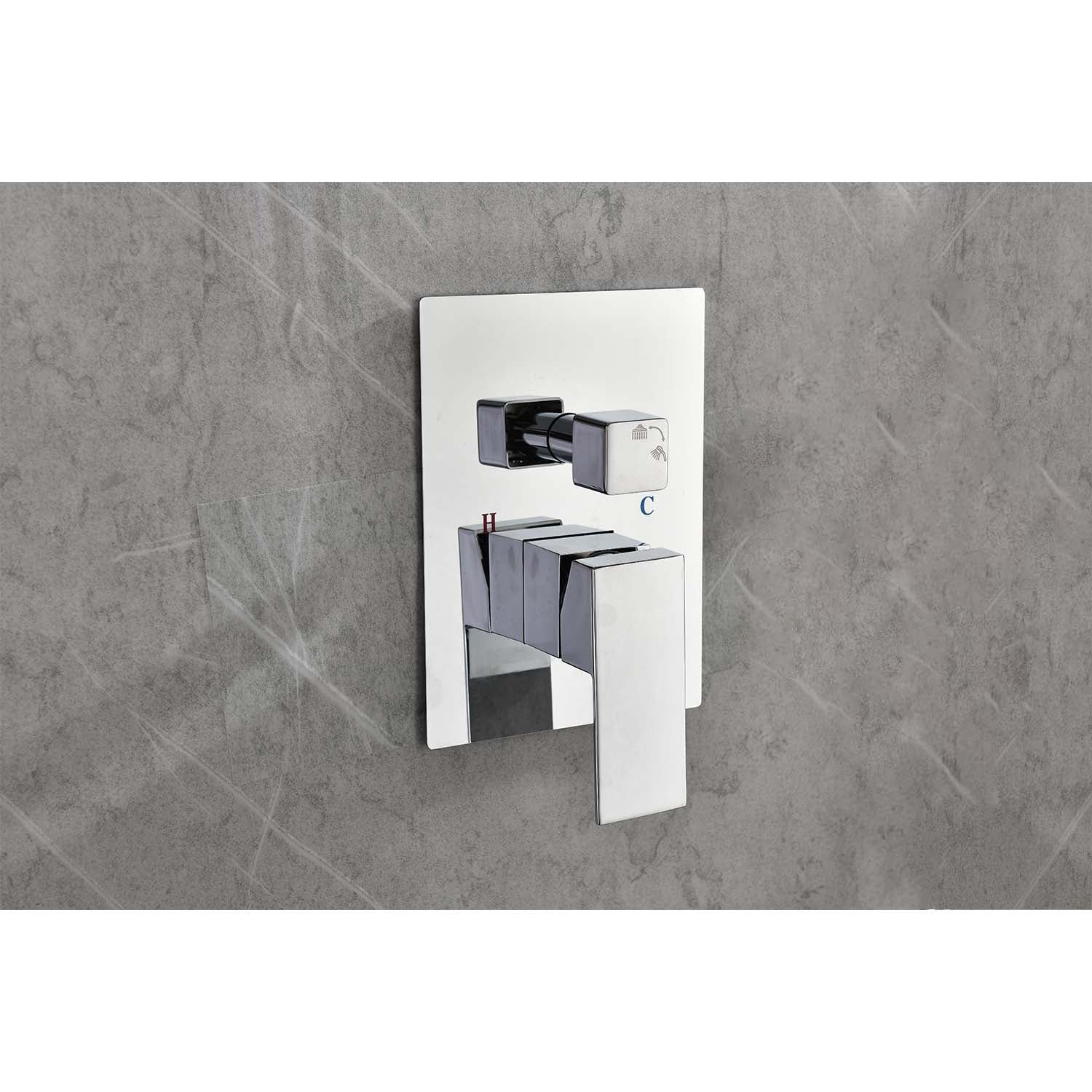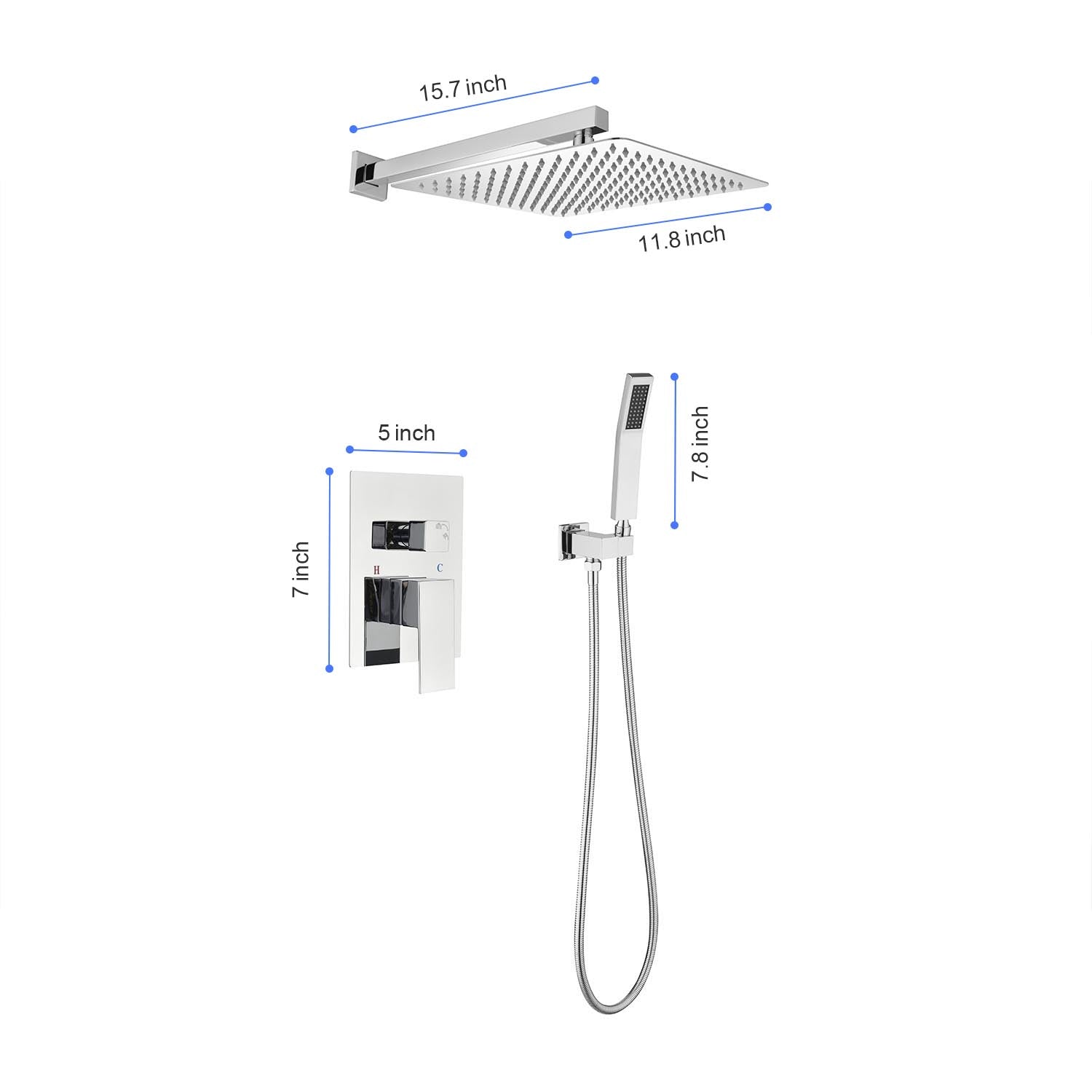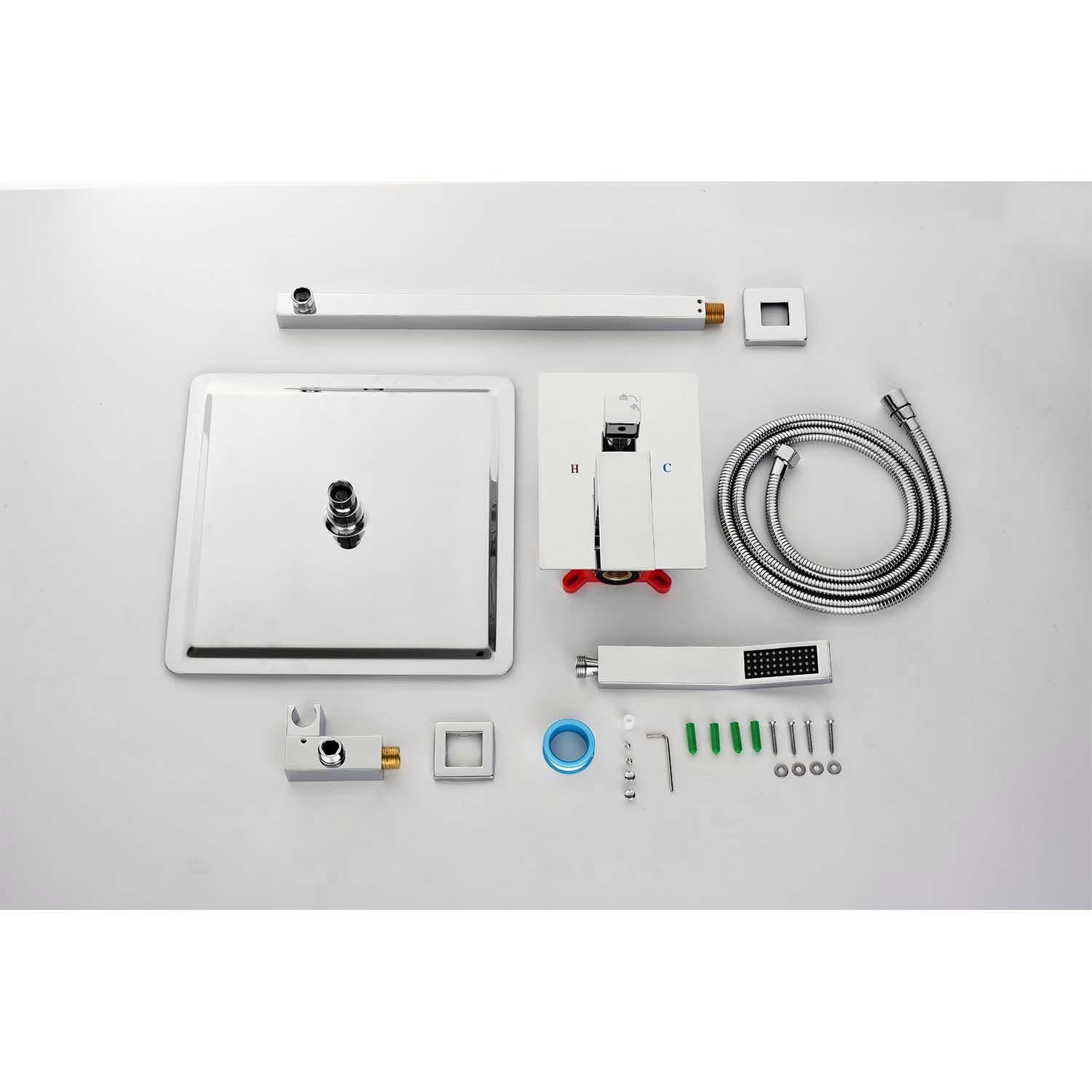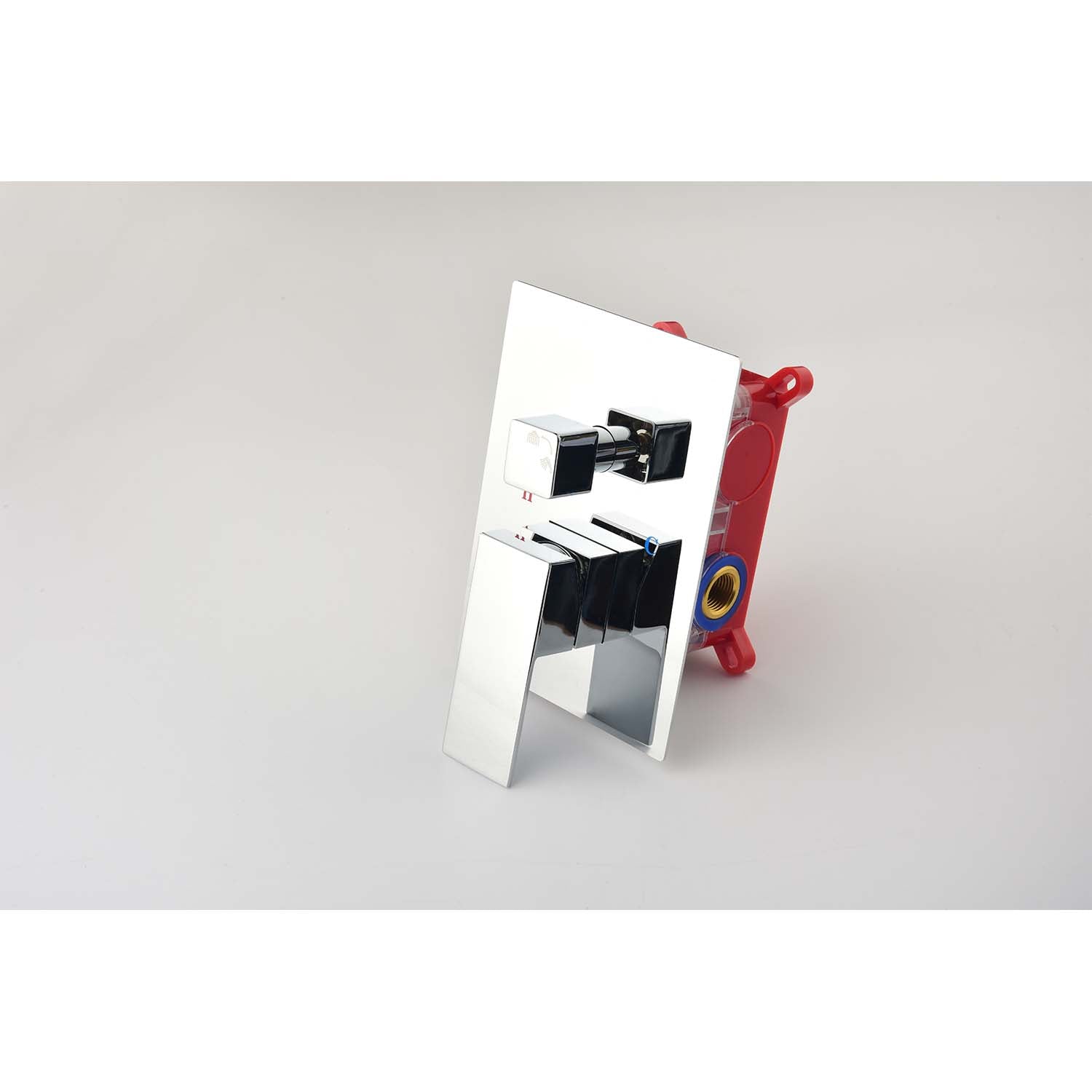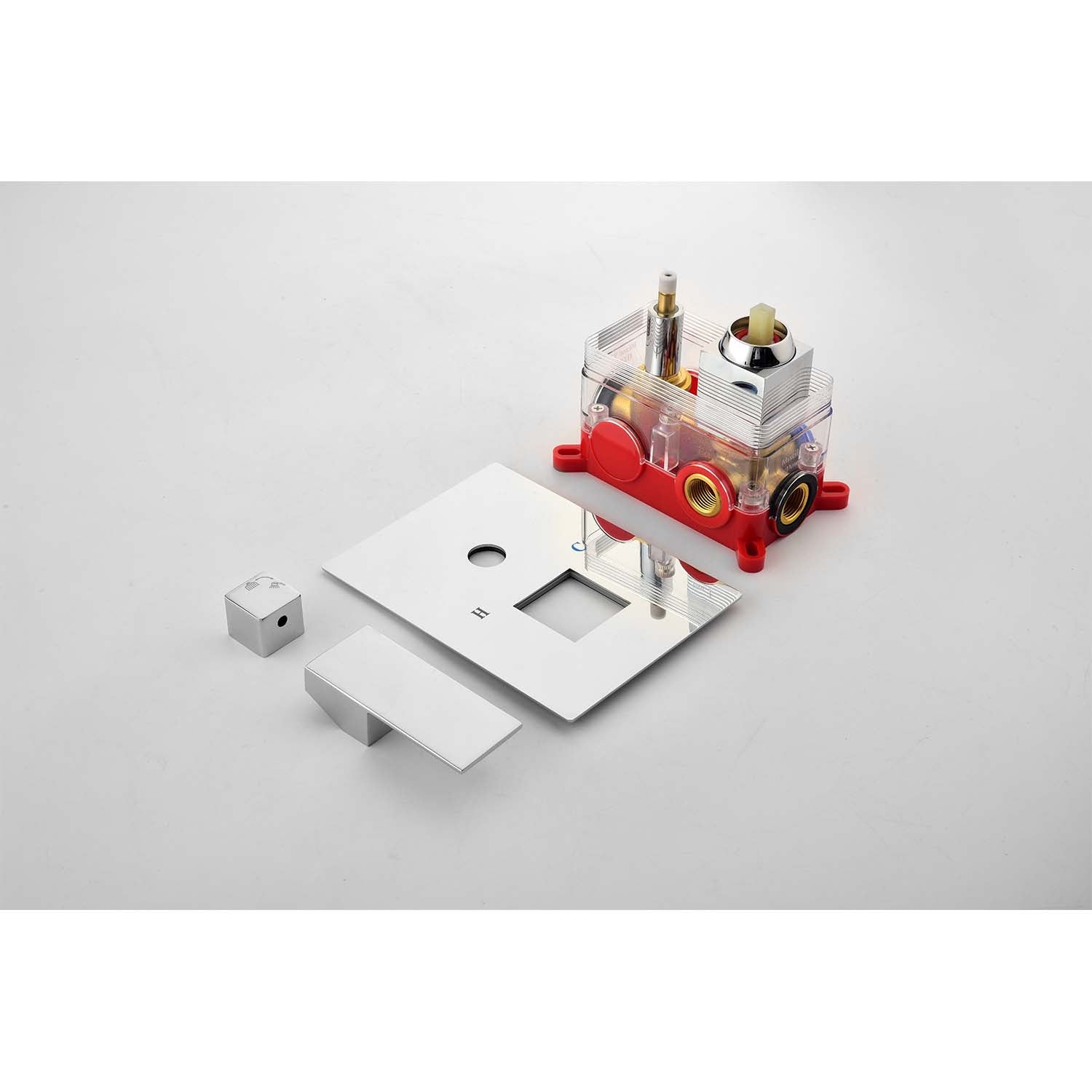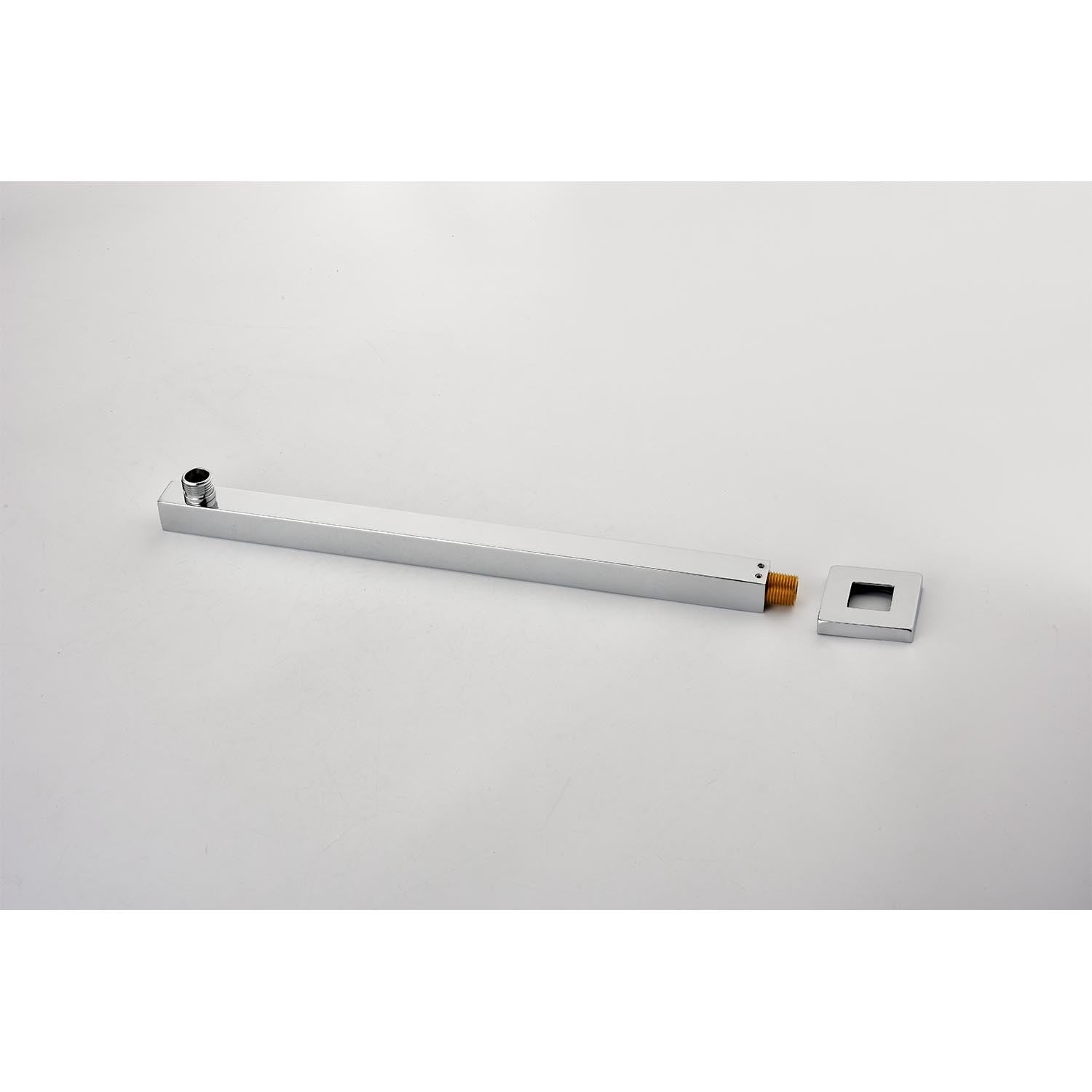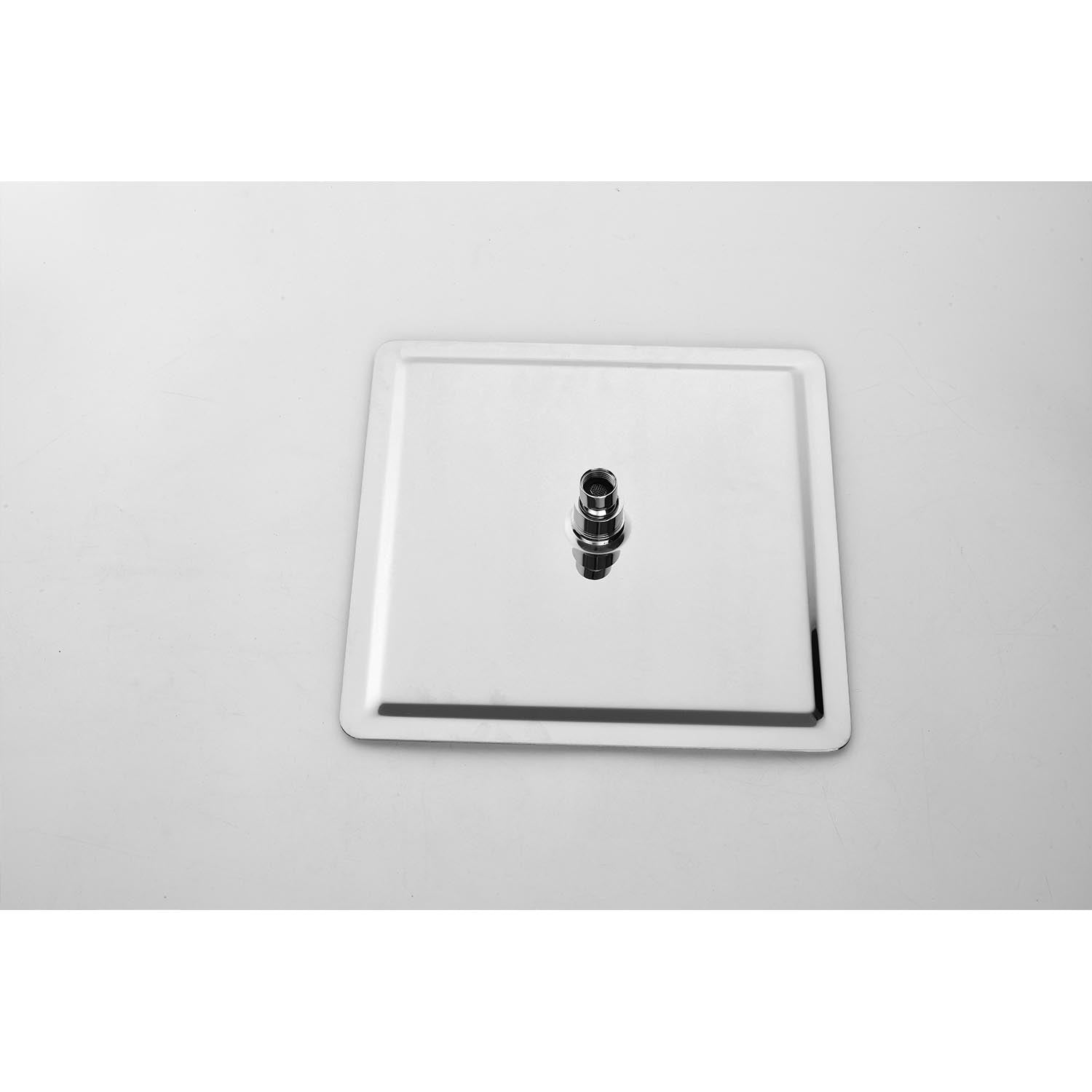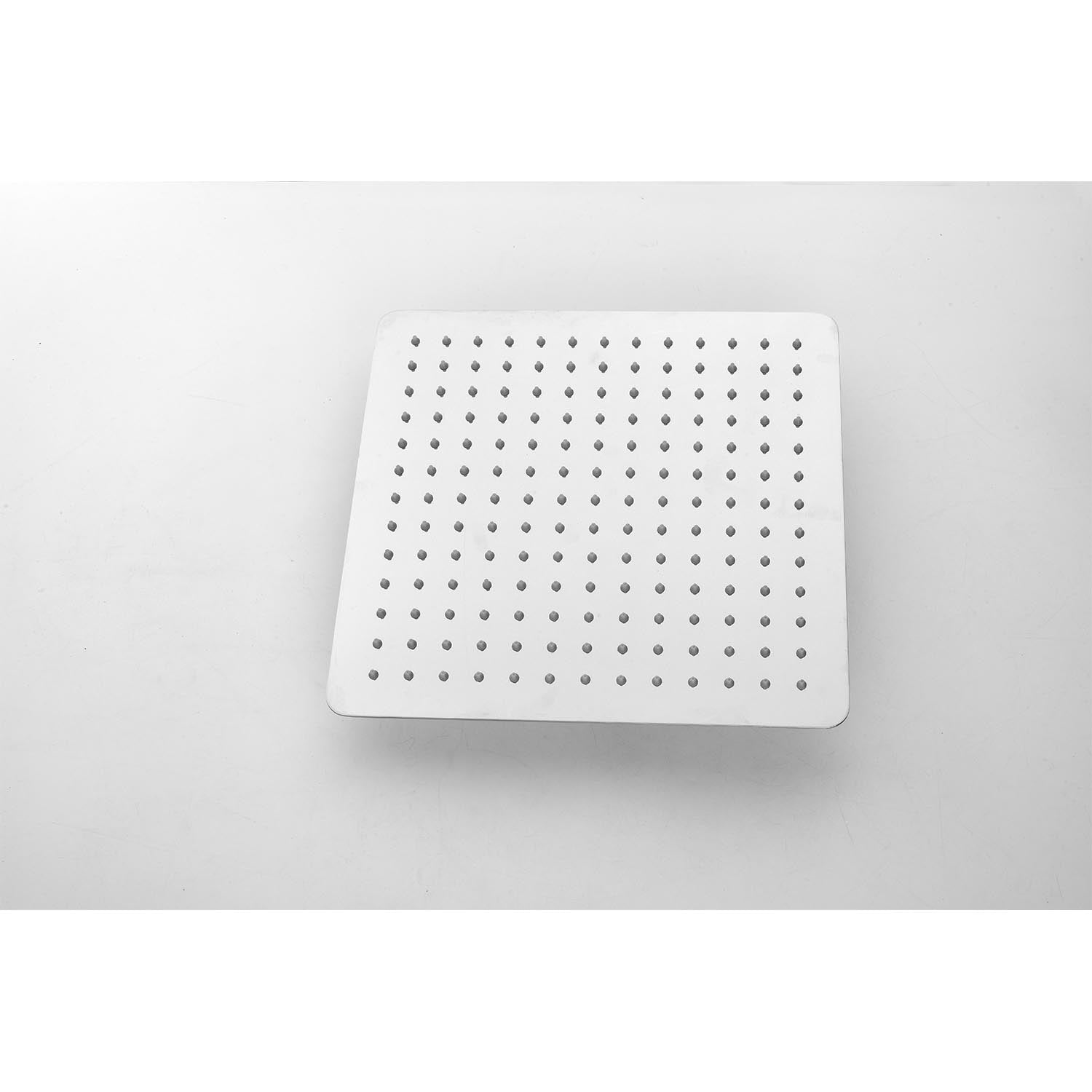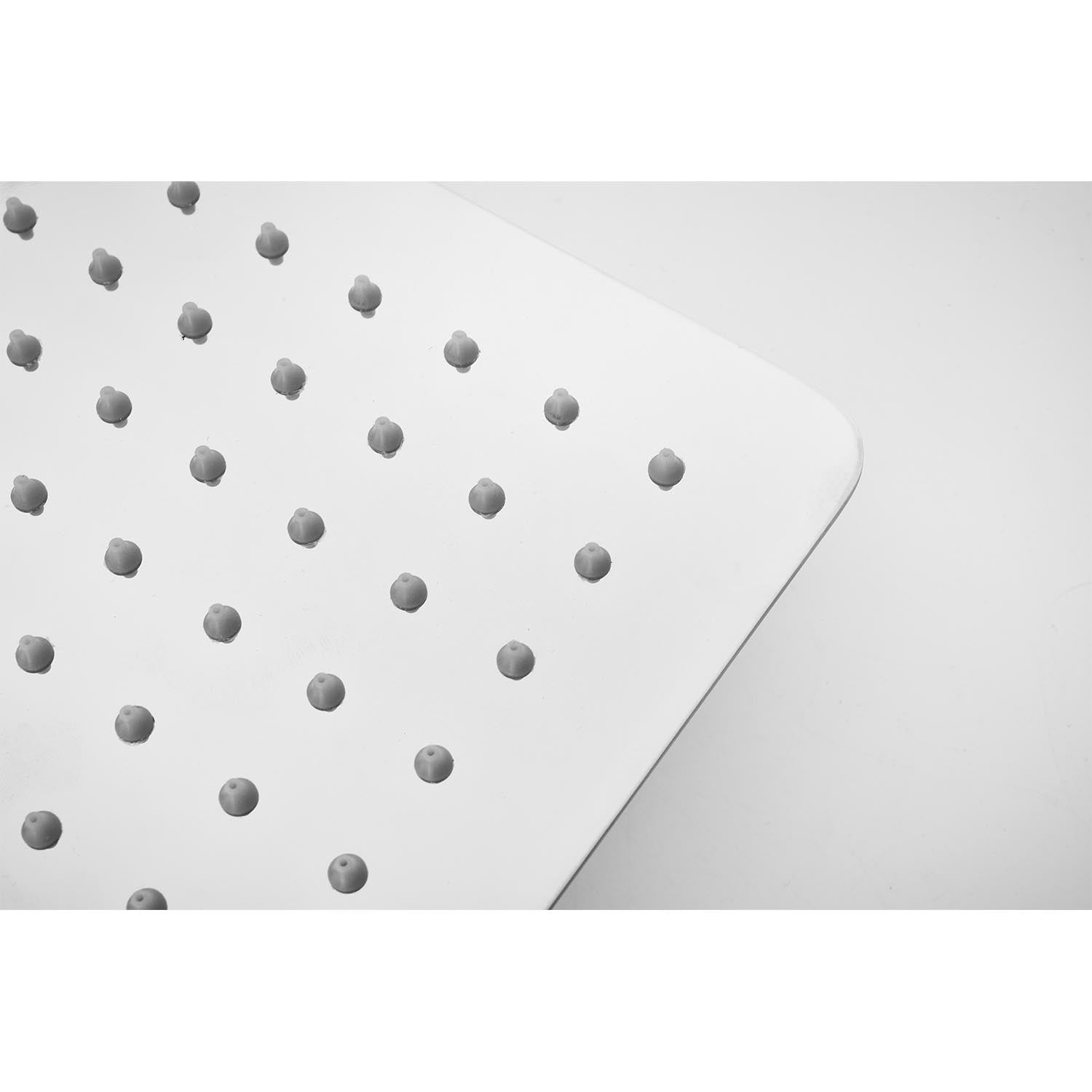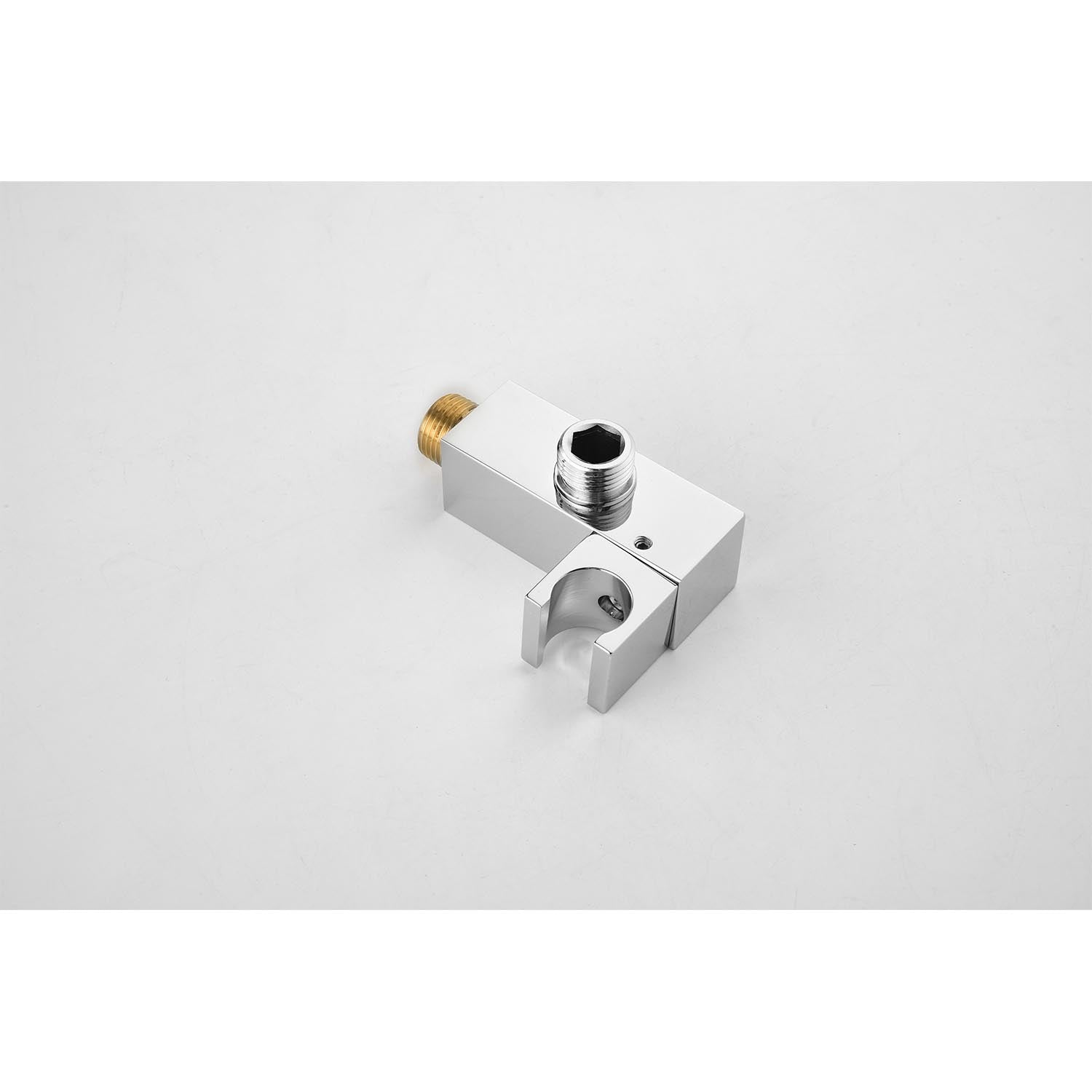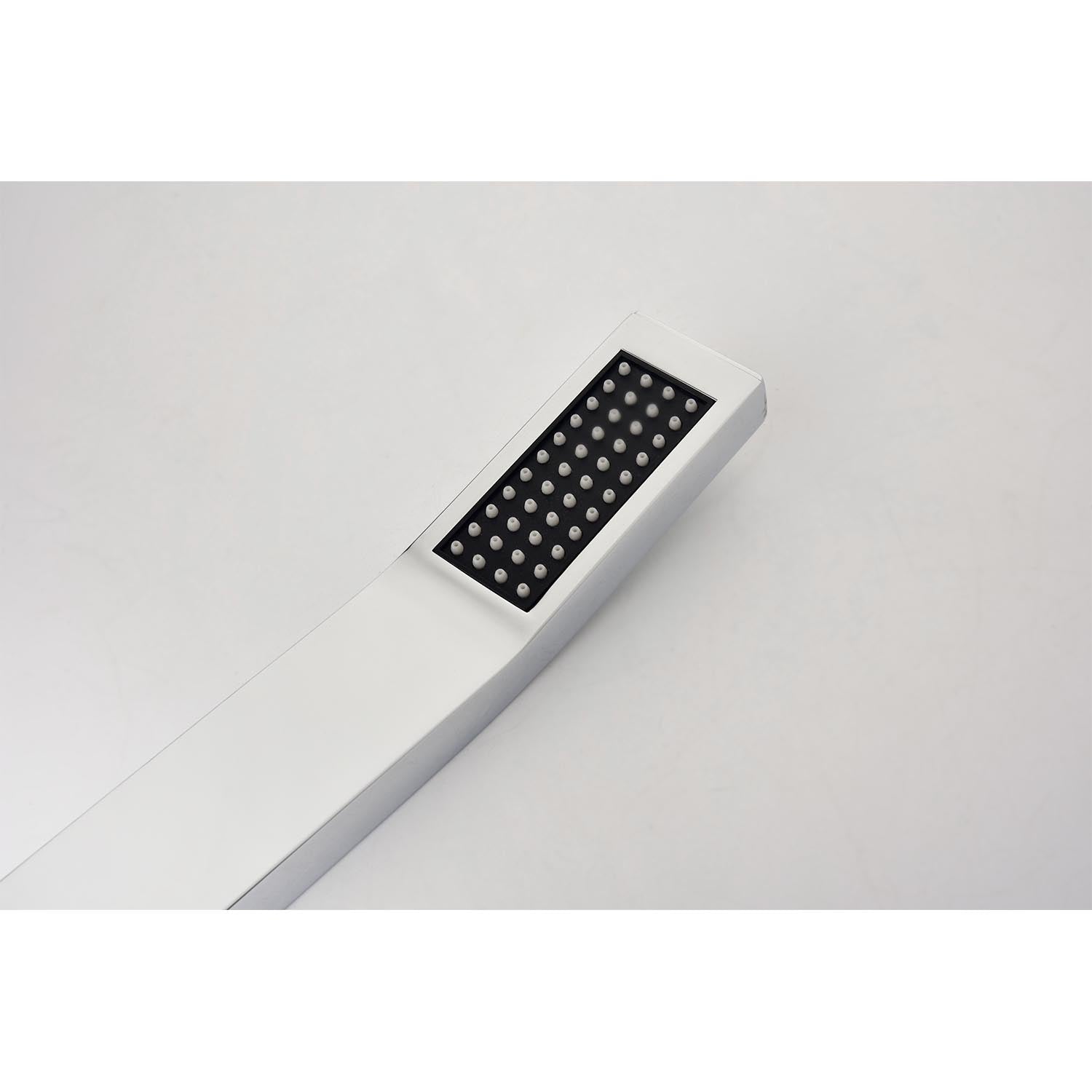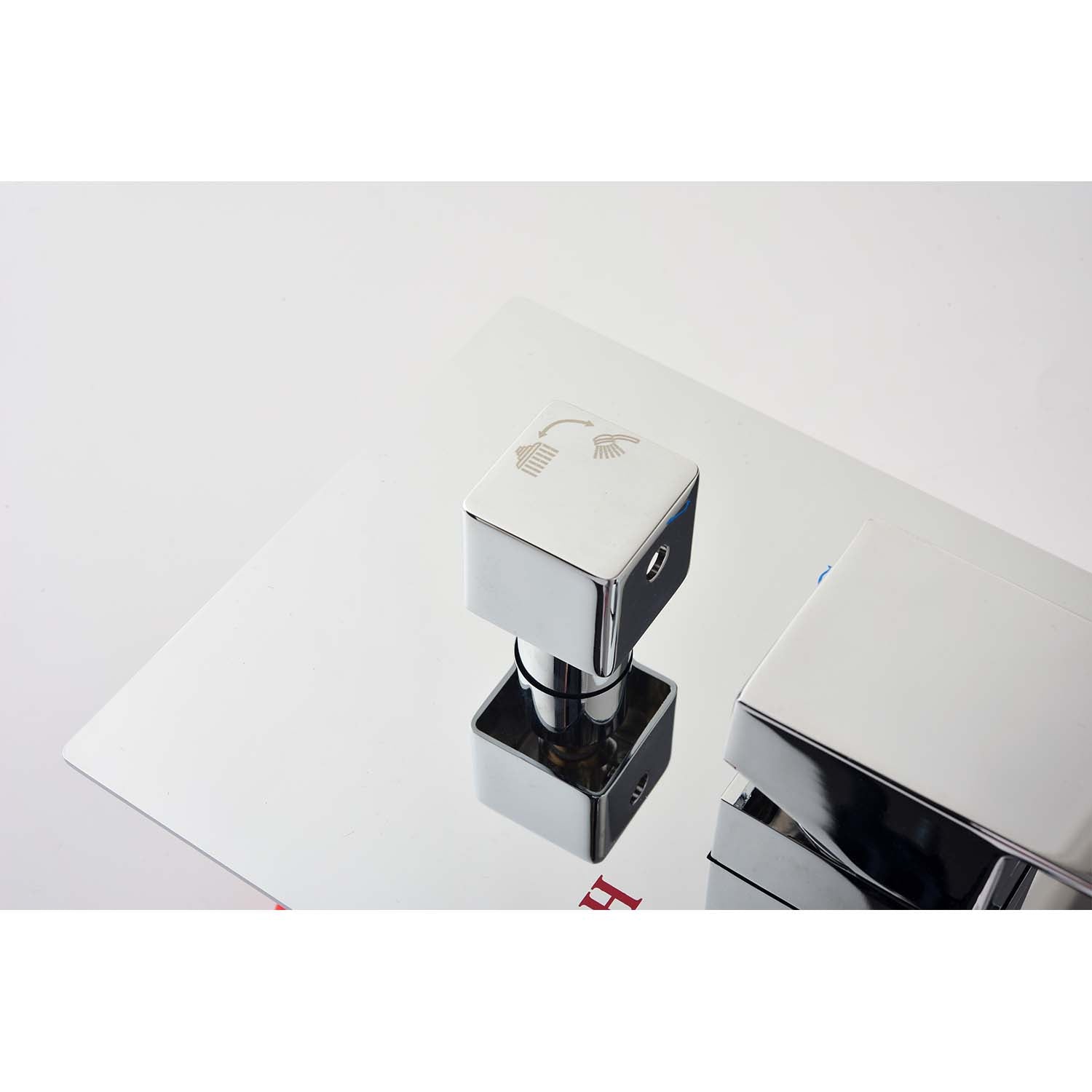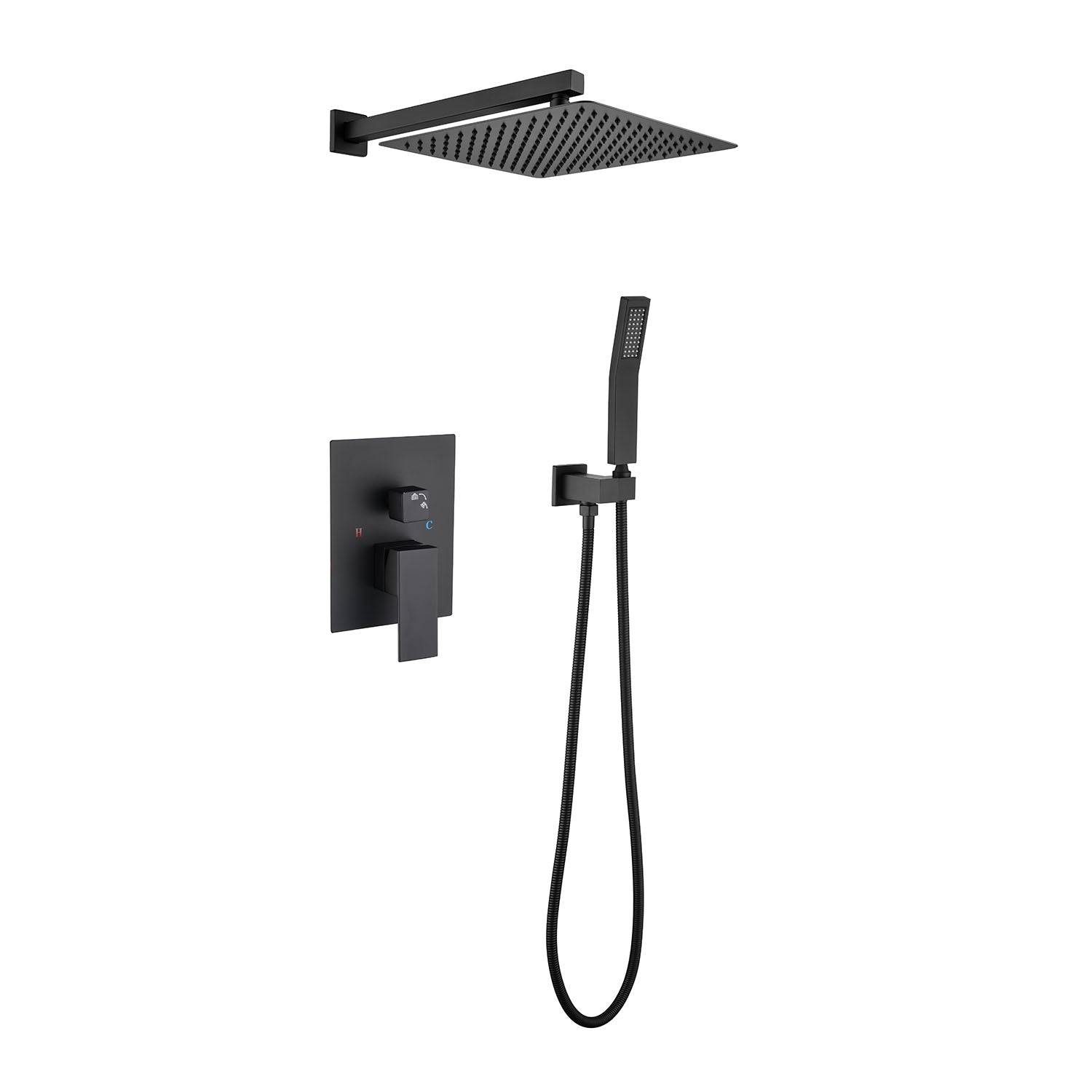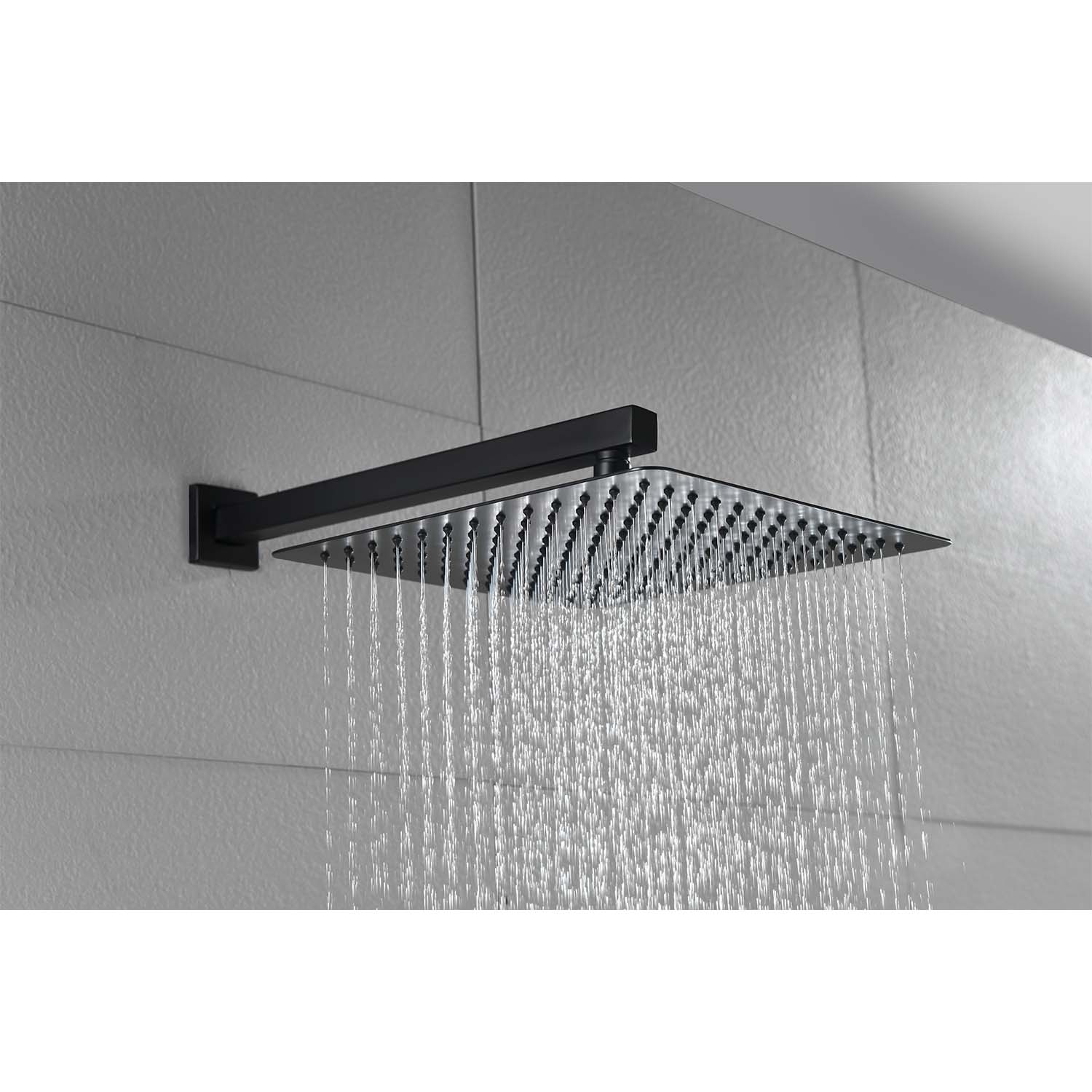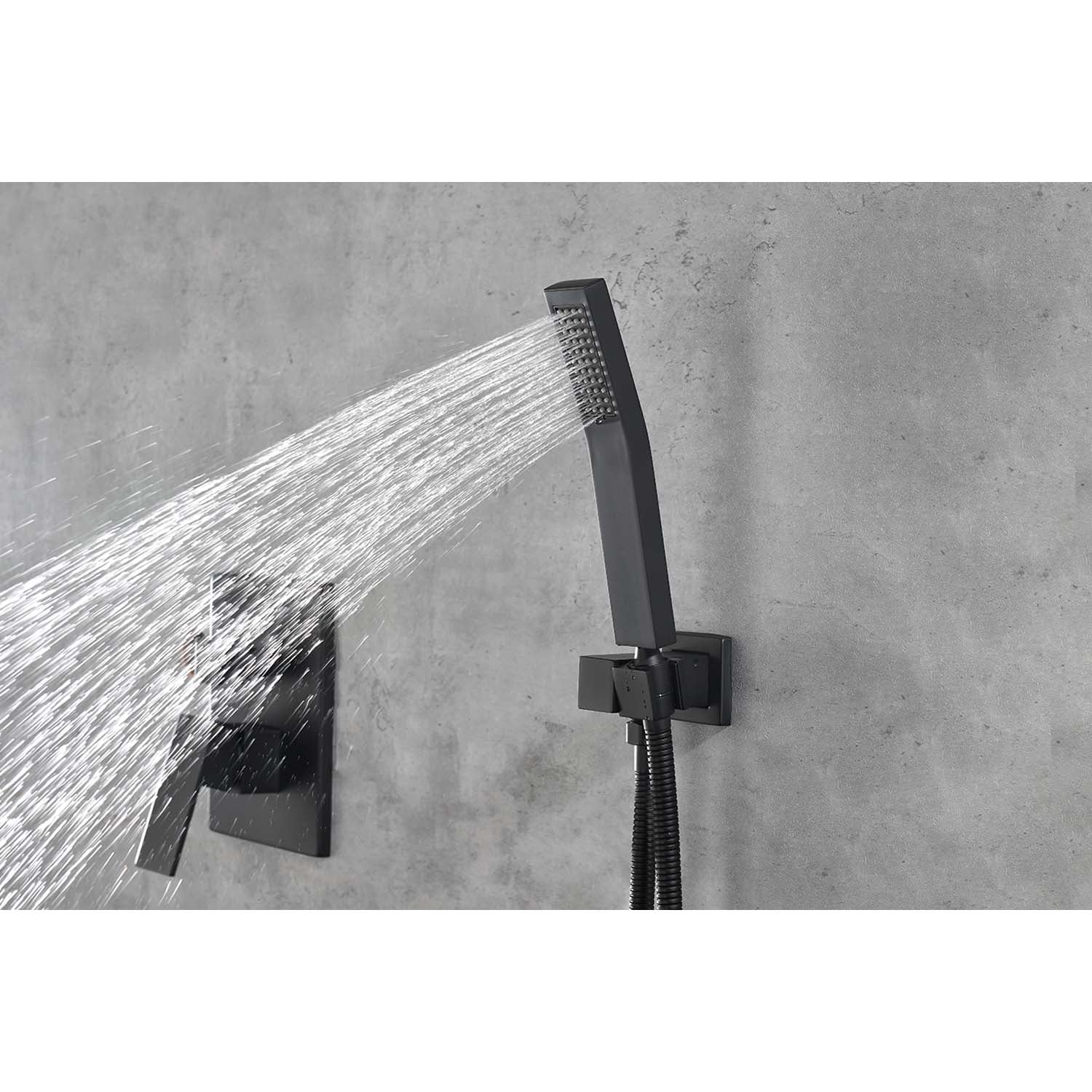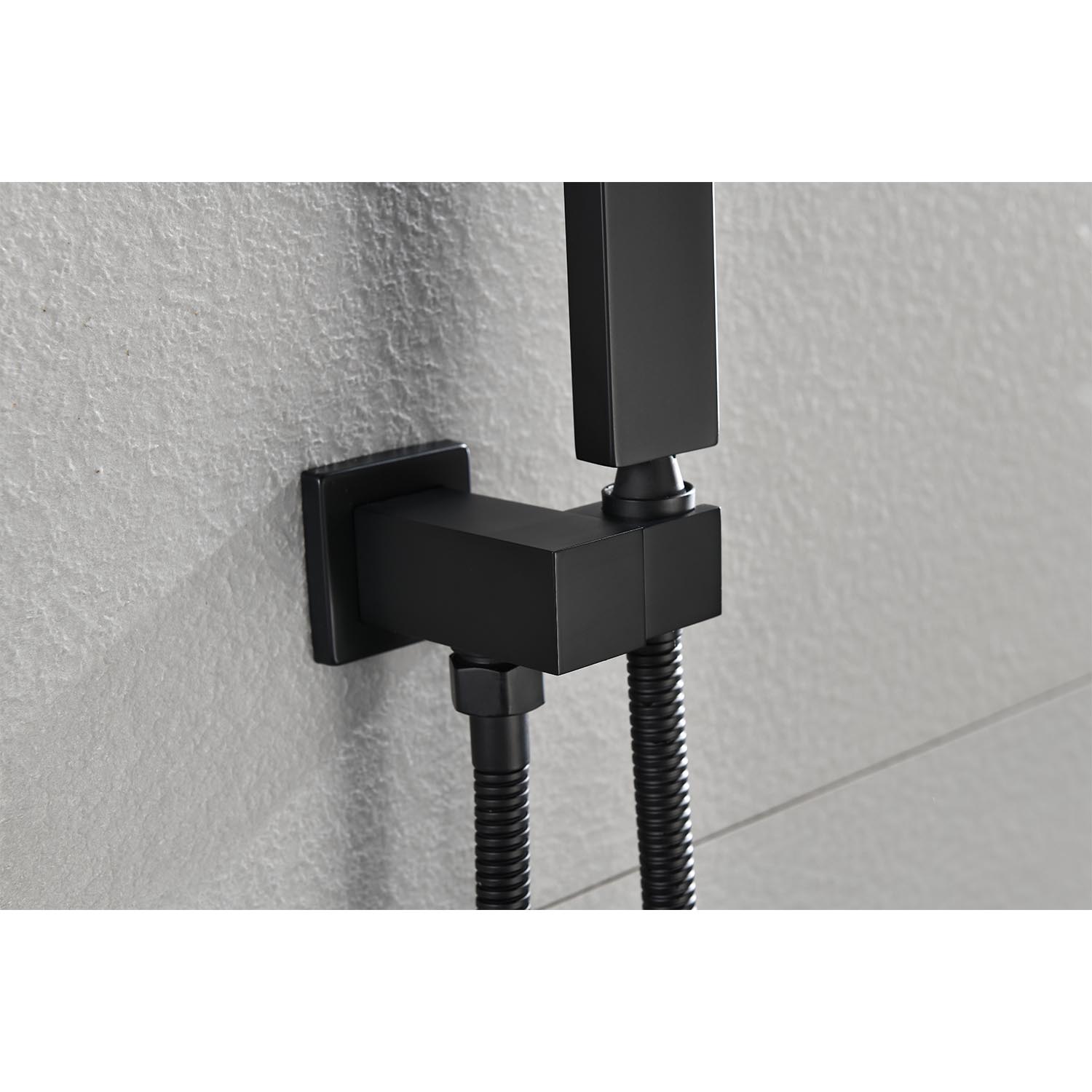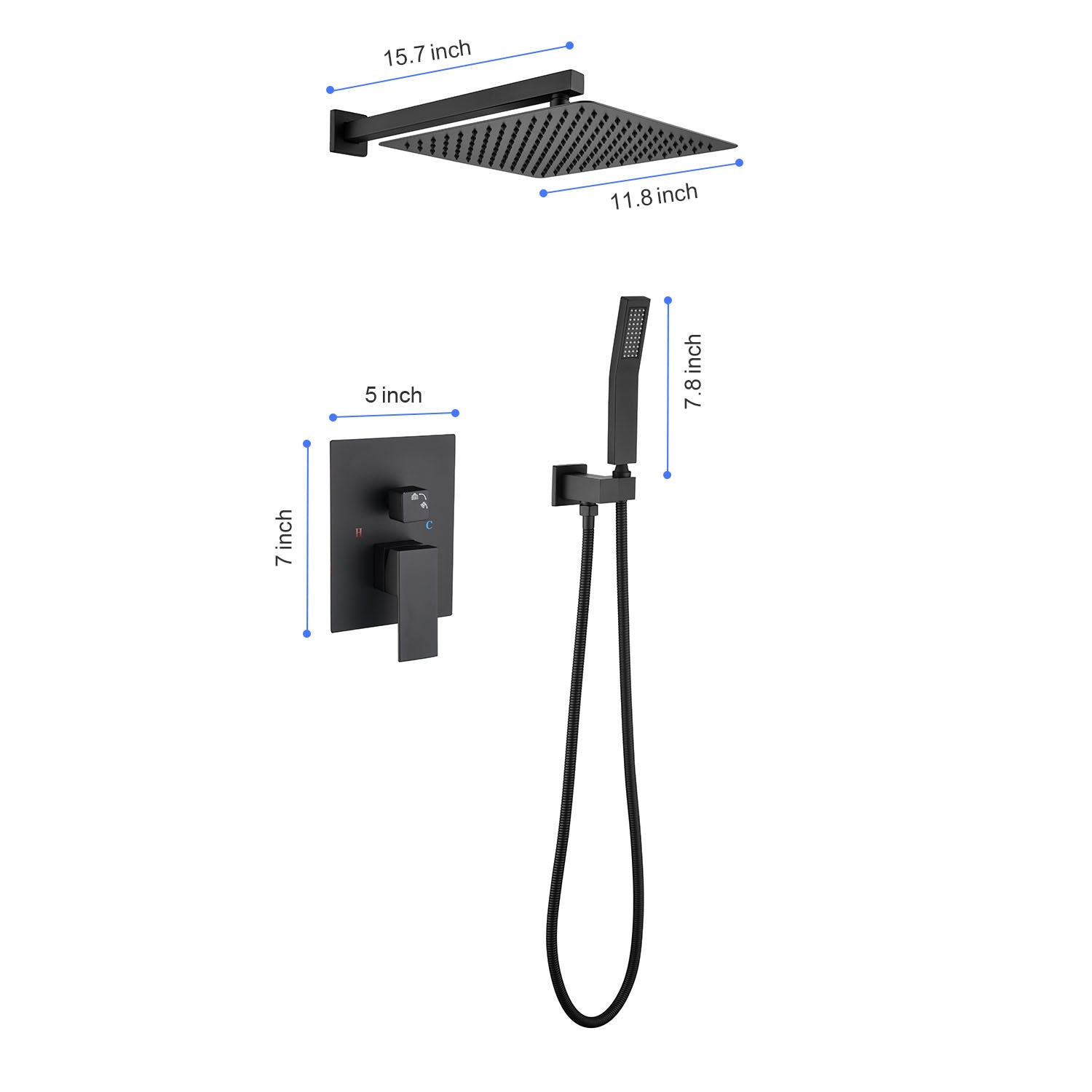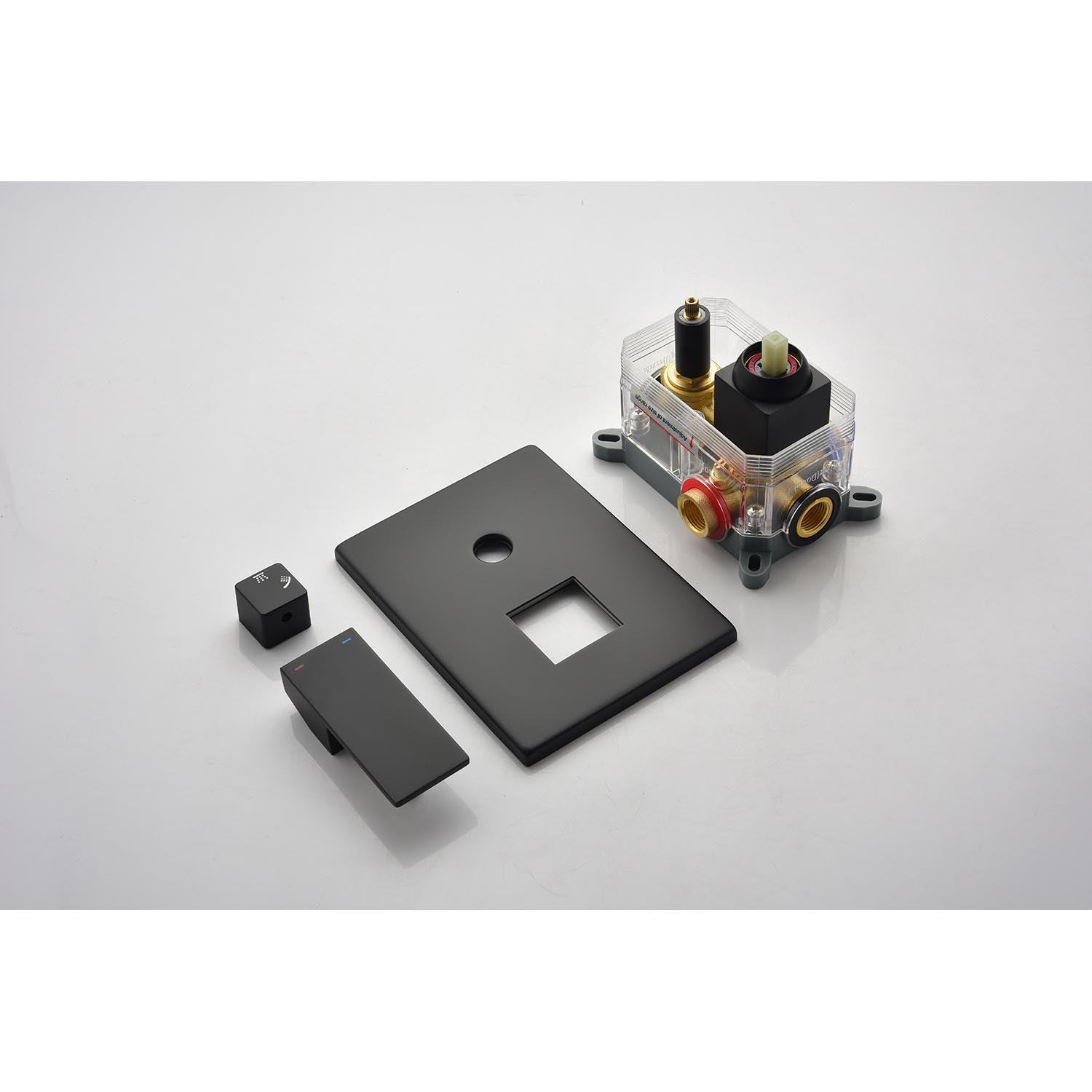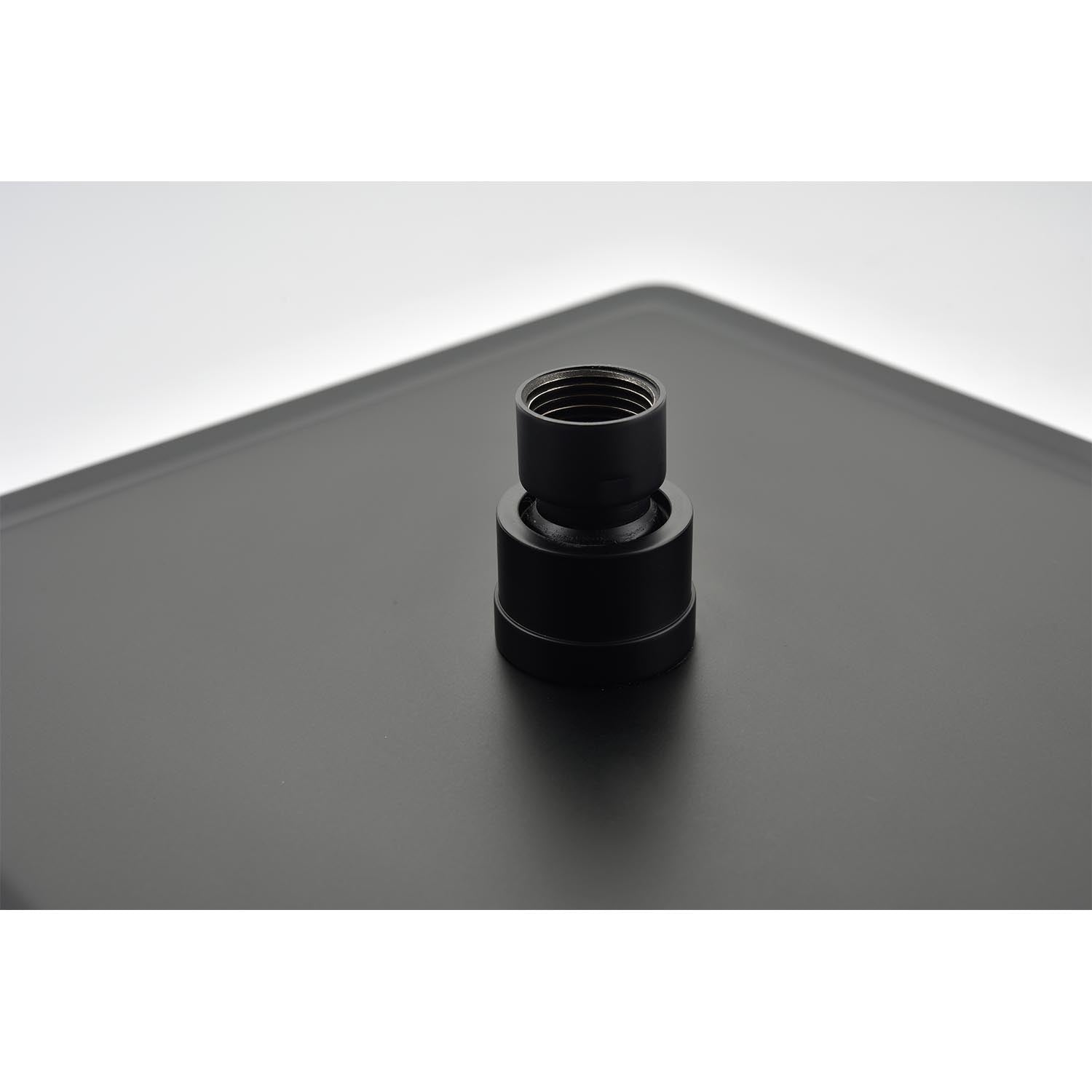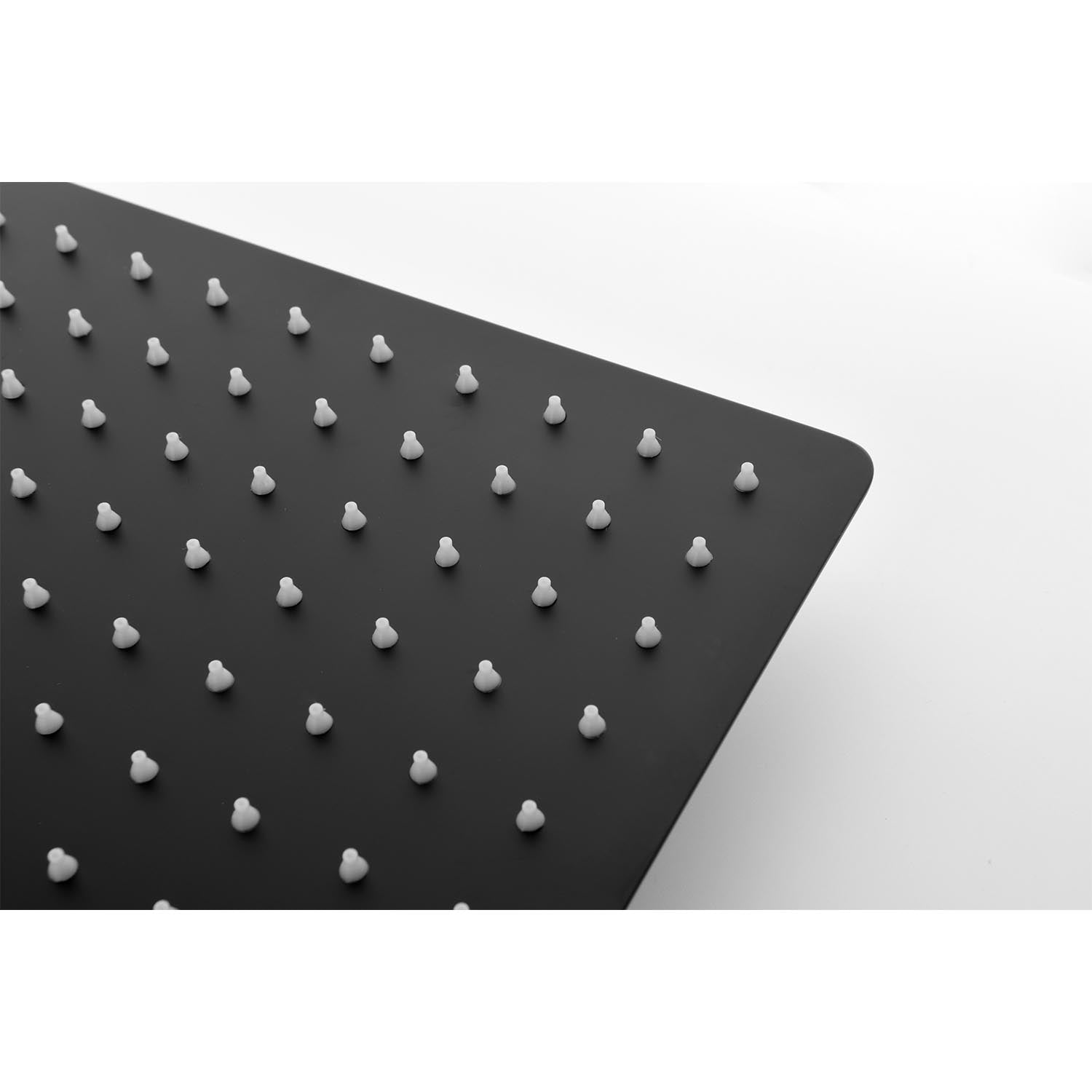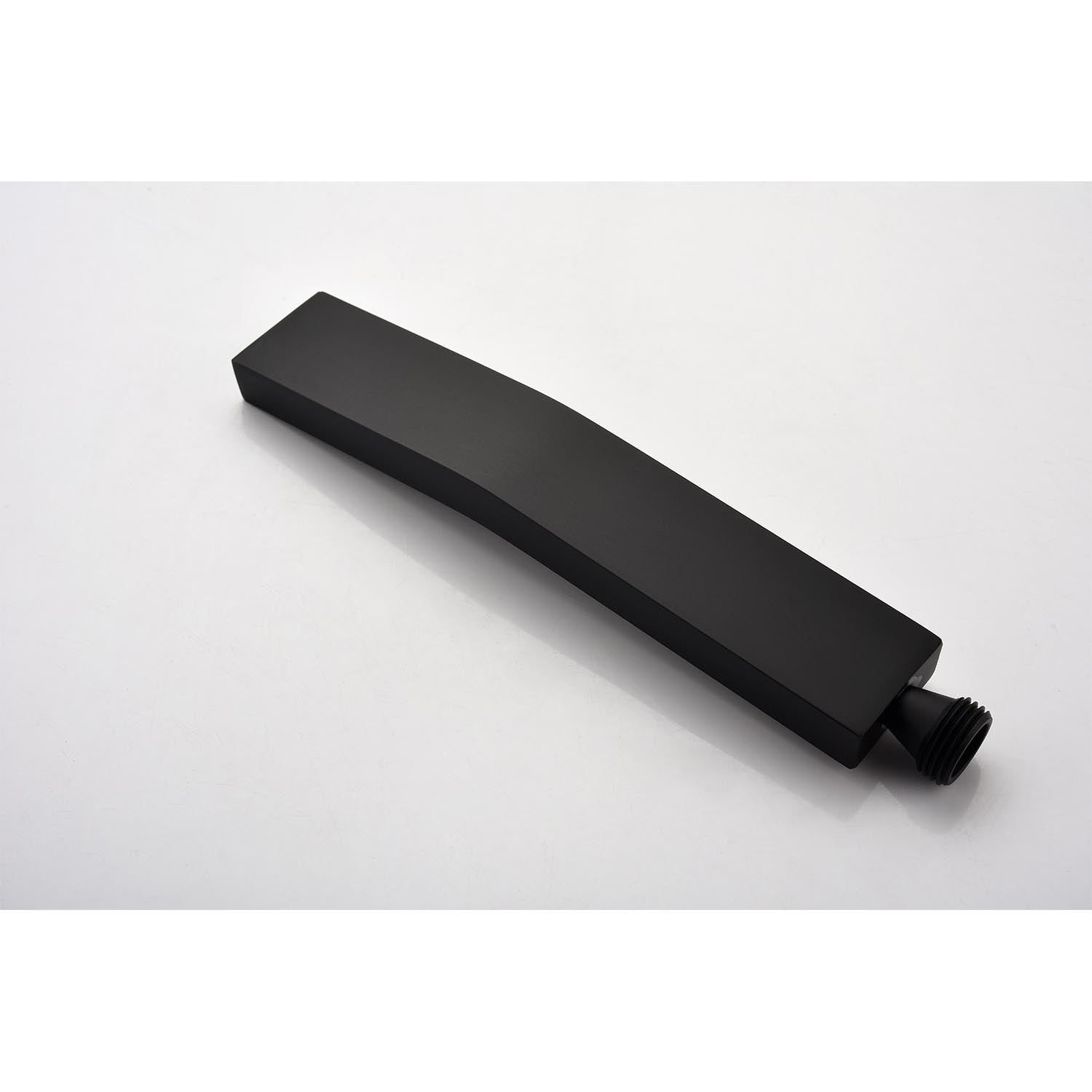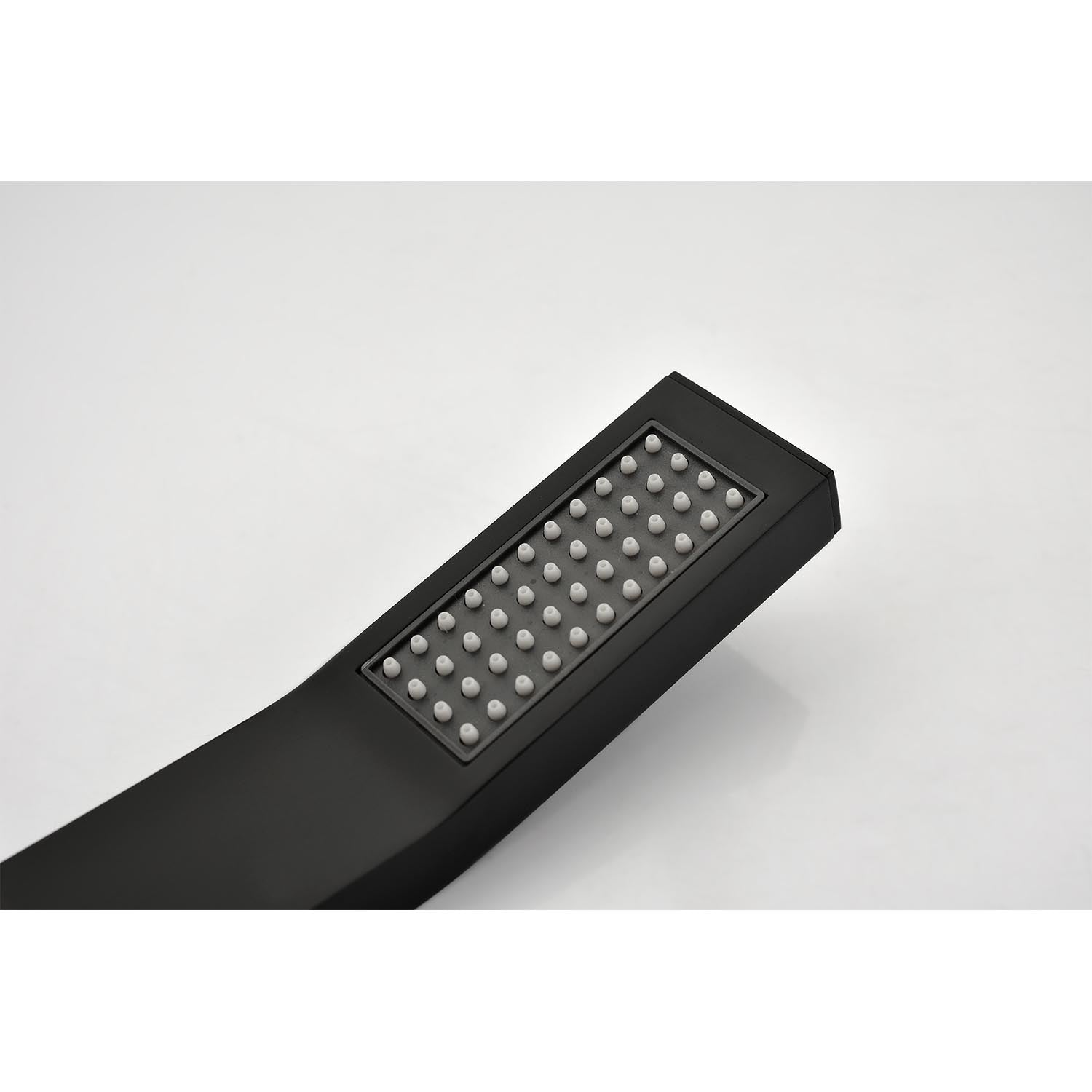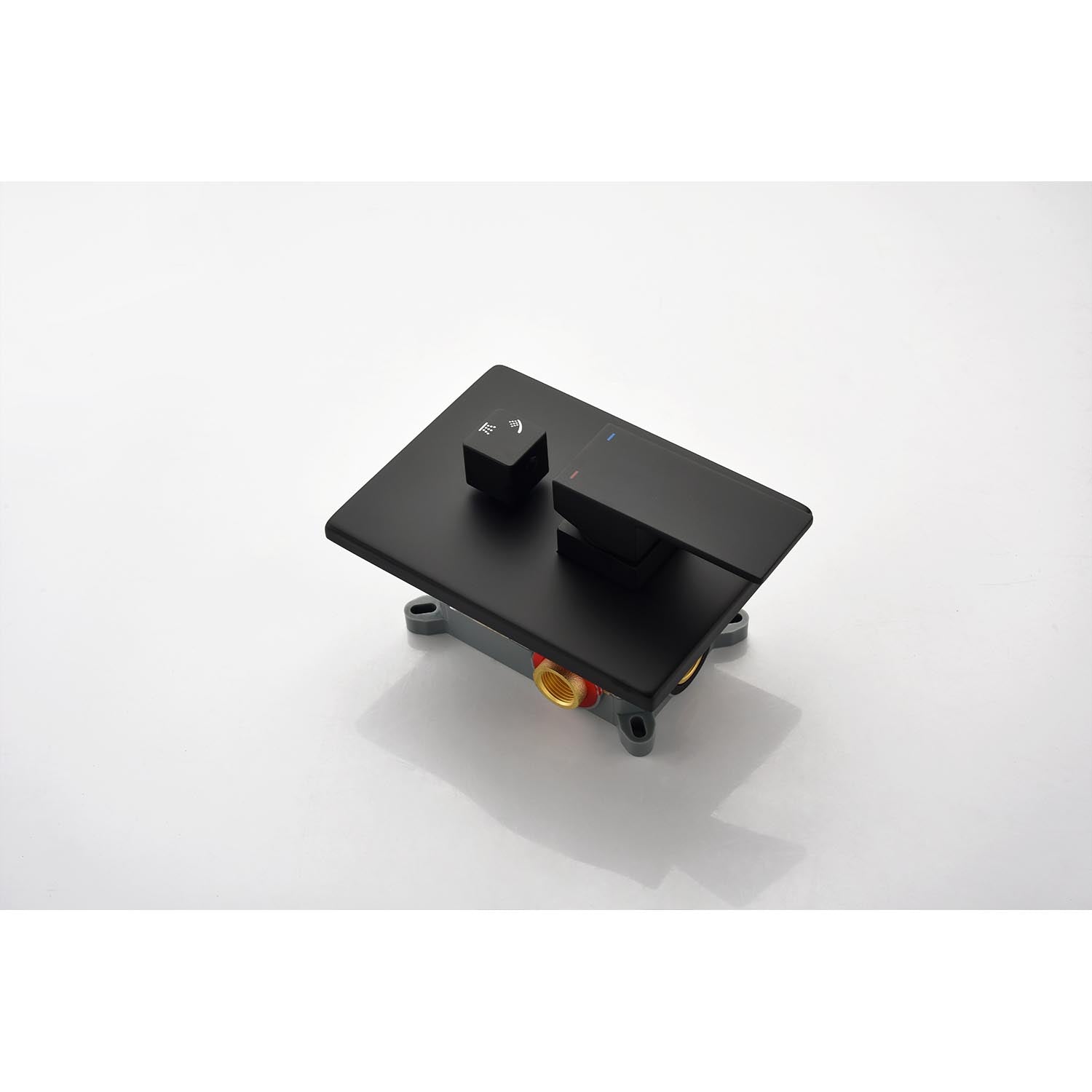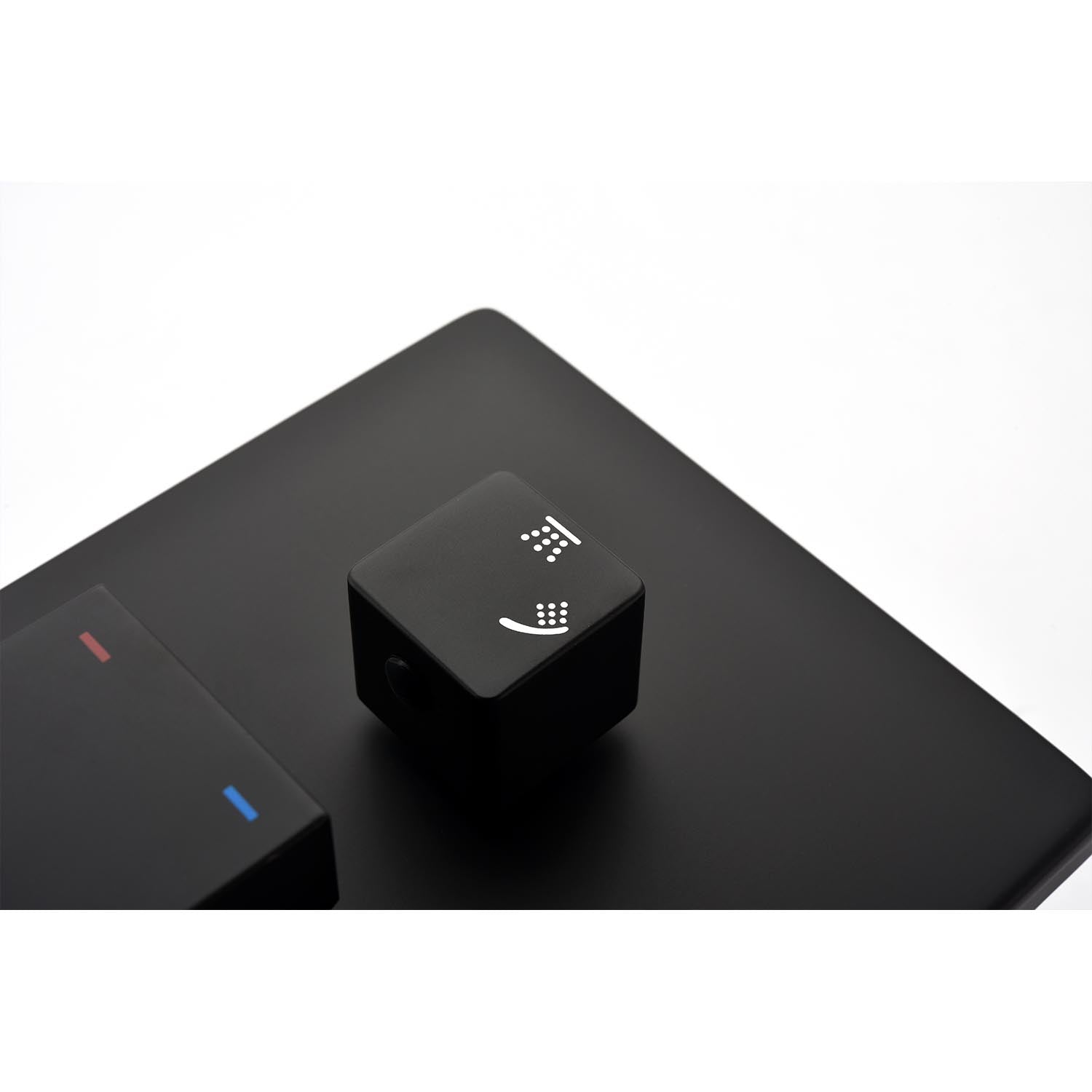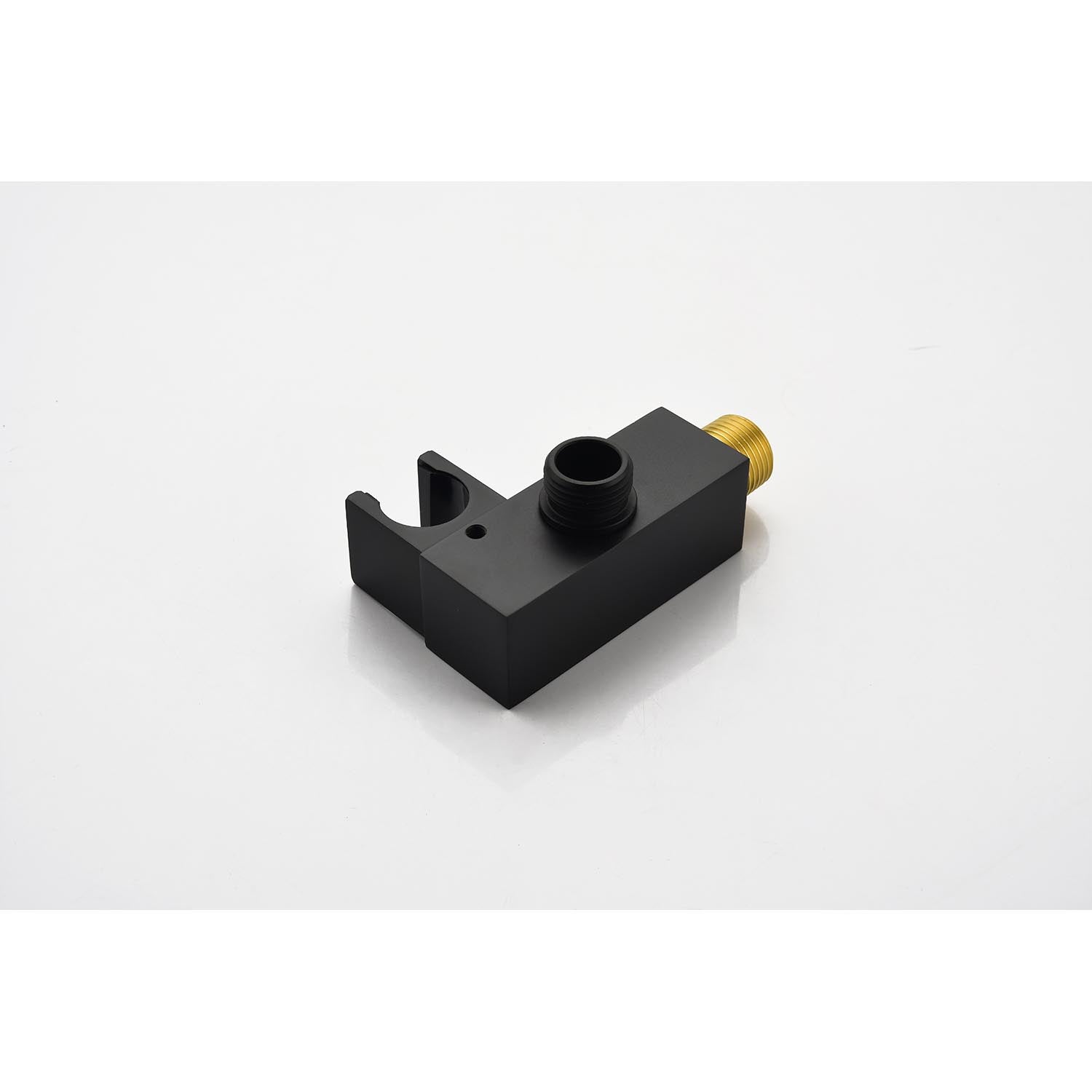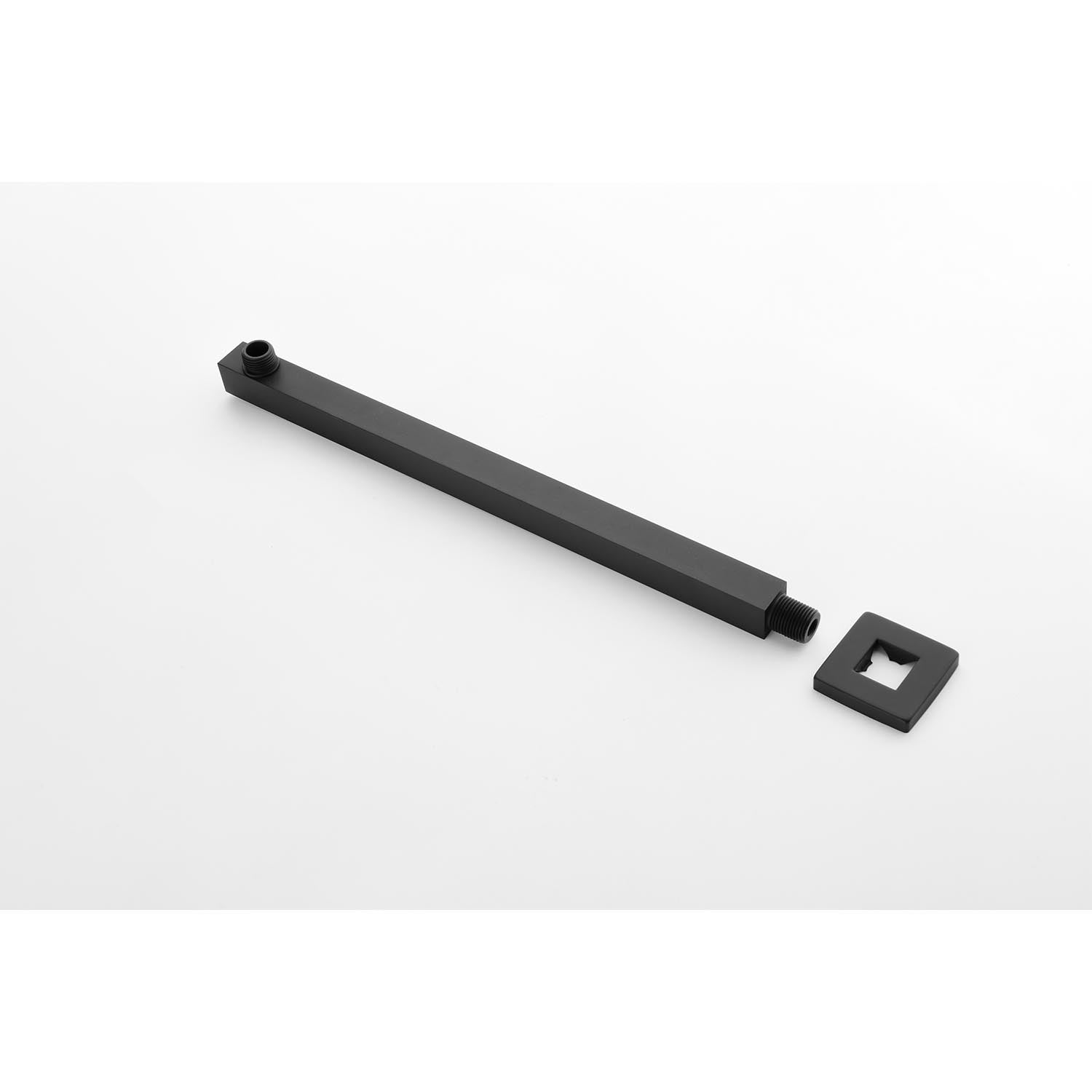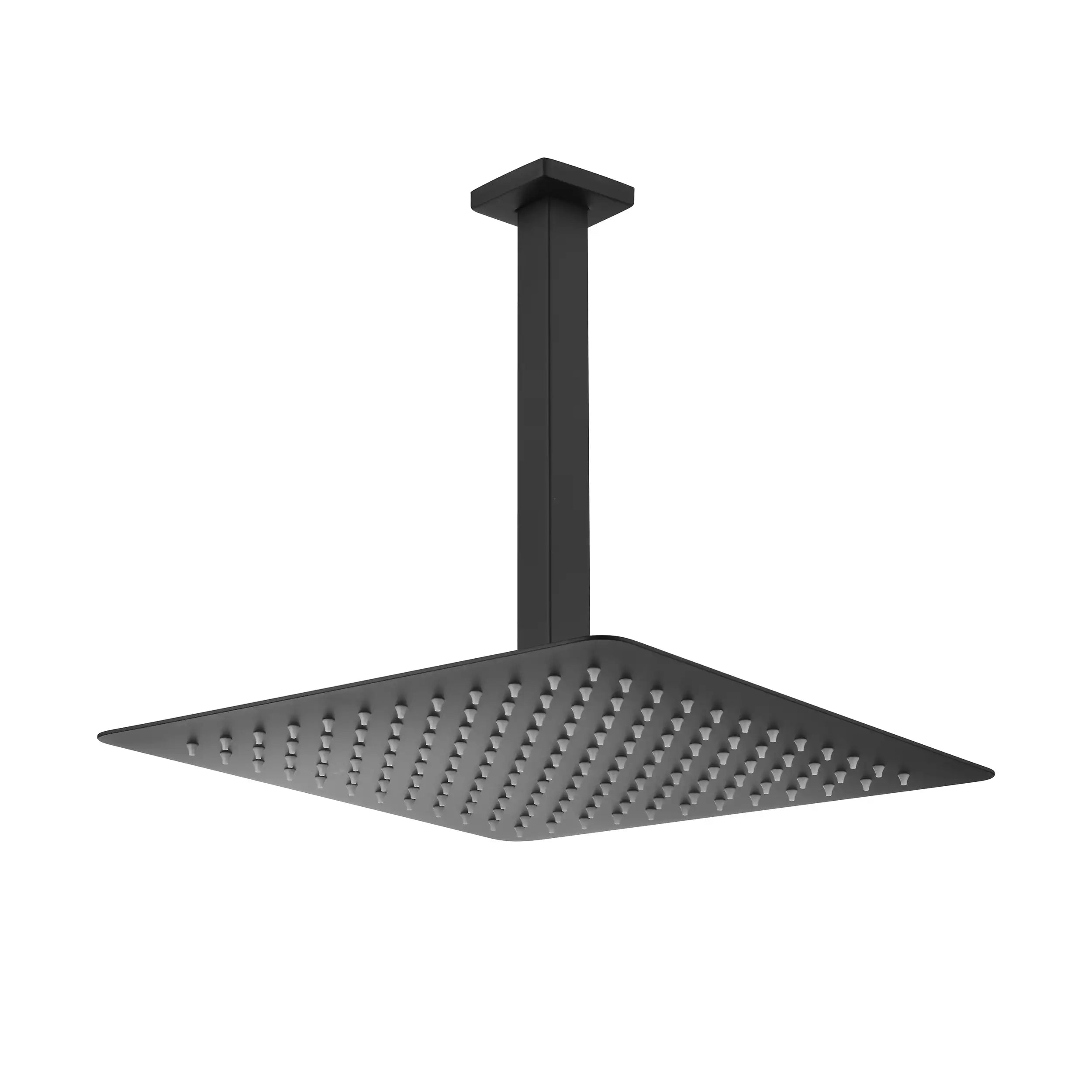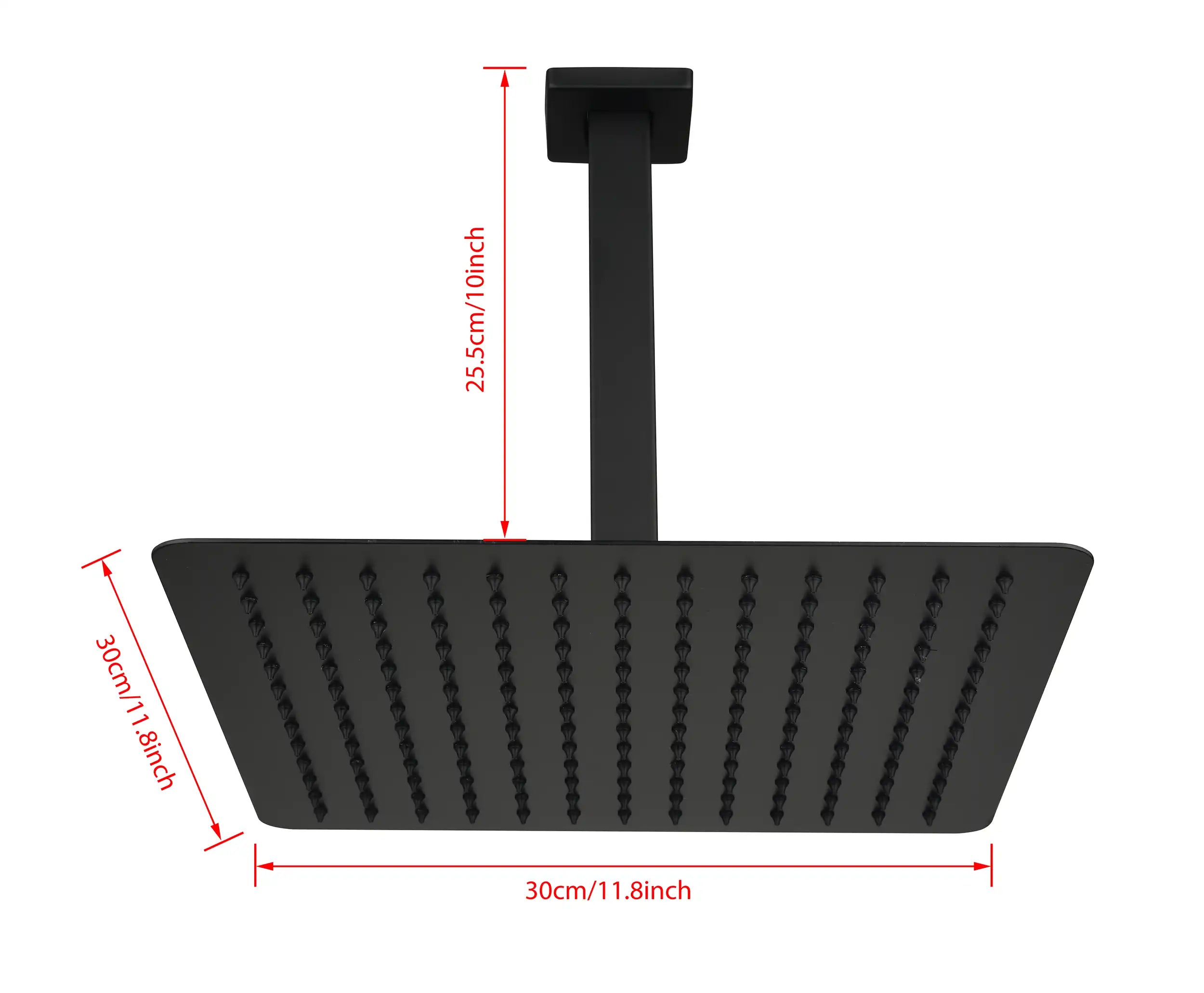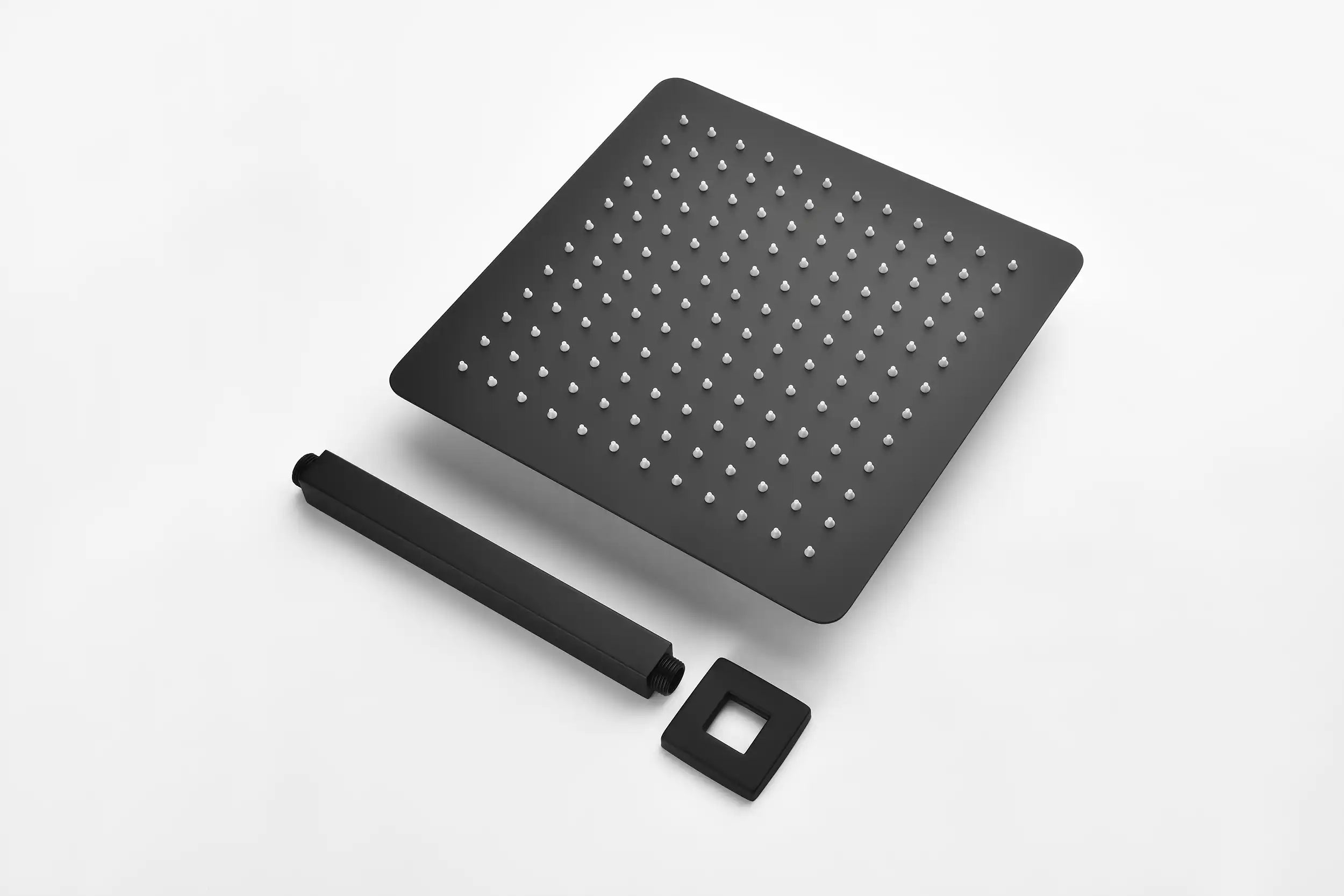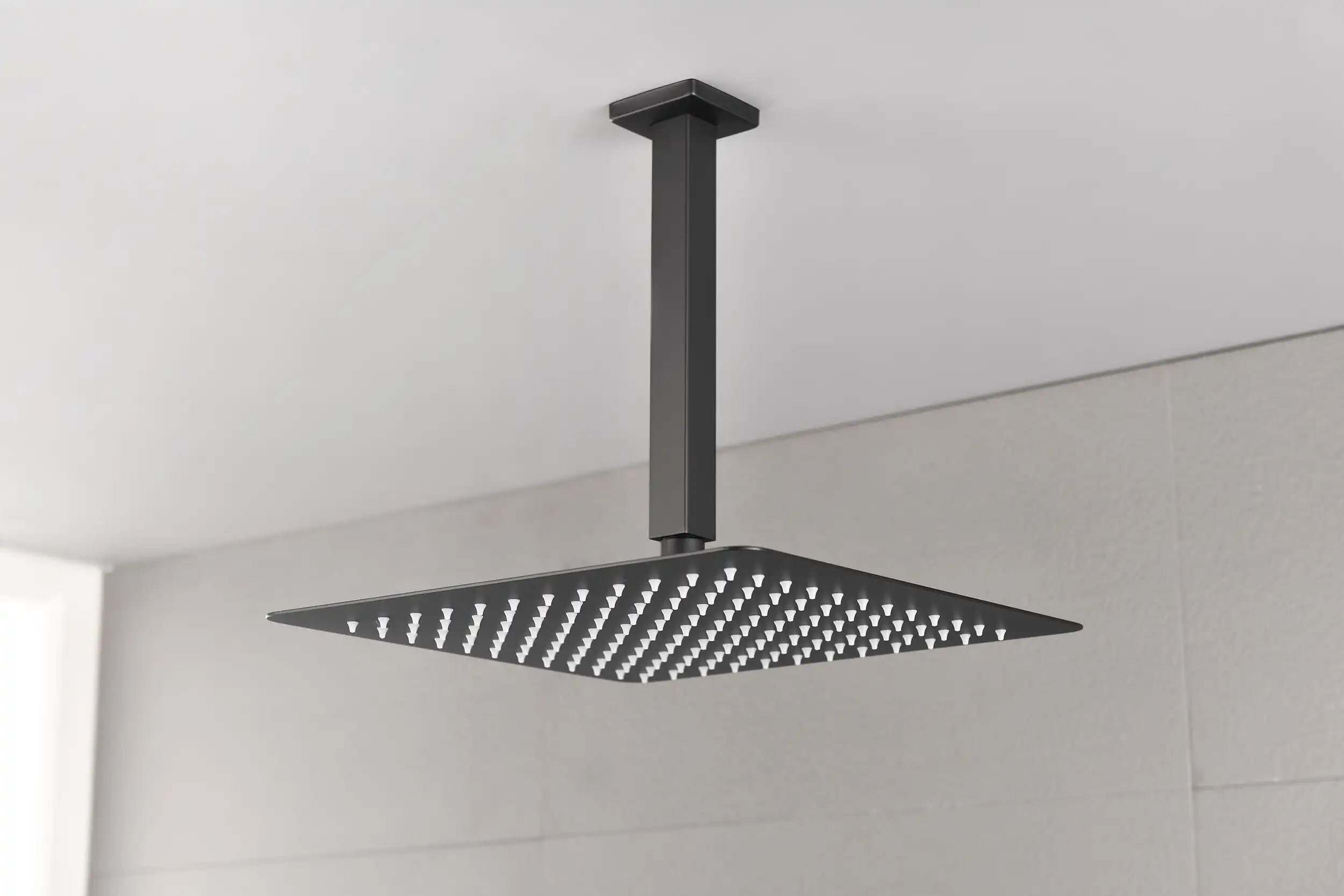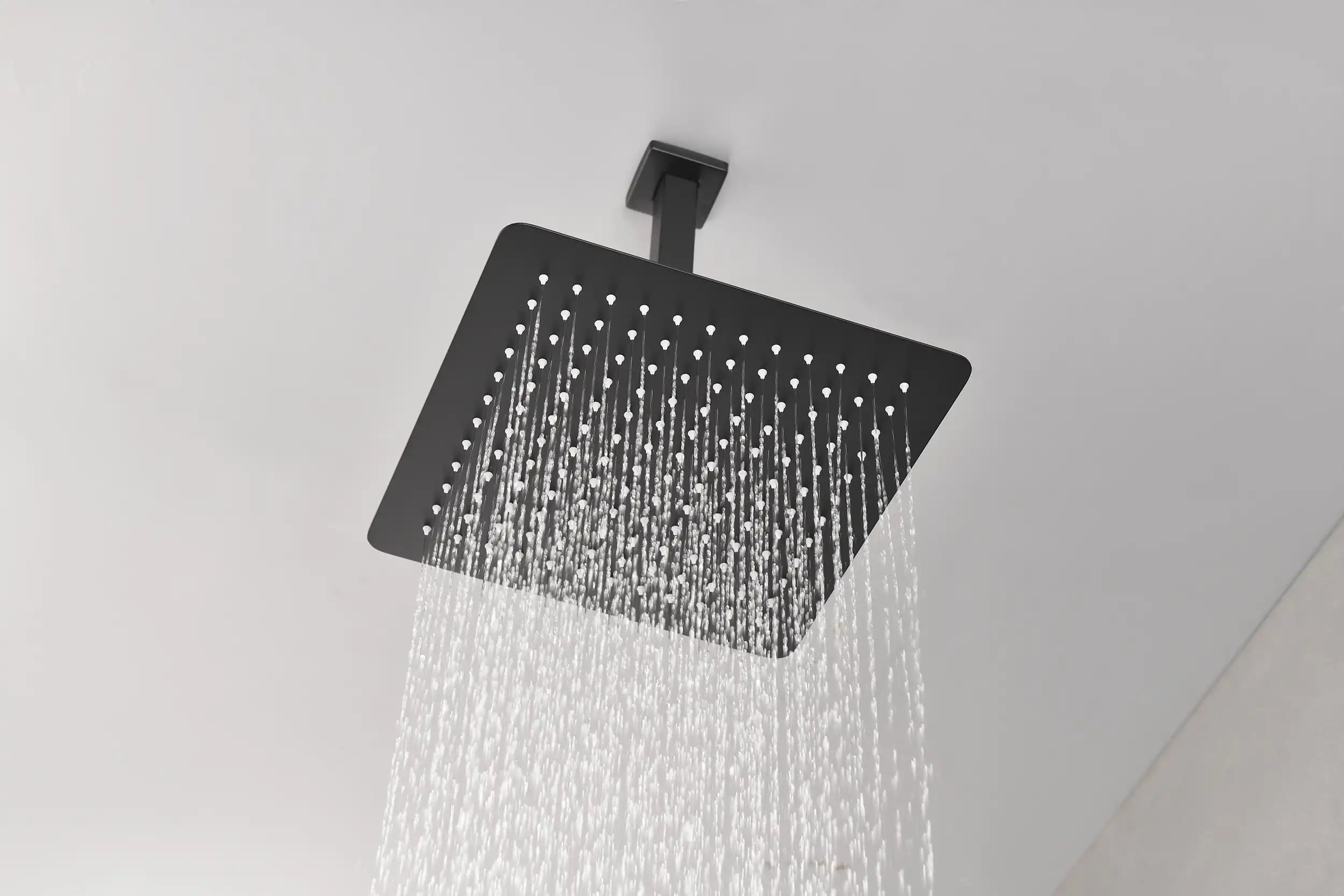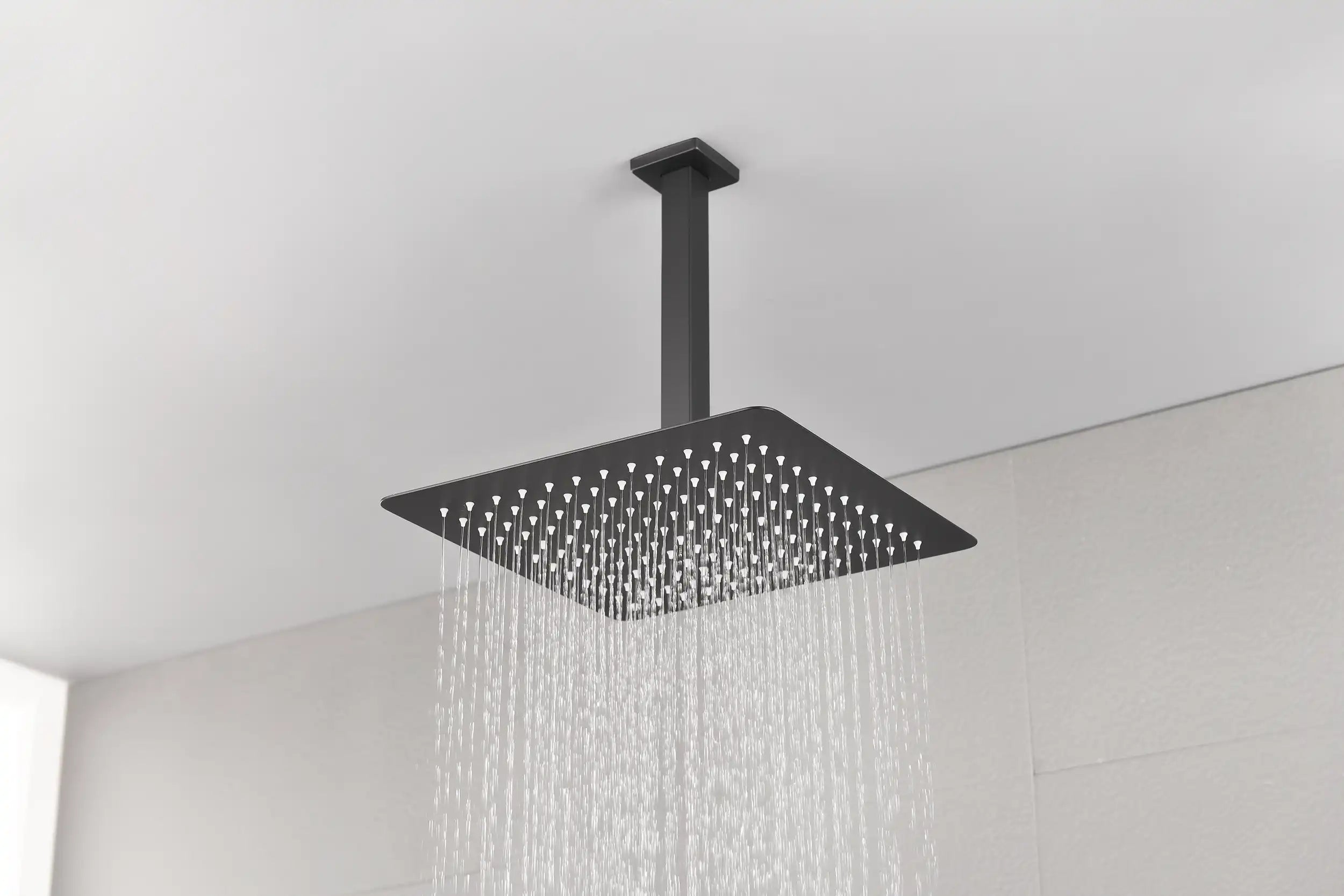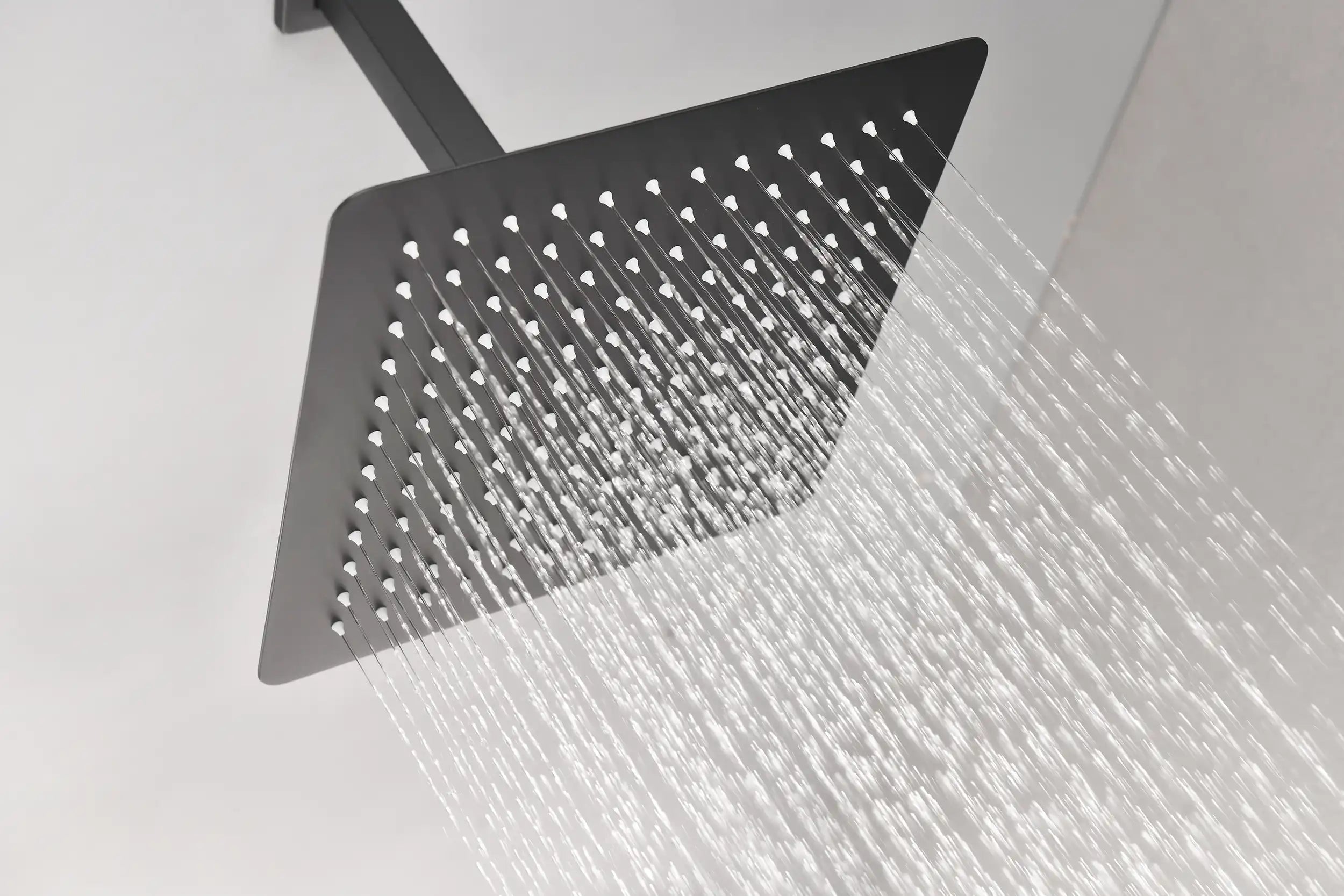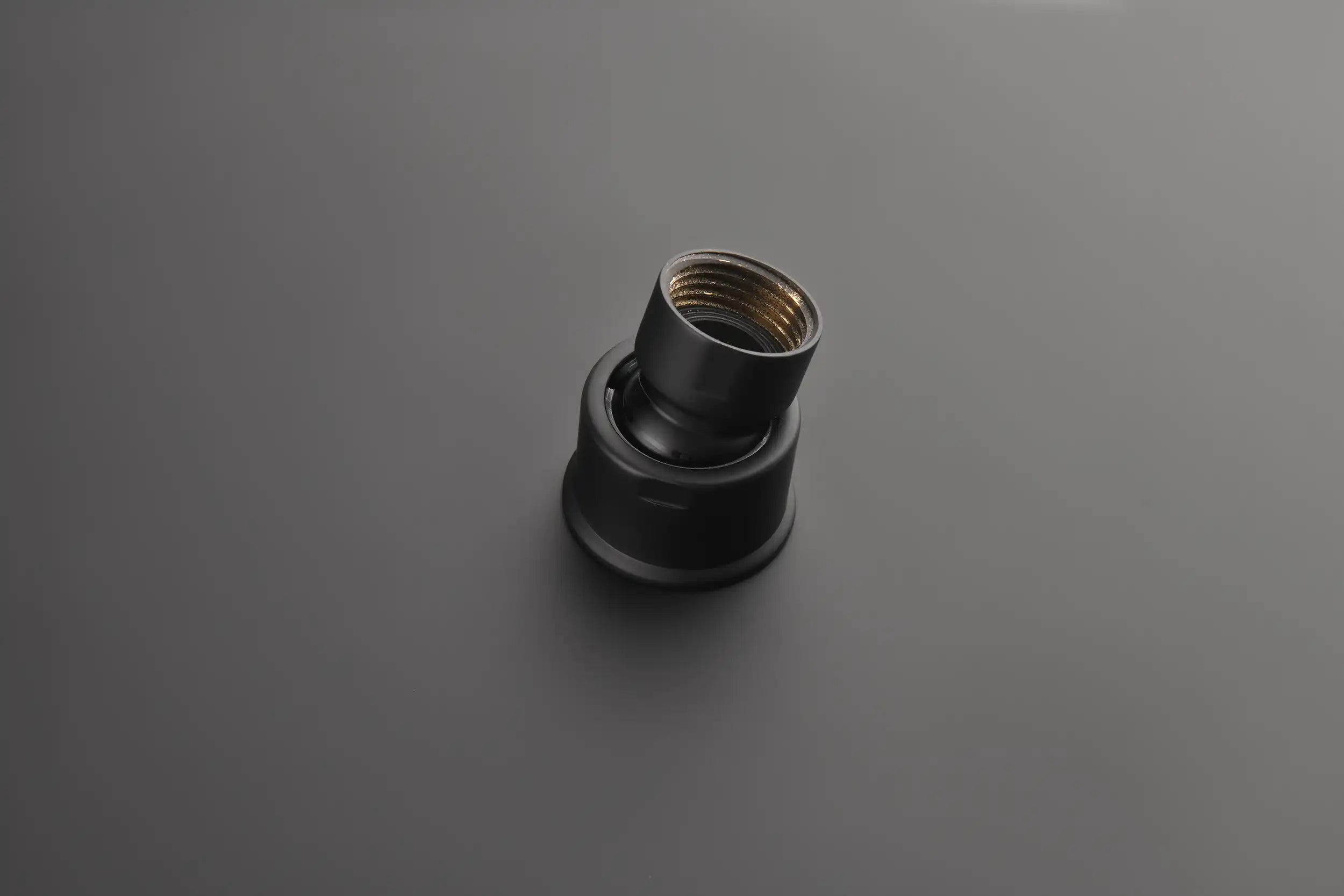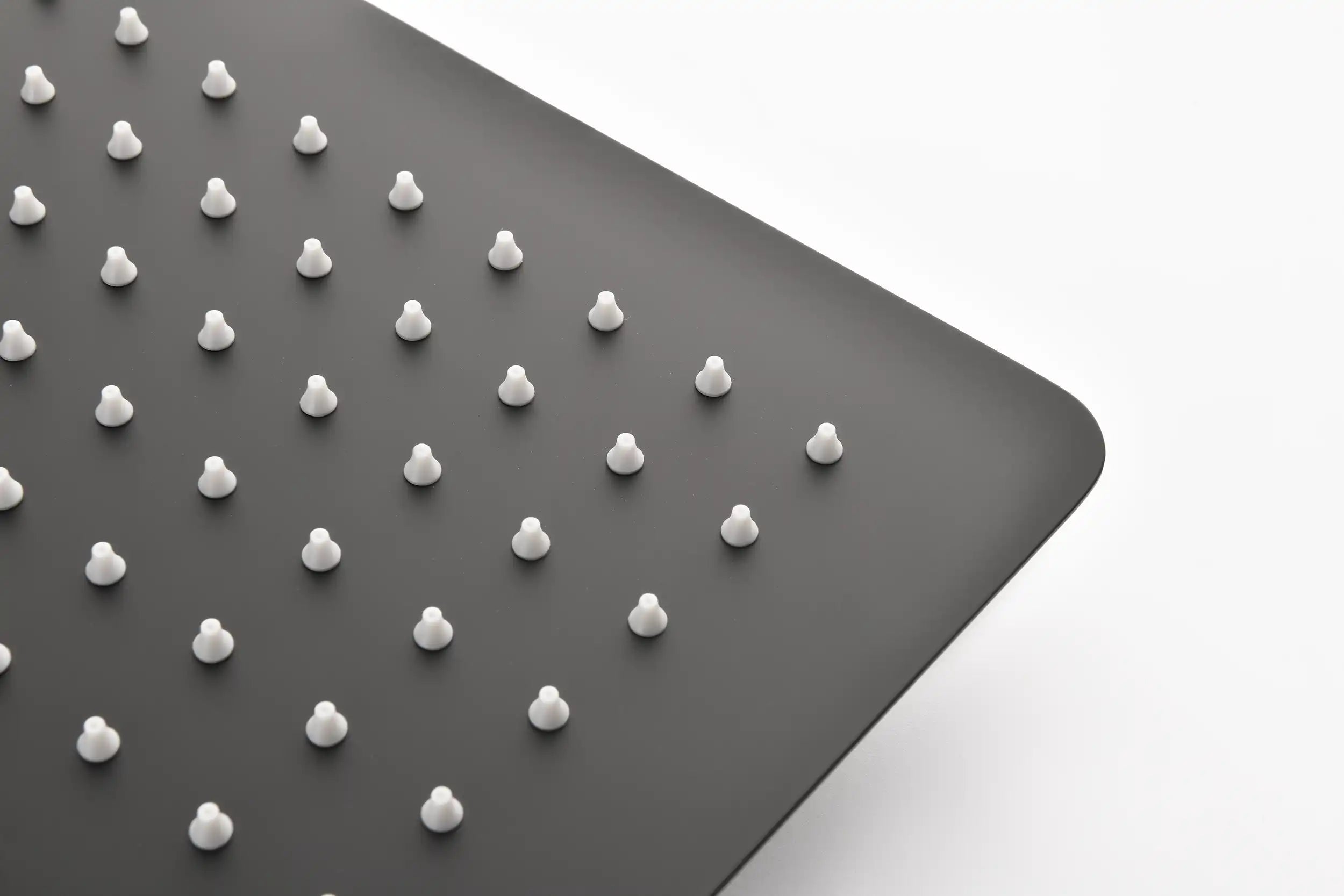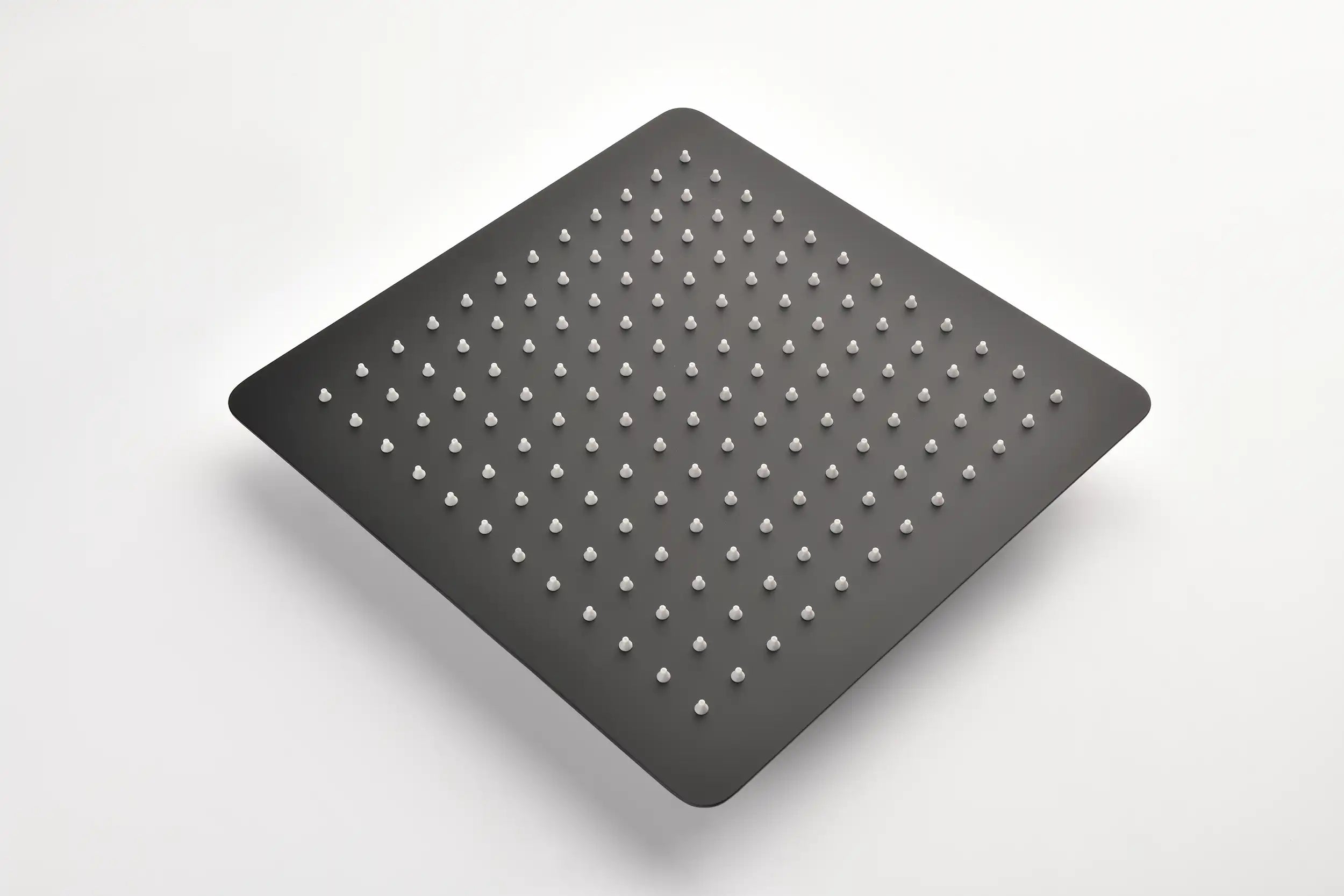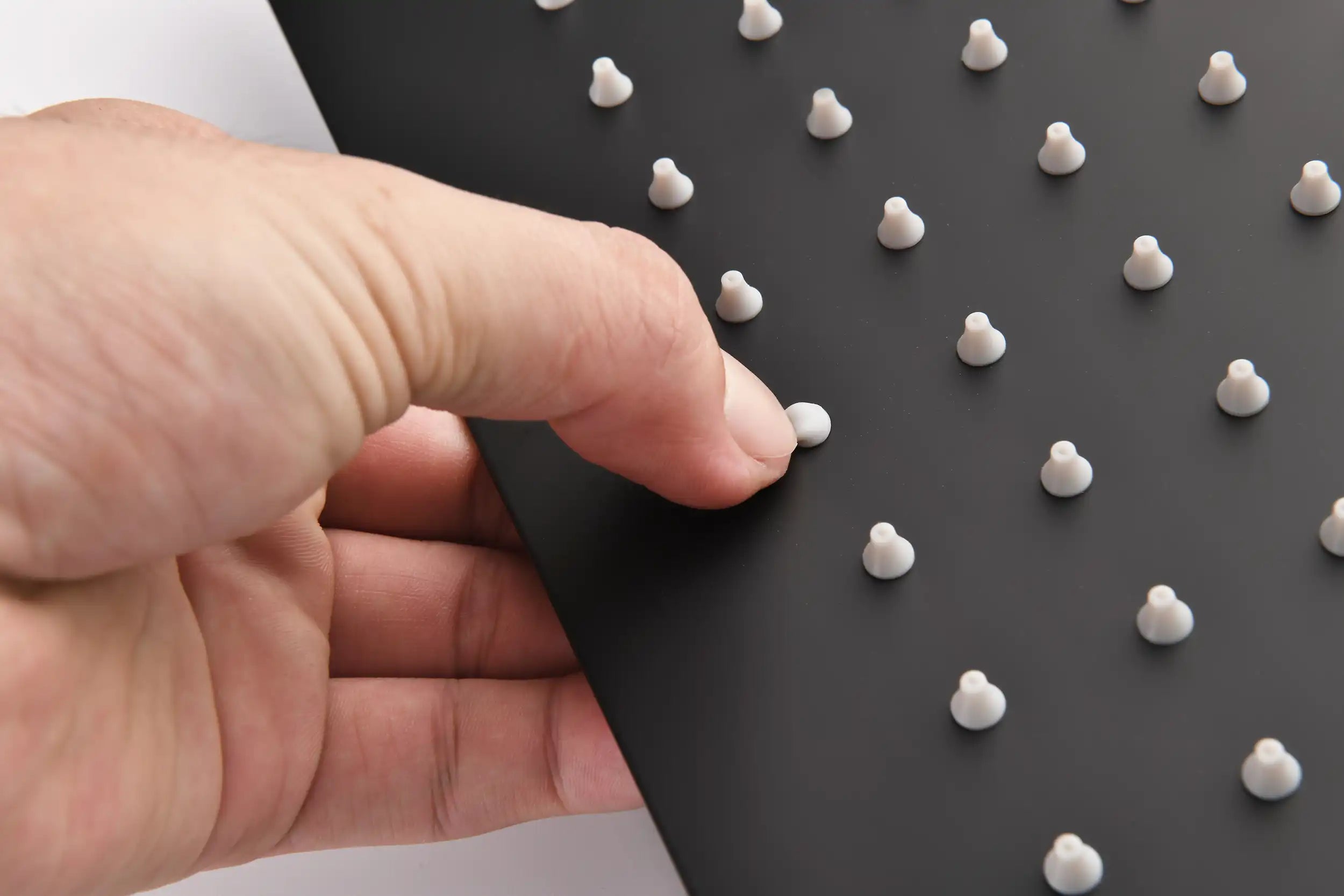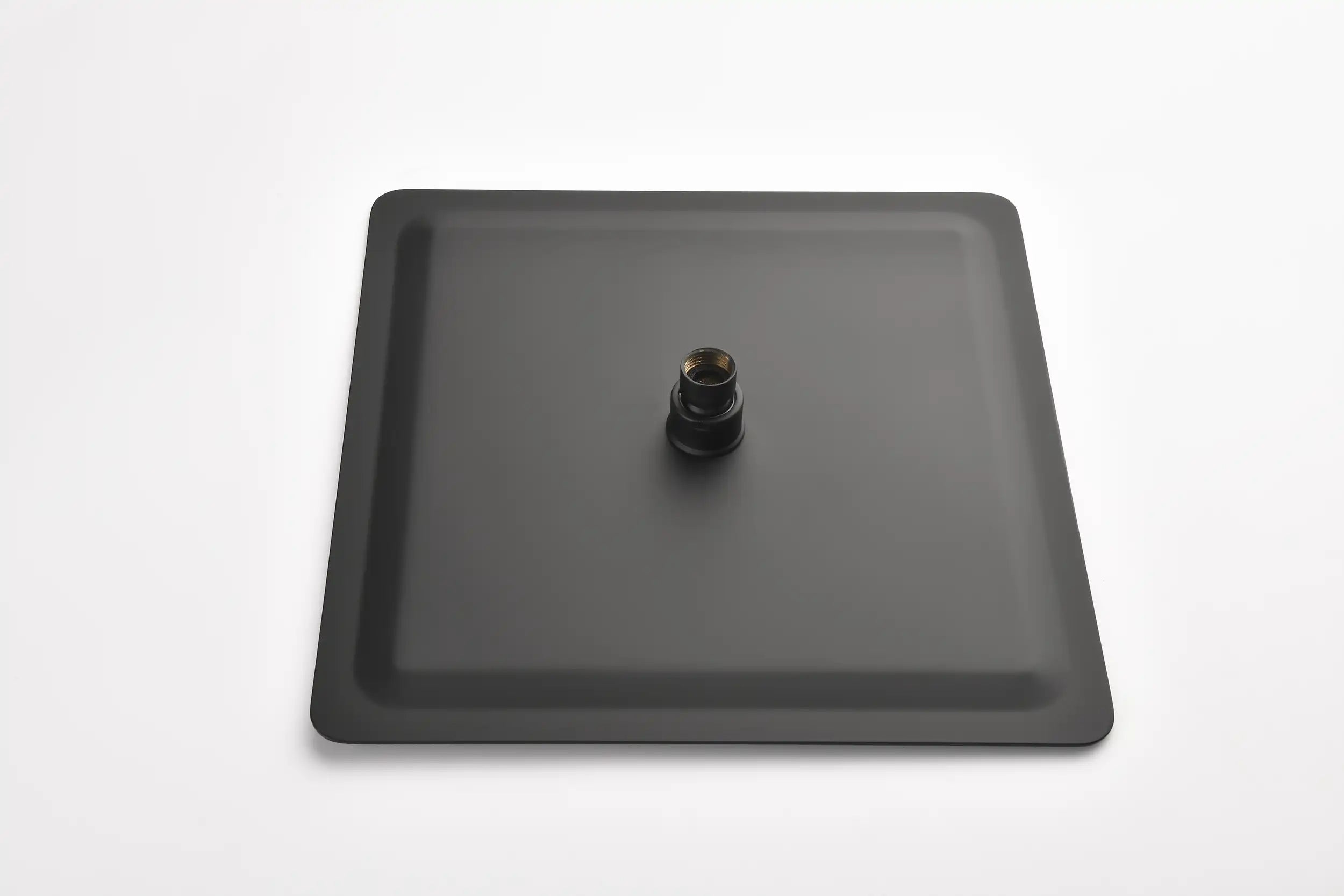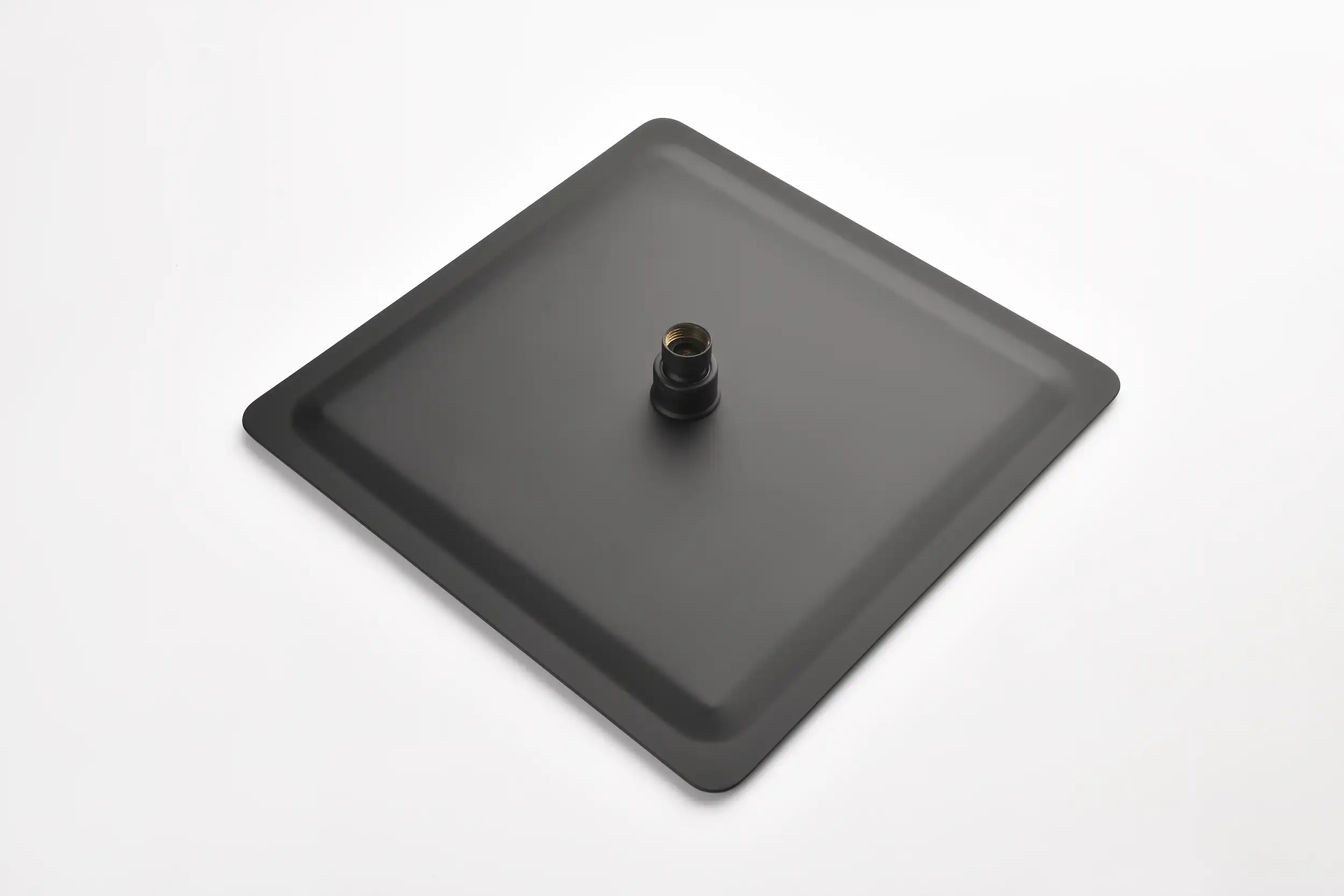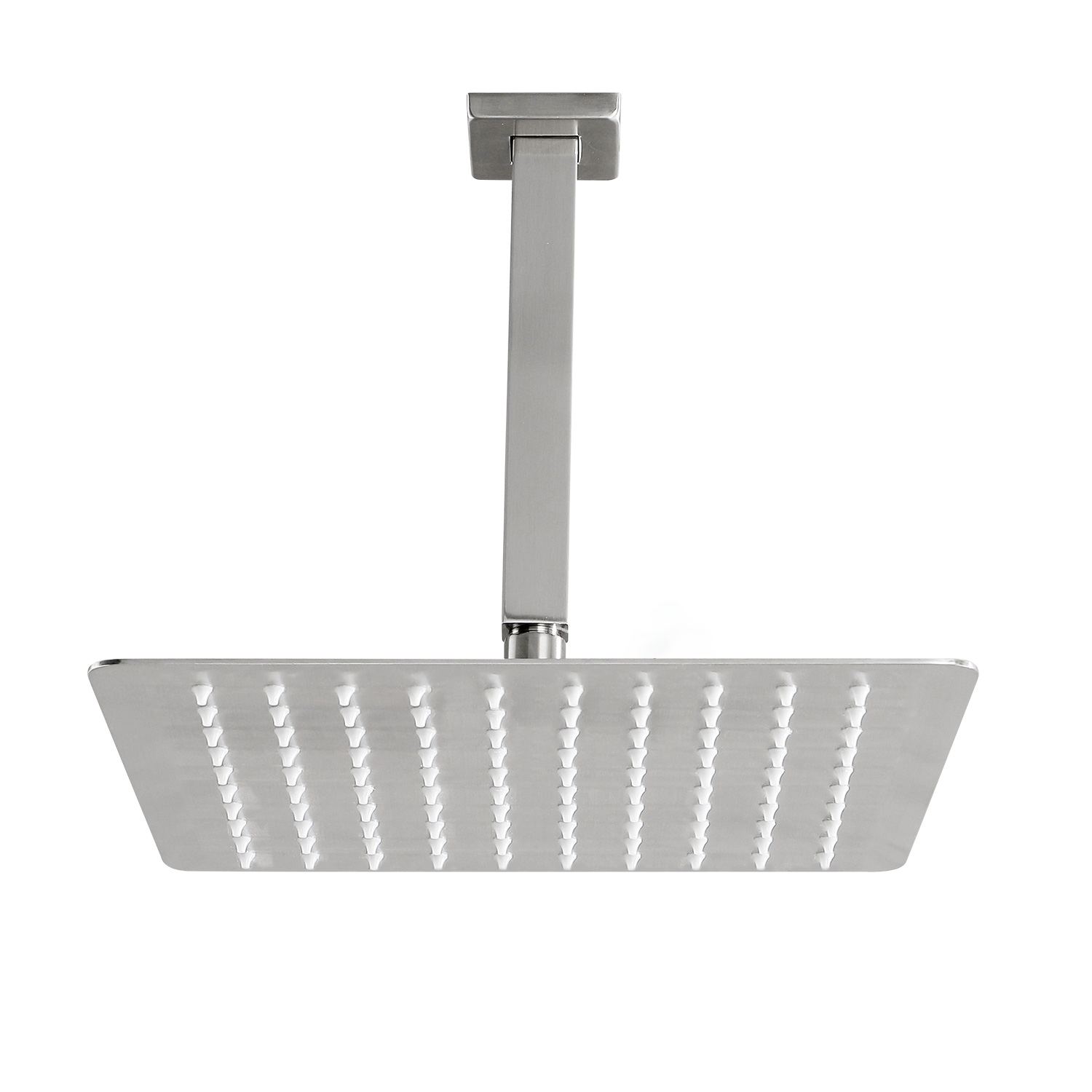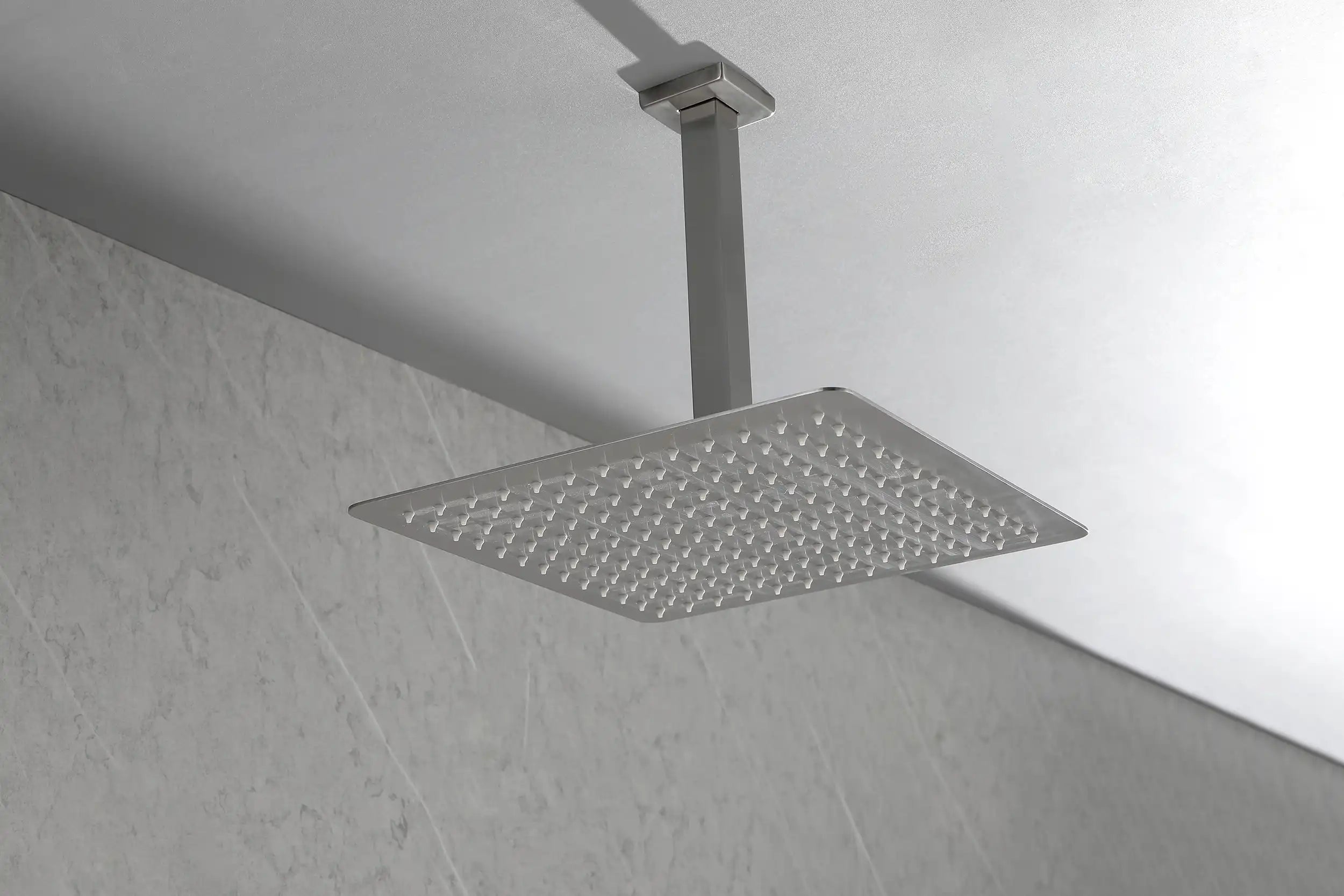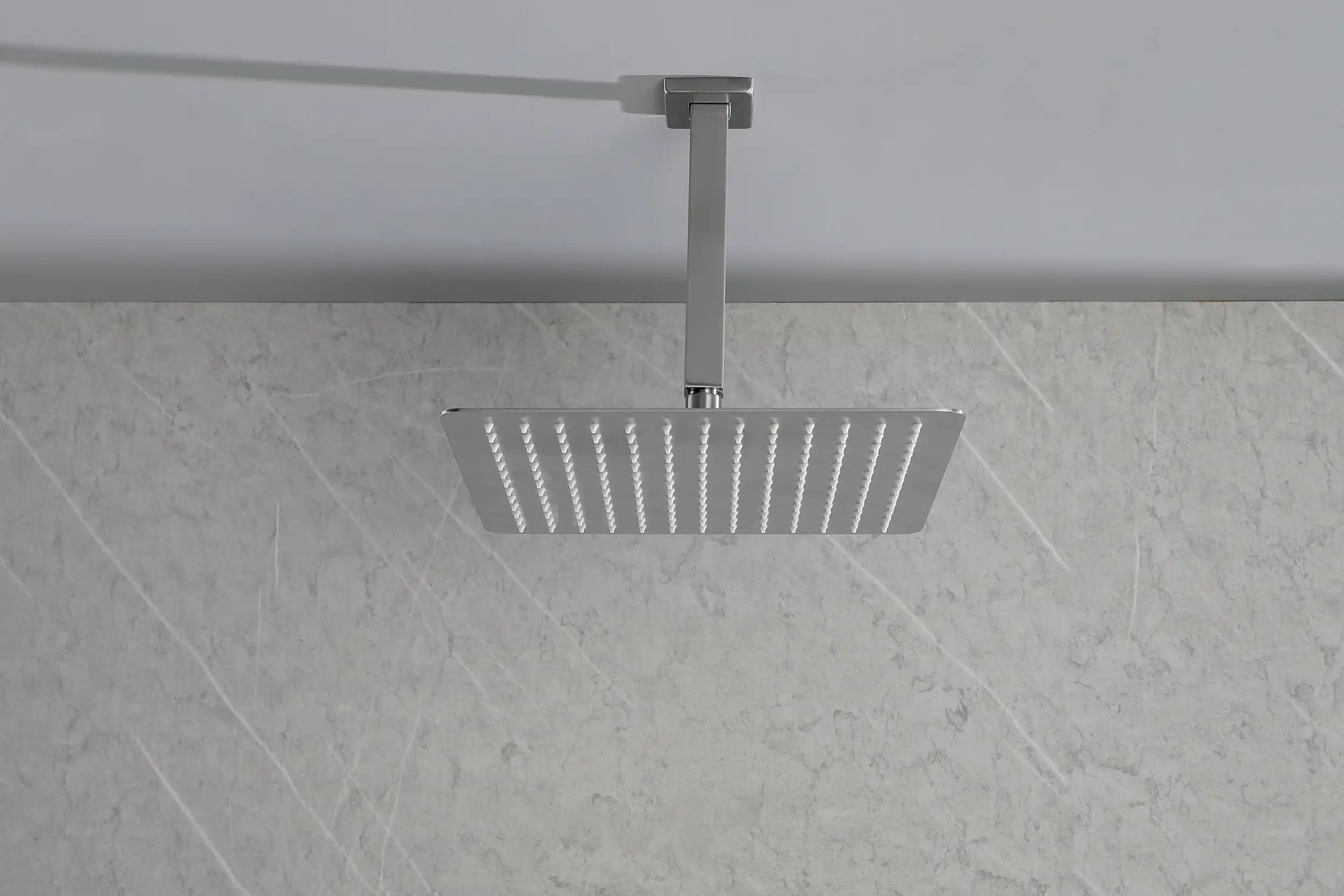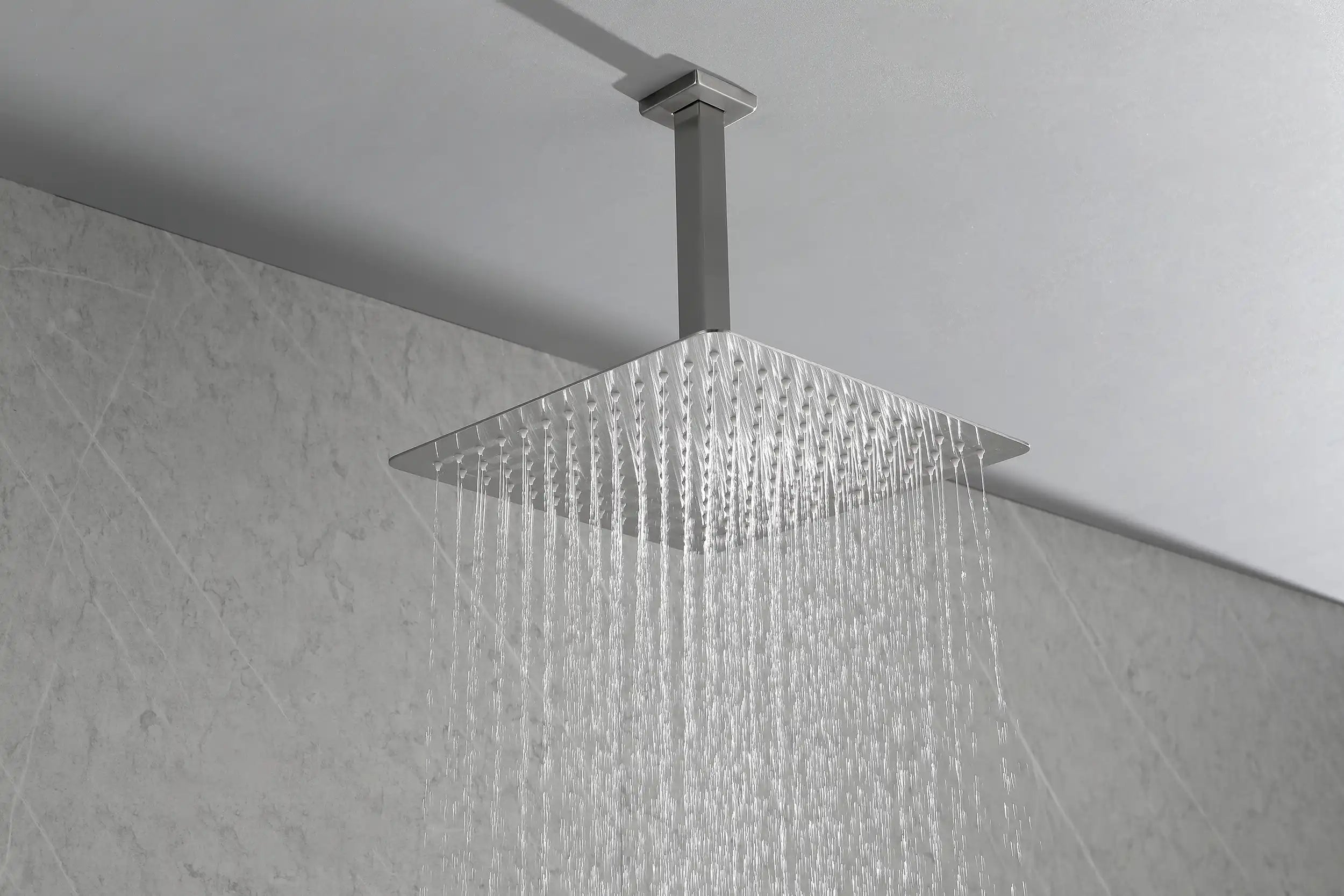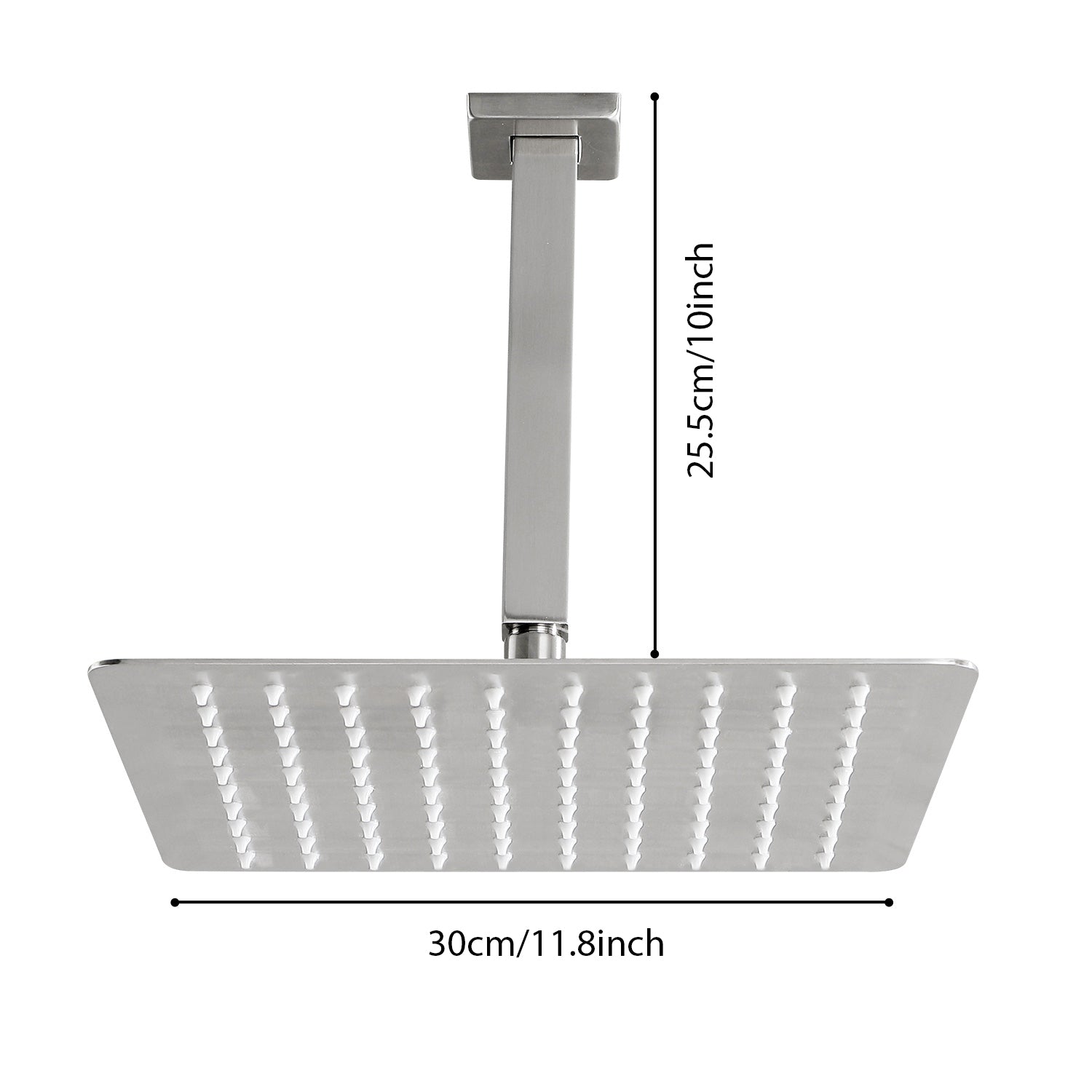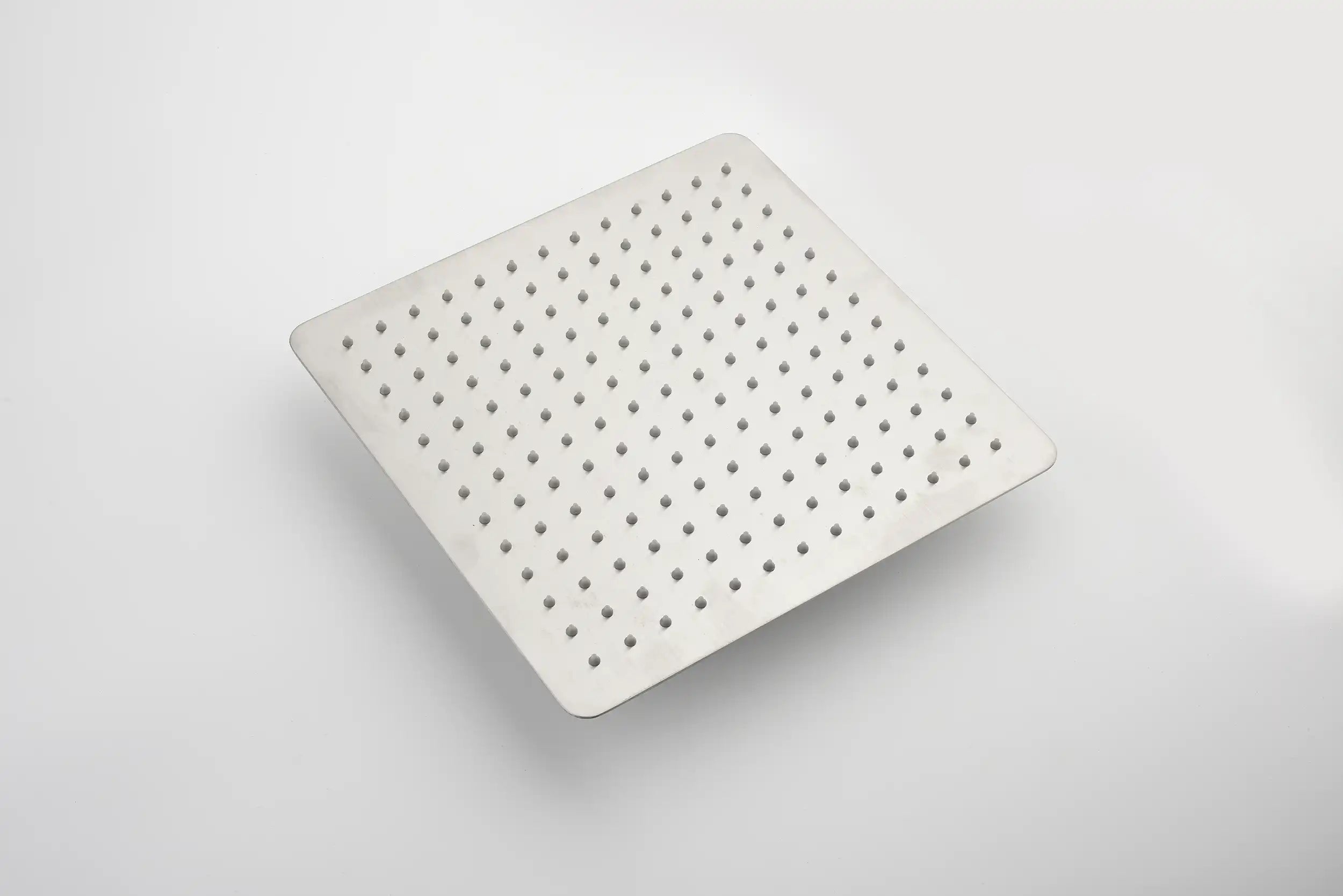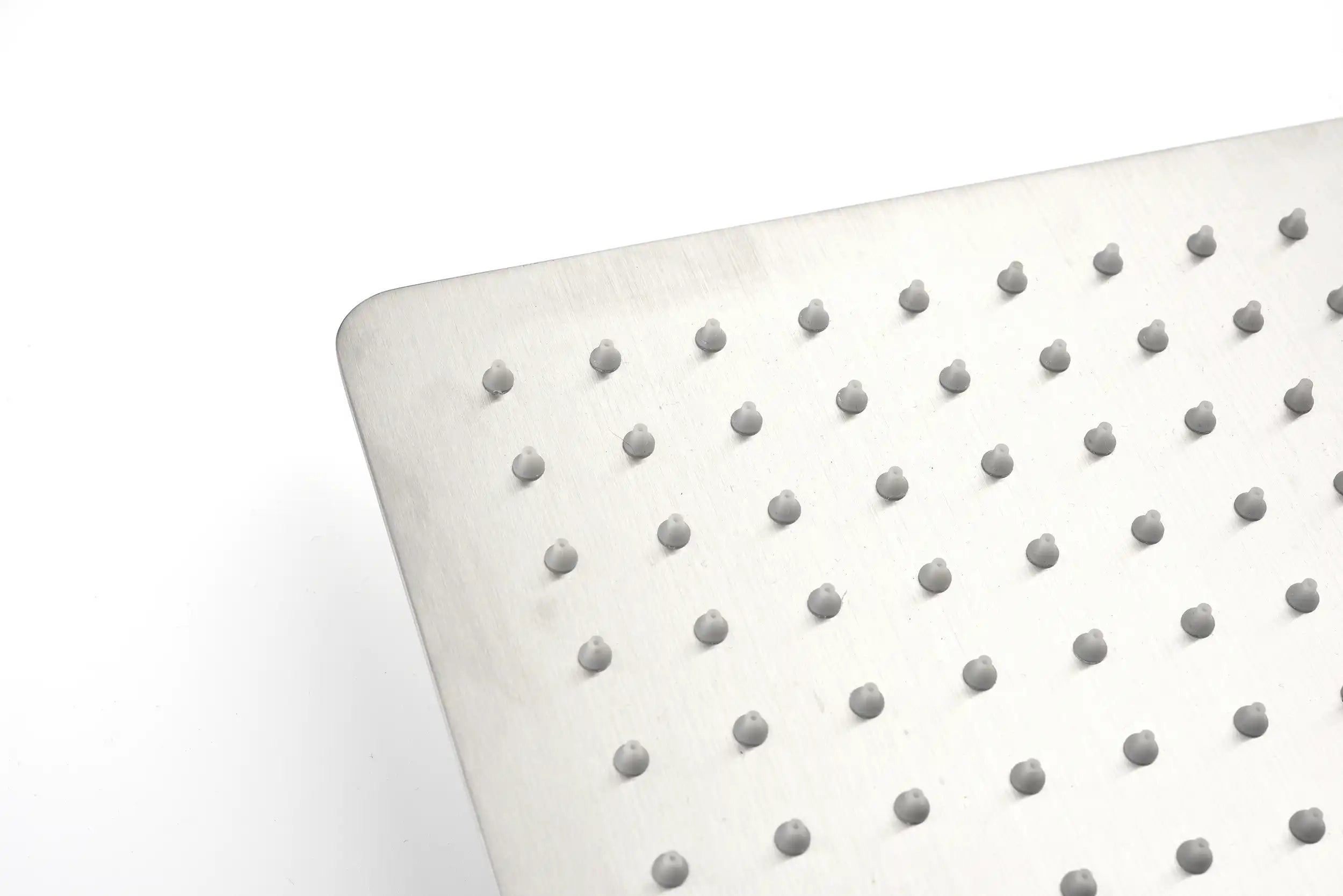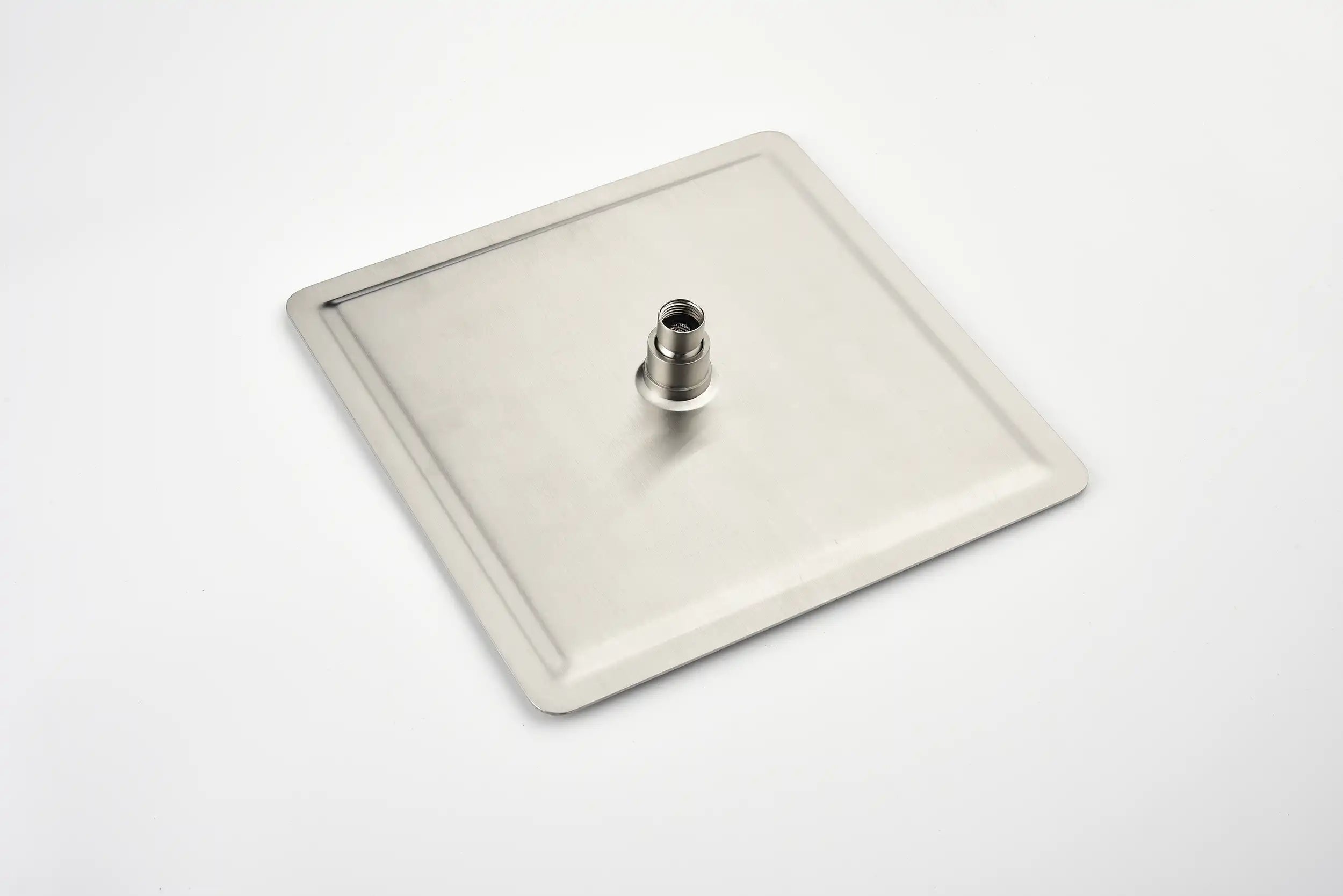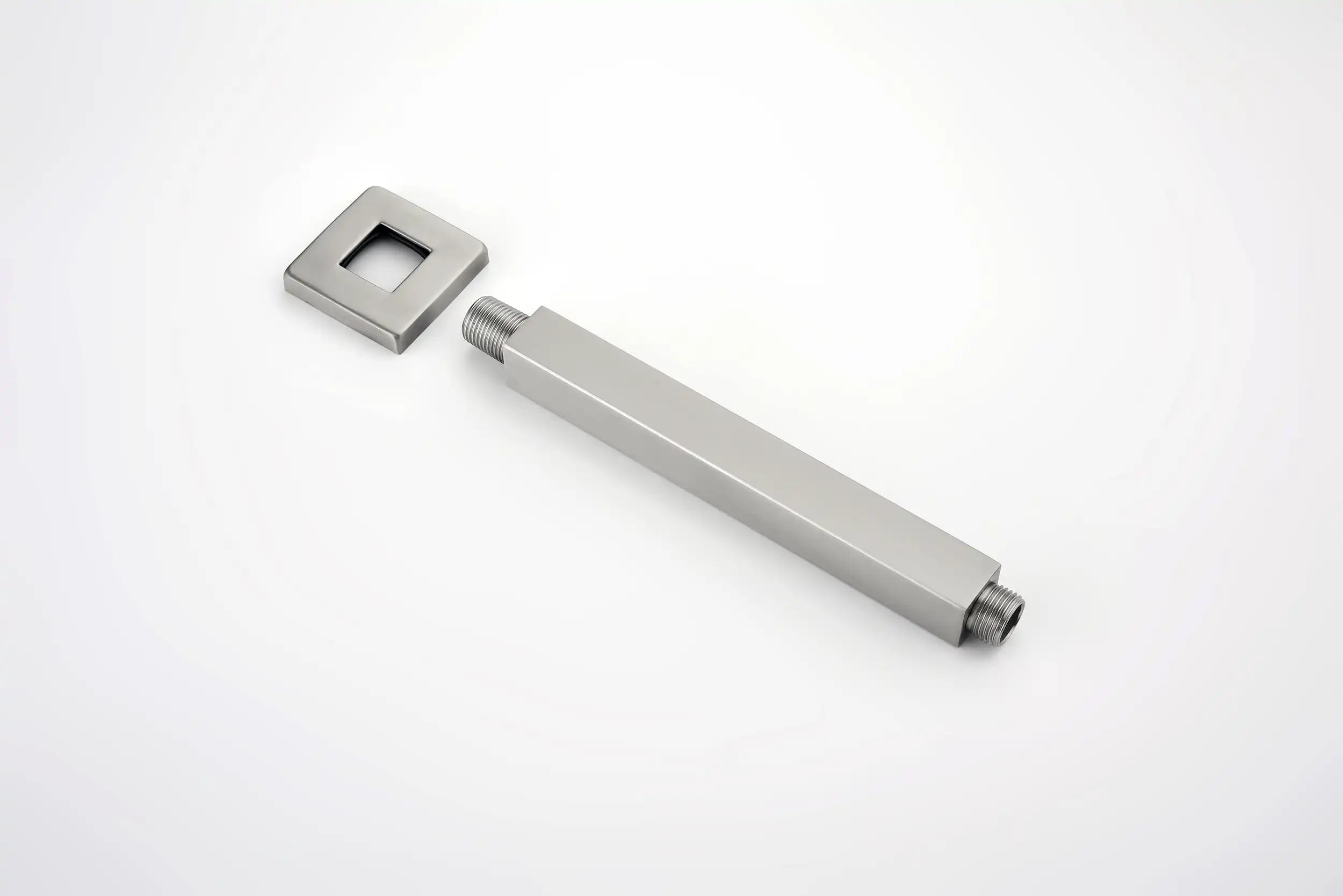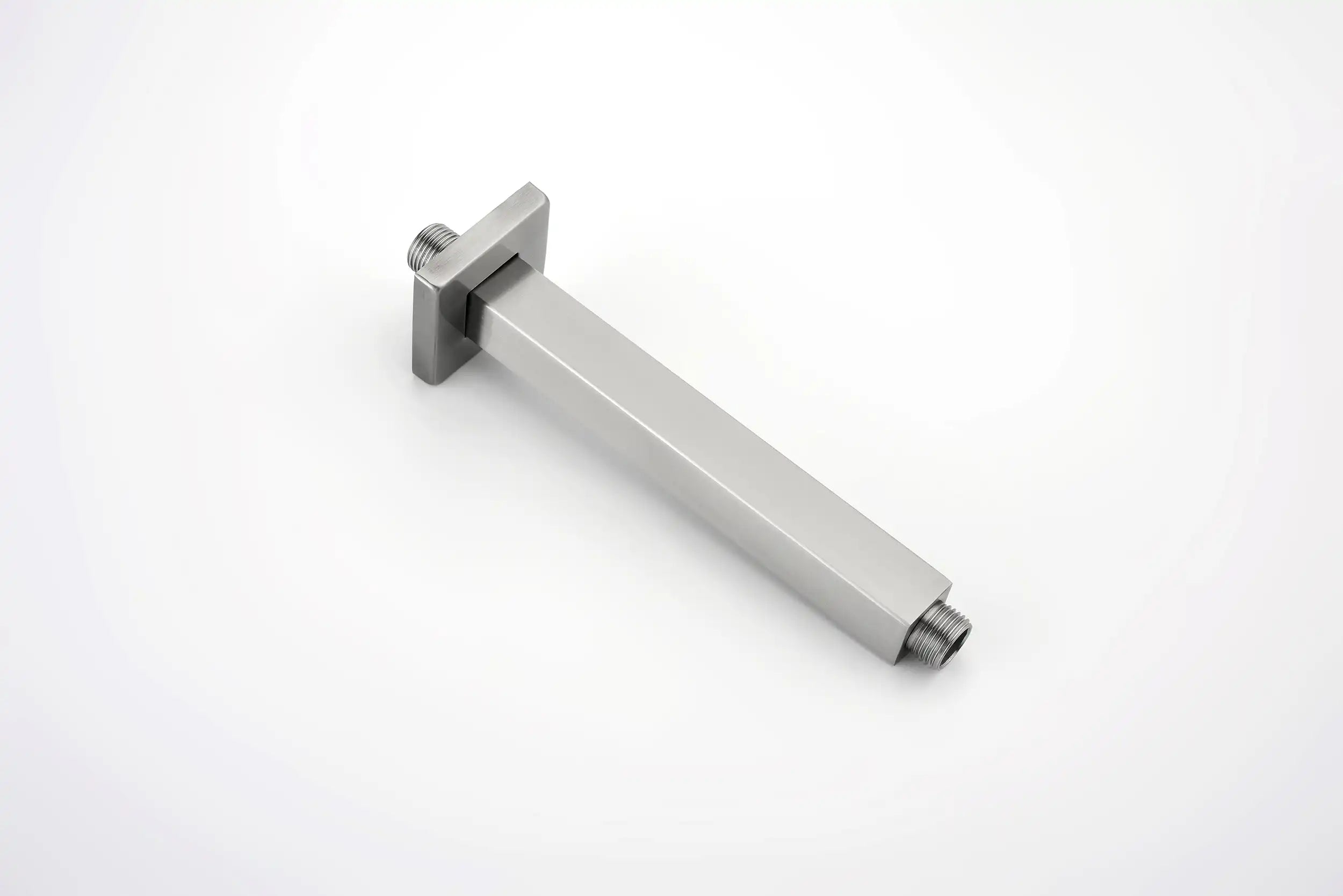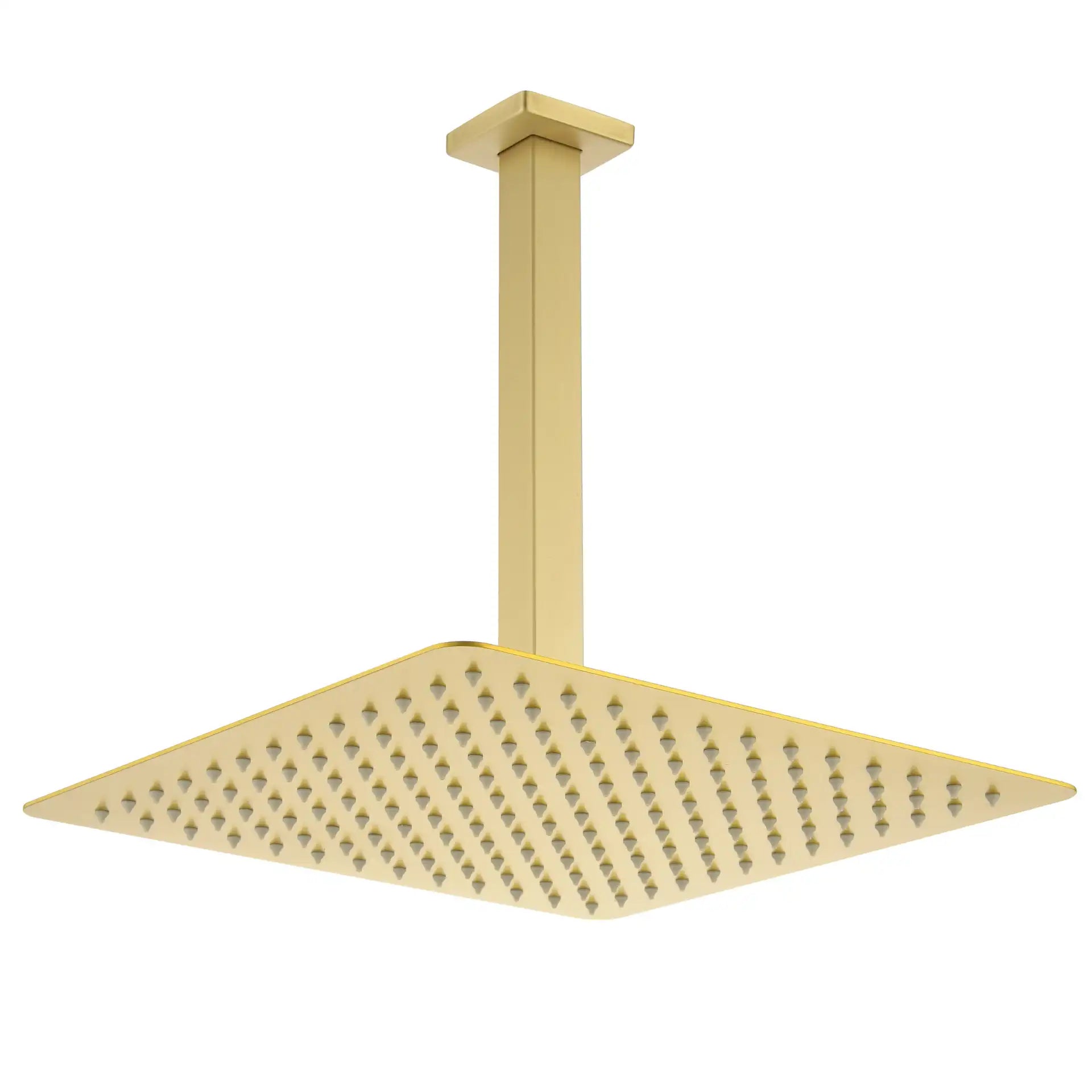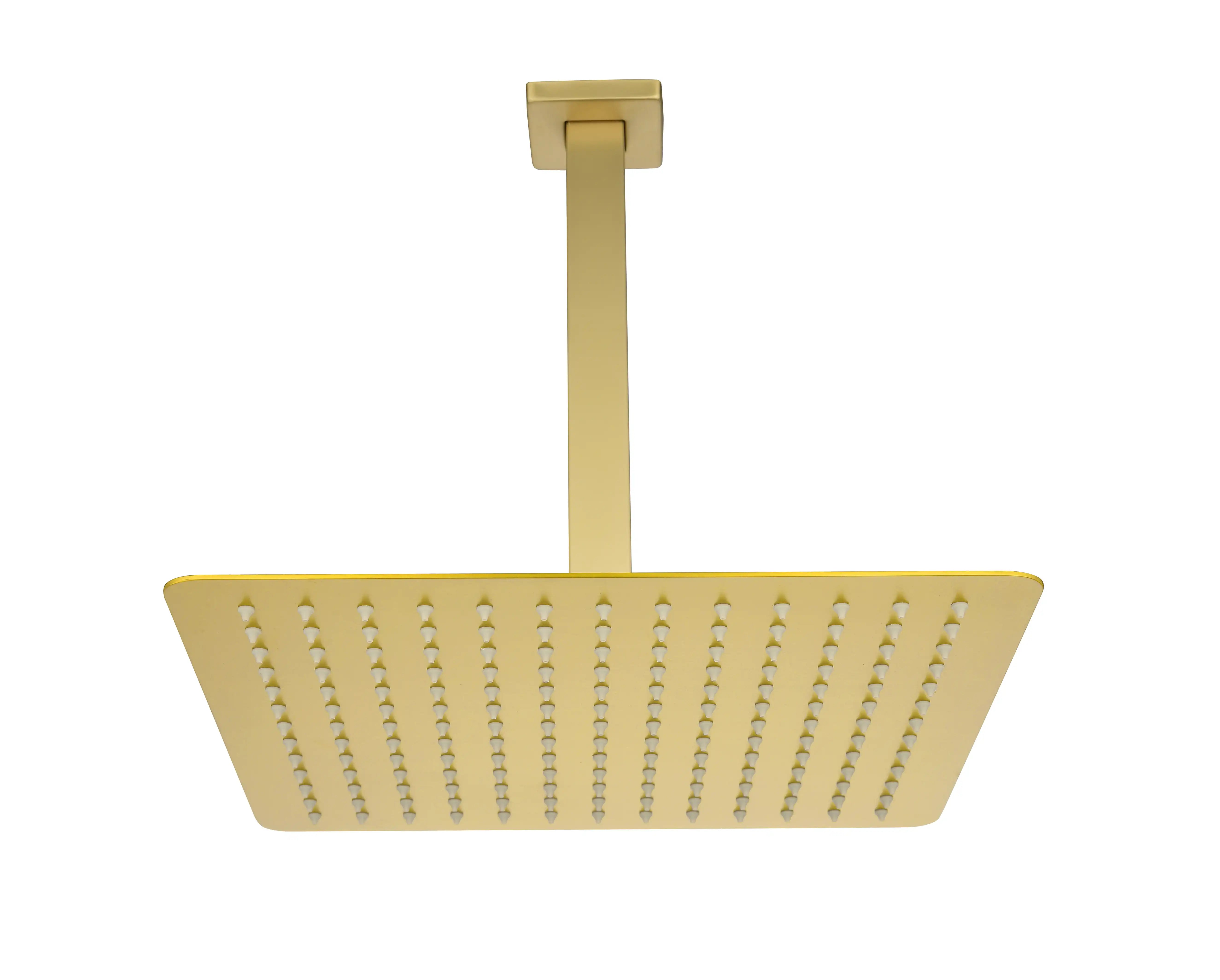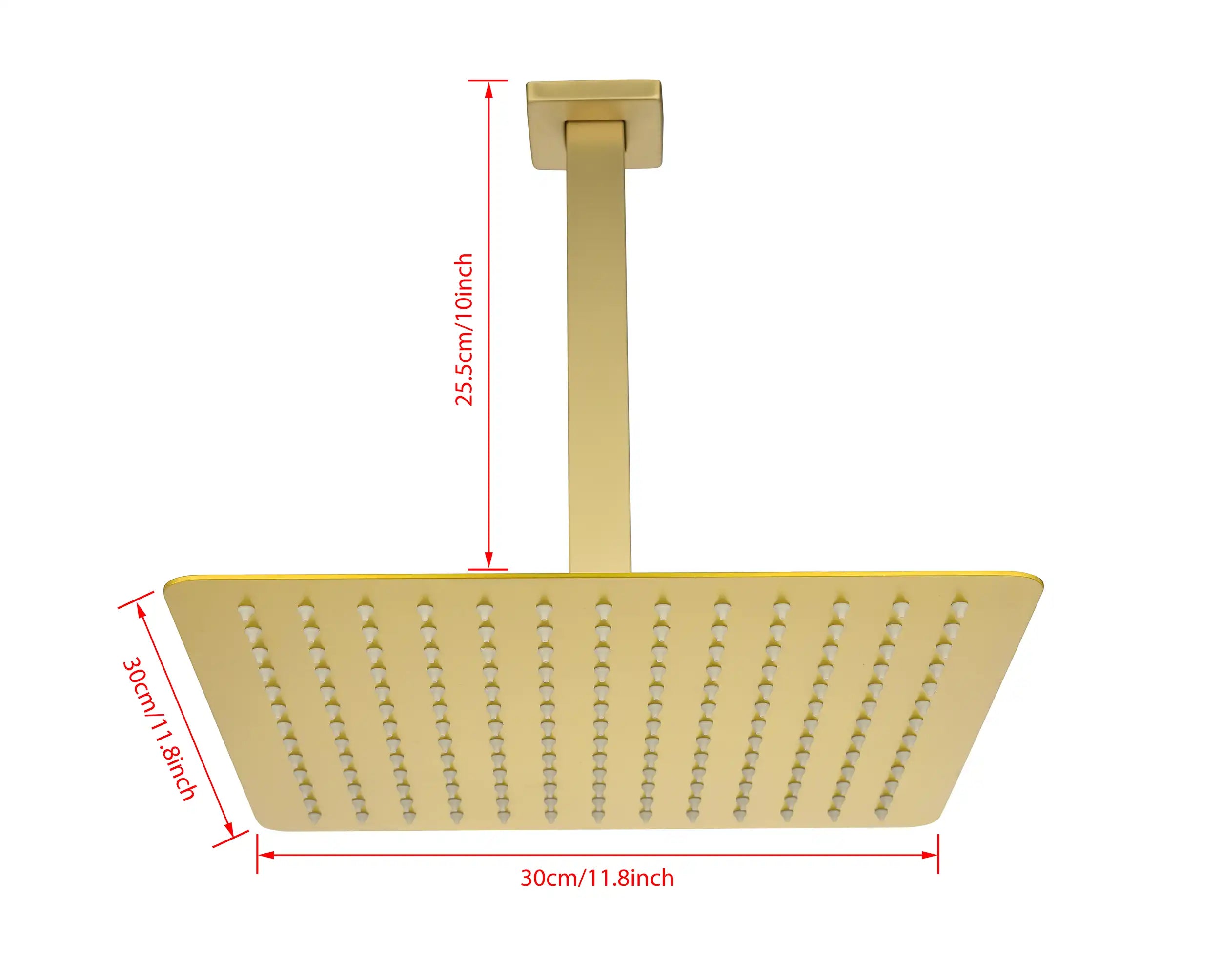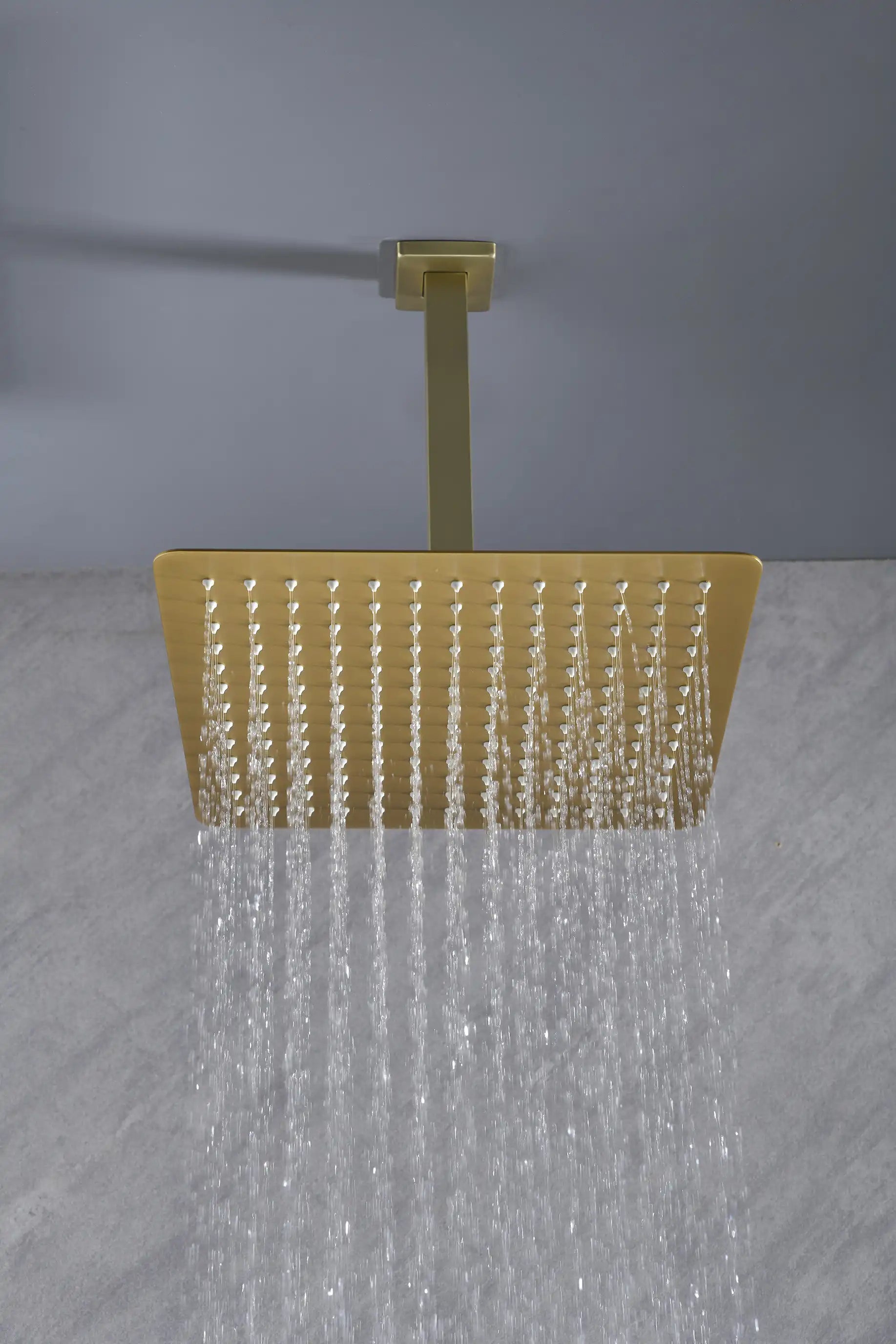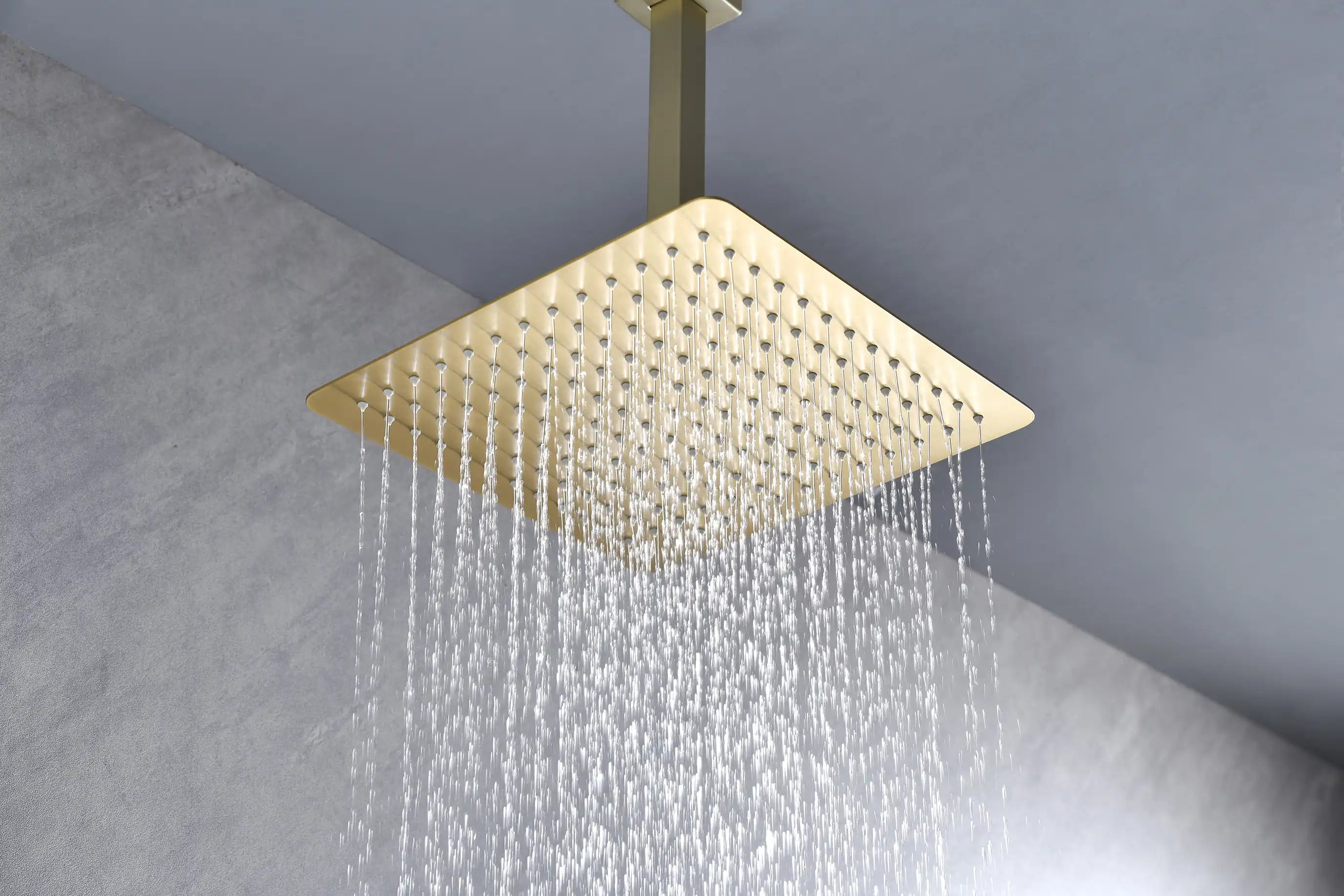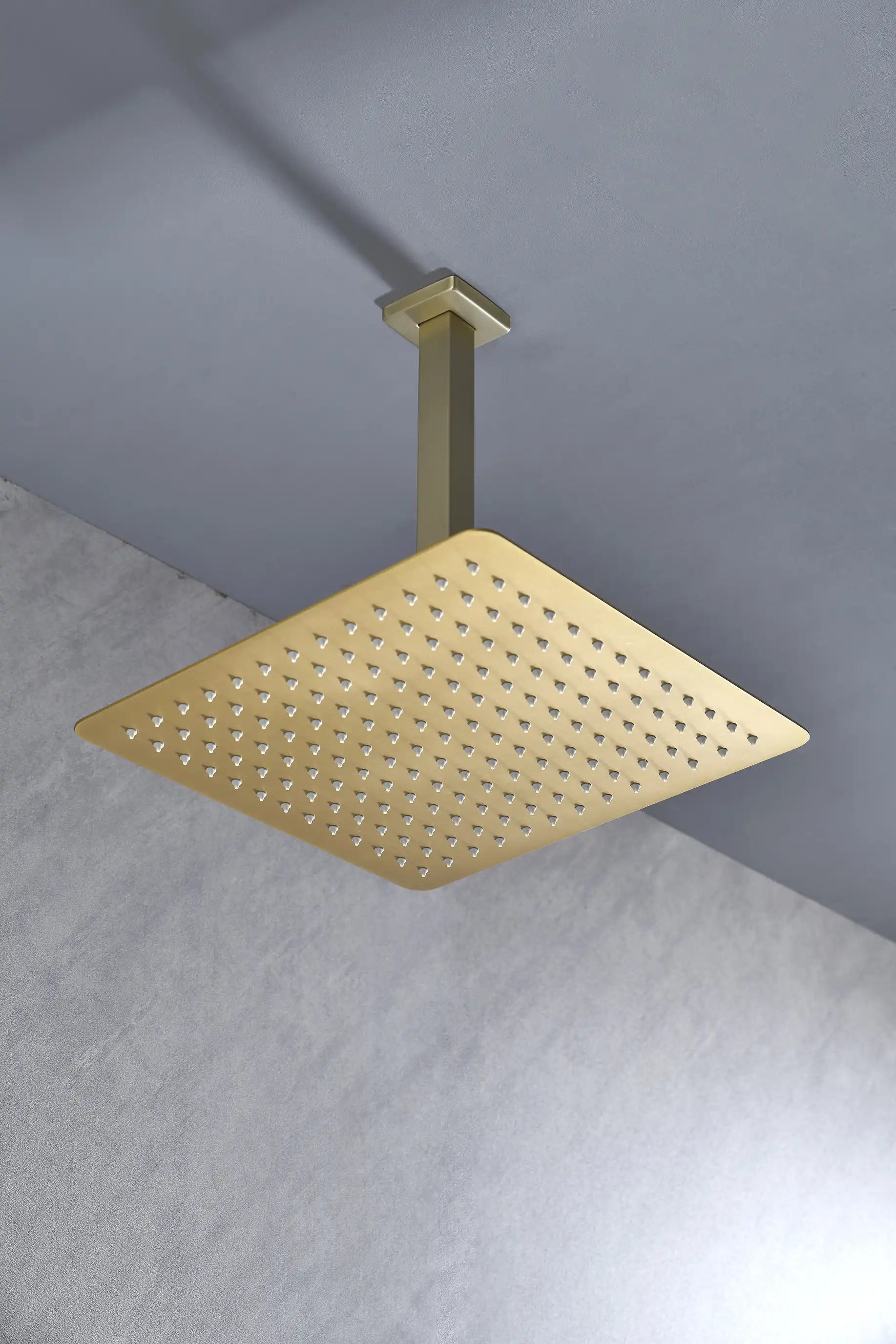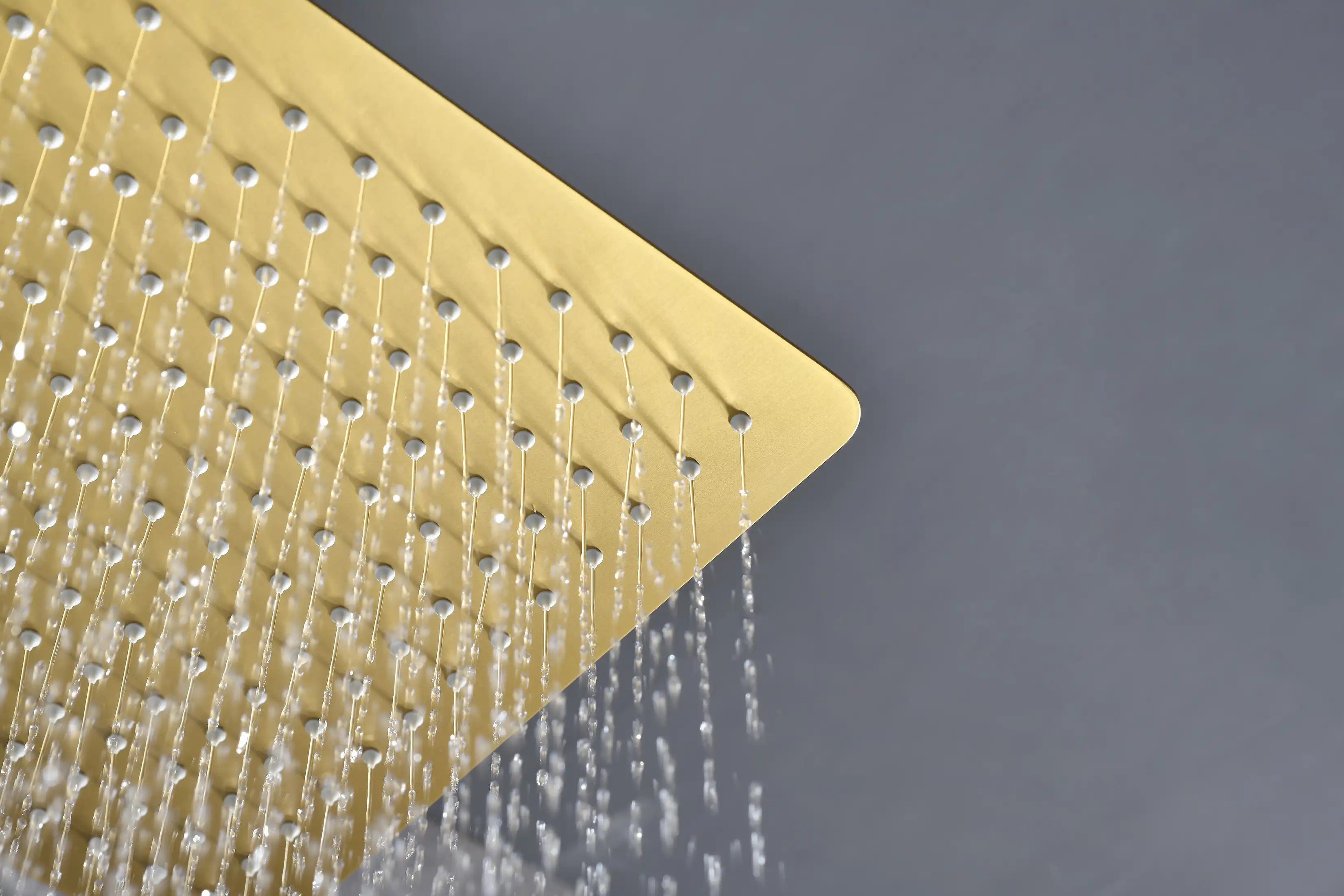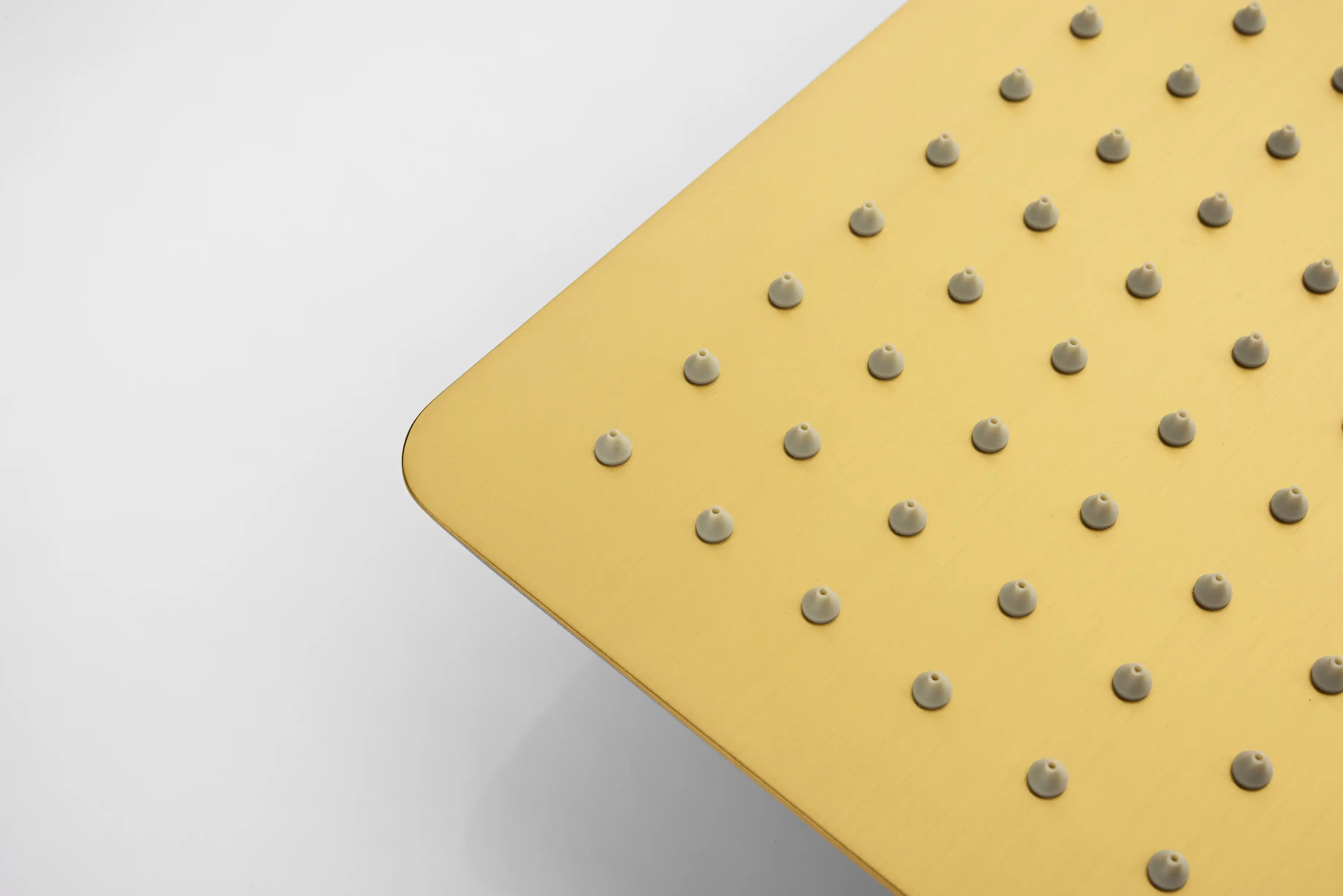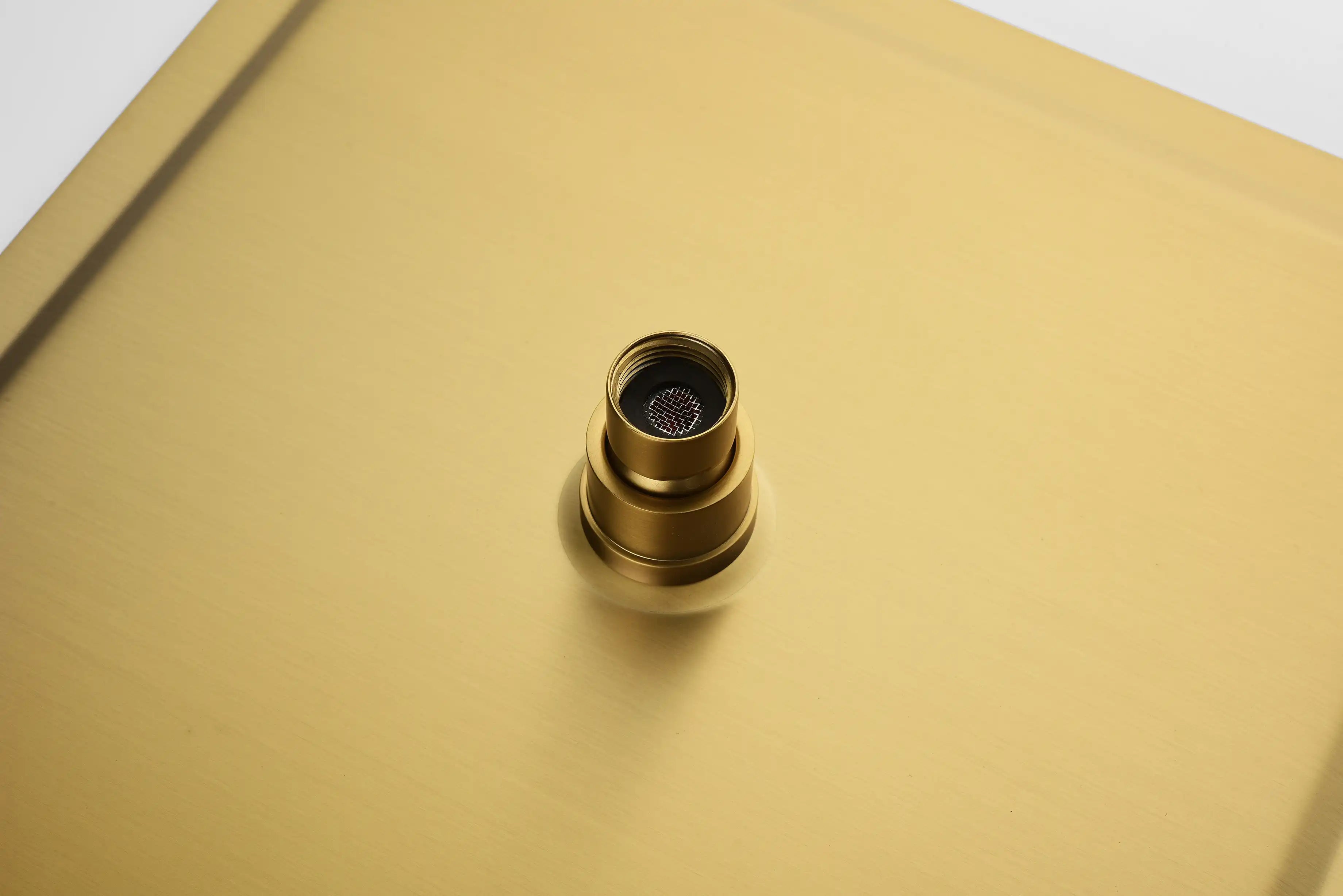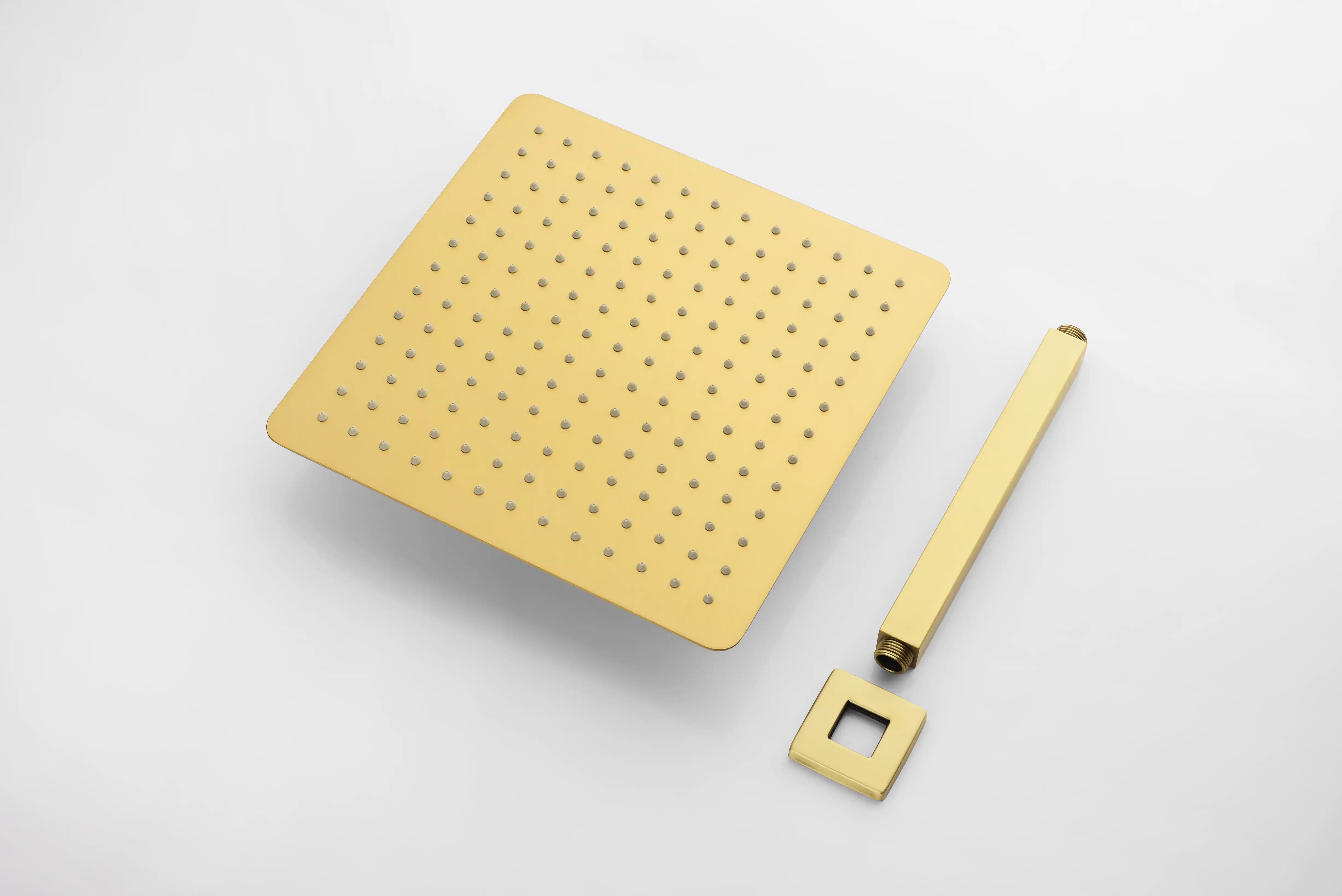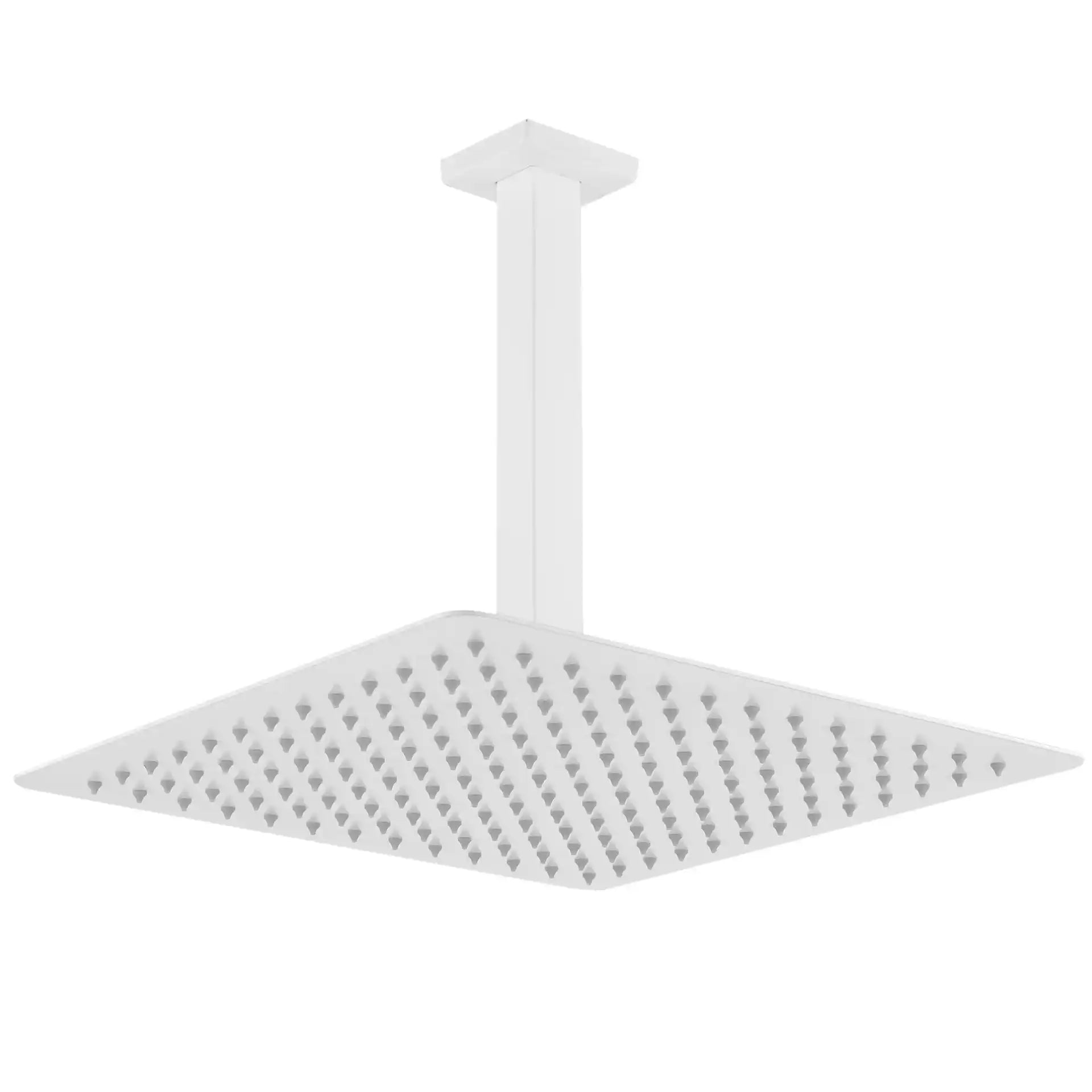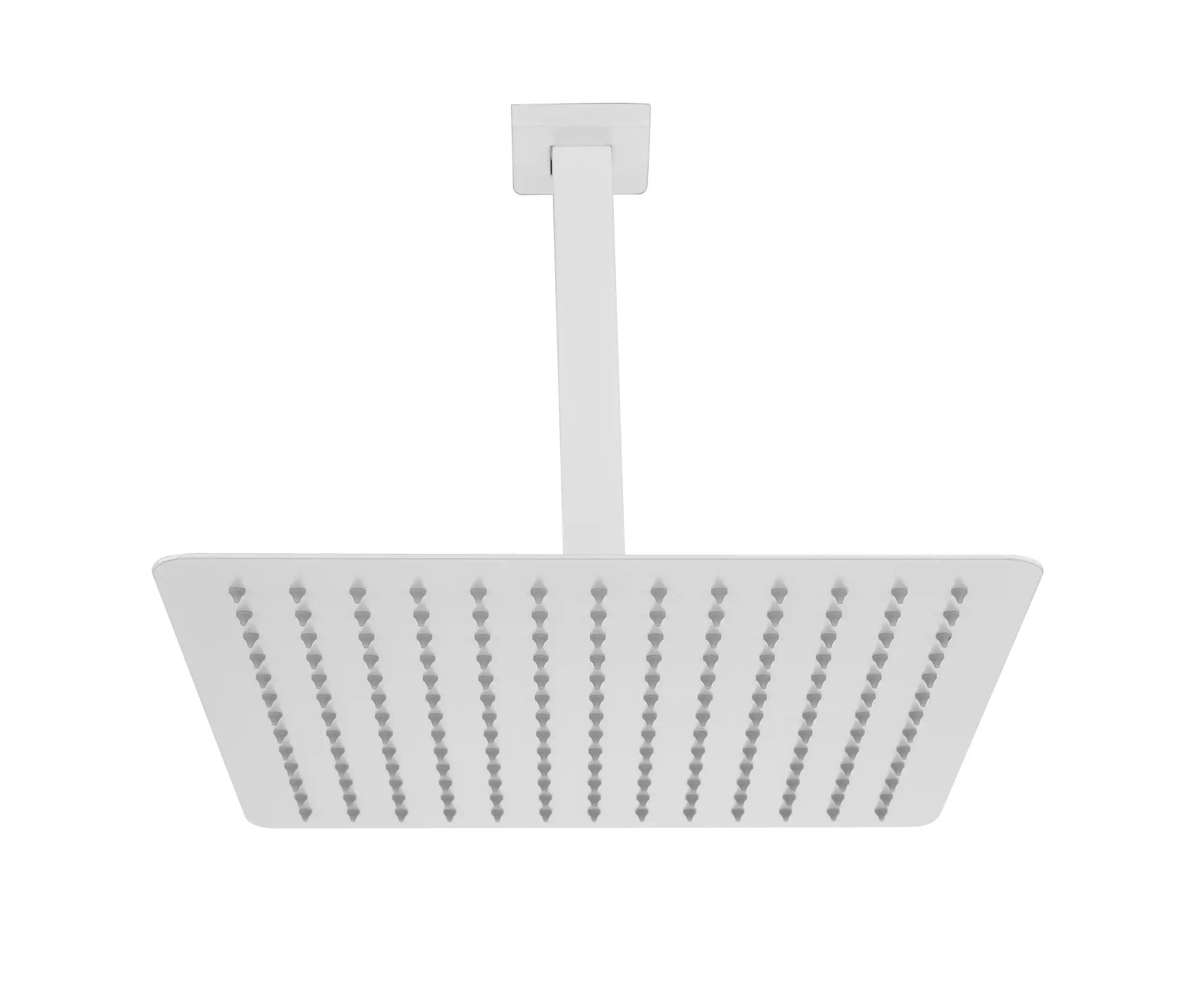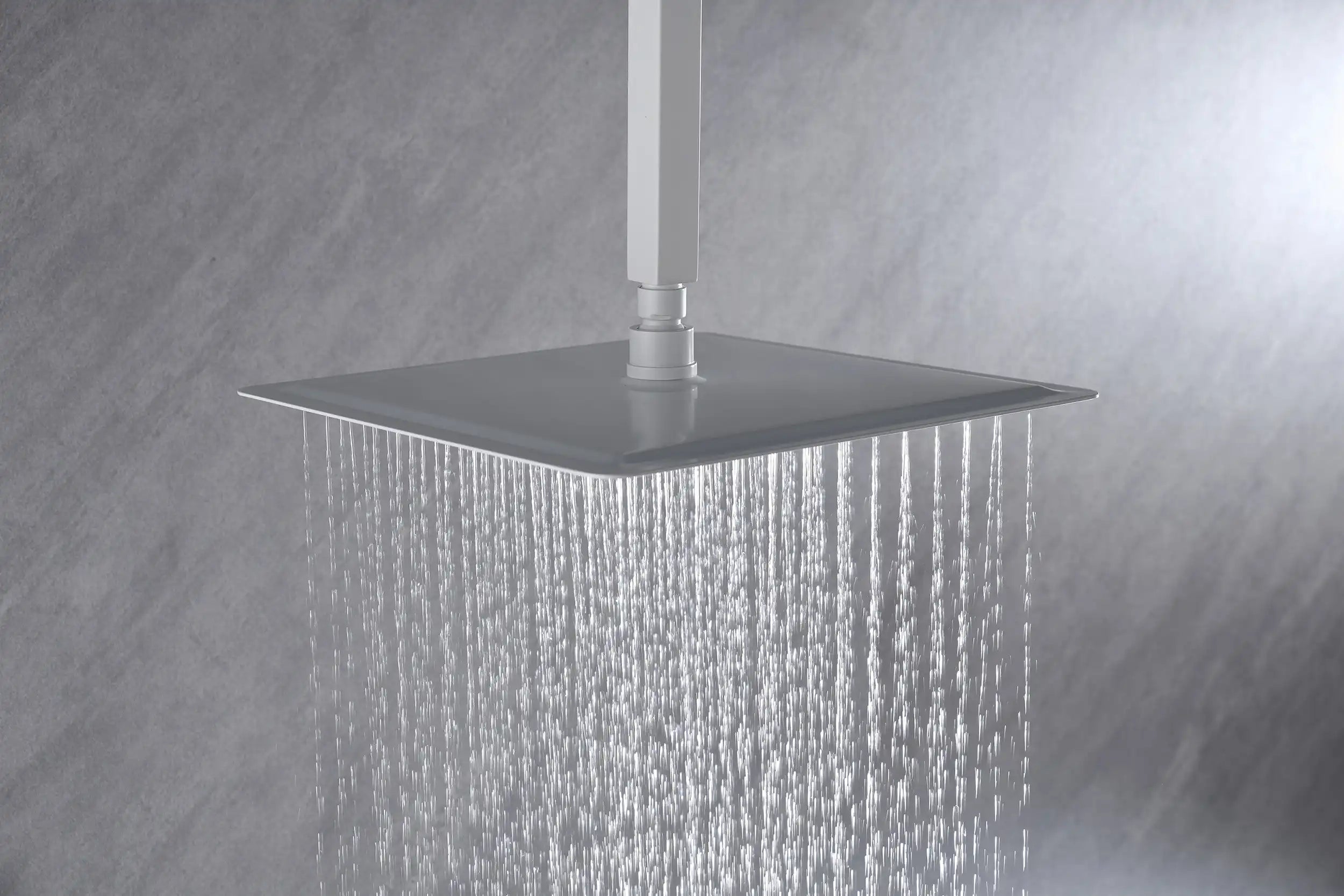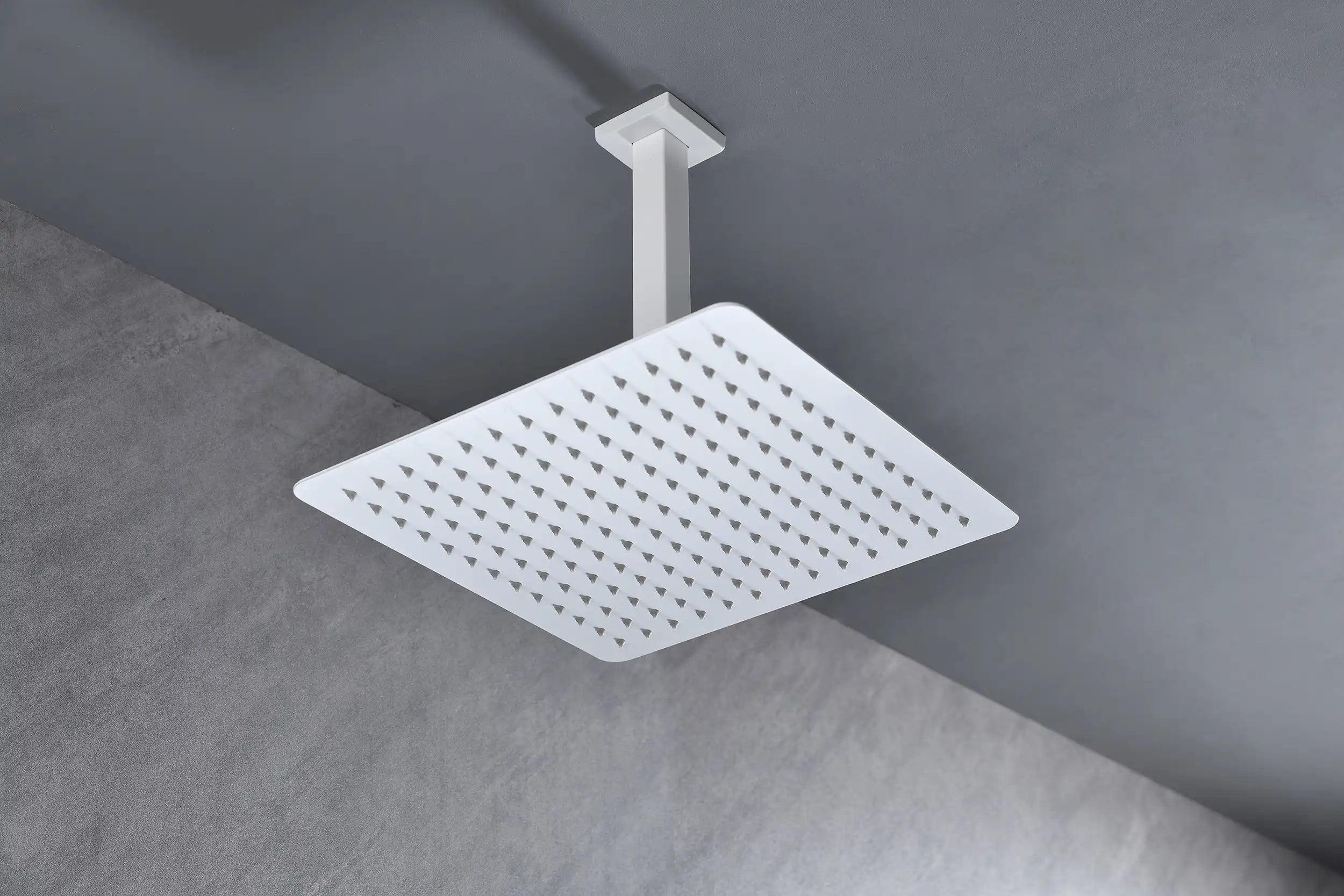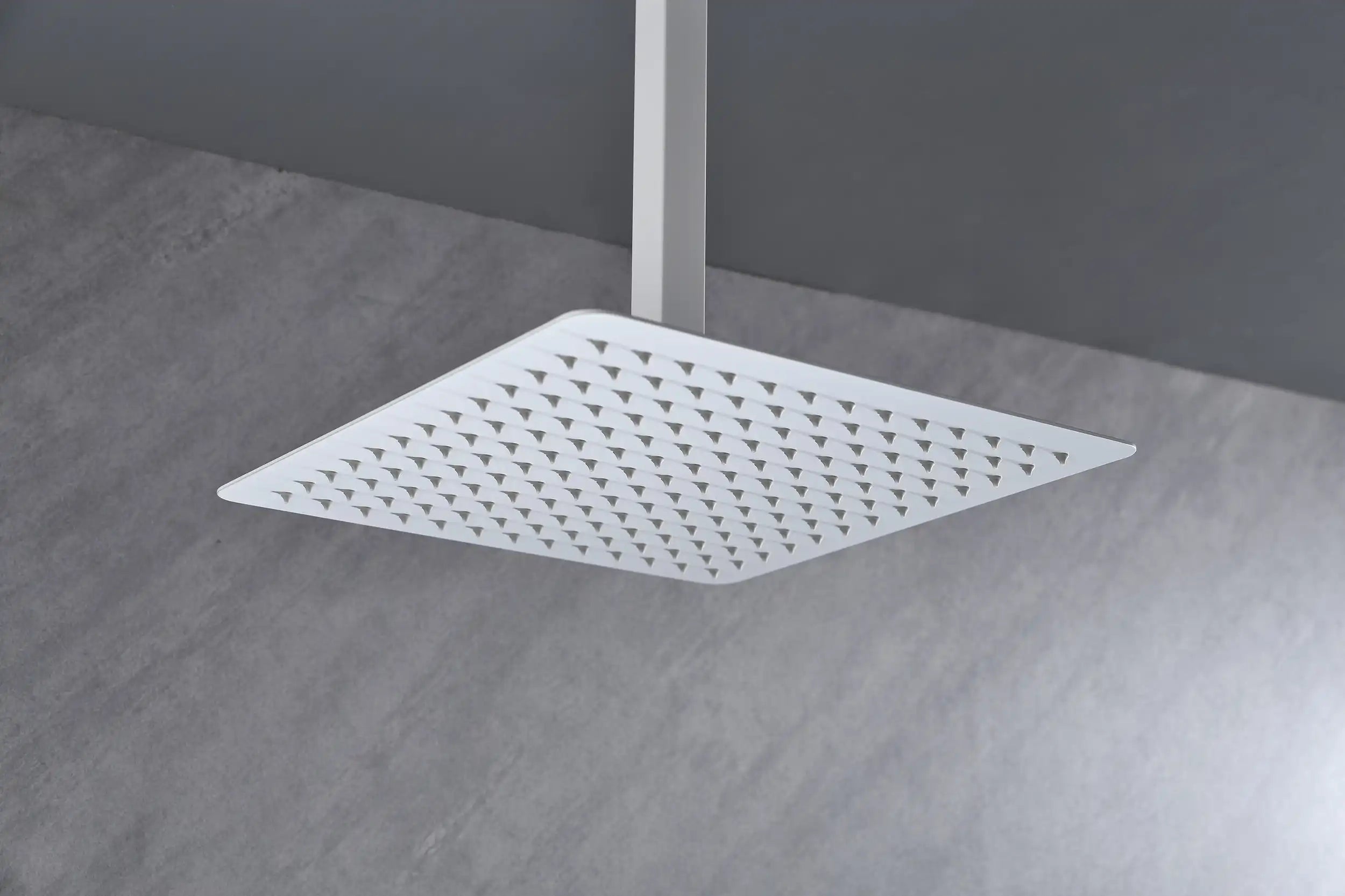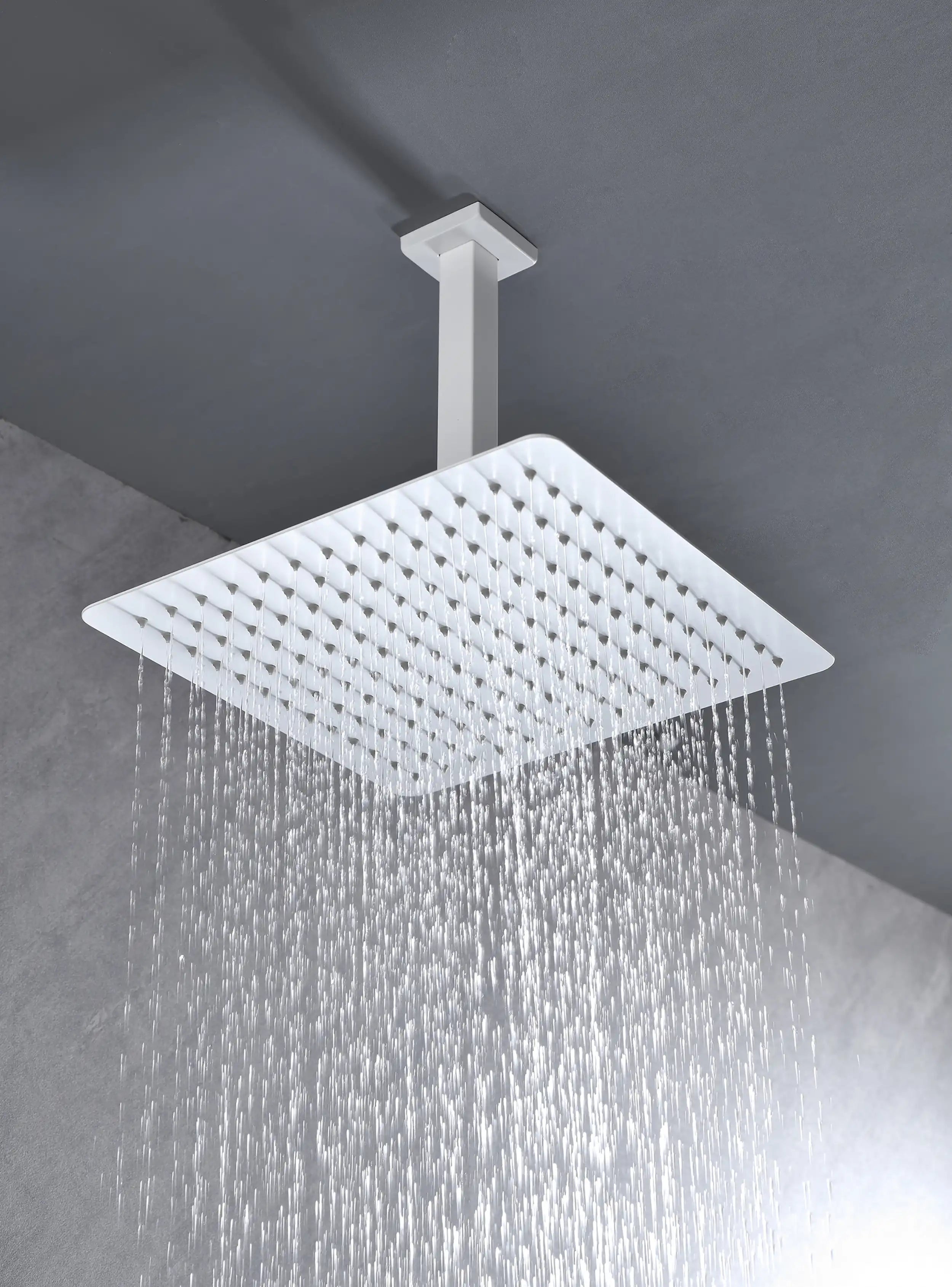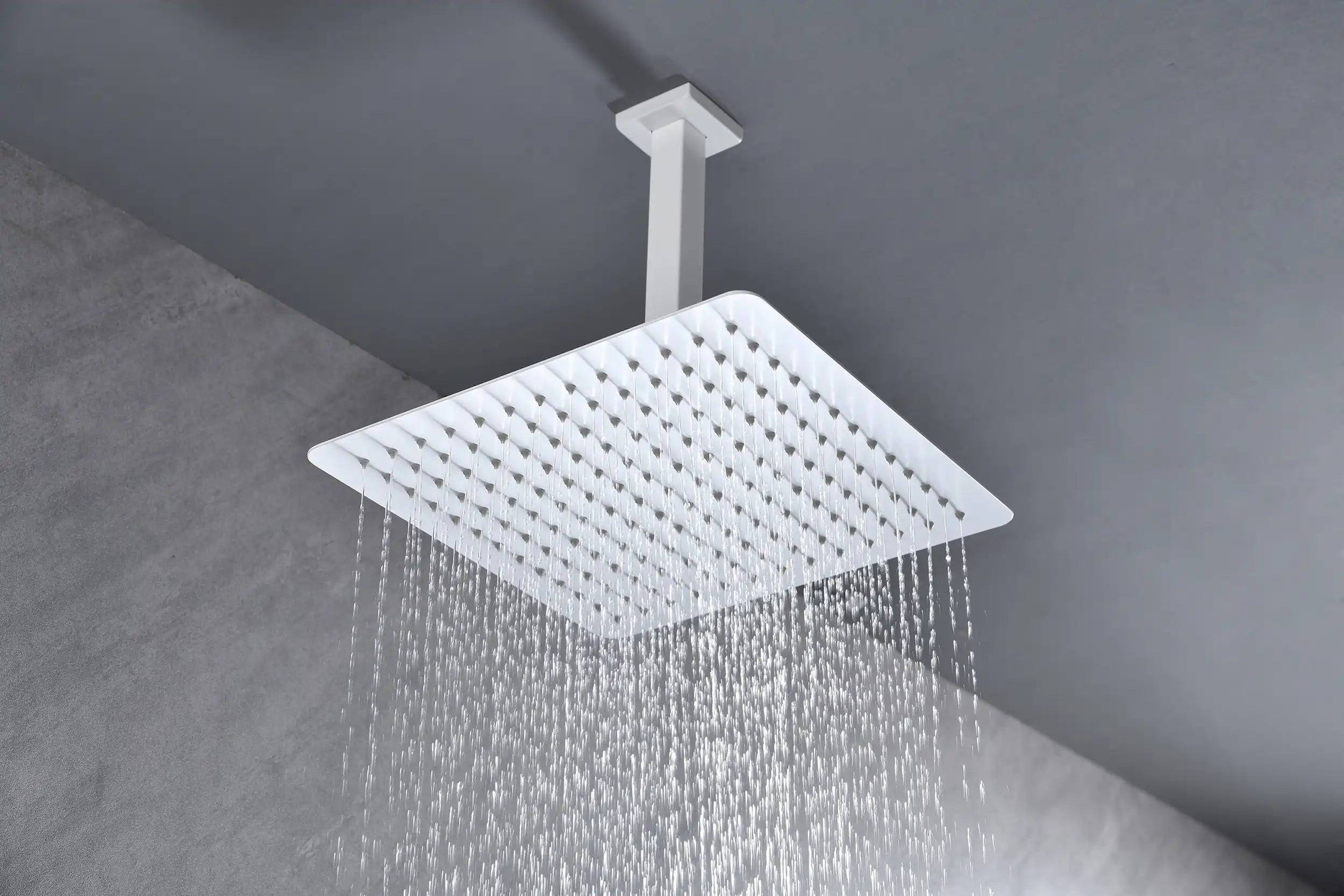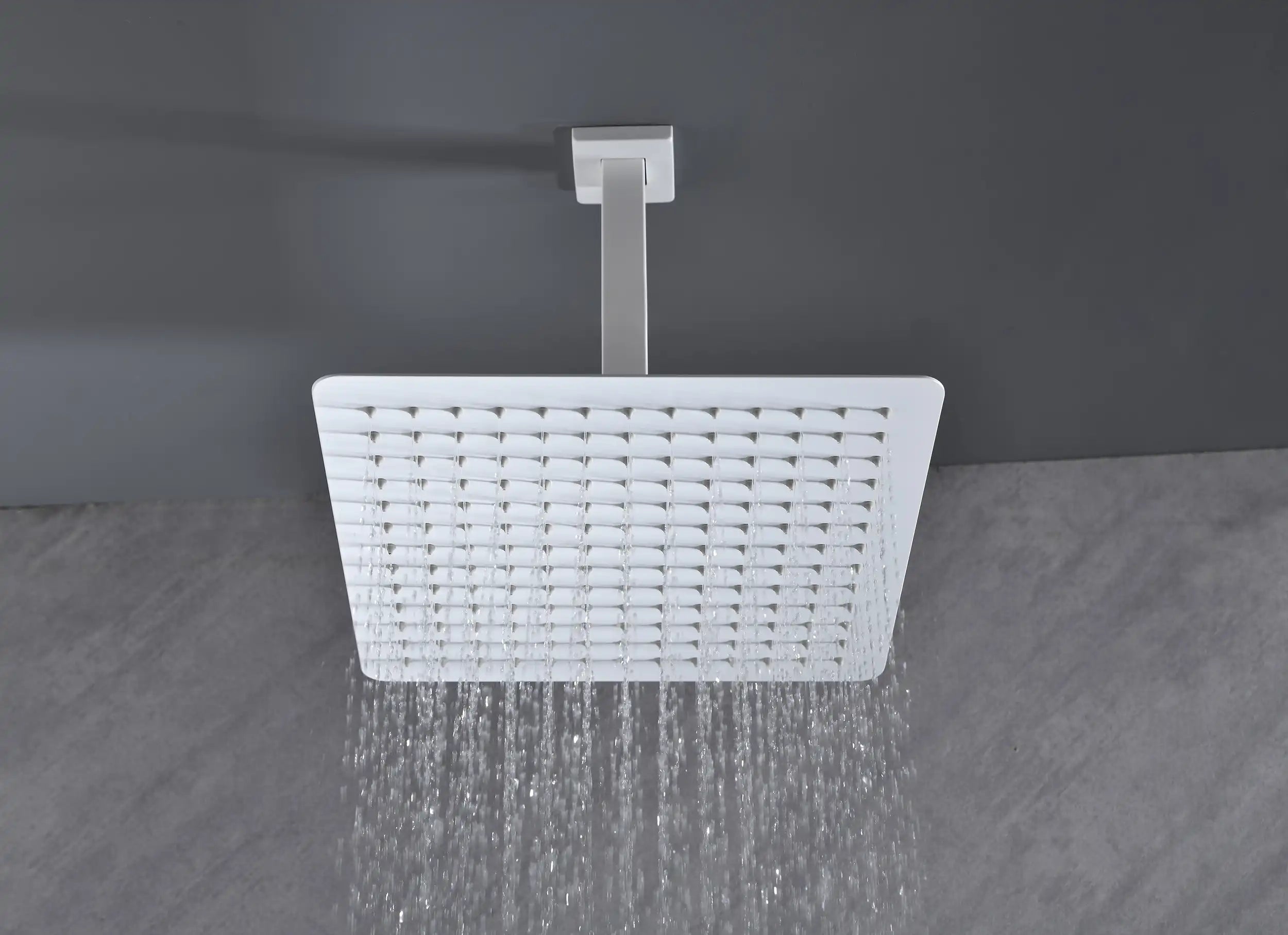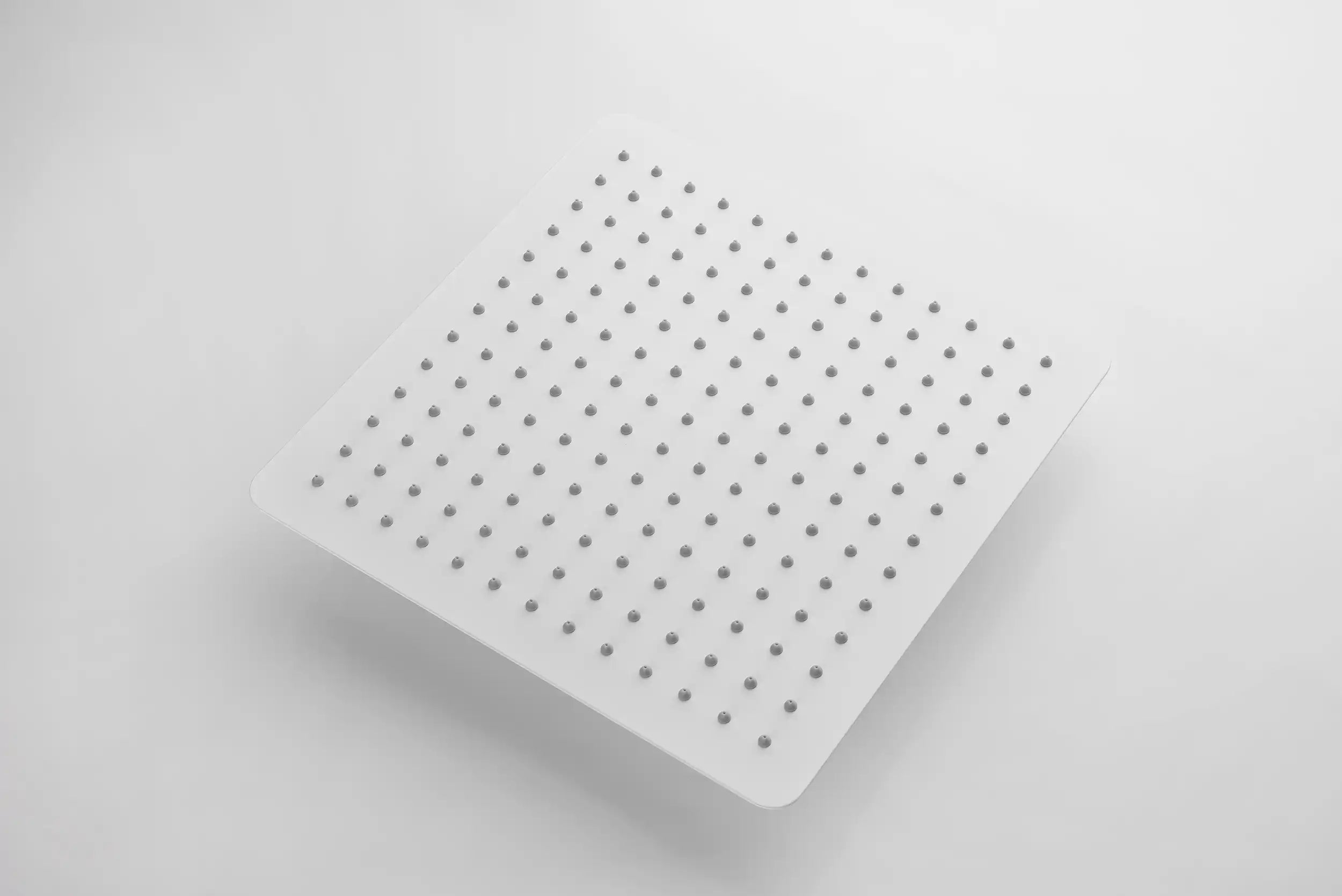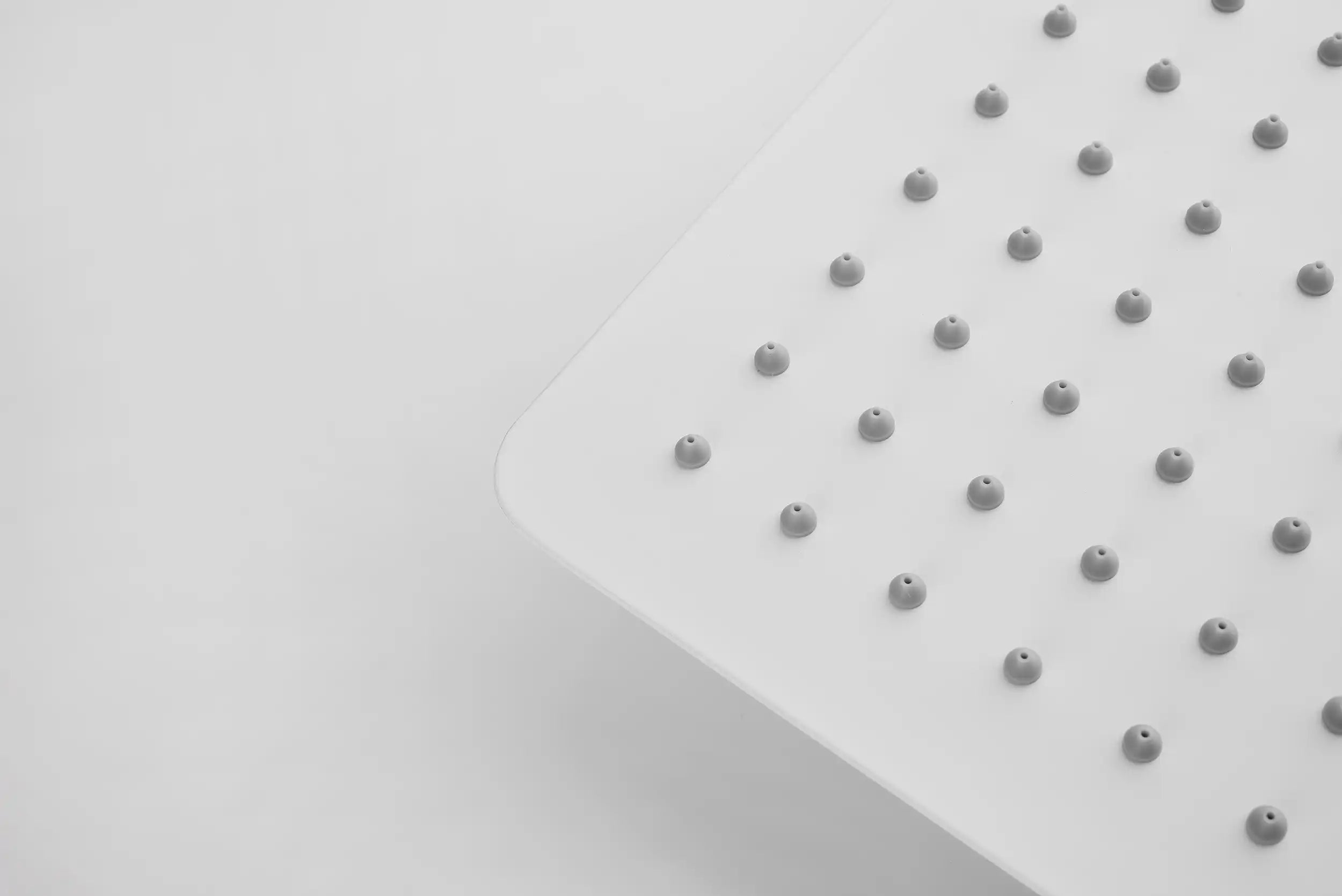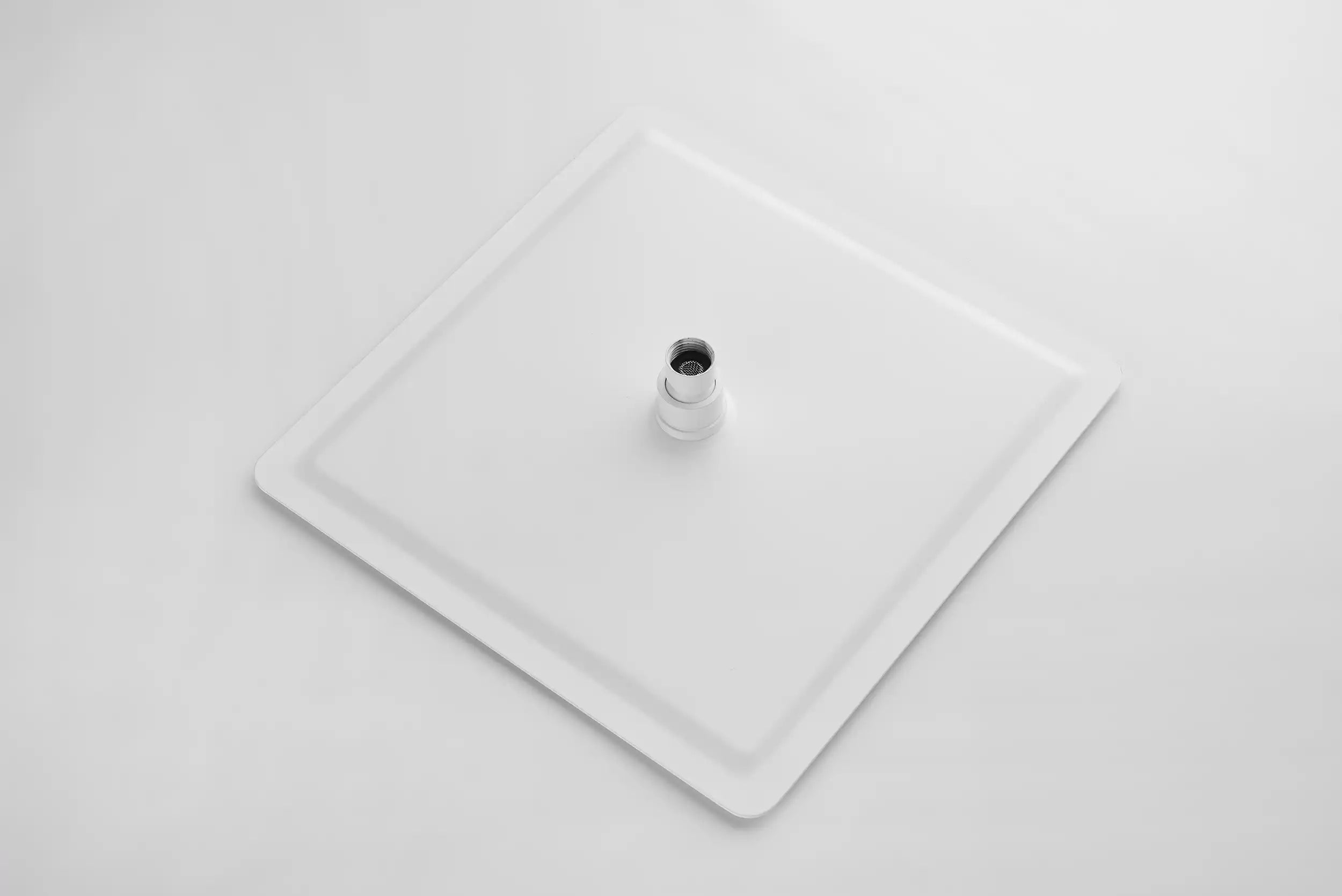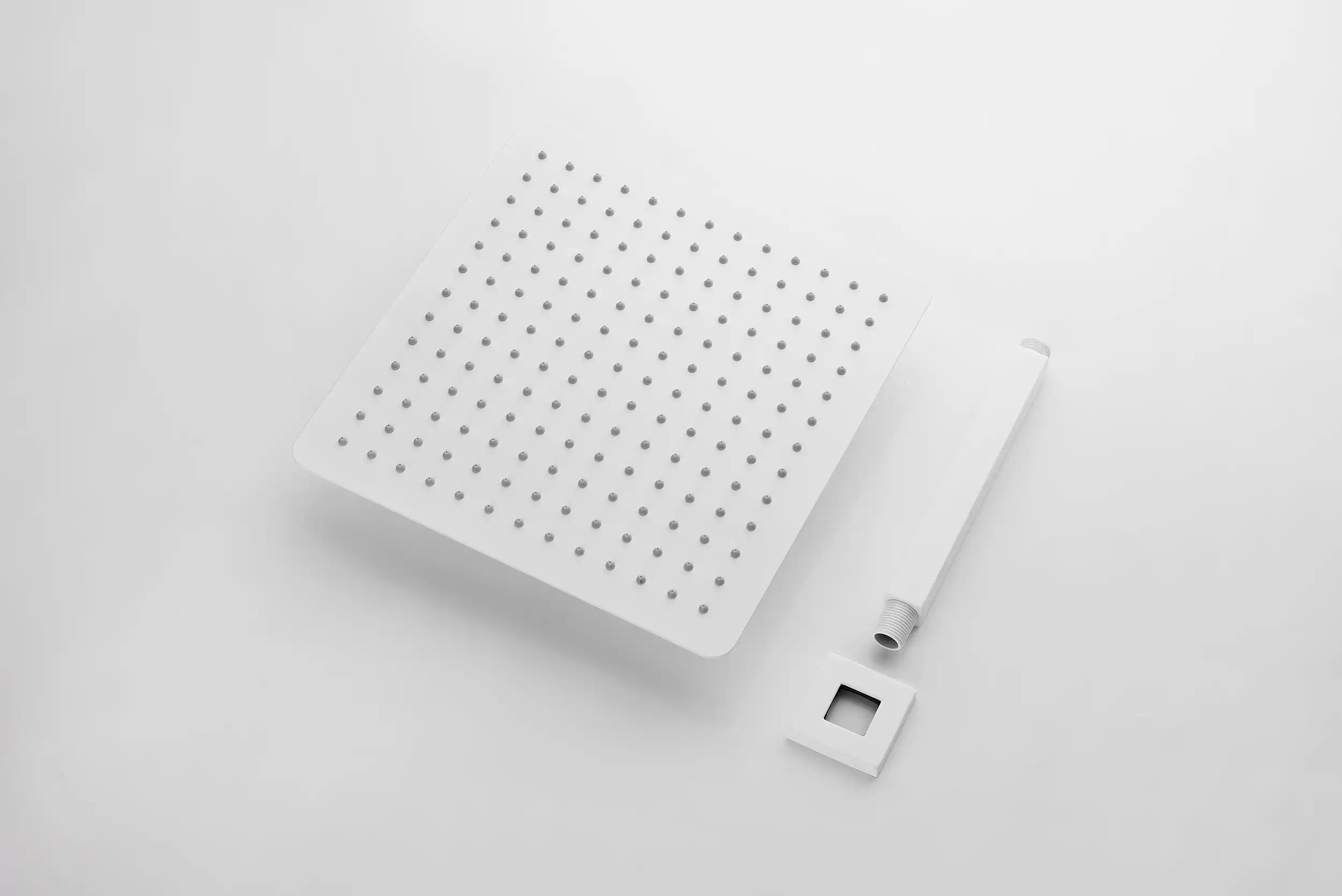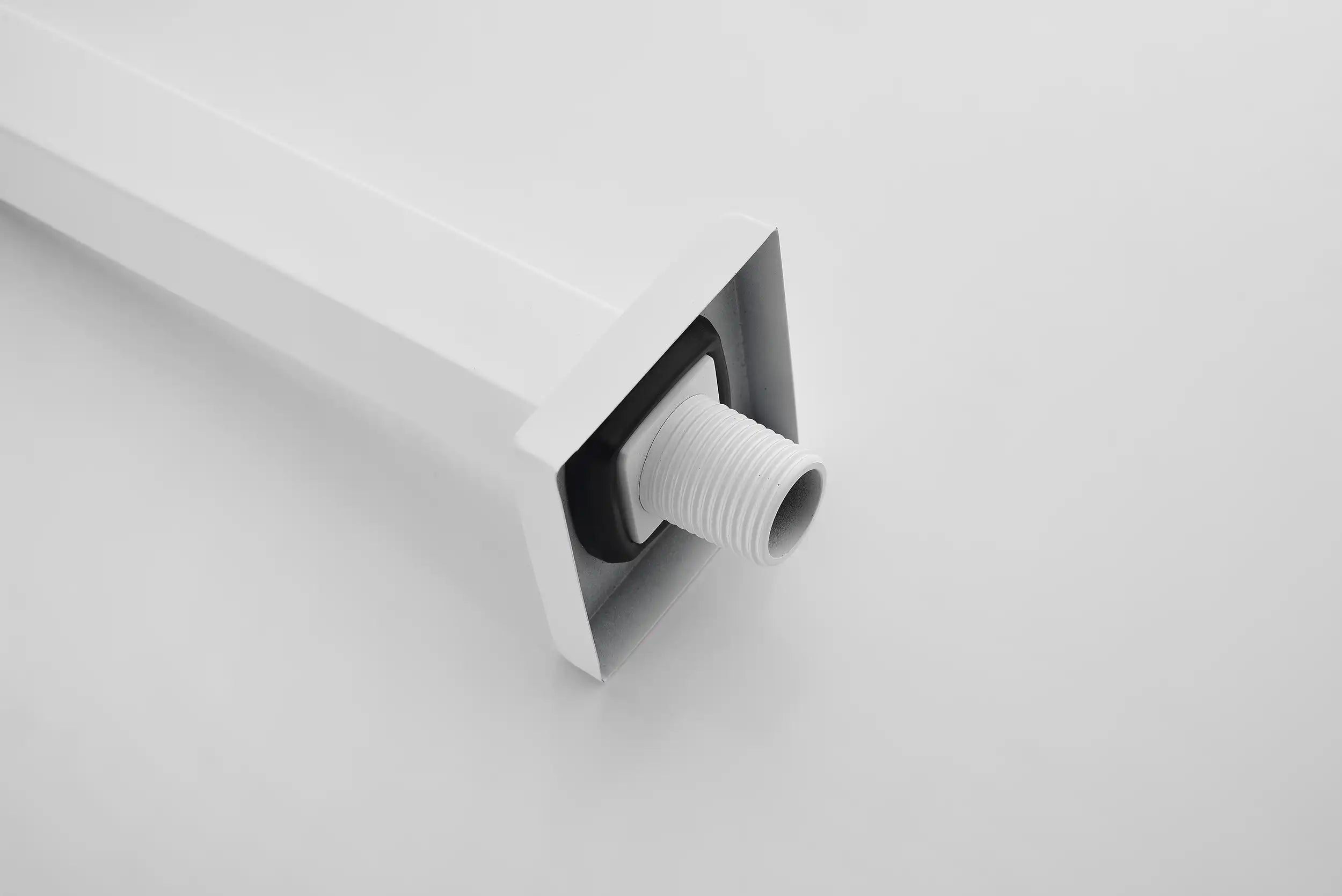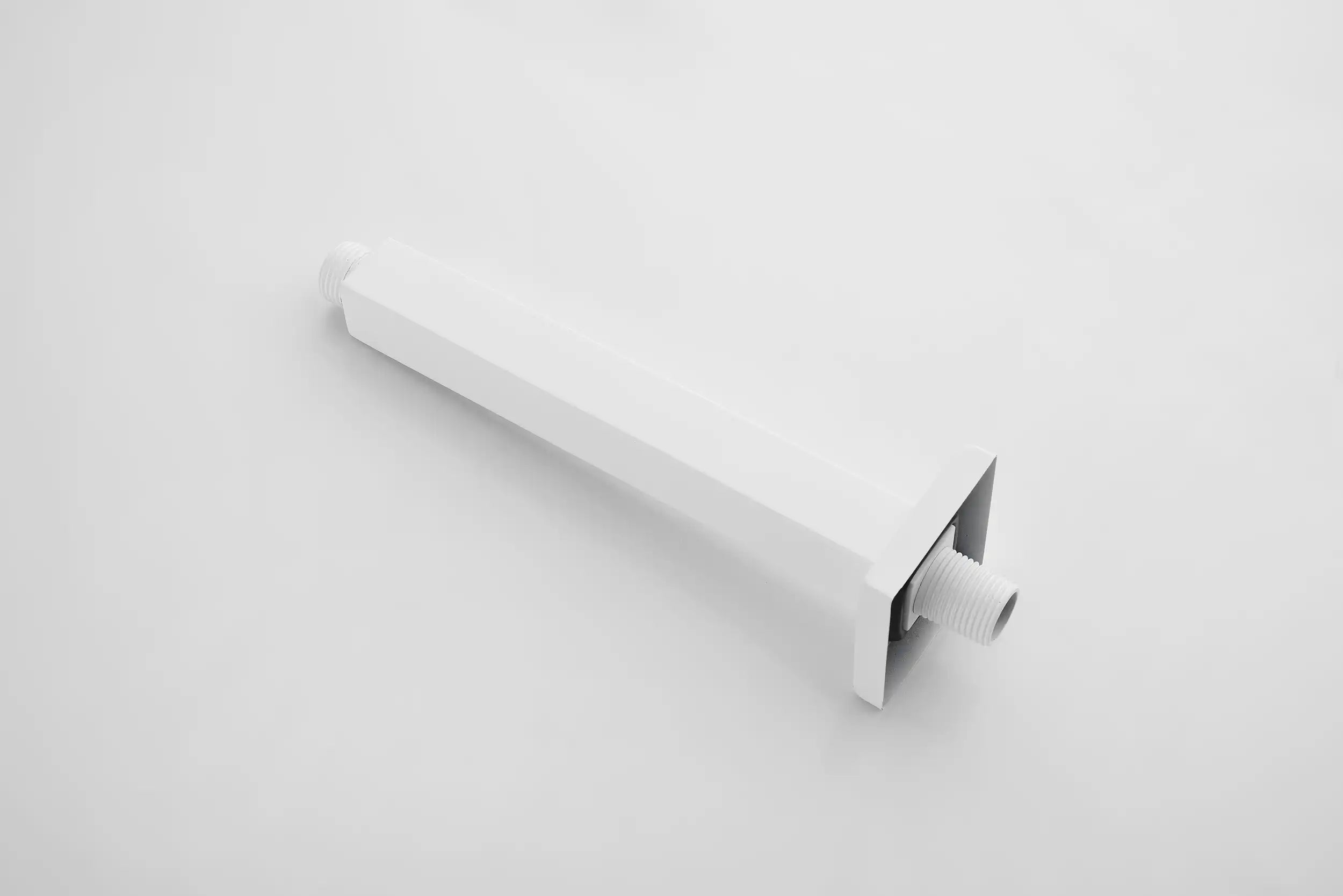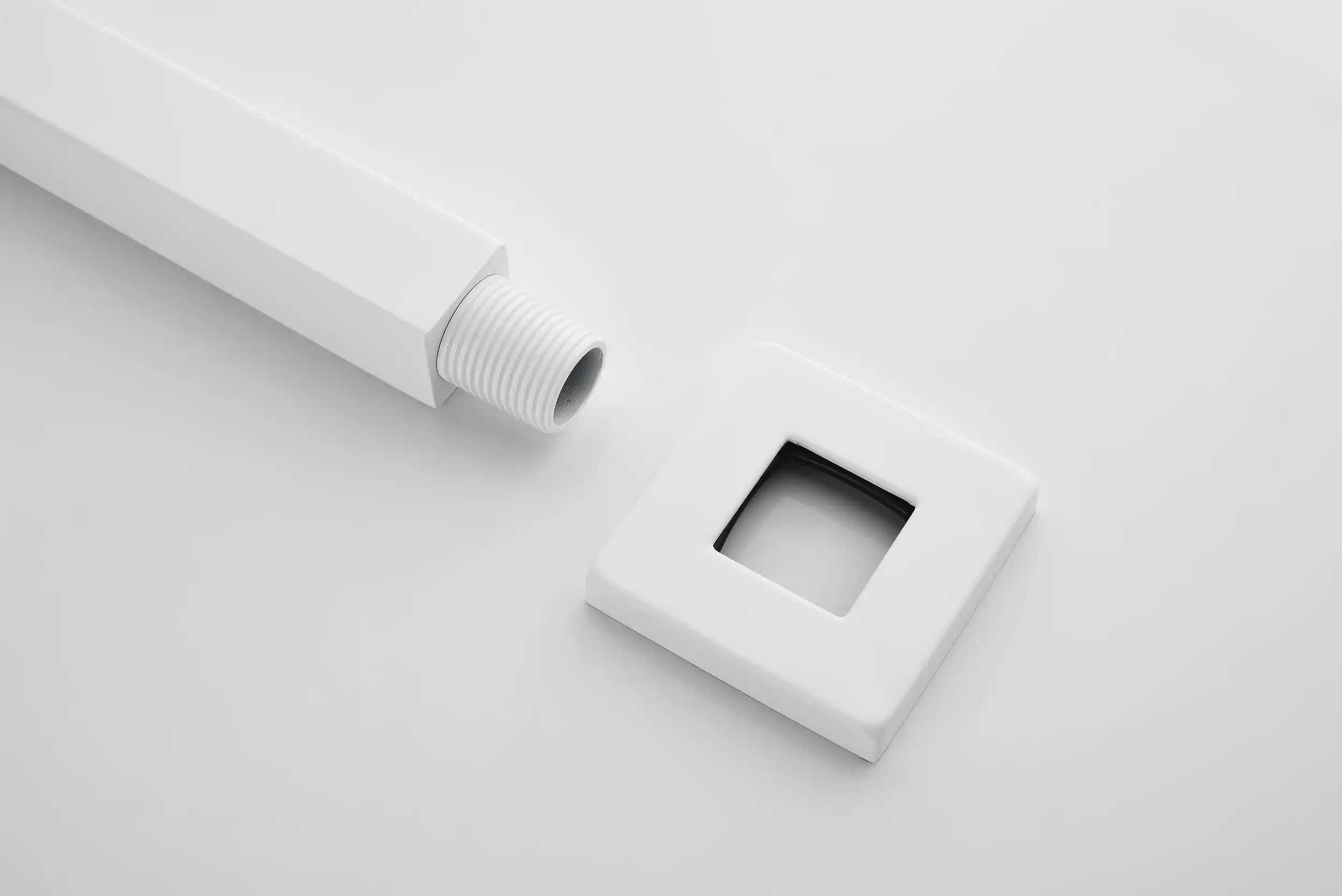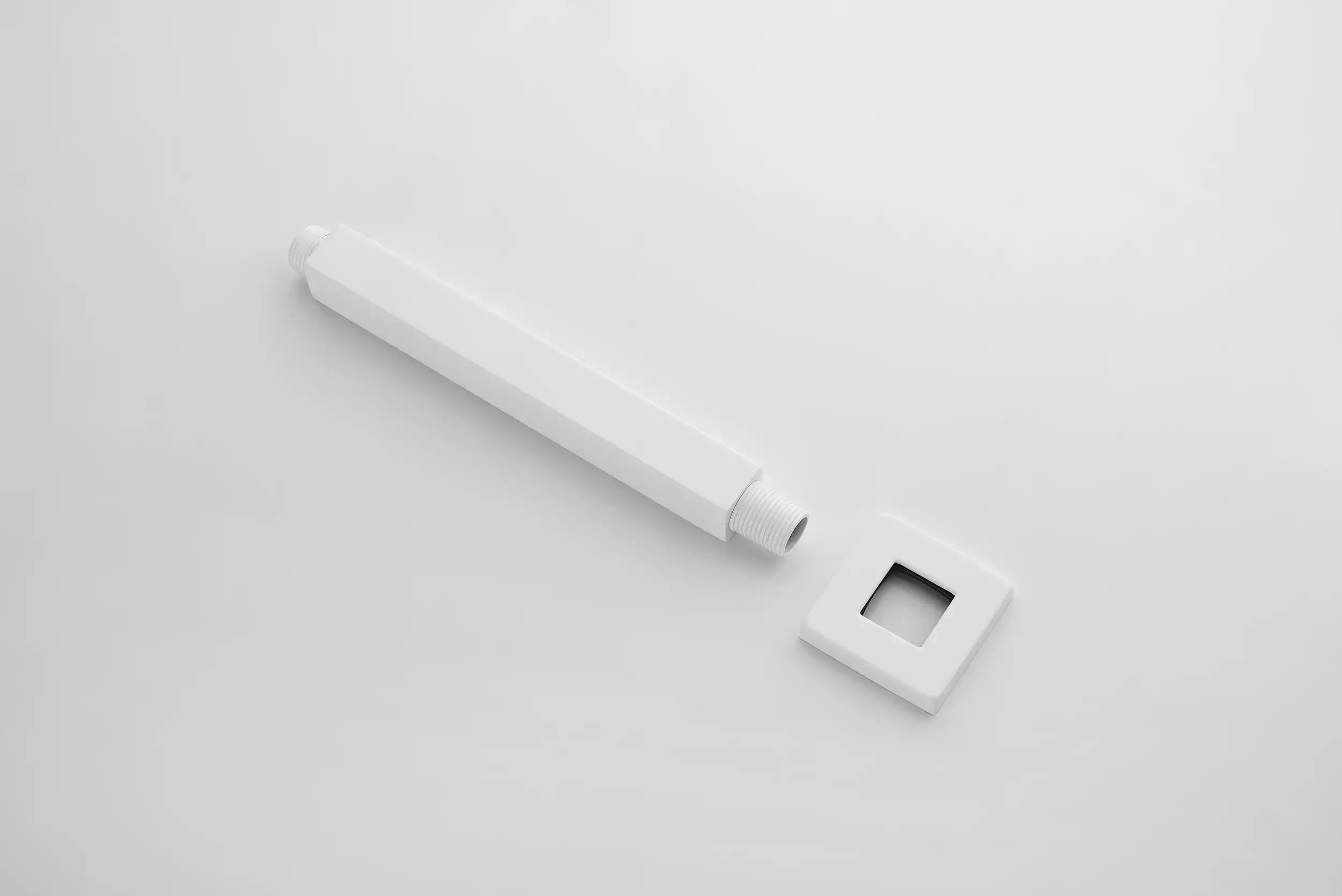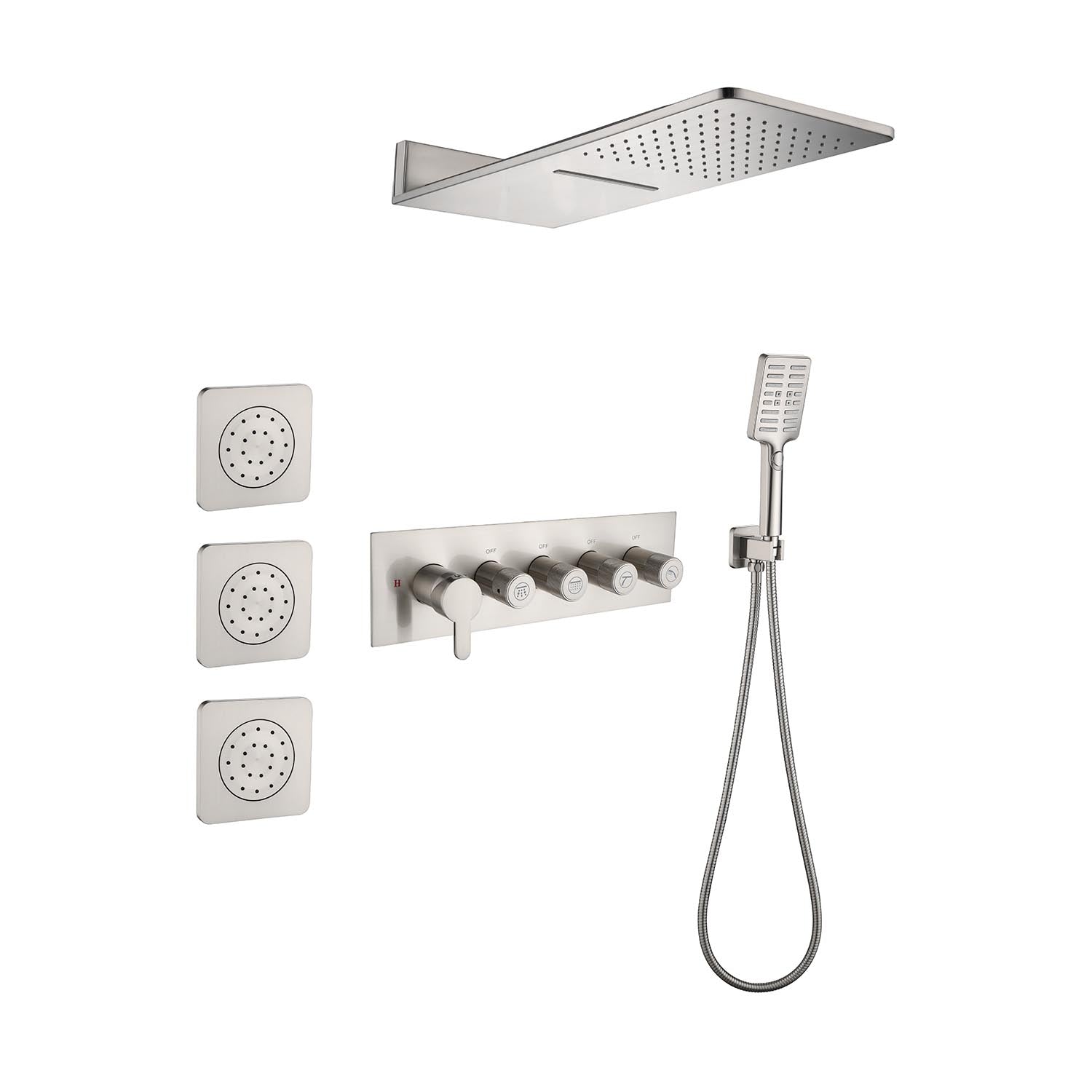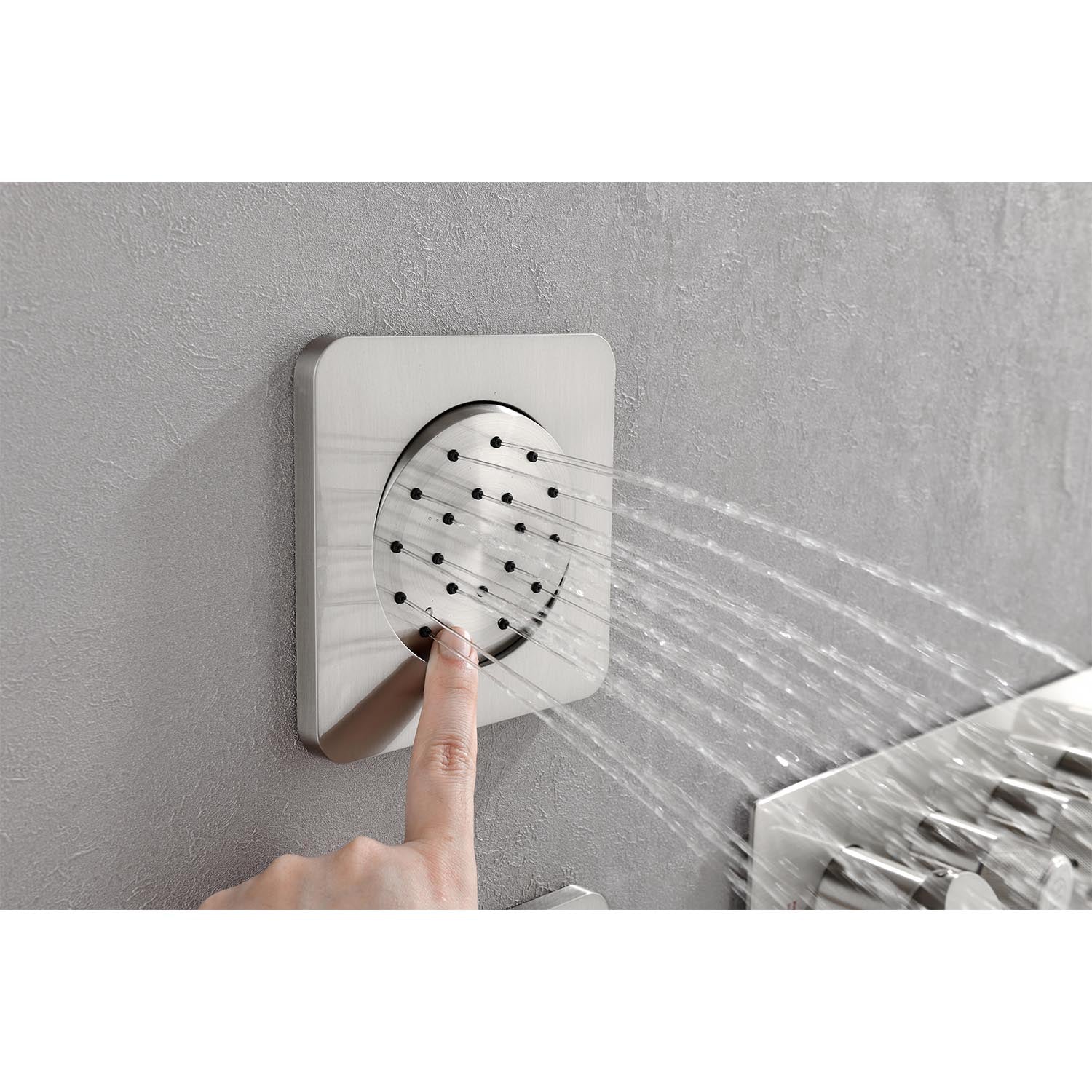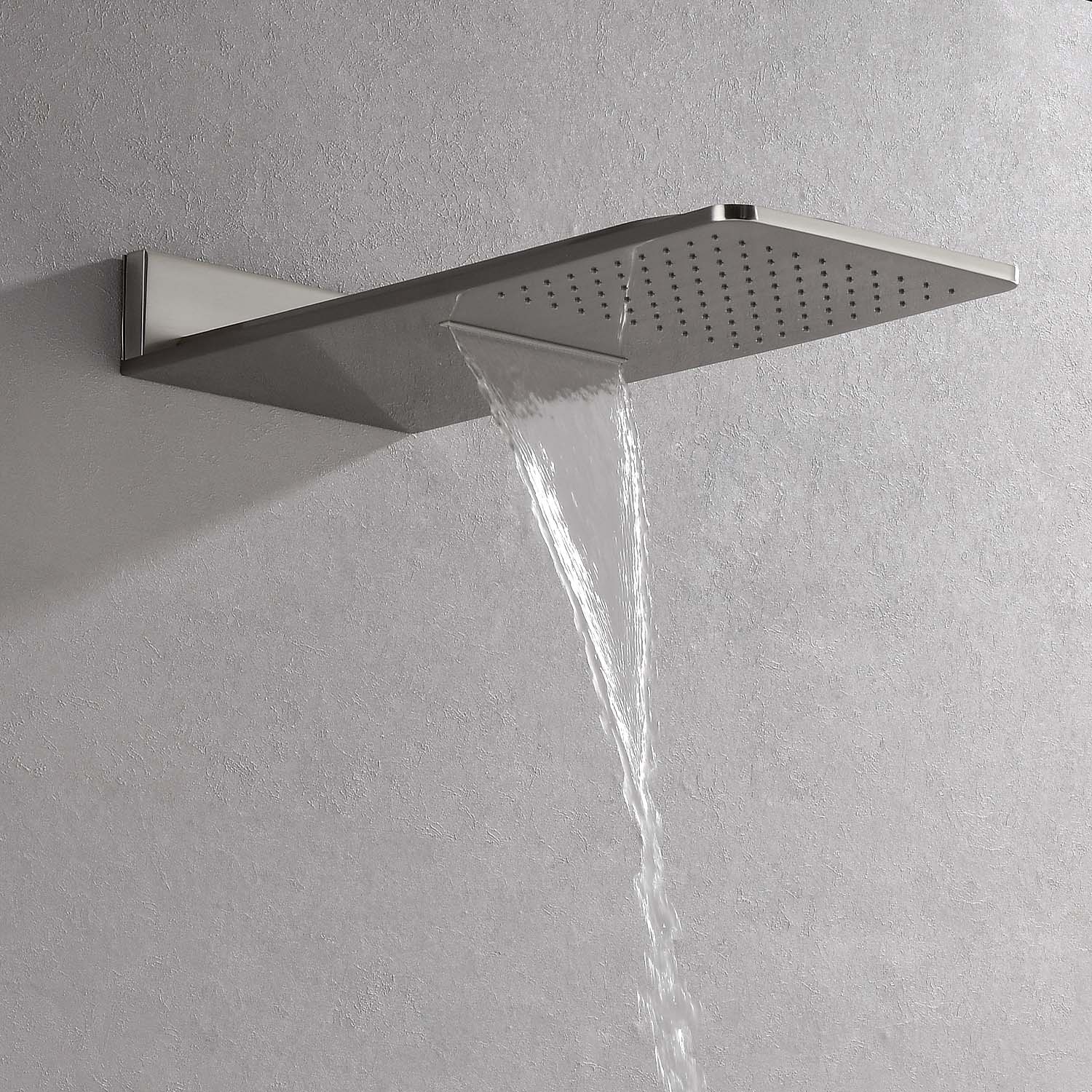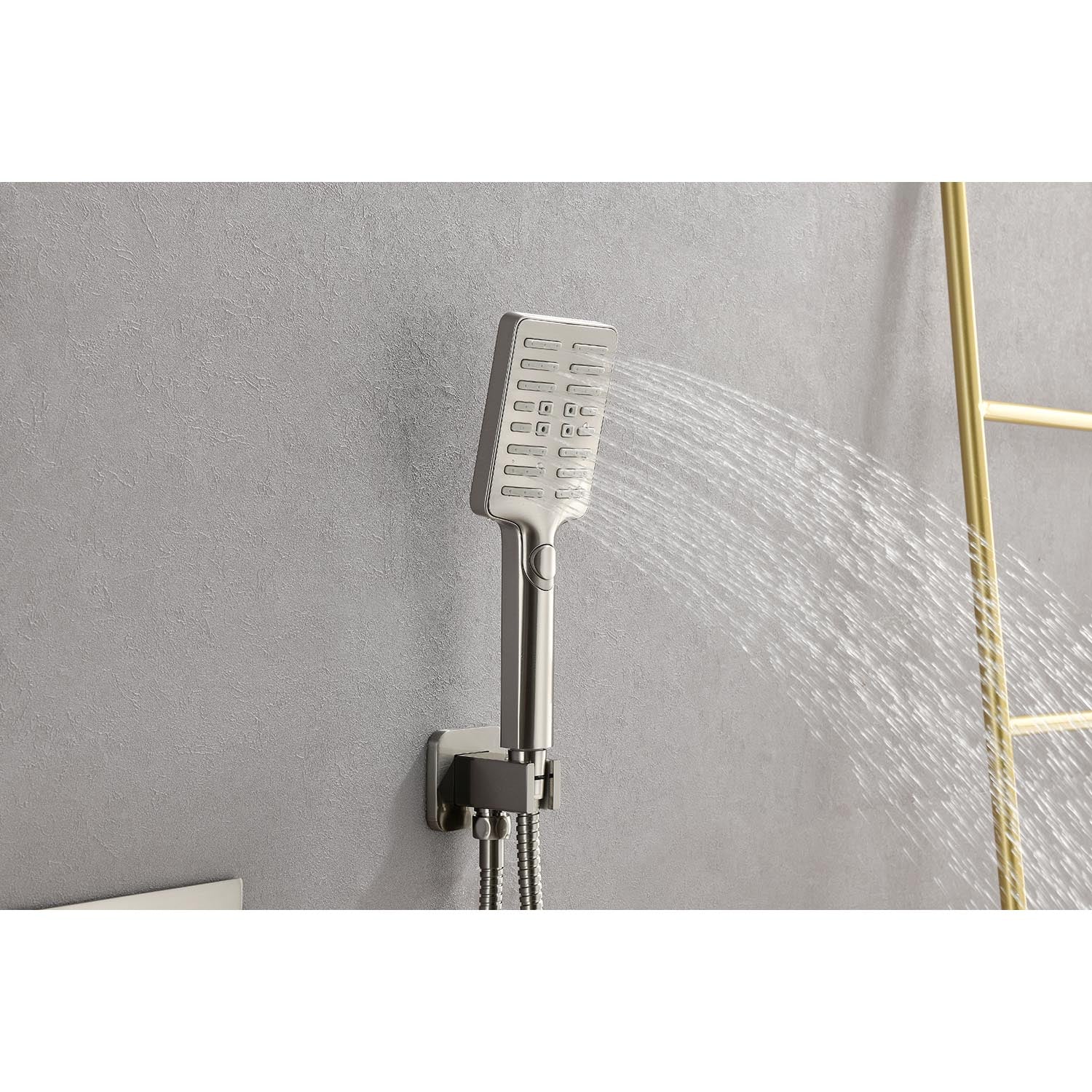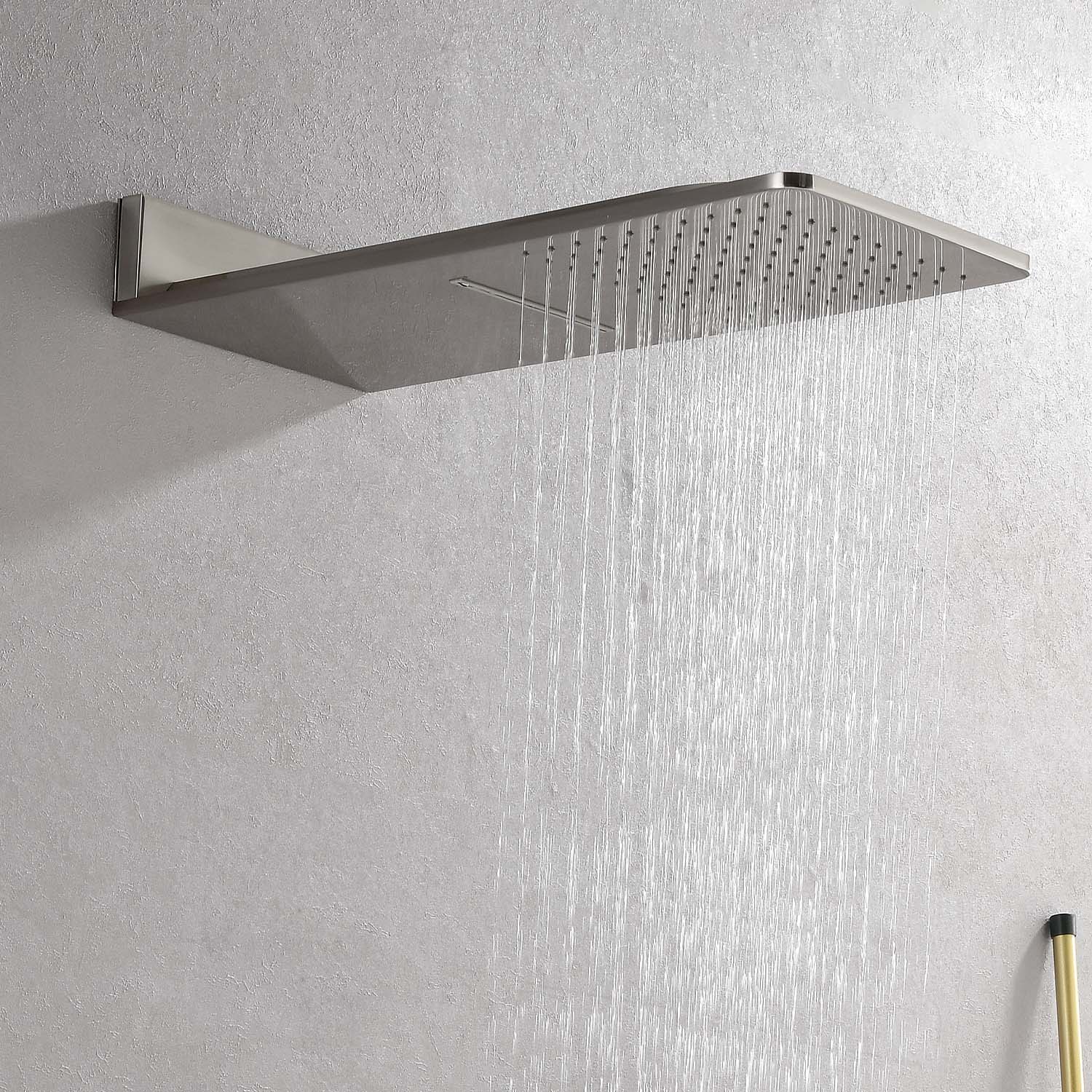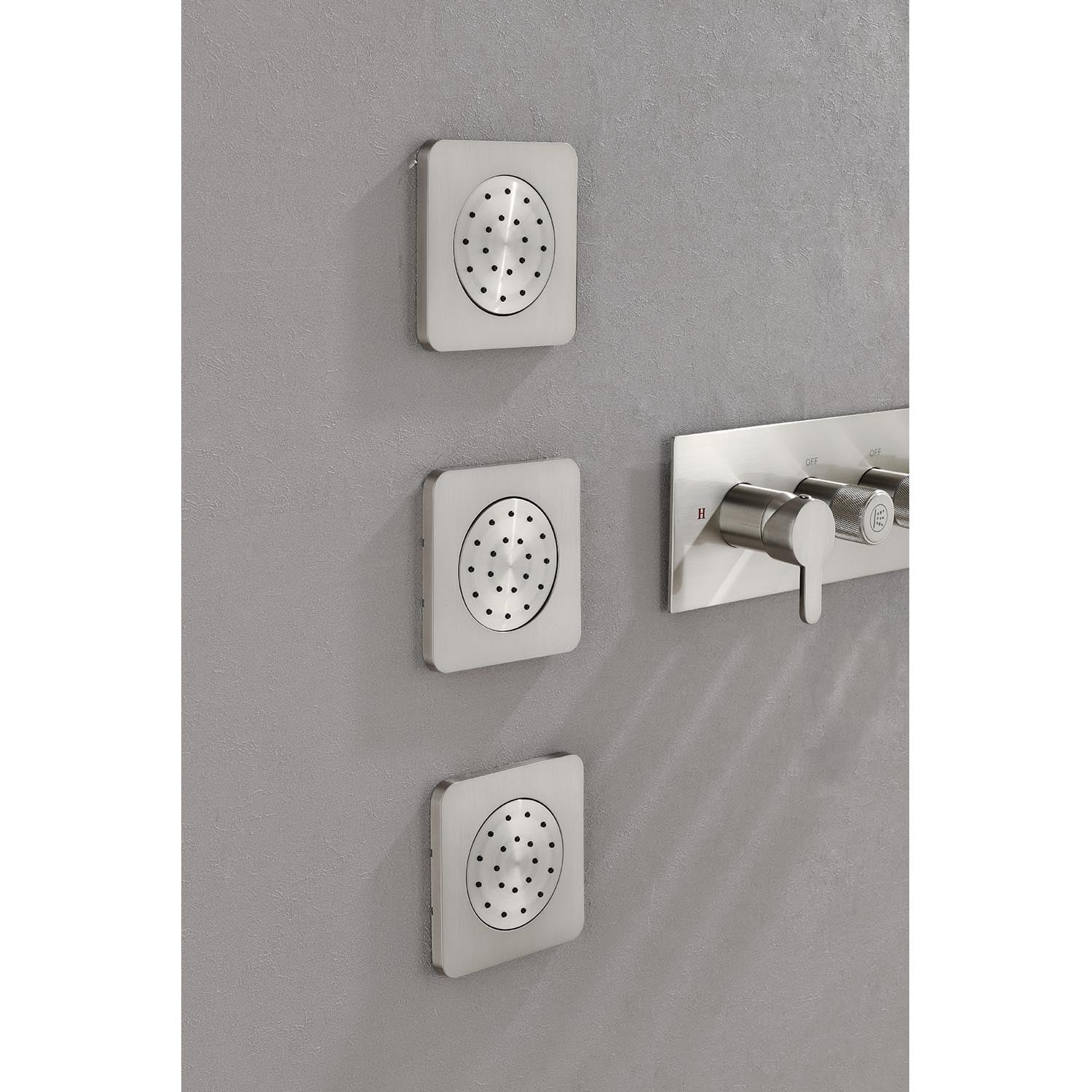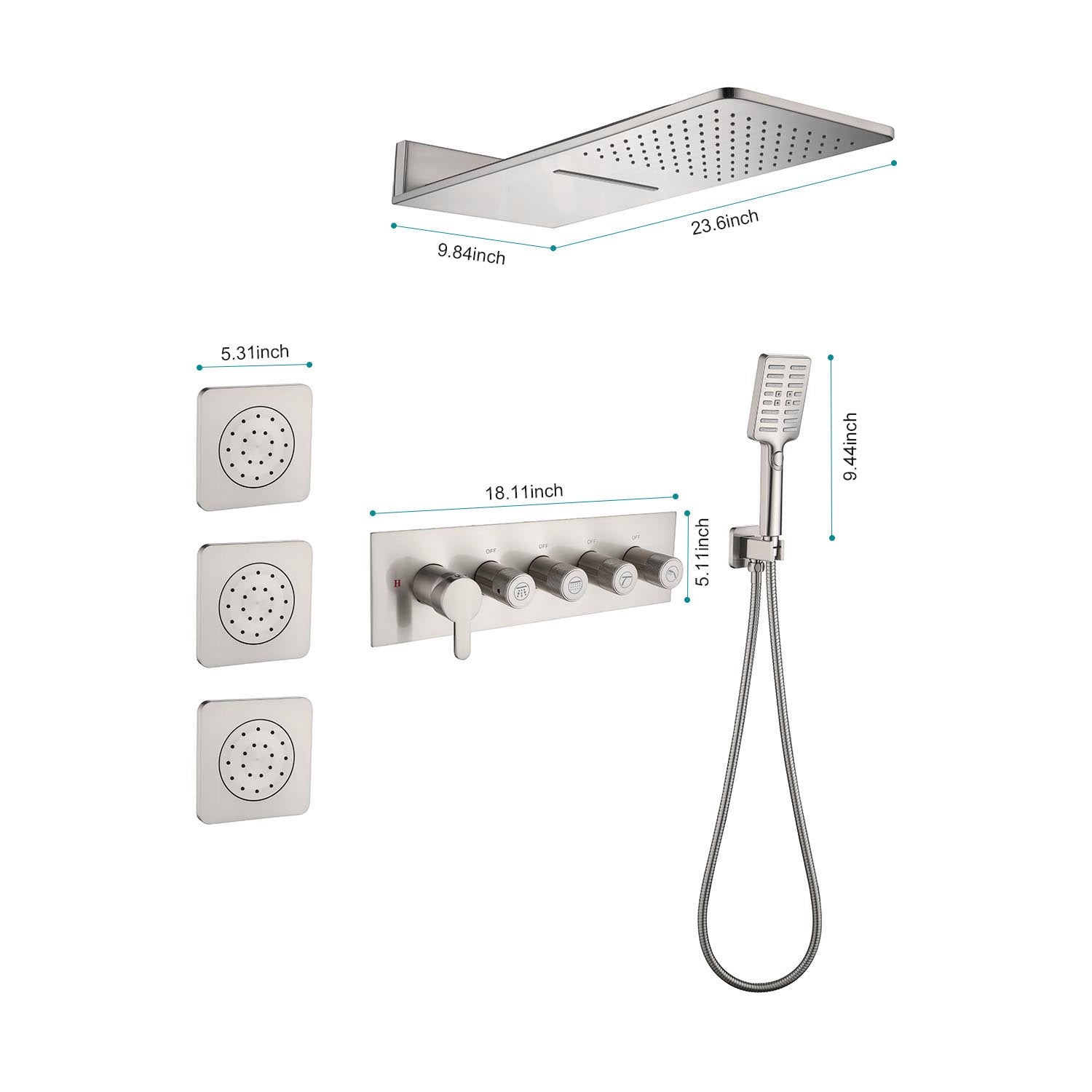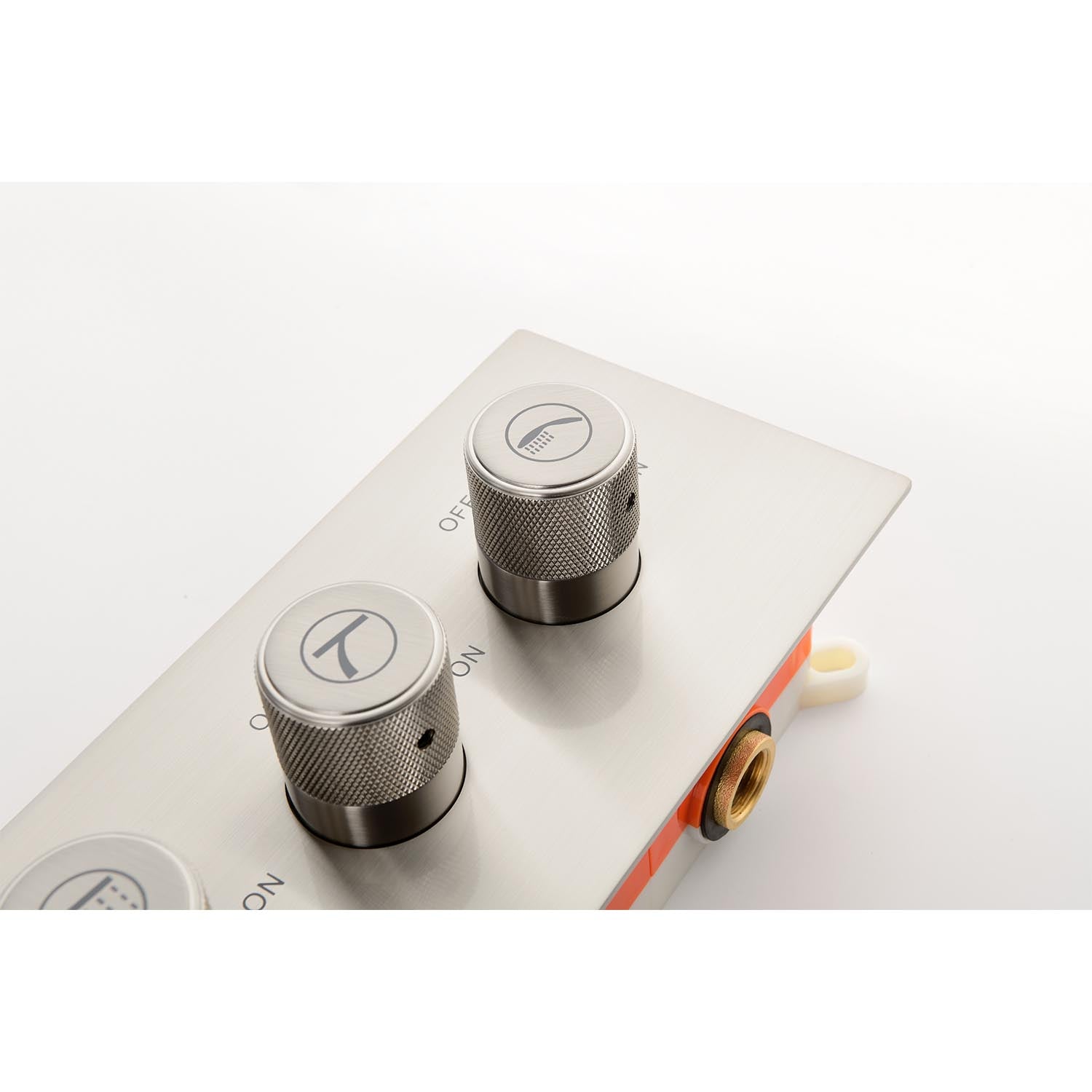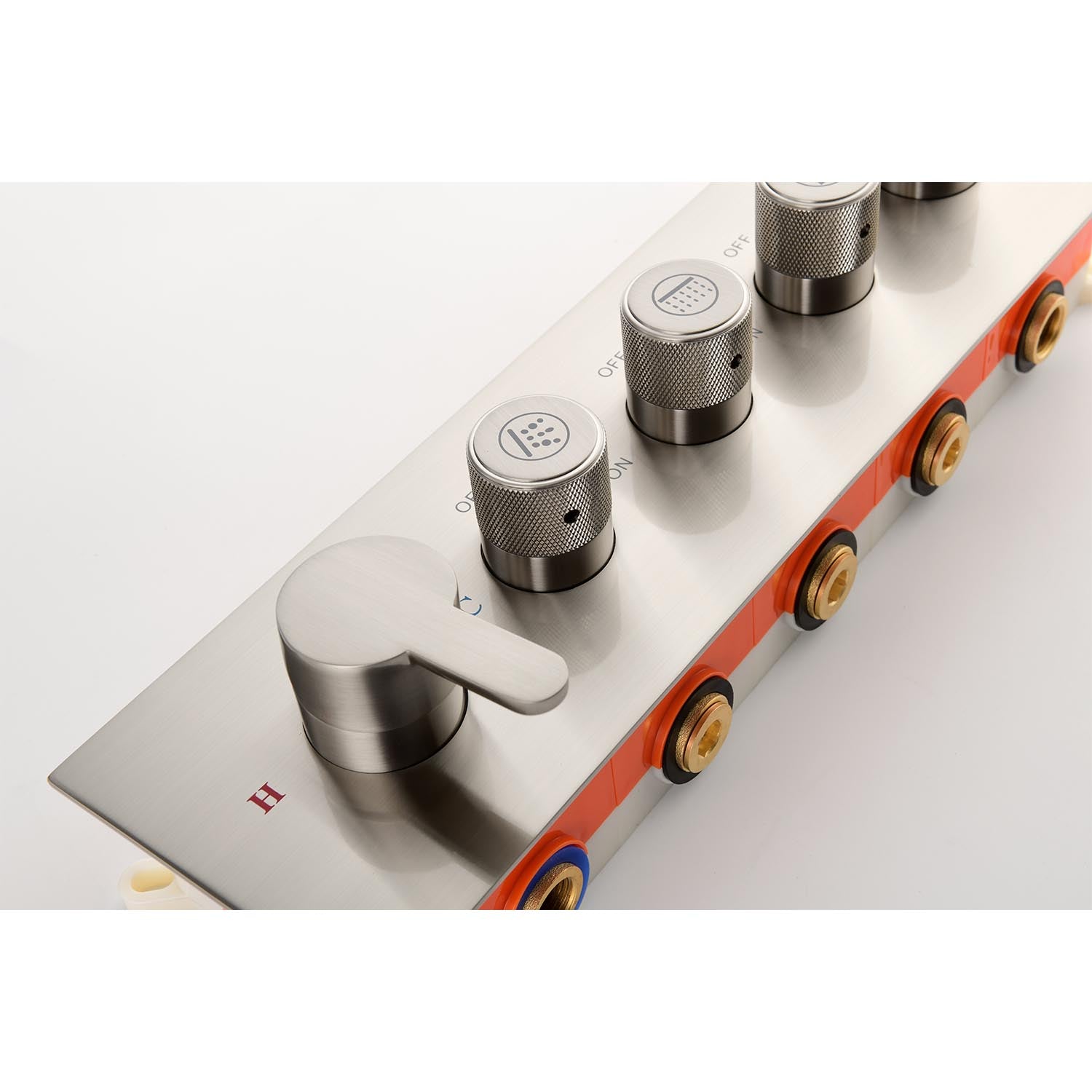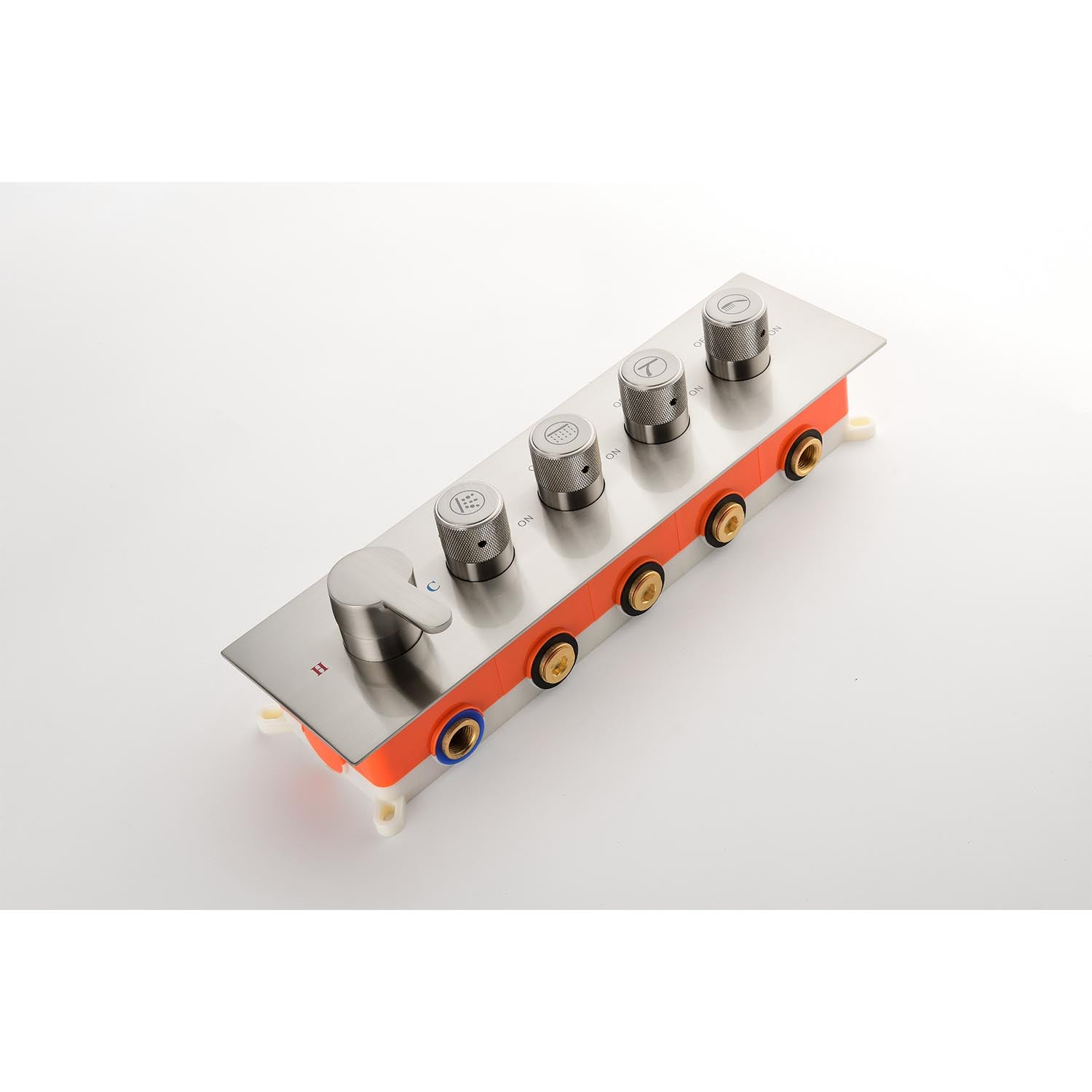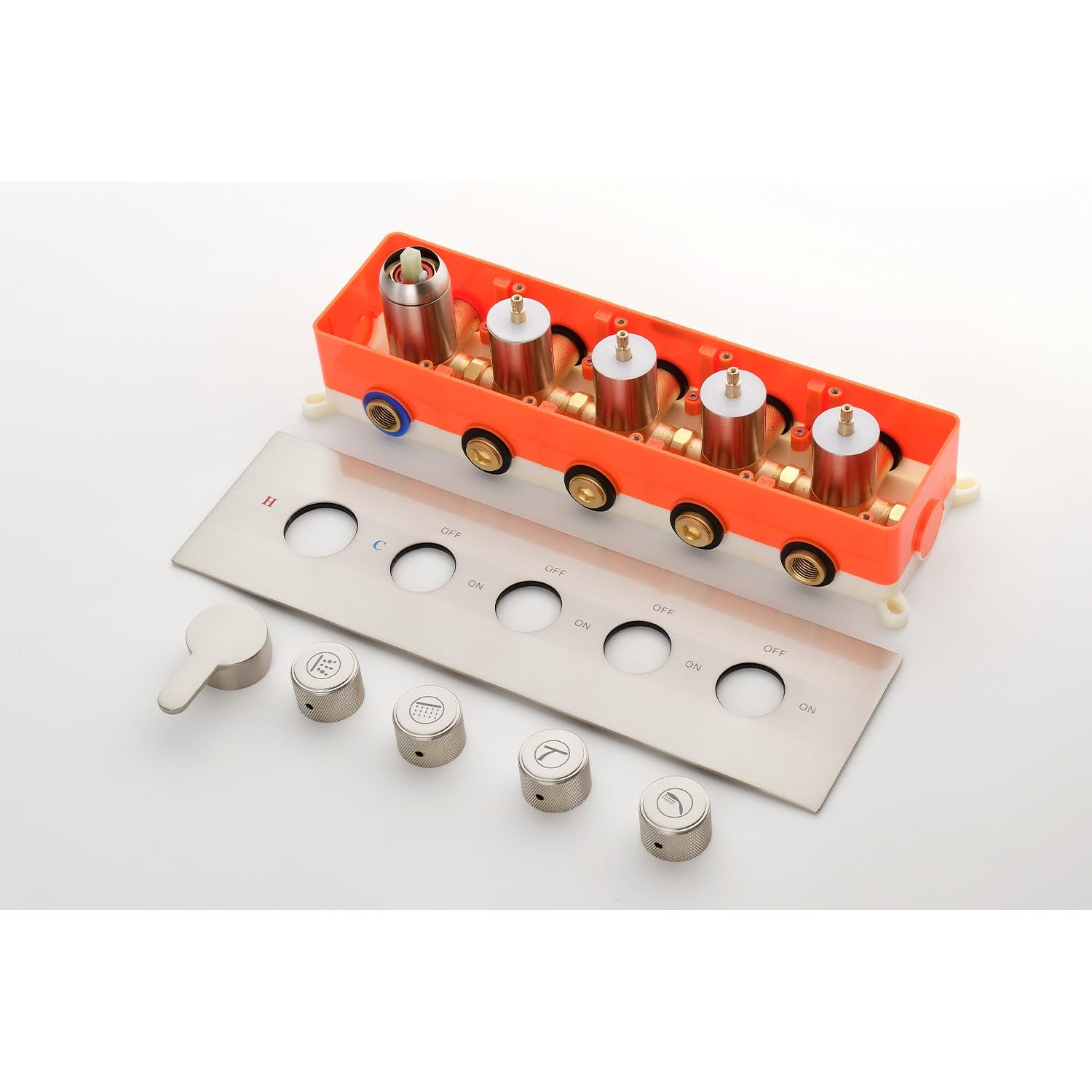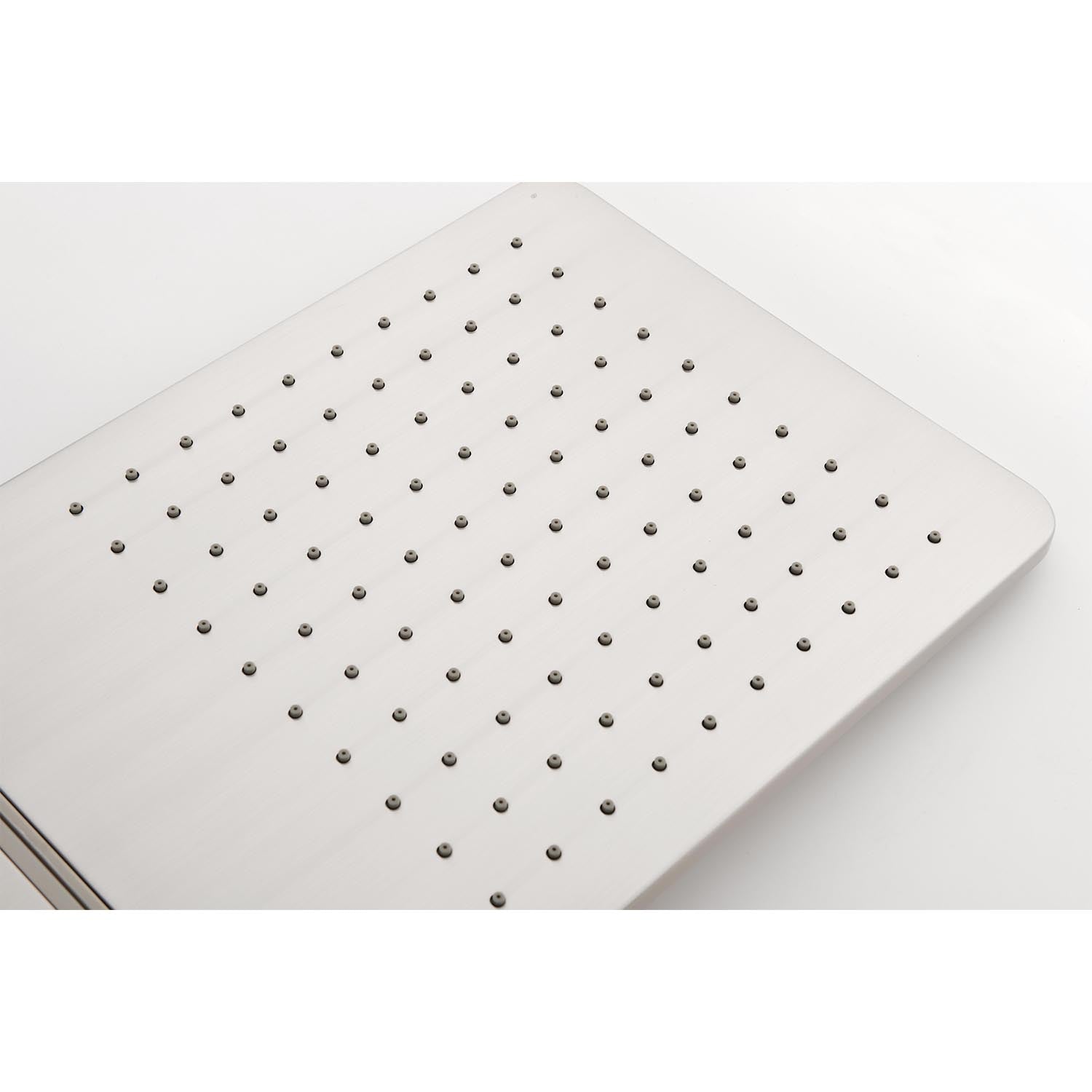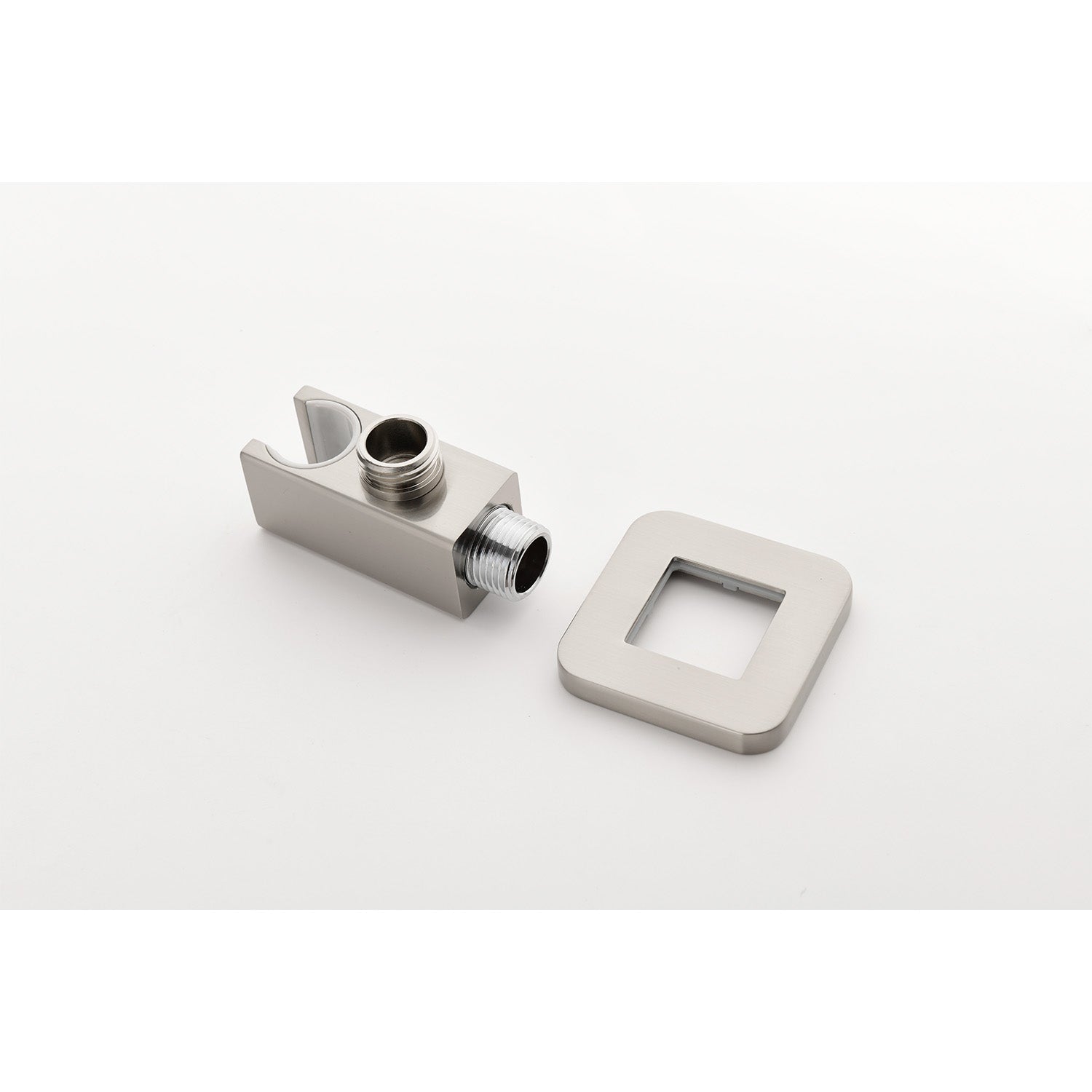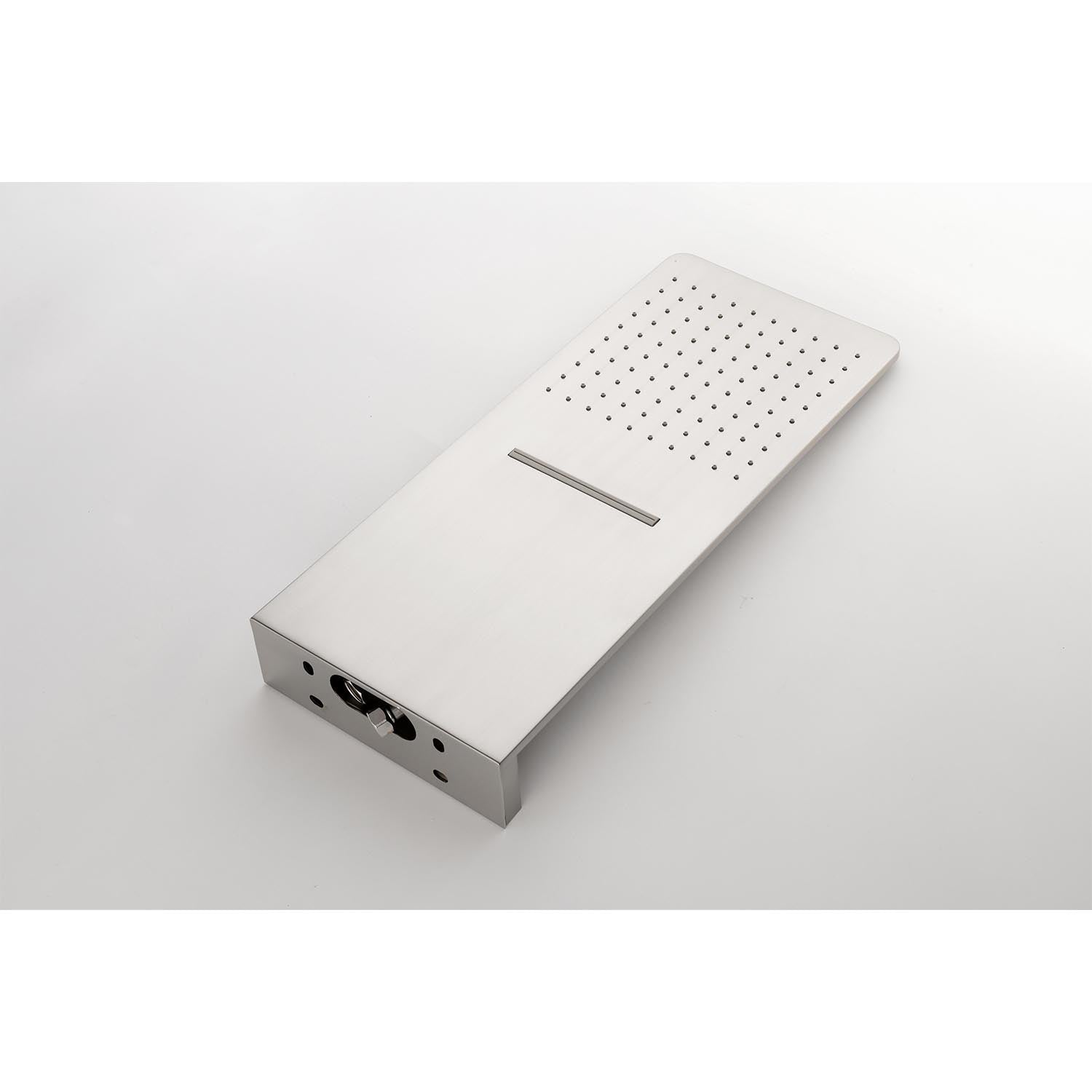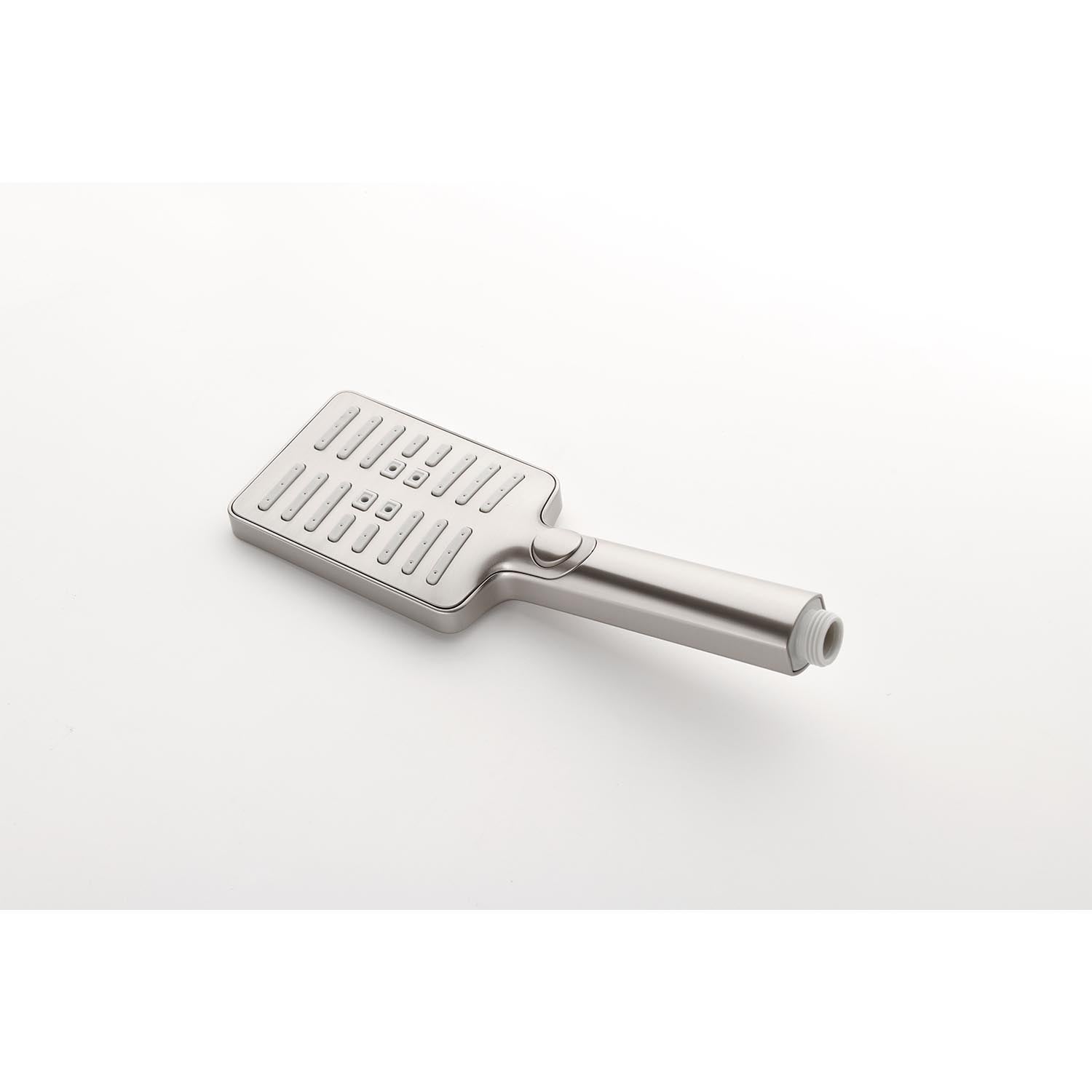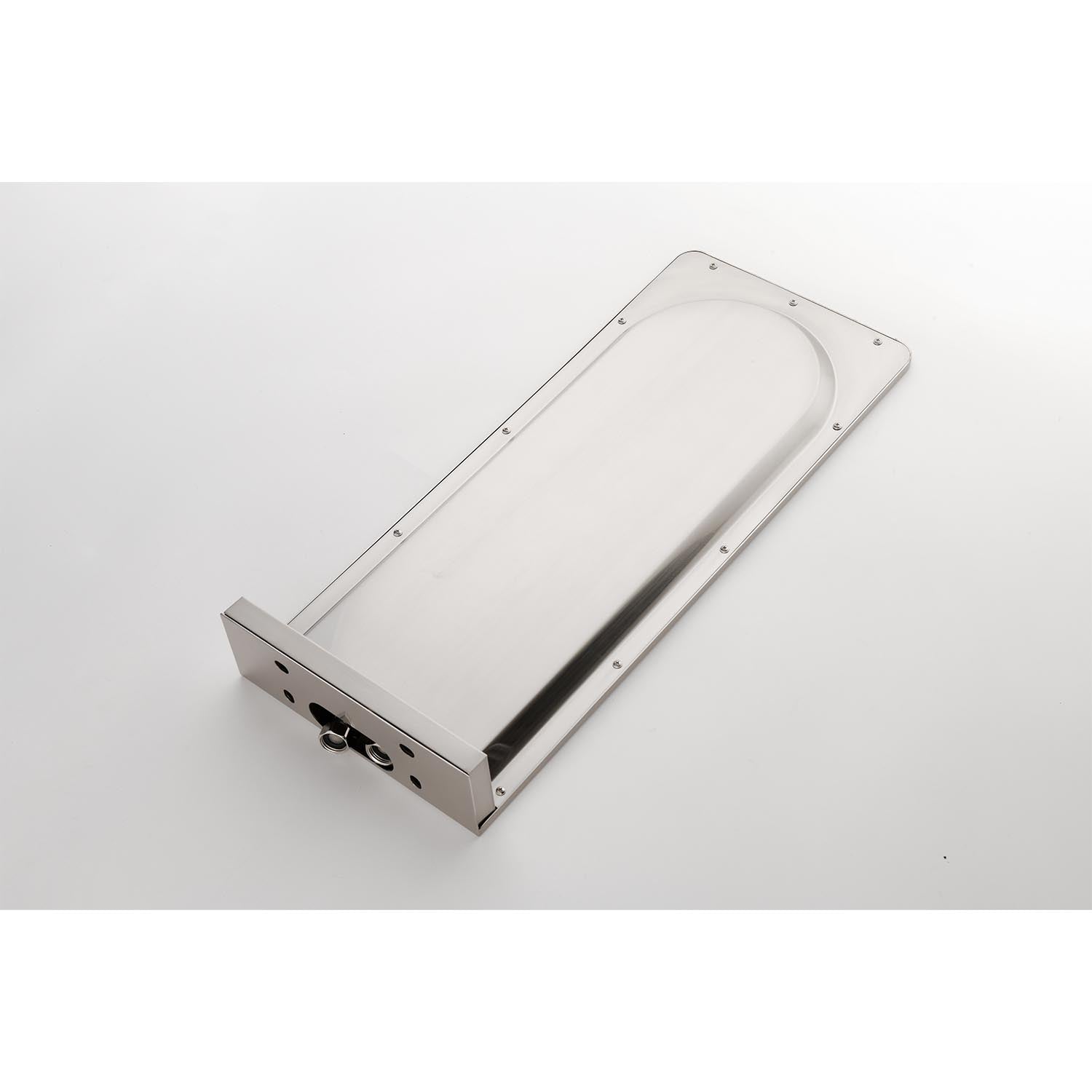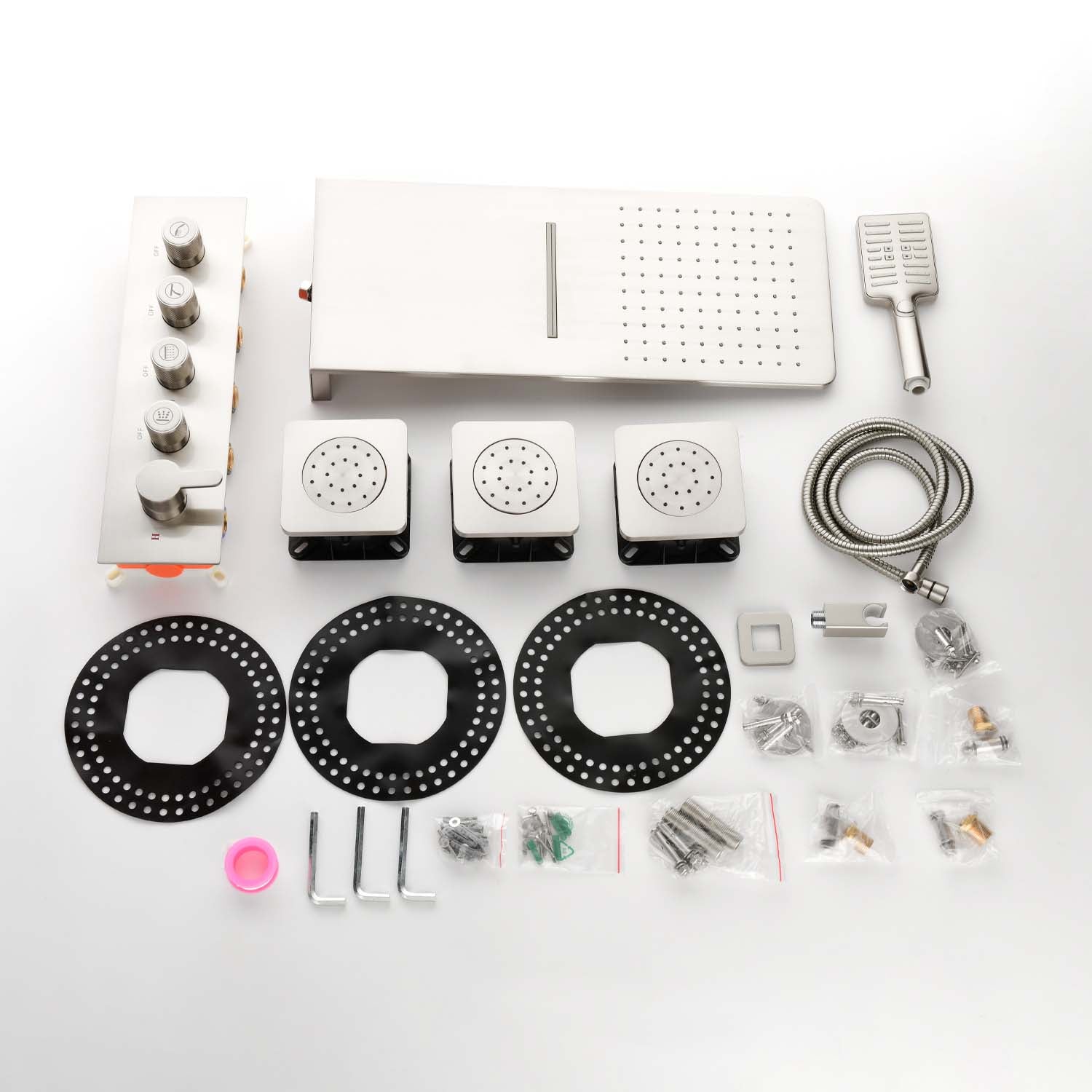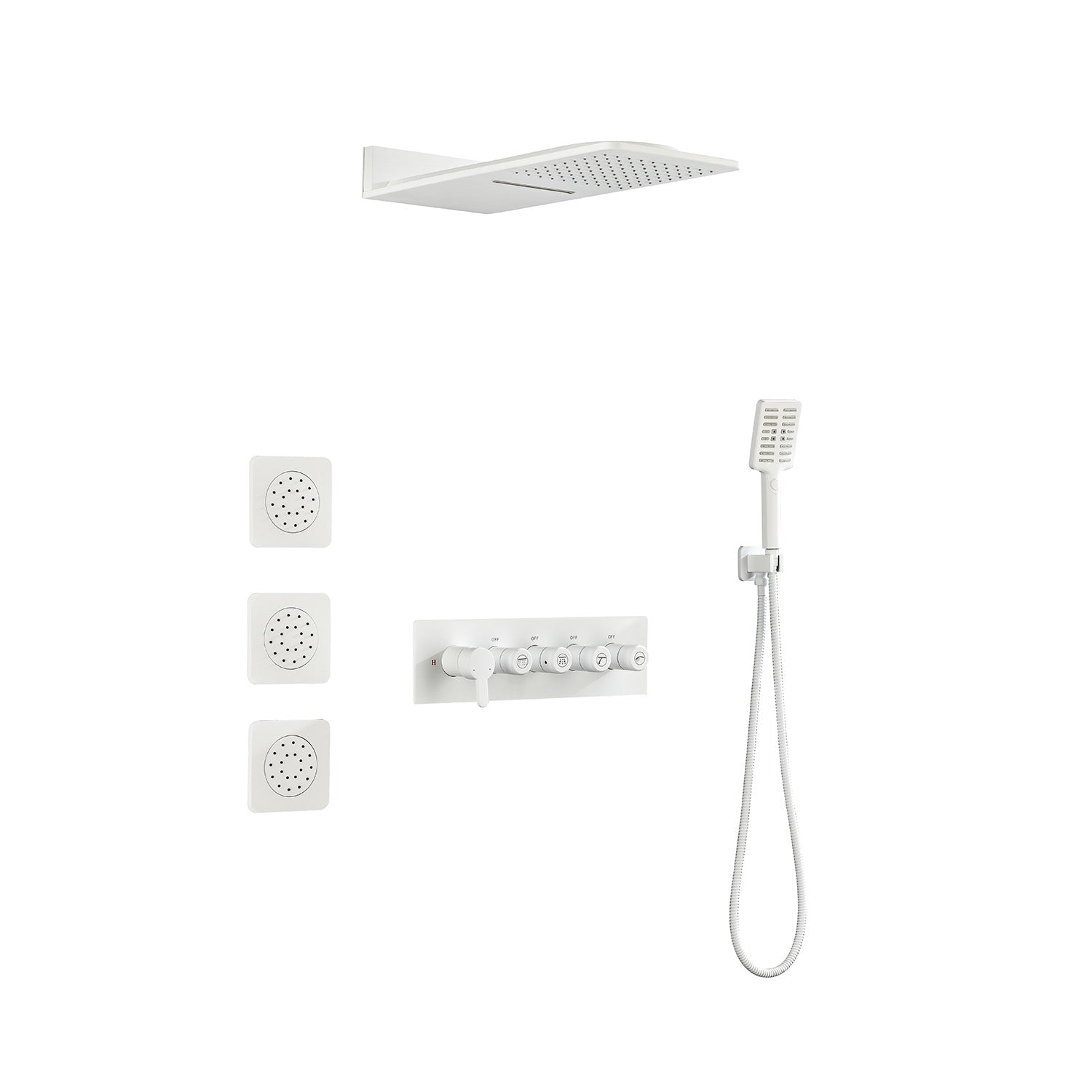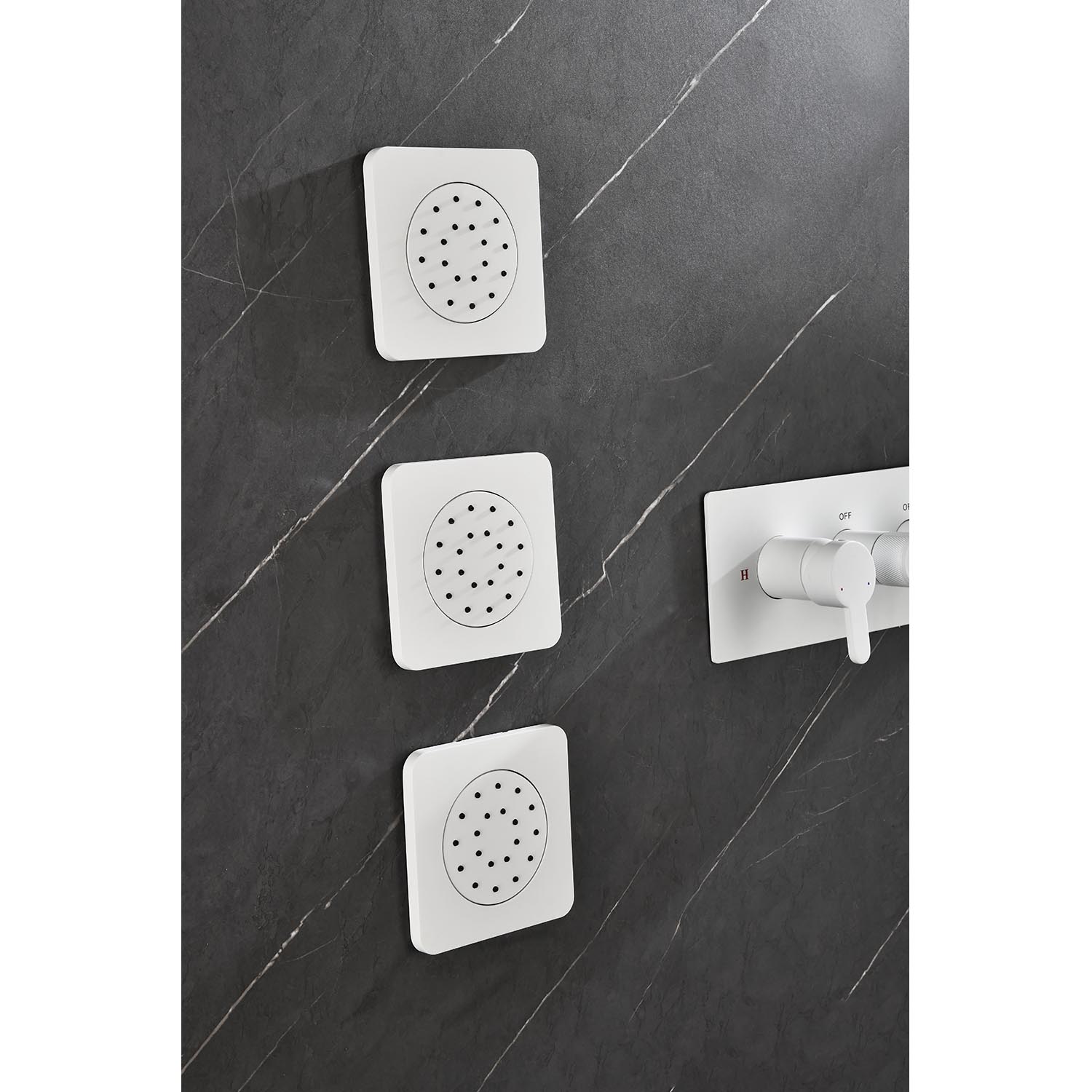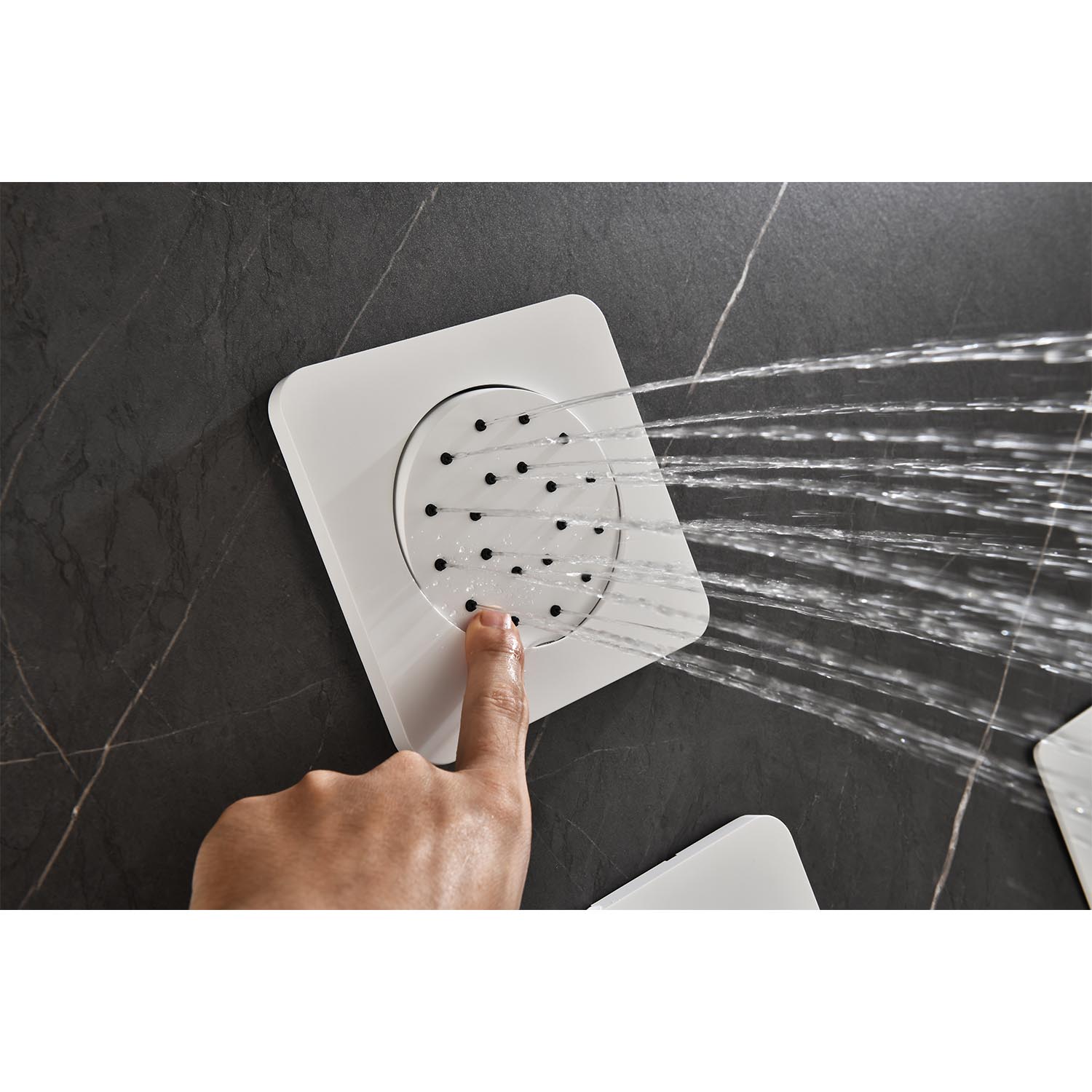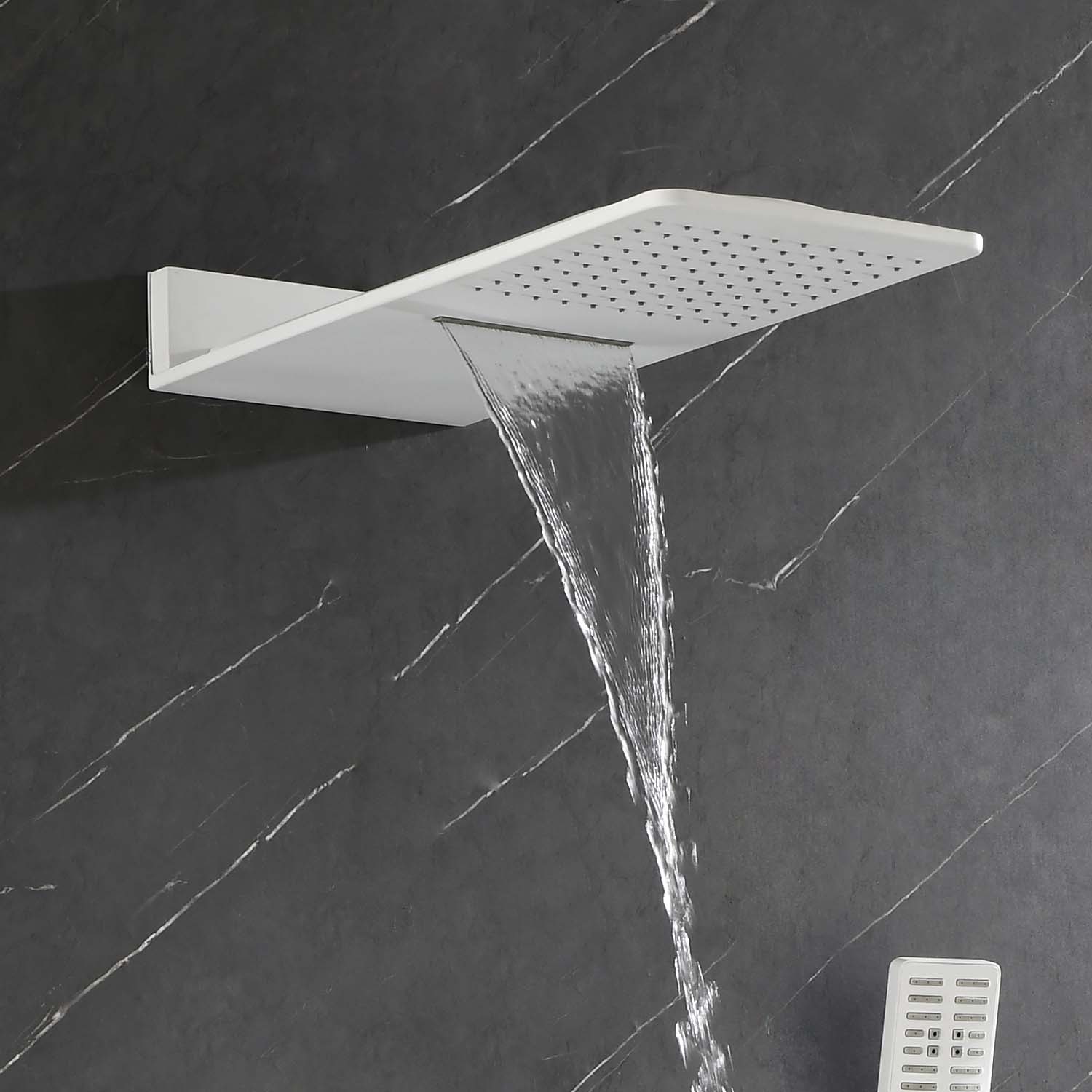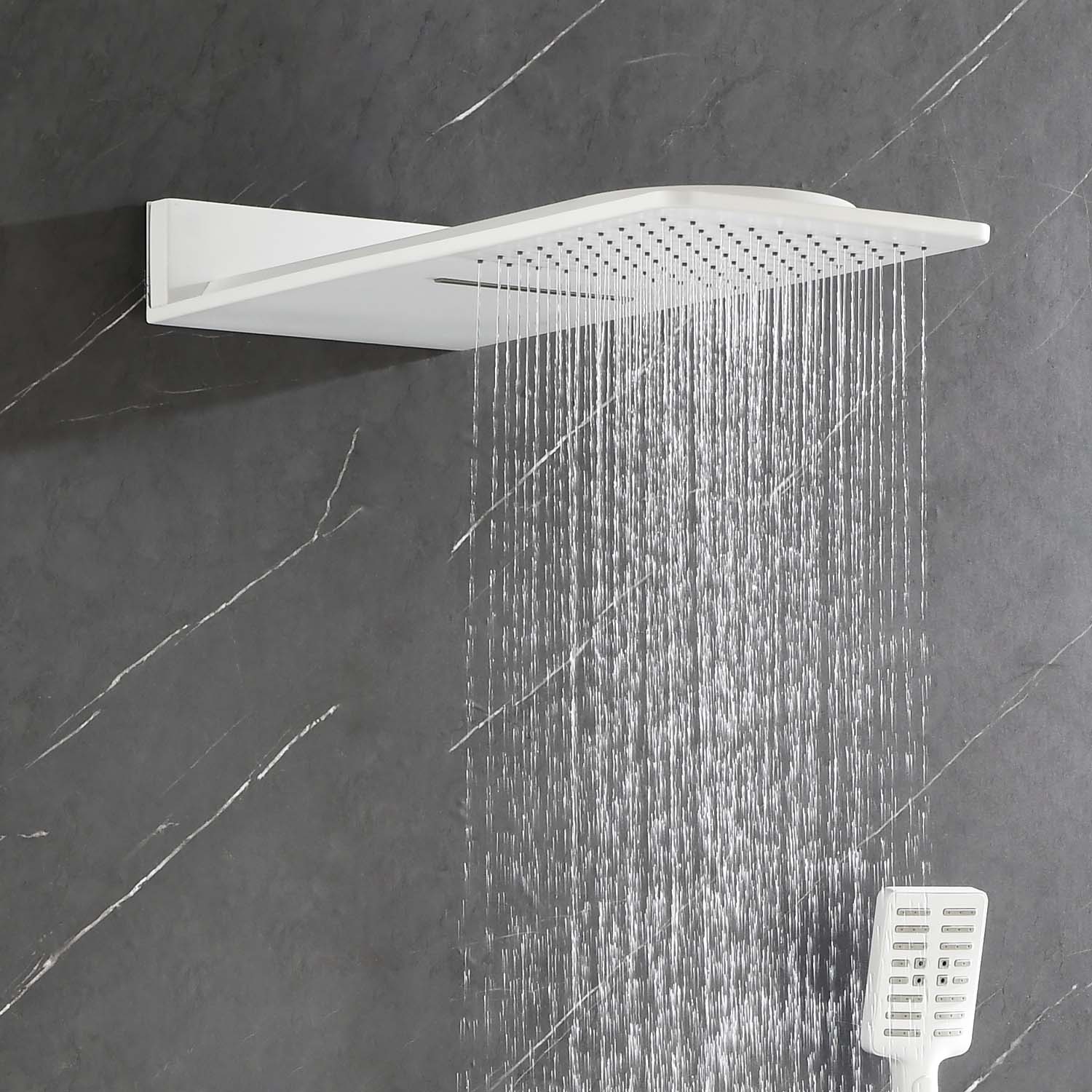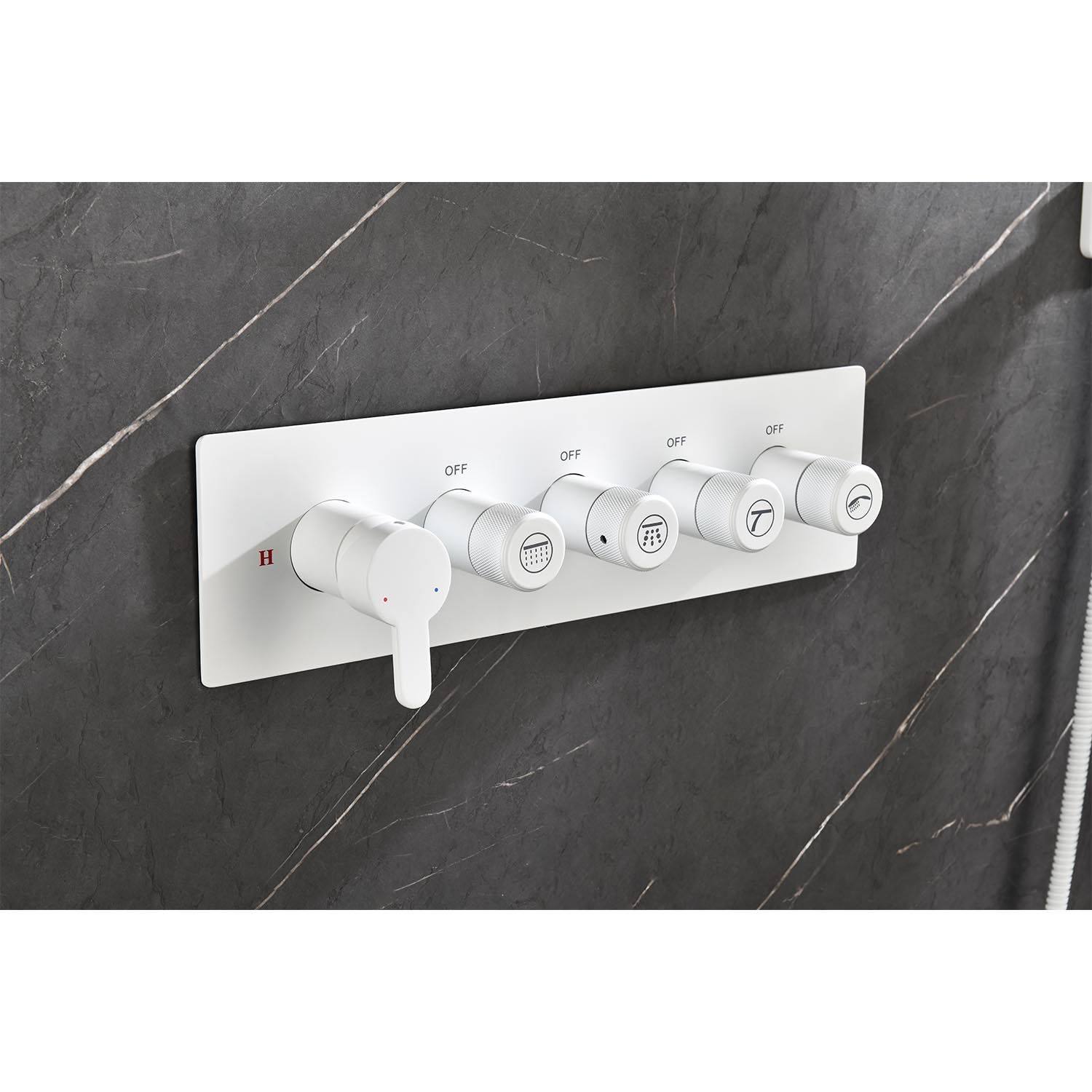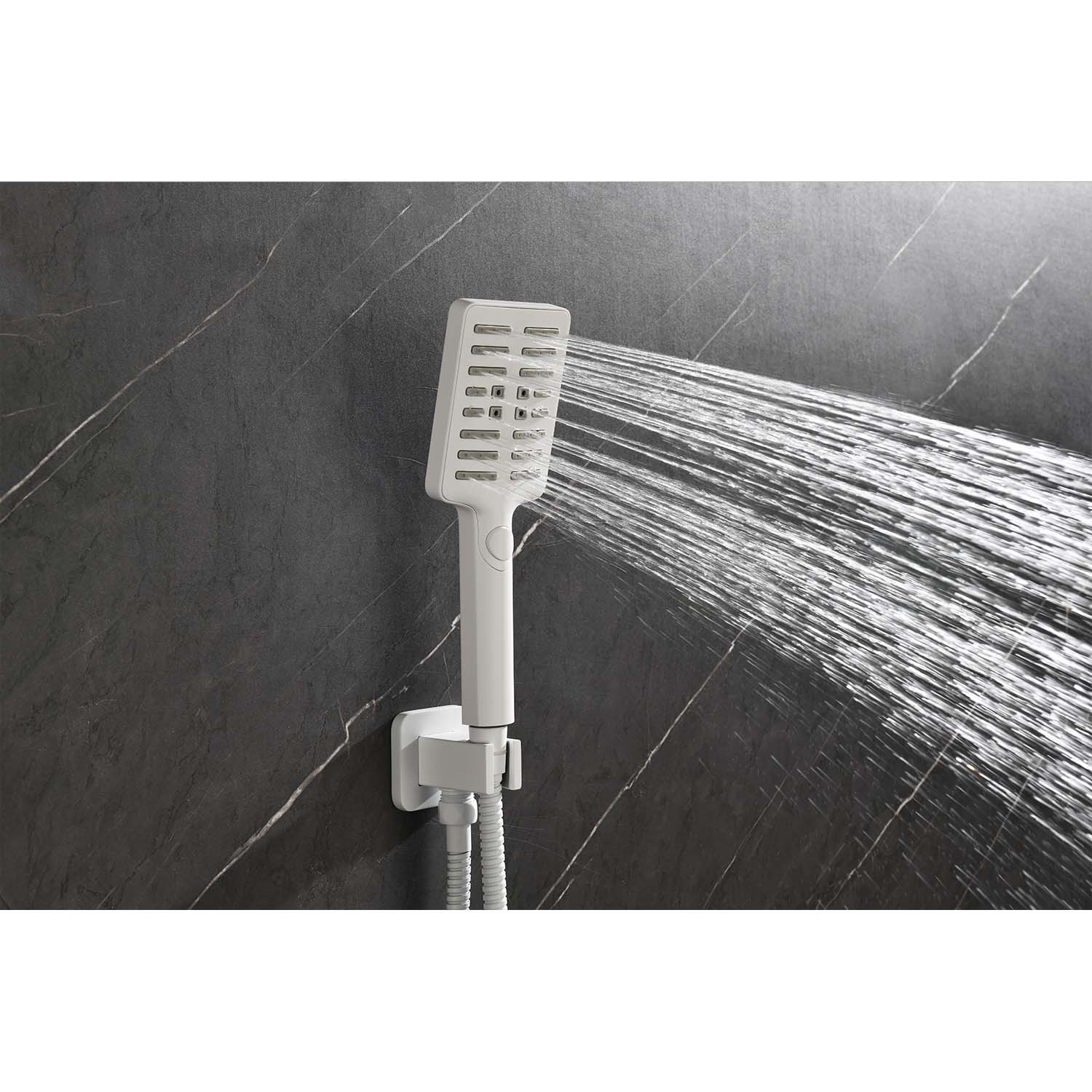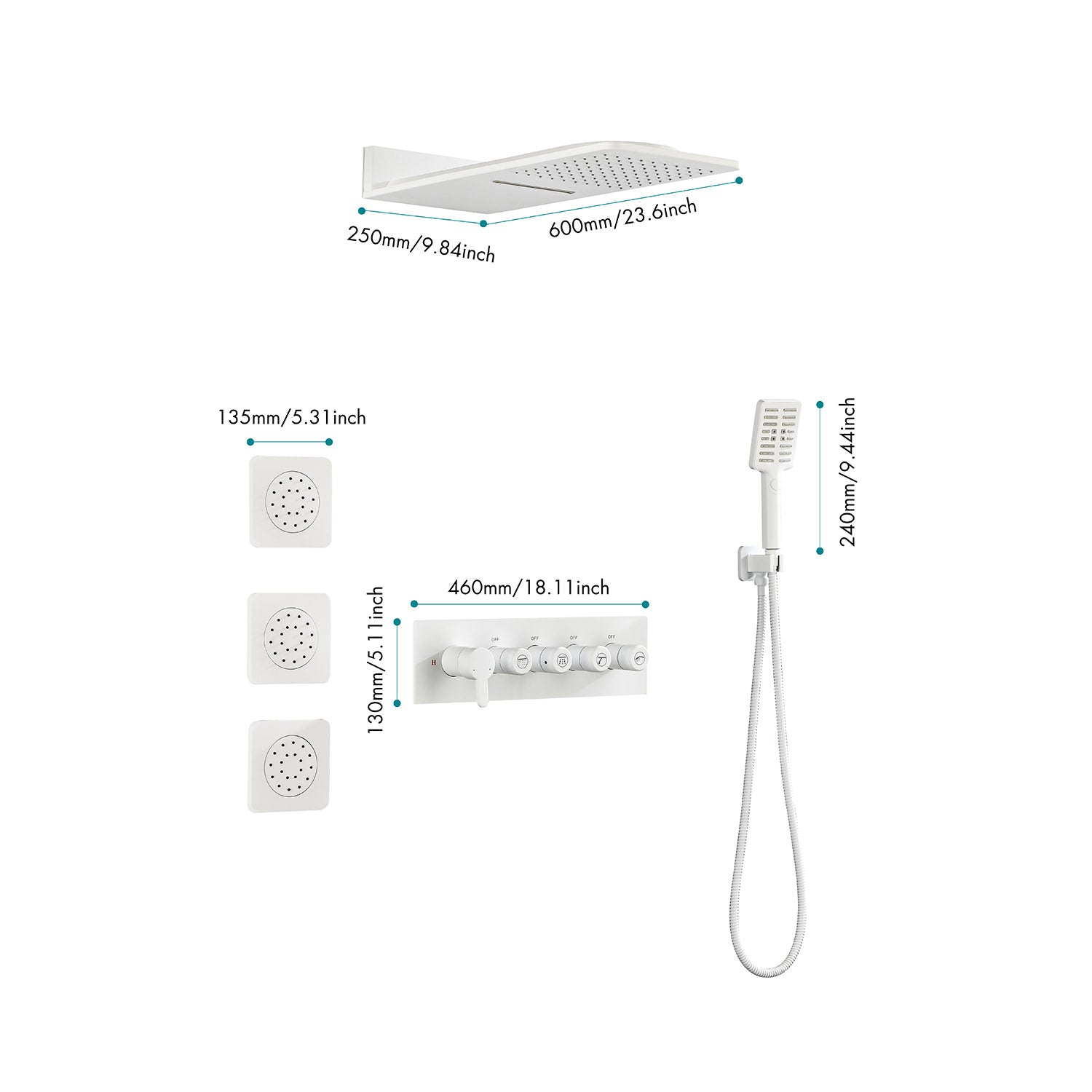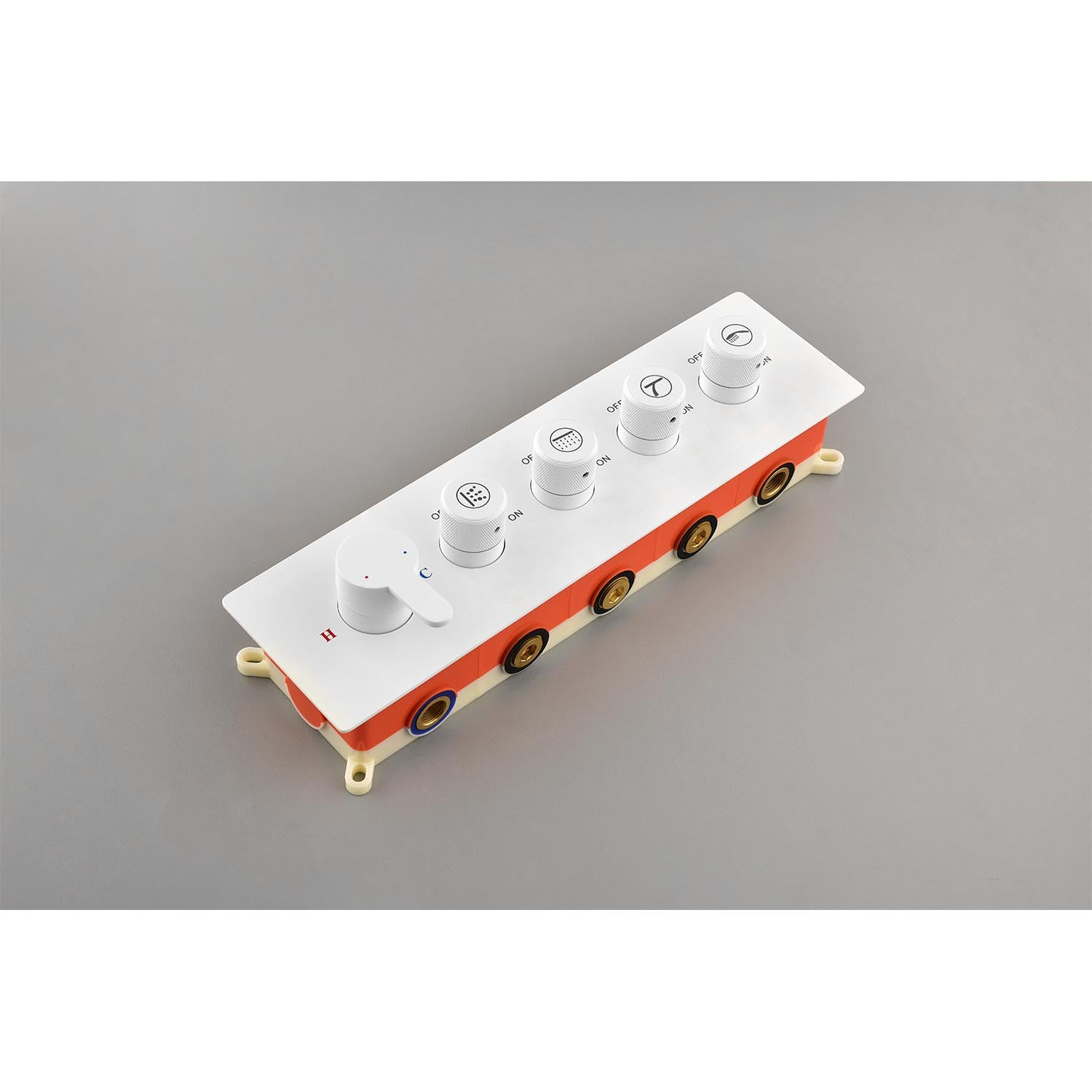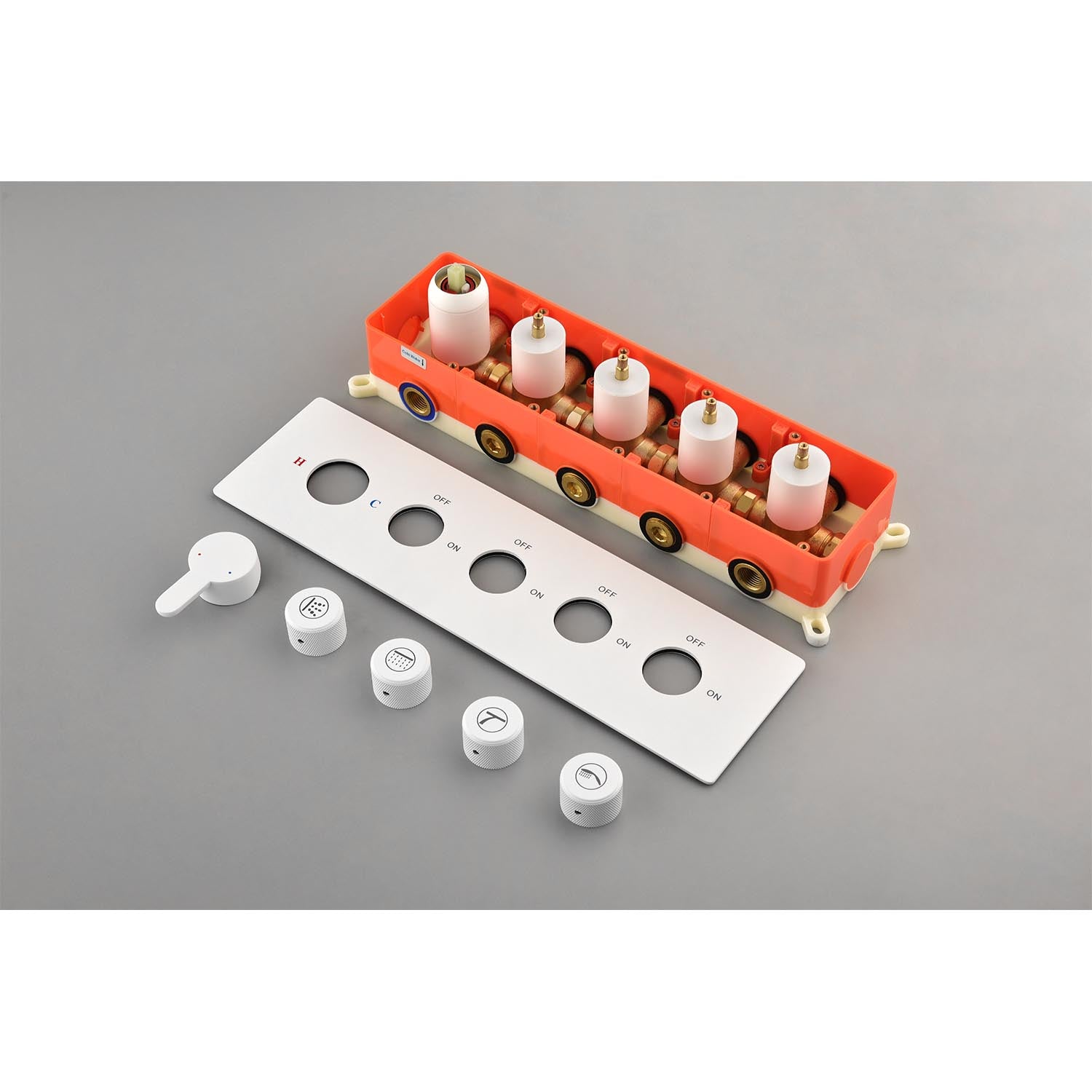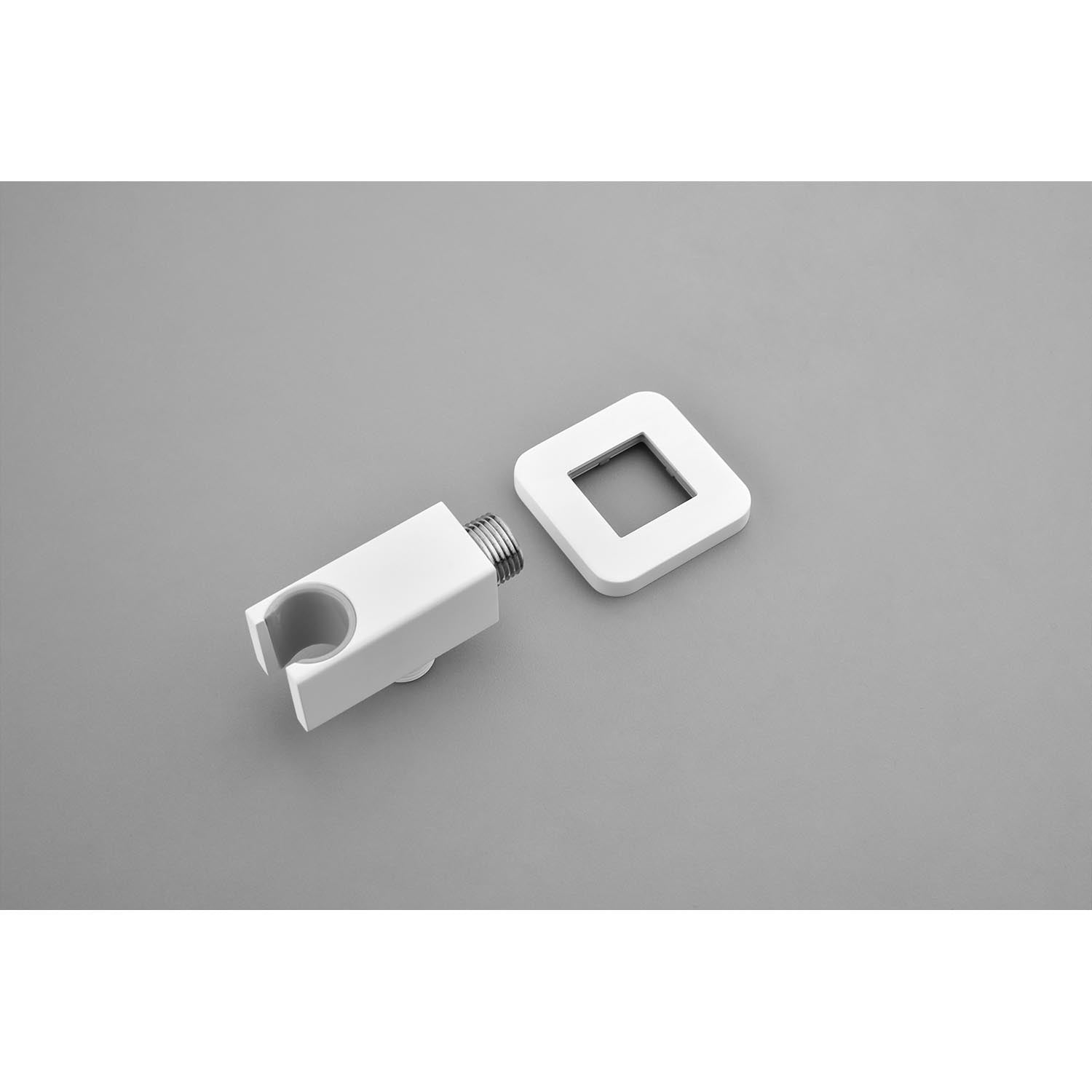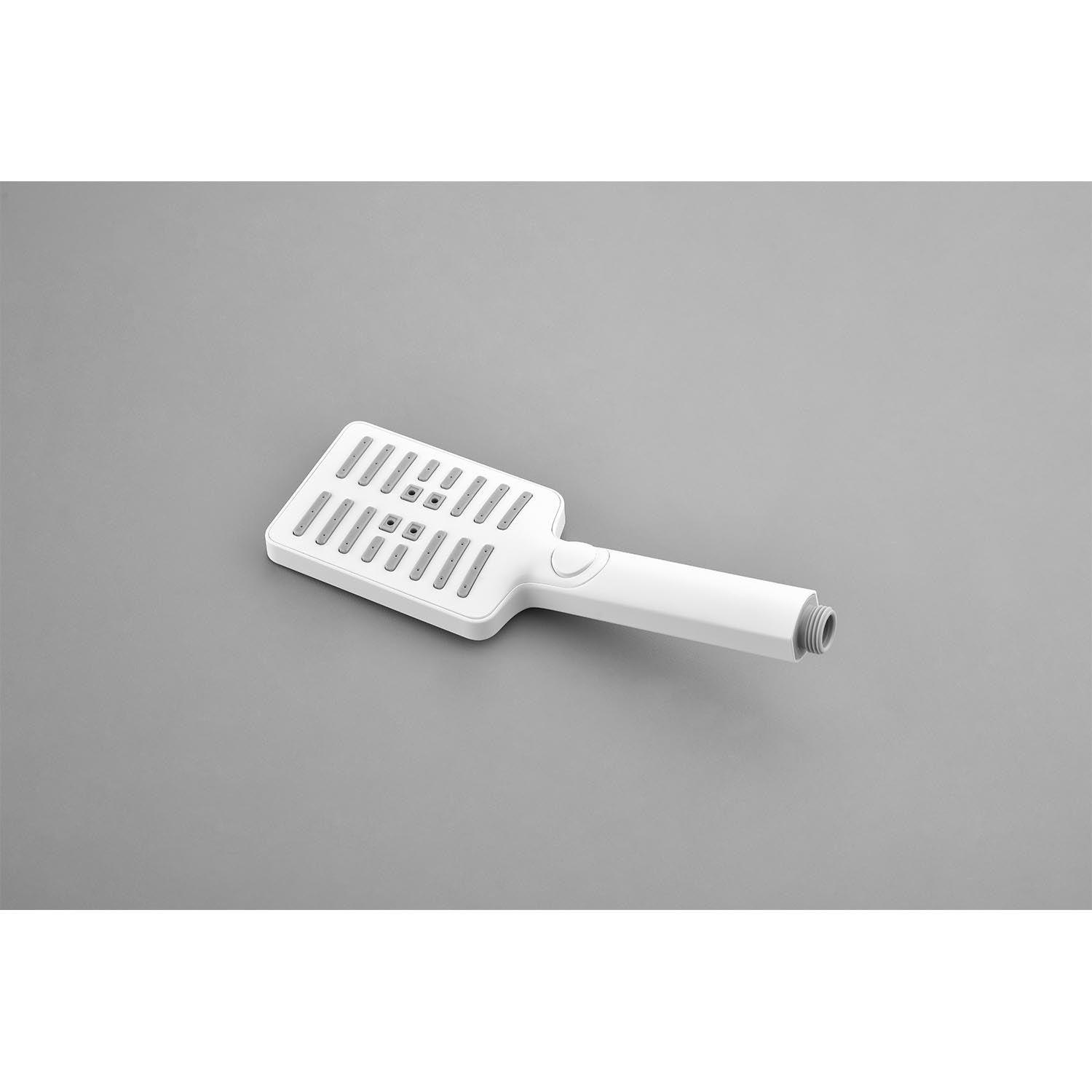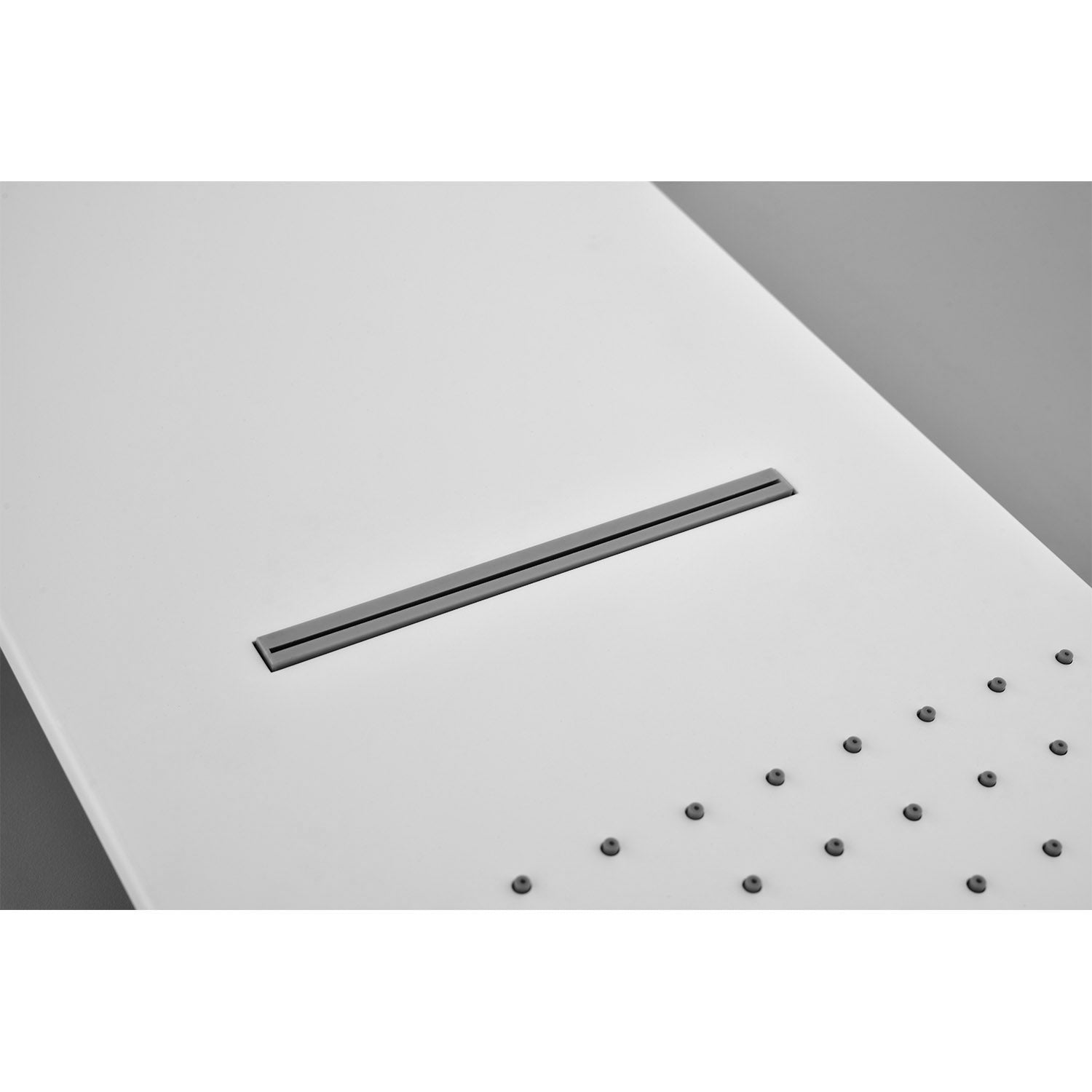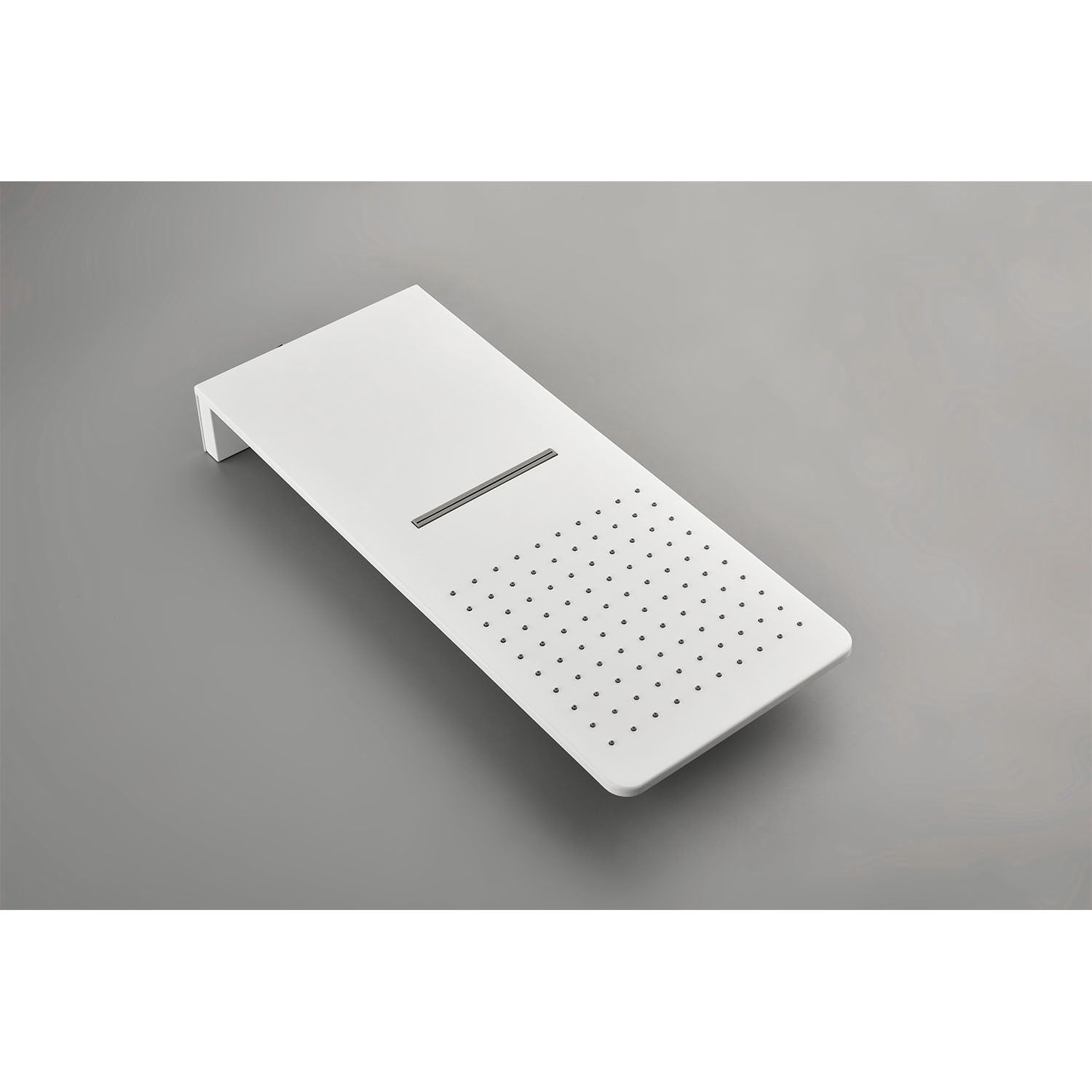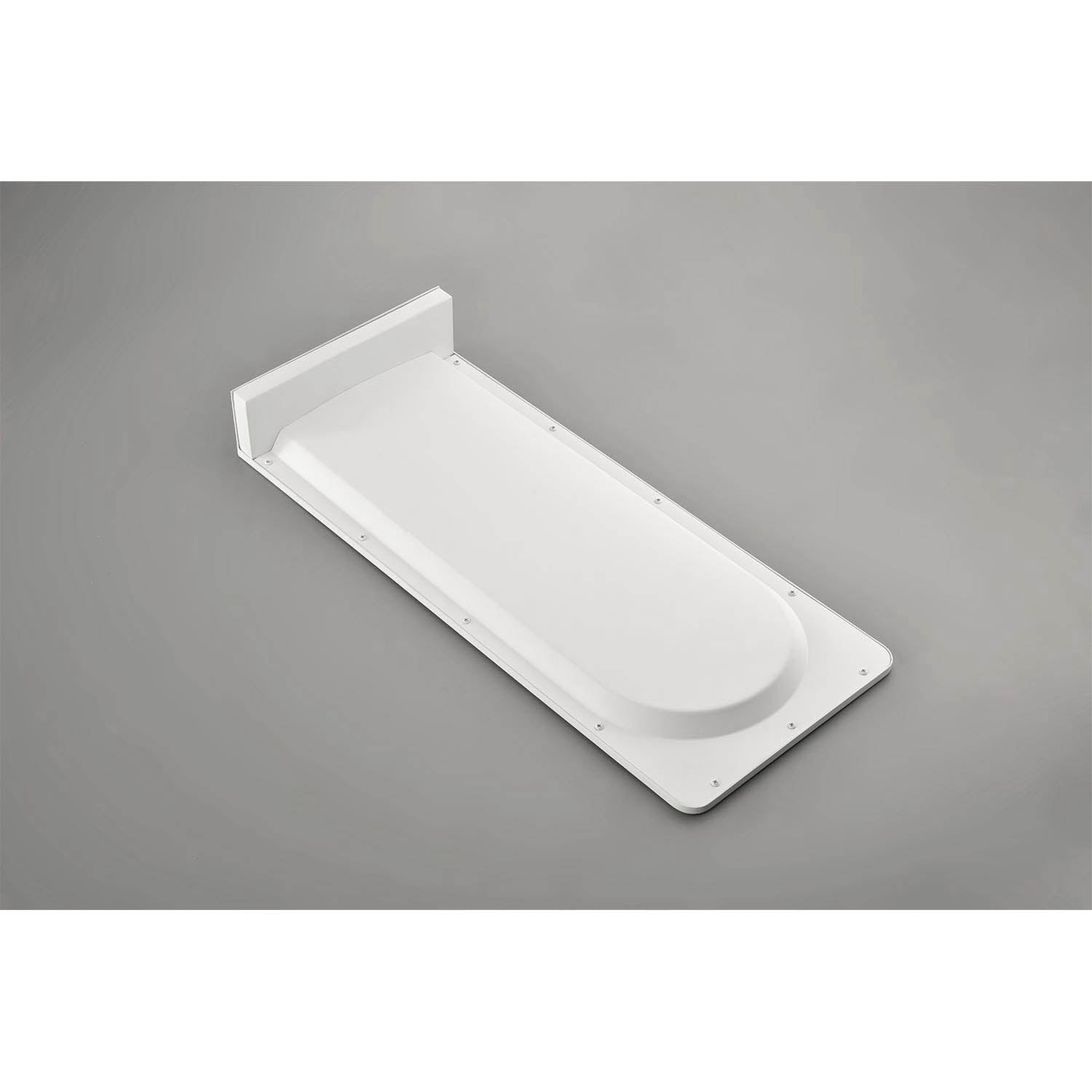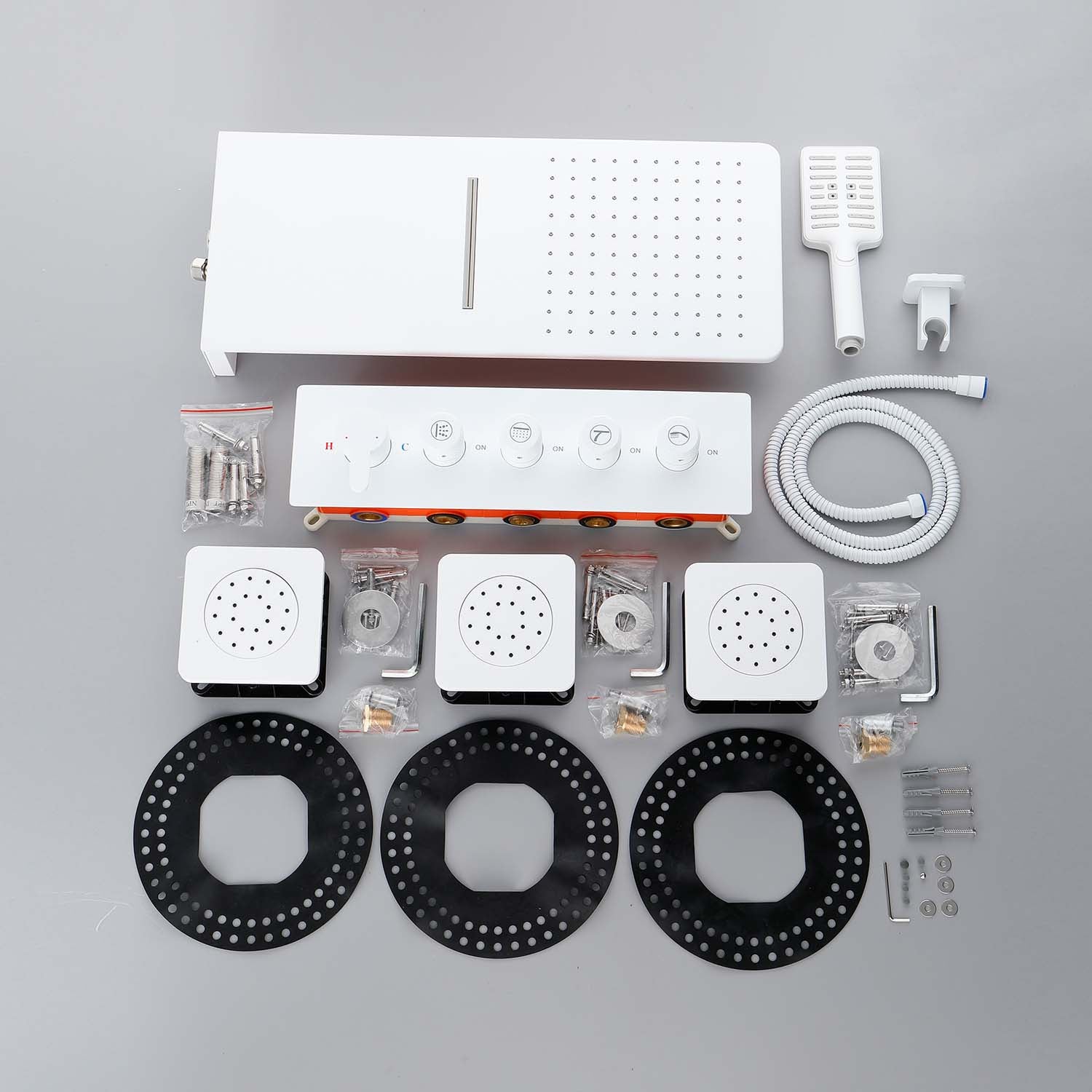When most people hear the term standard shower head height, they think of a fixed wall-mounted head positioned at about 80 inches from the finished floor. While this is a common benchmark, it’s far from the whole story. Different shower head types have their own optimal positioning. Add in factors like the height of household members, accessibility requirements in the ADA, and even ceiling clearances, you’ll see why “standard” is only a starting point.
This guide walks you through the different types of shower heads, how to adjust heights for short and tall users, and outlines universal design considerations so your shower is comfortable, functional, and future-ready.
Table of Contents:
- 1) What “Standard Shower Head Height” Really Means
- 2) Fixed Wall-Mount Shower Heads
- 3) Handheld Showers & Slide Bars
- 4) Ceiling-Mount Rain Showers
- 5) Body Jets / Body Sprays
- 6) Controls & Mixing Valves
- 7) Calibrating for Different Heights
- 8) ADA & Universal Design Essentials
- Conclusion
- FAQ
1) What “Standard Shower Head Height” Really Means
This "Standard Shower Head Height" is not a building code, but an industry norm developed through decades of residential construction practice.
For most fixed wall-mounted shower heads, that norm is around 80 inches from the finished floor to the center of the shower head outlet. This height suits the average adult male in North America, allowing the water stream to clear the head and shoulders while keeping spray inside the enclosure.
That said, the 80-inch measurement is a baseline, not a rule. The best shower head height ultimately depends on several factors: the type of shower head you choose, the heights of the people using it, and the overall layout of the bathroom. Even a small adjustment like a few inches up or down can make a big difference in comfort and usability.
2) Fixed Wall-Mount Shower Heads
As noted earlier, the typical height for a wall-mounted shower head is around 80 inches (203 cm). However, this isn’t a one-size-fits-all measurement.
-
If the tallest person in your household is over 6'2" (188 cm), raising the shower head slightly to 82–84 inches (208–213 cm) can prevent them from having to stoop under the spray.
-
For households where most users are under 5'7" (170 cm), lowering the height to 76–78 inches (193–198 cm) often provides a more comfortable angle and helps reduce overspray.
3) Handheld Showers & Slide Bars
From an accessibility standpoint, ADA guidelines specify that the operable parts of a handheld shower must be no higher than 48 inches (122 cm) from the floor. This doesn’t limit the slide bar itself from extending higher, but it does mean the bracket should allow the shower head to be positioned at that compliant height when needed.
4) Ceiling-Mount Rain Showers
Ceiling-mounted rain heads deliver a spa-like, straight-down flow, so placement matters for both comfort and coverage. In typical bathrooms with 8–9 ft ceilings, a practical mounting range is about 84–90 inches (213–229 cm) from the finished floor. This is where many manufacturer and trade guides land for overhead rain showers.
5) Body Jets / Body Sprays
Body jets or sprays, mounted on the shower wall, are all about targeted coverage. They’re usually installed in vertical arrays to hit multiple zones of the body:
| Zone | Height from Floor | Target Area |
|---|---|---|
| Lower | 18–24 in (46–61 cm) | Knees & thighs |
| Mid | 36–40 in (91–102 cm) | Hips & waist |
| Upper | 48–52 in (122–132 cm) | Shoulders & upper back |
For showers with a built-in bench, it’s useful to add a jet at 30–34 in (76–86 cm) to provide coverage to the lower back when seated.
6) Controls & Mixing Valves
The placement of the controls is as important as the shower heads themselves. For a walk-in shower, controls are typically installed between 38 and 48 inches from the floor. In a tub/shower combination, they may be lower — around 28 to 38 inches, so they’re reachable from the tub.
While most fixed-and-handheld combinations place the controls directly beneath the main shower head for plumbing convenience, the ideal layout positions them where the user can turn on the water without standing under the spray, helping to avoid an unexpected blast of cold water.
7) Calibrating for Different Heights
Getting the height right for everyone in the household is easier if you do a quick calibration before installation.
1. Measure: Start by noting the tallest and shortest users. For the fixed head, aim for a position about 3–6 inches above the tallest person’s head. Then check the clearance for the shortest user. Ideally, the head should still be no more than 12 inches above them. If meeting both conditions isn’t possible, aim for a midpoint height.
2. Mark: Use painter’s tape or a washable marker to mark several possible installation heights on the shower wall, common options might be 78", 80", and 82". If you’re adding a slide bar or handheld dock, mark those points as well.
3. Test: Before drilling, simulate the spray position. You can use a temporary bracket, an adjustable shower arm, or simply have someone hold the head at each mark. Have different users stand in place to check spray angle, coverage, and whether water escapes the enclosure.
4. Adjust: Based on everyone’s feedback, fine-tune the target height.
Following these steps ensures the final height feels comfortable and practical for every user before you commit to permanent installation.
8) ADA & Universal Design Essentials
Universal design aims to make spaces usable by as many people as possible without adaptation. ADA standards offer concrete numbers to guide you:
-
Handheld showers must be usable from a seated position, with operable parts at ≤48 inches.
-
The hose should be at least 59 inches long to allow easy movement.
-
Fixed shower heads can be placed higher but should be paired with a handheld option to meet accessibility needs.
-
Controls must be within 48 inches of the floor, operable with minimal force, and placed where they won’t conflict with grab bars.
Even if ADA compliance isn’t legally required for your project, adopting these guidelines can make your shower more versatile and future-proof.

Conclusion
The so-called standard shower head height of 80 inches is a great starting point, but the real goal is a shower layout that matches your space, your household’s needs, and accessibility considerations.
By taking the time to plan each height, using actual measurements and testing placements, you can create a shower that works beautifully for everyone who uses it now, and for years to come.
FAQ
Q1. Is 80 inches always correct for a standard shower head height?
A: No. While 80 inches is common for fixed wall-mounted heads, the ideal height depends on user height, shower type, and ceiling clearance. Taller users may prefer 82–84 inches, while shorter users might find 76–78 inches more comfortable.
Q2. What’s the ideal height for a handheld shower dock on a slide bar?
A: The dock should allow adjustment between about 48 inches and 78 inches from the floor. For ADA accessibility, it must be able to hold the shower head at or below 48 inches.
Q3. How high should a ceiling-mounted rain shower be?
A: Position the spray face 3–6 inches above the tallest user’s head. In most homes, that works out to 84–90 inches from the floor, depending on ceiling height.
Q4. Where should body jets be placed for the best coverage?
A: Lower jets: 18–24 inches; mid jets: 36–40 inches; upper jets: 48–52 inches. For a bench, add one at 30–34 inches to target the lower back.
Q5. What ADA rules actually affect shower head and control heights?
A: Operable parts must be within 48 inches of the floor, usable with one hand and minimal force. Handheld showers require a hose at least 59 inches long, and fixed heads should be paired with a reachable option.
More Articles About Shower Head
What Are the Different Types of Shower Heads
How to Clean a Blocked Shower Head: Easy Solutions for a Better Shower Experience
Understanding Shower Head GPM: How to Choose the Right Flow for Your Bathroom Experience
